- Work with Me

The Ultimate South America Itinerary – Plus Useful Travel Tips
Planning your south america itinerary.
South America has long been on my bucket list and therefore 9 months ago I found myself putting together my ultimate South America itinerary – determined to cram as many life-changing experiences into a 10 week trip as possible.
I started by listing all my South America must-sees and prioritising those I had lusted after for the longest, namely Machu Picchu and the Galapagos Islands. I knew I wanted a good mix of wildlife, landscapes and culture with a few cities thrown in for good measure. As a keen dancer, the opportunity to dance would be a real bonus so Argentina and Brazil made it onto my South America bucket list .
An important thing to consider when planning your ultimate South America itinerary is the climate. It varies wildly from country to country and you need to take this into account when planning your route through South America. For example, the Inca Trail is actually closed for part of the rainy season as it’s too slippy and dangerous. When it dry and sunny in Brazil, you’ll find it’s sub-zero up a mountain in the Andes.
So for me, leaving in October, the route had to start west and work eastwards. This meant I could fit in some Andes mountain trekking before the rainy season hit and also meant that I got my fix of sunshine and caipirinhas on the beach in Rio before my flight home. Win-win.
** Pssst, this article may contain affiliate links. If you have no idea what this means, click here and everything will be explained!**
What you can expect from this article...
- 1.1 South America by Plane
- 1.2 South America on Tour
- 1.3 South America by Hop on Hop off Bus
- 1.4 South America by Local Bus
- 2 Planning Your South America Itinerary Budget
- 3.1 The Galapagos Eastern Islands
- 3.2 The Galapagos Central Islands
- 3.3 The Galapagos Southern Islands
- 4.2 Machu Picchu
- 4.3 Lake Titicaca
- 4.5 Salar de Uyuni Salt Flats
- 4.6 The Bolivian Altiplano
- 5.1 San Pedro
- 5.2 El Cafayate Wine Tasting
- 5.3 Stay on a Ranch or Estancia in rural Argentina
- 5.4 Get your Tango on in Buenos Aires
- 6.2 How long?
- 6.3 Foz do Igauzu Falls
- 6.5 South Pantanal
- 6.7 Rio de Janeiro
- 7.1 Guatapé, Colombia.
- 7.2 The W trek, Torres del Paine, Patagonia
- 7.3 Ushuaia, Argentina
- 7.4 The Amazon Jungle
- 7.5 More Useful Resources and Links for Planning your South American Trip
- 7.6 Further Reading
How to get around South America
If you’ve travelled in South East Asia or Europe , you are probably used to getting about by train. However, there aren’t many trains in South America so you will be better off getting about by bus or plane.
South America by Plane
Whilst South America, in general, is not that cheap, getting about by plane is not as expensive as you may imagine as long as you don’t mind small rickety planes! Booked well in advance, you can get short international flights such as Cuzco to La Paz for $50-70. The airports are pretty straightforward.
I booked my flights with trusty Skyscanner – personally, I find this to be the best tool to find the biggest variety of flights at the best prices.
South America on Tour
To save the hassle of finding your own way about, one option is to join a tour . This is possibly the easiest way to pack a LOT of highlights into your South America itinerary in a short time period. You can focus on enjoying the highlights and not having to worry about the practicalities.
I’ve taken a few G Adventures tours in South America and they were great! Brilliant informative tour leaders , well organised and decent transport (mostly air-conditioned minibuses!)
Whilst I haven’t used Intrepid in South America, I have sampled their trips in Africa and South East Asia and again, I was very impressed. Their trips are actually very similar. Check them out and see if any of their South America Itineraries takes your fancy!
I spent a large chunk of my own Latin America itinerary travelling with Dragoman . These are participation, overlanding tours where you camp 50% of the time and stay in hotels and guesthouses the rest.
These are slightly cheaper than G Adventures and Intrepid so great if you’re on a tight budget. However, my preference is still for G Adventures as you get more included activities, smaller groups and local guides. They also work with more local projects to give back to the countries where you travel. That said I would definitely do another overlanding tour as they are a lot of fun!
Check out the trip I took HERE .
South America by Hop on Hop off Bus
Perhaps the best of both worlds, this style of travel will allow you the freedom of doing it your own way with the convenience of jumping on a bus headed straight for the tourist attractions of hot spots in South America. The Bamba Experience is one of the most popular companies that organise hop on hop off trips.
South America by Local Bus
Sometimes it can be tricky finding the right bus and understanding timetables and prices when you don’t speak the local lingo. BusBud has provided a great solution for that – a website where you can search for local bus journeys in almost any country and in multiple currencies.
Planning Your South America Itinerary Budget
Without a doubt, the most expensive place to visit in South America is going to be The Galapagos Islands but boy is it worth it!! Being 1000Km off the mainland and with restricted numbers of visitors allowed on the islands at any given time, a trip to The Galapagos comes with a hefty price tag!
Spending time in Brazil is also pretty pricey with Chile and Argentina not far behind. If you want to make your pennies stretch further, you’ll want to spend more time in Bolivia and Peru. Bolivia particularly is cheap as chips. I would say if you are being careful, you could survive on $20-25/day in Bolivia whereas Brazil will set you back $50-70 per day.
My 9-week trip set me back $14000 which may seem like a lot of money, however, this included a week’s cruise in The Galapagos (which accounted for a whopping $3000) and I took several budget tours in order to pack a lot into a limited amount of time.
If I had the luxury of time, I would have travelled solo and I expect it would have been significantly cheaper! It really depends on what your priorities are! At that particular time, seeing as much as possible in a short time frame was mine.
For more practical tips for your trip to South America, check out my article: 20 Useful Tips for Travel in South America. Whatever you do, don’t forget to invest in a decent camera before your trip to South America! There are SO many great photo opportunities! I use a Sony A7iii yet but it’s pretty pricey so if you’re newer to photography I recommend this one or this one .
Ok so let’s get onto the good bit… What should be on your South America Bucket list?! Let’s get planning your South America Itinerary!
The Great Big South America Bucket List
South america itinerary 1 – the galapagos islands.
Best for Wildlife and Scenery
$200-300 per day if you take a cruise and $160+ for a land-based Galapagos island hopping trip . Remember to factor in tips for your crew! Read more about travelling the Galapagos on a budget and booking a budget Galapagos cruise
7-10 days. Most trips will start from Quito on the mainland so factor a day or two either side of your boat trip. A week actually exploring the Galapagos Islands is about right.
You could easily spend longer but a week will allow you to tick off most of the big wildlife and scenic attractions and will give you a good flavour of the islands. If you cut your trip short, there’s a chance you’ll miss out on the best bits like getting the opportunity to snorkel with sea lions!
Where to stay
Most Galapagos trips are boat based so your board and food will all be included. So it might be pricey but at least you know exactly how much money you will need.
You will undoubtedly save money by staying on dry land and arranging day trips but be warned, you’ll likely have to deal with bigger crowds and will spend a lot of time on the boats getting to the islands. There may also be certain highlights which you’ll miss without taking a boat.
The cruise ships and stay-onboard boats will sale overnight to maximise your time exploring the islands and get you there before the other tourists arrive which was a huge perk.
Since I have been desperate to visit the Galapagos for over 10 years, I really went to town on my research to get the best trip covering the most highlights but at the best price. I settled on a Gadventures boat called The Monserrat – I highly recommend it. I didn’t find any better prices and the trip was fantastic from start to finish! (The food by-the-way was to die for!) Check out the Galapagos tour I took .
To see other Galapagos options for all budgets, click here .
For a Galapagos packing list, click here .
The Galapagos Eastern Islands
Best for beautiful scenery
Visit Isla Lobos for some close encounters with frigate birds and blue-footed boobies. There are SO many sea lions here. A great place to start your Galapagos adventure!
Another eastern highlight is Cerro Brujo – possibly the prettiest beach I’ve ever had the privilege to visit. Unspoilt bright white sand and azure ocean in stark contrast with the black volcanic rock dotted with the occasional marine iguana or sea lion. I think this was one of my biggest ‘Wow’ moments in South America!
See a sample eastern island itinerary here .
The Galapagos Central Islands
Best for rugged scenery
The scenery in the central islands is more varied and rugged. See the black lava formations at Sullivan Bay on Santiago and whilst you’re there, snorkel off the beach – this is where I spotted my first shark!
Take a hike to the viewpoint on the volcanic islet Bartolome island. The views are beautiful but beware the wind!
If you want to catch sight of the elusive land iguana (much harder to spot than marine iguanas,) head to Cerro Dragon. We were lucky to see two on our nature walk here!
For giant tortoises, head over to Puerto Ayora on Santa Cruz. Here you will find the Charles Darwin Conservation Centre, a great place to start and learn about the tortoises’ history on the island. Then head into the hinterlands to spot some in the wild!
If you are lucky you might spot a pod of wild orcas as we did. They may even put on a show for you like we were lucky to witness. That said, you are more likely to see whales on the western islands which I didn’t get chance to visit.
Check out a sample central islands itinerary here .
The Galapagos Southern Islands
Best for wildlife
For me, the best snorkel trip I took in The Galapagos was off the boat, not far from Espanola island. The most colourful coral I’ve ever seen but the best part was swimming with sea lions. There were so many of them and all fairly young which meant they were super playful.
I’m going to go out on a limb here and say this was the absolute TOP moment of my South America trip! Between Cerro Brujo and here, The Galapagos Islands were scoring pretty high marks!
Another highlight of the Southern Islands was Floreana. This was absolute wildlife paradise. Here you can see the rarely spotted Galapagos Albatross and you will see so many marine iguanas – they lie on top of each other to keep warm so there will actually be piles of them! Hundreds of iguanas basking in the sun, careful not to step on them! Don’t worry, they are a lot more placid than they look!
Check out a sample southern islands itinerary here .
South America Itinerary 2 – Peru to Bolivia
Best for Scenery Seekers
$20-40. You can do it really cheap but this budget will allow you a decent hotel room and the occasional luxury.
2-4 weeks. You can cover the main highlights (Inca Trail, Lake Titicaca, Bolivian Altiplano) in a fortnight but you may want to allow yourself longer to travel at a more relaxed pace.
Where to Stay
Since accommodation is cheap as chips here, I’d recommend splashing out on budget hotels and guesthouses . Save the hostels for the more pricey countries!
Top Tip: If you plan to do the Inca Trail, you will need to be super organised! Inca Trail permits need to be bought well in advance – often as early as 6 months! On writing this article in April, the next available permits are for October! If you don’t get yours in time, there are plenty of great alternative treks so don’t panic!
And another Top Tip (I’m good to you like that…) Pack lot’s of layers! The temperature can vary from glorious 25 degrees plus to minus figures within just a matter of hours. This can make it tricky to pack for South America but fear not, I’ve got you covered with my South America Packing Guide !
Previously the capital of the Inca Empire, this attractive city is made beautiful by the well preserved Spanish colonial architecture and is well-positioned in the stunning Andes Mountains in Peru.
Beware it is at 3400 metres altitude so take your time climbing the stairs here!
There are oodles of beautiful churches and colourful markets to explore but you can also use Cuzco as a great base for getting out into the surrounding mountains and visiting a few Inca sites.
Check out these day trips from Cuzco – everything from day hikes to pisco sours tasting!
Machu Picchu
Okay, you can’t really miss out this iconic site from your South America Itinerary, let’s face it! The question is not really IF you should visit it, but more HOW.
You could catch a scenic train ride or you could (and should in my humble opinion) take a trek to get there. Why you ask?! Well because the scenery is stunning and you won’t really get the full experience by seeing it from a train window! So providing you are in a reasonable state of fitness, book yourself onto one of the several treks in the area. You won’t regret it!
The Inca Trail is obviously the most well known. Book well ahead and prepare to be one of many of the trail. The scenery is diverse, beautiful and leads you straight to Machu Picchu plus you can say you did the actual Inca Trail which totally gives you street cred! Check out options for the Inca Trail here .
Another great alternative is the Lares Trek.
The Lares is much quieter, it’ll be just you, your team and the llamas. You may see an occasional farmer but otherwise, you’ll have the trail pretty much to yourself. It goes to a higher altitude 4800 metres so you can brag about that to your Inca trail friends! The scenery is absolutely mind-blowing. I asked my guide which trail he preferred, his answer? The Lares Trek every time!
Read about my Lares experience here .
Or see the G Adventures trip that I took here .
Lake Titicaca
Situated at 3800 metres altitude, Lake Titicaca is really unique and not just because it is the worlds highest lake. What makes it truly unique are the local’s who live by it and even on it! You can take a tour of the local reed villages – yes made ENTIRELY of reed. The local inhabitants make a living by fishing and trading the fish at local markets.
You can easily arrange a homestay at one of the farming villages on the lakeside. See inside a traditional Peruvian farm, eat with the family and experience traditional cuisine that you won’t get in restaurants and then help out with the farm work the next day.
Don’t be put off by the fact that many won’t speak English. We muddled by using a mixture of English words the children learnt in school, my VERY poor Spanish, lots of miming and showing photos on our phones of our homes, pets and families!
The capital city of Bolivia, La Paz, is quite an experience especially if you take a taxi from the airport… Whilst you’re here, visit the Witches markets – dried llama fetus, anyone?! Also, take a cable car trip and get amazing views of this huge city!
Check out tours of La Paz and nearby HERE
Salar de Uyuni Salt Flats
Visit the worlds largest salt plane – 11000 sq Km of bright white desert created when a prehistoric lake dried up leaving these vast salt planes dotted with little cacti islands! Enjoy taking some great perspective photos here. If you visit in the rainy season, you may get beautiful reflection photos.
Check out tours to Salar De Uyuni here .
The Bolivian Altiplano
The scenery here will have you speechless. There’s not a lot to ‘do’ here per se but I personally was entranced by the scenery that the long drive from Salar de Uyuni was actually one of my trip highlights. See the spurting bubbling geysers, find aqua and red lakes filled with flamingos and see desert which stretches for miles. For more inspiration, see my photos to inspire your trip to Bolivia.
Click here for tours to the Bolivean Altiplano
I travelled in Bolivia with Dragoman , see the exact trip here .
South America Itinerary 3 – San Pedro to Buenos Aires
Best for wine and dancing
$30-60. Chile and Argentina are much more expensive than Bolivia but slightly cheaper than Brazil so expect to pay a bit more in some restaurants and for tours.
The prices are not dissimilar to western countries so expect to pay similar to what you pay back home (unless home is Bolivia.)
This route will take 2-3 weeks to cover properly.
As prices are beginning to rise, this may be the time to consider staying in hostels. Most hostels have private rooms if you like a bit of privacy on a budget. Hostels are also a great way to meet people! I use booking.com to find hostels and hotels and usually find they have a great selection of accommodations and you can easily search for your specification – a swimming pool and a hot tub puh-lease!
Ah, I LOVED this place. From the cute little shops lining the streets to the drinking holes that look like they’ve been taken straight from a western movie, San Pedro certainly has character. You definitely shouldn’t miss this one off your South America Itinerary!
I also didn’t have a single bad meal here – the food was Ah-mazing! It’s a great place to arrange trips to Moon Valley and into Bolivia for the Altiplano.
There are so many outdoorsy activities to do here, you won’t be short of things to do! The scenery at Moon Valley, in particular, is just stunning! See my San Pedro guide for more info.
There are so many things to do in this area from horse riding to star gazing. Check out some options HERE.
El Cafayate Wine Tasting
Head to Argentina next and so some wine tasting in the beautiful countryside at El Cafayate. Then go out for a juicy Argentinian steak washed down with some delicious merlot! There are wineries both in the countryside and in town that you can visit. Some trips need to be pre-arranged but often you can just turn up and join the next tour or tasting session.
Stay on a Ranch or Estancia in rural Argentina
Experience the real rural Argentina on an estancia stay. Several estancias (or cattle ranches) offer accommodation and activities such as horse riding and wildlife watching. Check out these estancias near Buenos Aires .
Learn to swing a lasso like a real cowgirl or indulge in an Argentinian BBQ. I stayed at Estancia Los Potreros and had an absolute ball! In addition to the activities above, we also had more wine tasting and a music session with some local cowboys. Read about it here.
Get your Tango on in Buenos Aires
Buenos Aires is a brilliant city! Colourful and diverse, traditional yet cosmopolitan, this city has a lot to offer travellers.
This super colourful neighbourhood is popular with tourists so it can get busy – go early in the morning to escape the crowds. Visit markets, enjoy street tango performances and enjoy the colourful buildings and street art. But make sure you go home before dark as it can be a little unsafe here at night time.
San Telmo Market
Learn argentine tango.
There is no better place to learn to Tango than Buenos Aires! Watch a street show, attend a formal show or take a lesson. But if you want to see the real tango, find a milonga. These are like afternoon tea dances where everyone will be dancing for fun – not for the tourists.
Check out day trips in and around Buenos Aires here , from stadium tours to tango shows.
South America Itinerary 4 – Brazil
Best for eco-tourism
$50-100 Brazil is pretty pricey so unless you are happy to rough it, expect to spend a bit of money here!
2-3 weeks should be enough to cover most of the highlights in South Brazil but of course, there are plenty more places to explore in Brazil if you have time.
To keep costs low, I’d recommend staying in hostels or even camping. I stayed at a few campsites in Brazil which were great and the weather is nice and warm.
Foz do Igauzu Falls
Foz do Igauzu falls are the largest waterfall system in the WORLD, this will surely be a highlight of your South America itinerary! Bordering both Argentina and Brazil, it’s worth visiting from both sides.
From The Argentina side, you can get close to the falls to appreciate their power. From the Brazil side, there are some great opportunities to see it from afar and appreciate the overall beauty! I’ve written a detailed guide to Igauzu falls, see it here .
Also on the Brazil side, there is a great tropical bird park Parque das Aves where you can get up close to some beautiful birds including the colourful macaws and toucans!
Book your tickets to Iguazu falls HERE .
Did you know Bonito is the eco-tourism capital of Brazil? And rightly so! There are so many amazing places to see in this area!
Rio da Prata
One of the best places worldwide to try freshwater snorkelling with an average visibility of 50 metres. You will drift for 90 minutes along with the current enjoying the underwater garden seeing colourful fish and if you’re lucky a caiman or anaconda! Read more about it in my Bonito Guide .
Buraco Das Araras
This limestone sinkhole is a meeting place for hundreds of brightly coloured and NOISY macaws!
Grotto de Azur
South pantanal.
If you are a big fan of wildlife, head over to The South Pantanal, Brazilian wetlands where you stand a reasonable chance of seeing one of the big cats, possibly even a jaguar!
You will undoubtedly see plenty of caiman crocs and birdlife and there are plenty of chances to see capybara, anteaters and even cute little river otters which apparently are not so cute after all!
Did you know river otters are territorial so they are actually more dangerous than the caimans or anacondas if you were to fall in the river!
Explore by 4WD safari vehicle, on foot, by boat or on horseback. I highly recommend a night safari for your best chance of seeing a jaguar!
Check out tours to The Pantanal here .
Paraty is a really lovely well preserved Portuguese colonial coastal town with cobbled streets and only horse and cart for transport. Spend time exploring the shops and cafe and take a day trip in one of the colourful wooden boats stopping at beaches and islands.
Check out day trips from Paraty here , from jungle treks to boat trips to beautiful beaches and islands.
Rio de Janeiro
Rio de Janeiro is one of the fastest paced, diverse, colourful, lively cities you could visit.
There are so many iconic viewpoints you will want to visit such as Sugar Loaf Mountain and The Christ Redeemer statue – two of the most popular sights in Brazil !.
There are so many things to do in Rio but I suggest you start by visiting the colourful Escadaria Selarón steps and then have a caipirinha on Copacabana or Ipanema beach.
Other Places you might want to put on your South America Itinerary
There are still so many places on my South America bucket list that I need to go back and tick off at some point! I would love to see more of Chile and I didn’t even step foot in Colombia and I’ve heard so many great things about it. Here are a few places that will be on my next South America itinerary!
Guatapé, Colombia.
I seem drawn to any colourful town – Cinque de Terre in Italy, by the way, is awesome! Guatape in Colombia is possibly the most colourful of them all. Not only that but it overlooks Penol-Guatape a beautiful man-made reservoir and a great place for water sports. Read more here about planning your Colombia itinerary .
The W trek, Torres del Paine, Patagonia
Landscapes don’t get more dramatic than in Patagonia – think snow-capped mountains and bright blue glacial lakes. The W trek in Patagonia is a challenging 5-day trek but surely worth the effort for views like this?!
Click here for advice if you are planning to travel to Patagonia .
Ushuaia, Argentina
In the South of Argentina, is Ushuaia, the starting point for many cruises to the Antarctic. But you don’t have to go that far to see penguins!
The Amazon Jungle
Head deep into the Amazon in Peru, Equador or Brazil to get close to the wildlife and creepie crawlies. Take night walks and river safaris but perhaps not if you are an arachnophobe…
For more itineraries on the places I’ve not been able to cover yet, you should head over to The Broke Backpackers site. He’s got some great information too!
More Useful Resources and Links for Planning your South American Trip
- G Adventure Tours in South America (my personal favourite tour company.)
- Intrepid Tours in South America another great tour company I’ve sued many times.
- Dragoman overland tour . (cheaper option for tours as long as you don’t mind camping.)
- Other South America Tours
- Bamba Experience – a hop on hop off trip. A cheaper option for the budget conscious.
- Skyscanner – a great tool for booking your flights to and from and within South America.
- Day Tours in South America and other day tours
- Accommodation via Booking.com or Airbnb
Further Reading
- Useful tips for travel in South America
- South America packing list
- G Adventures Peru review
- G Adventures Galapagos review
- Iguazu Falls Guide
- Day trips from Bonito, Brazil
- San Pedro De Atacama Guide
- The Lares Trek, Peru.
- Lake Titicaca, Peru
- Local’s guide to Rio de Janeiro
- Estancia Los Potreros – Argentinian Ranch horseriding holiday.
Please Share This Share this content
- Opens in a new window
You Might Also Like
The ultimate 8 day iceland ring road itinerary, 3 day maui itinerary: get the most out of 3 days in maui, hawaii, why you need to visit lake titicaca, peru., this post has 34 comments.
Wow I’ve been literally DYING to go to all these places in South America and you’ve just planned my trip for me. Now I have no excuse not to go, THANK YOU, pinning this for later!
Glad you found it useful Constance! Let me know if you need any more tips!
I love this post! So thorough and so helpful!! Sourh Amerixa is huge and it can be so tricky to navigate. But saving this for when I finally make it back.
Thanks! Glad you found it helpful and I hope you get there soon!
I’m planning a RTW trip and this guide is exactly what I’ve been looking for. Thanks for taking to time to write such an in-depth article!
I’m so glad you thought it was useful! As a lazy researcher, I love having everything in one place! Have an amazing RTW trip – I’m SO envious!! Where’s first?!
Thanks for the great info! We’re hiking the Inca trail in September!
Ah have an AMAZING time!! I want to go back!!
Wow! What a guide! I’ll have to share it with my friend who’s currently living in BA and using that as a base to travel.
I hope she’ll find it useful too! Igauzu falls is reachable in a weekend trip from BA!
Great post Leanne. I would love to visit South America someday. I’ll definitely give some thought to the changing climates when planning my visit.
It’s incredible how different the climate from 1 country to the next!
I really enjoyed reading through this! You did a fantastic job! I will definitely pin this to my Pinterest board and share!
Thanks Elizabeth! Kind words ? I’m glad you enjoyed it!
What an incredibly detailed post. This is AMAZING. Saving this everywhere for one day when I go!
Thanks so much! I’m glad it’ll be useful for you! You will LOVE South America! It’s so diverse!
Absolutely love your post. South America is my absolute favorite continent and your pictures make me miss it so much right now. Can’t wait to go back and so all the places I haven’t ssen yet.
Glad you enjoyed it! I want to go back now to see more of chile and Patagonia!
What a fantastic itinerary to South America! I’ve never beenbefore but it’s on my bucketlist with the Galapogos being at the top!
They were at the top of mine too and so worth the price tag!!
Wow this is the most in depth guide of South America I have ever read. So far I ve only been in Central America jut I hope to visit soon
Oh wow thank you! That’s such a lovely compliment! Central America is awesome too – I need to visit there more often!
Wow! This is thorough, and great! I haven’t done South America yet and it’s on my list to do in the next two years. Totally saving this as a reference for planning.
Thanks amy! I bet you’ll have an awesome trip. South America is such an amazing place!
Looks like you put a lot of effort in to create such a detailed post. Thanks for sharing! <3
No problem! I just hope it can be helpful! ?
Wow, this is incredible! All that in 10 weeks, I feel you could write a book from so many experiences! I am myself toying with the idea of going to Argentina later this year, to see the spring (and penguins!), I will bookmark this post for future use!
I’d love to write a book one day – it’s on my bucket list. But I was thinking more of a novel! Argentina will be amazing. I definitely need to go head south and see those penguins soon!
Such a great post. I haven’t yet step foot in South America so this is a great help. Thanks?
Wow that is detailed! what a great overview of travel through south america. I love the salt flat pics, some corkers!
I’m SO glad I’ve found this blog post! South America is the last continent I haven’t been to and I’m in the planning stage of a big trip there. This covers pretty much everything I was hoping for, even the Galapagos Islands, which looks absolutely incredible so thank you so much it all looks insane!
You will have such an amazing time! I just made a video about the Galapagos – it’s on my twitter page @globetrottergp if you want more inspiration! (and videos of tiny tiny baby sea lions…) I hope you’ll have the most amazing trip!
Hi Leanne Great Post! Me and my girlfriend will be travelling to South America October 10th to the end February and will be looking to cover as much as possible, do you have any suggestions on where to start our trip ? I see you began your trip in October too and im a little worried about the changing seasons / rain ! Thanks
The main thing to coisder is the inca train opening times as it closes for some of the wet season. working west to east worked for me in oct
Leave a Reply Cancel reply
This site uses Akismet to reduce spam. Learn how your comment data is processed .

The Best South American Travel Guidebooks
@whatslater
Finding the best travel guidebooks for any journey can be a nightmare, especially with so many to choose from. That’s why we’ve put together this yearly-updated list of the best guidebooks for South America, letting you know which ones we think are worth it for each region and also letting you know which ones are the most up-to-date. From Argentina and Brazil to Colombia, Chile, Ecuador and Venezuela, we’ve got you covered. (And, as of recently, we’ve also included a few additional countries in Latin America too.)
Skip to the bottom of the page to find out our recommended guidebooks for the whole of South America and for each region.
It’s fair to say that Bradt, along with Footprint, is the bible for backpacking around South America. They’re the ones who really focused on South America first and they’ve long stayed ahead of the curve. Part of this is because they get to some of the harder-to-reach destinations, meaning their writers have to rough it a little more, trying to find places to stay and things to see in destinations that are not so tourist-friendly (for example, they even have a guide book for Suriname). Bradt have also started branching out into travel writing with Up The Creek a new book written by John Harrison and telling of his exploits up the Amazon. This focus on the less-popular spots is something they’re keeping intact – they’ve recently published a Falkand Islands guide book and updated their Paraguay and Guyana books, as well as Colombia (which is still a guide book that’s less represented than it should be). The downside to this is that they aren’t updating the larger countries so much (so if you want a guide for Argentina, Brazil, Peru or the entirety of South America we’d recommend looking elsewhere). Below are our pick of the South America guide books that Bradt offer:
Chile: The Carretera Austral ( UK | USA ) 2015 Edition Colombia ( UK 2019 Edition | USA 2015 Edition ) Falkland Islands ( UK | USA ) 2018 Edition Guyana ( UK | USA ) 2018 Edition Paraguay ( UK | USA ) 2018/2019 Edition Peru Highlights ( UK | USA ) 2013 Edition Suriname ( UK | USA ) 2015 Edition Trekking in Peru: 50 Best Walks and Hikes ( UK | USA ) 2014 Edition Up The Creek: An Amazon Adventure ( UK | USA ) Uruguay ( UK | USA ) 2017 Edition
Other titles from Bradt include (all of which haven’t been updated since 2012): Amazon Highlights (Peru, Ecuador, Colombia, Brazil), Argentina, Bahia, Chile Highlights, Galápagos Wildlife, Guyana, Montevideo, Pantanal Wildlife: A Visitor’s Guide to Brazil’s Wet Grassland, Peru Highlights, Peruvian Wildlife: A Vistor’s Guide to the High Andes, The Amazon, Venezuela
DK Eyewitness
If you’re after something a little more visual then we recommend checking out DK Eyewitness’ travel guides which are full of colour maps, photos and illustrations. With an almost encyclopaedic tone (not surprising considering they’re from DK) these are good guides if you want neutral, safe choices rather than the more personal or hip recommendations from the likes of Moon or Lonely Planet, or the kind of “off the beaten track” choices you get from Bradt or Footprint.
DK Eyewitness have only made a handful of guides for South America though these are all updated regularly, see the most recent editions below. Here’s their current selection:
Argentina (Buy UK | USA ) 2018 Edition Brazil ( UK | USA ) 2018 Edition Top 10 Buenos Aires ( UK | USA ) 2015 Edition Chile & Easter Island ( UK | USA ) 2018 Edition Cuba ( UK | USA ) 2017 Edition Top 10 Cuba ( UK | USA ) 2017 Edition Peru ( UK | USA ) 2018 Edition Top 10 Rio de Janeiro ( UK | USA ) 2018 Edition
Fodor’s
Fodor have some similarities with the DK Eyewitness titles. They make full-colour visually-stimulating guide books that feel great in the hands. They also have some really good articles on history and culture which make them fine companions. However, for us, the recommendations of places to visit and stay can seem a little too obvious, but this depends on whether you really want to get under the skin of South America. If you’re just planning on having a short stay or creating an itinerary to see a few countries over a few weeks, then these books could be perfect.
Fodor’s do only offer up-to-date books on Argentina, Brazil and Peru in South America, though their Belize and Guatemala one could be useful for anyone heading that way. Their South America guide book has unfortunately not been updated since 2008 so we recommend giving that one a miss.
Here’s their current range:
Essential Argentina: with Wild Country and Chilean Patagonia (Buy UK | USA ) 2018 Edition Belize with a side trip to Guatemala ( UK | USA ) 2017 Edition Brazil ( UK | USA ) 2015 Edition Buenos Aires with side trips to Gaucho Country, Iguazu and Uruguay ( UK | USA ) 2014/2015 Edition Chile including Easter Island and Argentine Patagonia ( UK | USA ) 2015 Edition Lima Travel Guide: Insider Advice from Expats in Peru ( UK | USA ) 2017 Edition Essential Peru: With Machu Picchu and the Inca Trail ( UK | USA ) 2017 Edition Rio de Janeiro & Sao Paulo ( UK | USA ) 2018 Edition South America ( UK | USA ) 2008 Edition
Without doubt the best travel guide for South America with over 30 books in the region, many of which are recently updated, including probably the best overview of the continent in The South American Handbook , which is updated annually (making it far superior to the Lonely Planet’s South America on a Shoestring ). These guide books are packed with glossy photos but also plenty of good cultural articles and details with recommendations of places to eat, drink and stay, as well as good suggestions for things to do.
One thing we really like about Footprint is that in some of their newer paperback editions they’ve managed to make their guides smaller, more lightweight and manageable, which makes them even better travel companions. This is the case with The South American Handbook , which is ridiculously small for the amount of information that’s within it. They also went through a phase of publishing guides to smaller regions and areas called Focus guides, which were great for those wishing to travel just smaller areas, though they seem to have stopped publishing new editions of those now. Their current catalogue includes the following:
Argentina ( UK | USA ) 2017 Edition Bolivia ( UK | USA ) 2015 Edition Brazil ( UK | USA ) 2016 Edition Cartagena & Caribbean Colombia ( UK | USA ) 2016 Edition Chile ( UK | USA ) 2015 Edition Colombia ( UK | USA ) 2018 Edition Costa Rica, Nicaragua & Panama ( UK | USA ) 2017 Edition Cuzco, Machu Picchu & the Inca Heartland ( UK | USA ) 2017 Edition Ecuador & Galapagos ( UK | USA ) 2015 Edition Guyana, Guyane & Suriname ( UK | USA ) 2017 Edition Paraguay ( UK | USA ) 2015 Edition Patagonia ( UK | USA ) 2016 Edition Peru ( UK | USA ) 2015 Edition Peru, Bolivia & Ecuador ( UK | USA ) 2017 Edition Recife & Northeast Brazil Focus ( UK | USA ) 2016 Edition Rio de Janeiro & Minas Gerais ( UK | USA ) 2016 Edition Salvador & Bahia ( UK | USA ) 2016 Edition São Paulo ( UK | USA ) 2016 Edition The South American Handbook ( UK | USA ) 2017 /2018 Edition The South American Handbook 1924 Edition ( UK | USA ) – fancy knowing what it was like travelling round South America in 1924? Venezuela ( UK | USA ) 2015 Edition Western Brazil: Iguacu – Amazon – Pantanal Handbook ( UK | USA ) 2016 Edition
Other South American titles from Footprint (these were all published in 2014 or earlier): Bariloche & Argentine Lake District Focus, Bolivia Focus, Brazilian Amazon Focus, Brazilian Pantanal Focus, Buenos Aires & The Pampas Focus, Northeast Argentina & Uruguay Focus, Quito & Gálapagos Islands Focus, Uruguay Focus, Venezuela Focus
Buy The Footprint South American Handbook 2017/2018 Edition ( UK | USA )
Frommer’s
After a few lean years in regards to South America Frommer’s have recently published two EasyGuide books for Colombia and Peru which could be useful for some travellers. The Peru one, in particular, is well suited for anyone looking to head to simply Lima, Cuzco and Machu Picchu when in Peru (though we’d always recommend doing plenty of up-to-date research on Machu Picchu as it’s such a popular location and things do change). The Colombia one is perhaps a little too light, there are few photos or maps, and the information can be patchy, but it does provide an overview of the country. They also have a new Costa Rica guide, which is always welcome as there are few guides for the country. For some, their Day-to-Day guides to Buenos Aires and Rio de Janeiro, which were released a few years ago now, may be very useful.
Buenos Aires Day by Day (Buy UK | USA ) 2012 Edition EasyGuide to Colombia ( UK | USA ) 2018 Edition Costa Rica ( UK | USA ) 2018 Edition EasyGuide to Lima, Cusco and Machu Picchu ( UK | USA ) 2018 Edition Rio de Janeiro Day By Day ( UK | USA ) 2014 Edition
Other titles from Frommer’s (all published before 2013): Argentina, Brazil, Chile & Easter Island, Ecuador and the Galapagos Islands, Peru Day-by-Day, South America (last published in 2010).
Lonely Planet
For many people, there is nothing better than a Lonely Planet. For finding accommodation recommendations, places to eat, places to visit, and even the odd nugget of useful information for a place, not to mention their very useful maps, there are few better. While we felt Lonely Planet went off the boil for a few years, at least Latin America-wise, they have since published a number of new editions for the continent’s most popular destinations which has put them bang up-to-date and well worth using. Their South America On a Shoestring book is also a big favourite, and always rivals Footprint’s The South American Handbook for the best continent-wide guide. It’s a shame that Lonely Planet don’t do some of the smaller countries but for the rest it has a great selection.
Argentina (Buy UK | USA ) 2018 Edition Bolivia ( UK | USA ) 2019 Edition Brazil ( UK | USA ) 2019 Edition Buenos Aires ( UK | USA ) 2017 Edition Chile & Easter Island ( UK | USA ) 2018 Edition Colombia ( UK | USA ) 2018 Edition Costa Rica ( UK | USA ) 2017/2018 Edition Ecuador & Galapagos Islands ( UK | USA ) 2018 Edition Mexico ( UK | USA ) 2018 Edition Peru ( UK | USA ) 2019 Edition Rio de Janeiro ( UK | USA ) 2019 Edition South America on a Shoestring ( UK | USA ) 2016 Edition
Moon Travel Guides
There is no doubting that Moon Travel Guides are now one of the major players when it comes to Latin America. With guides written by expert locals and a real commitment to keeping things up-to-date and exploring different regions, they really are one of the best out there, and very much carry on the good work that Bradt was doing initially.
Moon’s guides aren’t as concise as some of the others, with a more minimal visual design, though they are very personal and go to many destinations that the others don’t. For that reason, we don’t recommend Moon for the big countries, but their Peru and Colombia are highly recommended, as are all of the books they’ve made for smaller regions, especially those that offer guides to parts of Brazil and Colombia.
Belize ( UK | USA ) 2017 Edition Belize Cayes ( UK | USA ) 2017 Edition Bogotá ( UK | USA ) 2017 Edition Buenos Aires ( UK | USA ) 2017 Edition Cartagena & Colombia’s Caribbean Coast ( UK | USA ) 2016 Edition Chile including Easter Island ( UK | USA ) 2013 Edition Colombia ( UK | USA ) 2017 Edition Costa Rica: Living Abroad ( UK | USA ) 2017 Edition Ecuador and the Galápagos Islands ( UK | USA ) 2015 Edition Galápagos Islands ( UK | USA ) 2018 Edition Machu Picchu: With Lima, Cusco & the Inca Trail ( UK | USA ) 2018 Edition Medellín ( UK | USA ) 2017 Edition Patagonia: Including the Falkland Islands ( UK | USA ) 2017 Edition Peru ( UK | USA ) 2017 Edition Spotlight Salvador and Bahia ( UK | USA) 2015 Edition
Other titles, of which there are many, published by Moon include (these were all published in 2015 or before): Argentina, Brazil, El Salvador, Lake Titicaca, Living Abroad In Brazil, Quito, Rio de Janeiro, Spotlight São Paulo 2015 Edition, Tierra del Fuego and Chilean Patagonia, Yucatán Peninsula
National Geographic
If you’re looking for a map to accompany you on your trip then we whole-heartedly recommend these by National Geographic. They’re waterproof, tear-resistant and easy-to-read. What more can we say really?
Argentina ( UK | USA ) Bolivia ( UK | USA ) Brazil ( UK | USA ) Chile ( UK | USA ) Colombia ( UK | USA ) Ecuador and Galapágos Islands ( UK | USA ) Peru ( UK | USA ) Uruguay & Paraguay ( UK )
Rough Guides
They’ve earnt their reputation as backpacker’s choice thanks to their focus on budget selections and the amount of information they pack into each book. It’s astonishing actually how big some of their editions are, with their simple design meaning that they get a lot of recommendations and info onto each page. Definitely one for the more hardened traveller. In the last couple of years they’ve really come back into their own by updating many of their books, making them a big player in South America once again after a quiet spell. Here is their current selection:
Argentina (Buy UK | USA ) 2016 Edition Belize ( UK | USA ) 2017 Edition Bolivia ( UK | USA ) 2018 Edition Brazil ( UK | USA ) 2018 Edition Chile & Easter Island ( UK | USA ) 2018 Edition Colombia ( UK | USA ) 2018 Edition Costa Rica ( UK | USA ) 2017 Edition Ecuador & The Galápagos Islands ( UK | USA ) 2016 Edition Peru ( UK | USA ) 2018 Edition Rough Guide to South America on a Budget ( UK | USA ) 2019 Edition
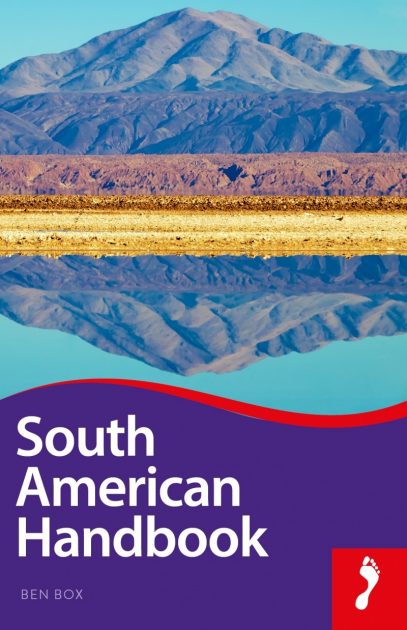
Our Verdict (The Best Travel Guide for South America)
If we’re talking about the best guide book for South America as a whole then we would opt for Footprint ‘s South American Handbook ( UK | USA ), though with Lonely Planet’s South America on a Shoestring and Rough Guide to South America on a Budget very closely behind. We’d also say something similar for the most popular countries (Argentina, Brazil, Chile and Peru) with the choice being between Footprint, Lonely Planet and Rough Guides . When it gets to the smaller countries, as well as Colombia, then Moon and Bradt are also well worth considering.
This article was last updated on 22nd November 2018
Follow Sounds and Colours: Facebook / Twitter / Instagram / Mixcloud / Soundcloud / Bandcamp Subscribe to the Sounds and Colours Newsletter for regular updates, news and competitions bringing the best of Latin American culture direct to your Inbox.

John Maier Jr
South America
Andean peaks, Amazonian rainforest, Patagonian glaciers, Incan ruins, white-sand beaches and vertiginous nightlife: the wonders of South America set the stage for incredible adventures.
Attractions
Must-see attractions.

Laguna Parón
Cordillera Blanca
The largest lake in the Cordillera Blanca — a snowcapped range of the Andes in west central Peru — and a gorgeous natural reservoir, Laguna Paron is a…

Chavín de Huántar
Huaraz & the Cordilleras
In most people's minds, Chavín is less a town and more a set of ruins – not any old ruins, but the erstwhile ceremonial center of one of Peru's most…

North Coast
Before metal or ceramic was invented and well before the Maya and Inca cultures ruled, there was Caral, the oldest civilization in the Americas. Having…
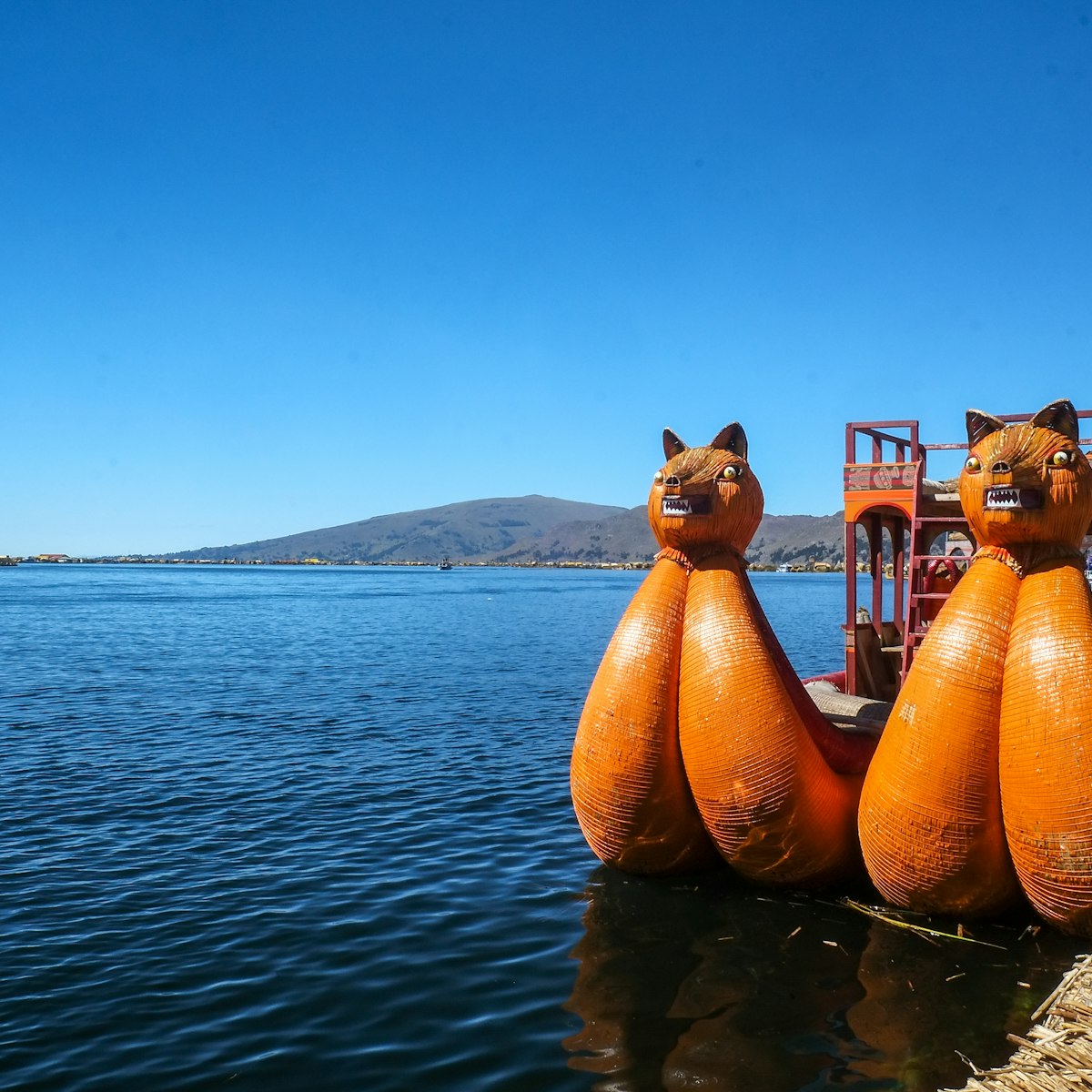
Isla Amantaní
Lake Titicaca
Of the small remote islands dotted around Lake Titicaca, Isla Amantaní is the least visited. Its population is just 4000, is a few kilometers north of the…

Parque Nacional da Tijuca
Rio de Janeiro
The Tijuca is all that's left of the Atlantic rainforest that once surrounded Rio de Janeiro. This 39-sq-km tropical-jungle preserve is an exuberant green…

Pão de Açúcar
Seen from the peak of Pão de Açúcar, Rio is undoubtedly a Cidade Maravilhosa (Marvelous City). There are many good times to make the ascent, but sunset on…

Glaciar Perito Moreno
Inland Patagonia
Among the Earth's most dynamic and accessible ice fields, Glaciar Perito Moreno is the stunning centerpiece of the southern sector of Parque Nacional Los…

Los Seismiles
Catamarca & La Rioja
West of Fiambalá, the paved road winds through the high desert, past picturesque red rock escarpments known as the Quebrada Angosturas, and into some…
Latest stories from South America
Filter by interest:
- All Interests
- Adventure Travel
- Art & Culture
- Beaches, Coasts & Islands
- Food & Drink

Tips & Advice
Sep 3, 2024 • 9 min read
November is the perfect time to give yourself a travel-fueled lift, with destinations primed for exploration during the penultimate month of the year.

Aug 27, 2024 • 8 min read

Jul 31, 2024 • 4 min read

Jul 17, 2024 • 8 min read

Jun 21, 2024 • 8 min read

May 28, 2024 • 9 min read

Apr 16, 2024 • 5 min read

Nov 13, 2023 • 6 min read

Feb 15, 2023 • 6 min read

Jul 29, 2022 • 14 min read
in partnership with getyourguide
Book popular activities in South America
South america and beyond.


- Travel Guides
Month-By-Month Guide To The Best Places To Visit In South America

With twelve countries occupying over 17,840,000 square kilometers, South America is a continent of many faces. Whether it’s summer or winter, rainy or snowy, this place is amazing throughout the year as there is always a region at its best. Our month-by-month guide to the best places to visit in South America will give an overview of the unique experiences each region has to offer.
With its enormous area and the many breathtakingly beautiful places, it may be difficult to pick just a few. However, we’ve rounded up some of the famous places in South America to visit during specific times of the year when they are at their absolute best.
Table of Contents
12 Countries:12 Months – Best South America Countries To Visit Every Month
January: brazil.

The largest country in South America, Brazil is so big that it occupies almost half the continent. The tropical paradise is lined with golden sprawling beaches and vast stretches of the rainforest with exotic plants and wildlife. All eyes are on Brazil’s most famous city, Rio de Janeiro which is filled with history, food, Carnival mania, and great attractions.
Weather: January is the best time to visit Brazil overall. During this time of year, the skies are sunny with little rainfall and everything around is lush green and dense. The temperature is perfect for spending time in the water and for exploring the outdoors.
Major Attractions: Iguazu Falls, Chapada Diamantina National Park, Island Ilha Grande, Beaches of Florianopolis, Amazon Rainforest, Christ the Redeemer Statue.
February: Argentina

Argentina is among the best places to visit in South America. Its diverse geography encompasses everything from deserts in South America to jungles, beaches to worldly landscapes, and passionate culture to natural wonders, this place has it all. It is a sought-after destination for tourists as it offers adventure in extremes. The mountainous valleys, lush-green vineyards, diverse landscapes, and snow-glazed glaciers make it the perfect getaway for travelers any time during the year. With so many exclusive experiences, Argentina is a perfect location for nature lovers and explorers alike.
Weather: The weather in February is usually predictable and hence perfect for touring outdoor adventures.
Major Attractions: Patagonia, Iguazú Falls, Perito Moreno Glacier, Tierra del Fuego National Park, Ushuaia, Cafayate, San Ignacio Mini Ruins, Quebrada de Humahuaca.
March: Chile

On the western edge of South America is Chile, one of the most beautiful countries in South America. Chile is blessed with such a beautiful geographical location that about 6000 km of Chile is covered by the coastline of the great Pacific Ocean. The rich tapestry of the mountain and plain, jungle, and ocean adds to the beauty of this country. The country is also very famous for its quirky festivals and wine region that attracts many oenophiles each year.
Weather: March is a great month to travel to Chile as this is the time when the weather changes from summer to autumn. During this time the weather is cool due to the onset of autumn. Due to its unusually long shape, Chile has a varied climate, dry and hot in the north and cold in the southern tip as it is very close to Antarctica.
Major Attractions: Torres del Paine National Park, San Pedro de Atacama, Santiago, The Wine Valleys, Chiloé Island, Carretera Austral, Easter Island, Tierra del Fuego, Portillo.
April: Ecuador

In spite of its small size, South America’s greatest place can be found in Ecuador. From the snow-capped peaks of the Andes Mountains and the Amazon to the idyllic beaches of the Pacific Coast, Inca ruins, colonial cities, the colorful colonial architecture of Quito and the wonders of the Galapagos Islands, Ecuador is a country full of natural and cultural wonders. For people looking for outdoor adventures, there are endless options like climbing and trekking adventures to partake in.
Weather: Ecuador is wet and hot during April. The mornings tend to have clear sunny skies and can expect short rainfall in the afternoon. But surprisingly the weather is pretty good with brief rain showers and sunny skies making it the best time to visit.
Major Attractions: Quilotoa Loop, Otavalo, Galapagos Island, Mindo, Cuenca, Guayaquil, Quito, Nariz Del Diablo, Banos, Salinas, Vilcabamba.

Peru, one of the places to visit in South America and South America’s most well-known destination, is located in the western region of South America. It’s a country rich in history, culture, and beauty. Apart from the mysterious settlement of Machu Picchu, the Inca Trail, and its ancient archeological site, Peru has so much more to offer. Peru is a favorite destination for trekkers and adventure enthusiasts. With a full spectrum of possibilities for travelers, Peru never fails to inspire.
Weather: With the rainy season coming to an end, the weather in May is quite pleasant with mostly sunny skies and mild spring-like temperatures. May is one of the best months to visit Peru as everything around is green from the recent rains and the land is yet to turn dry from the summer heat.
Major Attractions: Machu Picchu, Inca Trail, Lake Titicaca, Colca Canyon, Ollantaytambo, Sacred Valley, Nazca Lines.
June: Colombia

With its beautiful landscapes, traditions, culture, and cuisine all rolled into one, Colombia is one of the top South American tourist attractions. A host of spectacular places like snow-capped Andean peaks, tropical Amazonian jungles, Caribbean coasts, and sun-kissed deserts, and their hospitality will undoubtedly make you want to come back for more. Once you are here you’ll realize that there is more to this place than you could have ever imagined. The adventure and infectious beats around every corner make cities buzz with an energy that sets them apart from most of the other South American destinations.
Weather: The winter months of June are considered to be the best time to visit Colombia . These months have the lowest rainfall of the year and hence one of the driest times of the year.
Major Attractions: Cartagena, Medellin, Eje Cafetero, town of Leticia, Tayrona National Natural Park, Ciudad Perdida, Providencia Island, Mompox, La Guajira Peninsula.
July: Bolivia

For an authentic and spectacular vacation, one should definitely consider Bolivia as this place is one of the best tourist places in South America. Resting peacefully in central South America this country is the only landlocked nation on the continent. As it is slightly an off the beaten tourist path it is largely unscarred by mass tourism. But the beautiful places this country has to offer guarantee an authentic and adventurous holiday. This beautiful country is definitely one of South America’s best-kept secrets.
Weather: The best time to visit Bolivia is the dry season of July when the skies are clear with occasional rain showers. Exploring everything that Bolivia has to offer makes it worry-free during this time. Best time to enjoy outdoor activities like hiking, trekking, bike riding, climbing, and much more.
Major Attractions: Salar de Uyuni, Uyuni’s National Parks, Train Cemetery, Ojos del Inca Laguna, Sucre, La Glorieta Castle, Villa Tunari, La Paz, Lake Titicaca, Illimani.
August: Guyana

Guyana, an authentic chunk of untouched South American wonderland is brimming with nature. There’s a lot about Guyana that makes it unique. It is a country that’s committed to sustainable tourism, where your trip is doing a little bit of good toward protecting a critical slice of the environment and a host of communities. 80% of Guyana is covered in wild virgin rainforest, hence spotting some wildlife is abundant. The adventurous, raw, and serene places make it one of the best South American places to visit.
Weather: Guyana generally has a wet tropical climate with abundant rainfall without much heat or cold. But during this time the rainy season is over and everything is green, lush, and beautiful around.
Major Attractions: Georgetown, Kaieteur Falls, Surama, Kanuku Mountains, Shell Beach, Iwokrama Rainforest.
September: Suriname

Suriname may be one of the smallest South American countries but the many sightseeing options here can blow your mind. It’s a combination of both, the dense and untamed jungles and the lively modern cities. The southern part of Suriname is a coastal area and the northern part is full of tropical rainforests, savanna, and mountain ranges.
Weather: Suriname is an all-year-round destination as it enjoys a hot and wet tropical climate but the best time to visit is in September which is relatively a dry month.
Major Attractions: Fort Zeelandia, Commewijne River, Peperpot Nature Park, Jodensavanne, Warappa Kreek, Brownsberg Nature Park.
October: Uruguay

Bordered by Argentina and Brazil, Uruguay is one of the smallest countries in South America. From the glamorous coastlines to historic and cultural landmarks, this place can cater to the needs of travelers of all age groups. Whether you are on an adventurous or romantic trip, this laid-back country has a lot to offer. Do plan your visit to one of the safest countries on the continent for a world of fun, adventure, and bliss.
Weather: We consider October to be the best time to visit Uruguay, especially if you’d like to spend time at the beach. The wind coming off the ocean will keep you cool and comfortable throughout your stay.
Major Attractions: Tacuarembo, Montevideo, Fray Bentos, La Paloma, Piriapolis, Punta del Este, Colonia del Sacramento.
November: Venezuela

Venezuela is a tropical country of many faces. The beautiful landscapes, magnificent waterfalls, coastal towns, and offshore islands with incredible biodiversity are sure to make you fall in love with it. There are many incomparable beautiful places that are still unexplored. People who have been to this destination have left comments stating that this is a jewel to discover and it’s like a “trip of a lifetime” that you just cannot miss.
Weather: The dry season of November is usually the best time to visit Venezuela . This is the time of year that there is no rainfall and the humidity is also lower making it a great time to explore Venezuela.
Major Attractions: Angel Falls, Los Roques Archipelago, Margarita Island, Morrocoy National Park, Roraima, Galipan, Mochima National Park.
December: Paraguay

Set right in the heart of South America, Paraguay is landlocked between three great nations. With the second largest hydroelectric plant in the world right here in Paraguay, this country is much more than nature and beauty. The humble nation is charming, authentic, and enigmatic at the same time. Getting lost in its forests, exploring the caves and the incredible hidden places make it a world within a world. It’s a truly fascinating place that will definitely stun you.
Weather: Traveling to Paraguay is best any time of year but traveling in early December is the ideal time when the weather is consistently warm. Generally, this place has only two seasons, hot, and very hot temperatures.
Major Attractions: Asuncion, Saltos Del Monday, La Santisima Trinidad De Parana, Encarnacion, YBYCUI National Park, Palacio de Lopez, Cerro Cora National Park.
South America is a year-round destination, hence there is no right time to visit this continent. There is so much to see here that the choice of place is purely based on the experience that you would like to have. This is a destination that appeals to all types of travelers, hence make a pick that suits you best. If we have missed any, do share them in the comment section.
Buenos Aires is the most visited city in South America.
Buenos Aires in Argentina, La Paz in Bolivia, Cartagena de Indias in Colombia, Lima in Peru, and Rio de Janeiro in Brazil are the top 5 cities in South America.
Bolivia is one of the cheapest countries to visit not only in South America but also in the world.
According to the Global Peace Index, Uruguay is the safest country in South America to visit.
Chile, Colombia, Peru, Brazil, Ecuador, and Uruguay have some of the finest beaches.
LEAVE A REPLY Cancel reply
Save my name, email, and website in this browser for the next time I comment.
South America Unveiled: Explore Must-Visit Places Across the Continent!

Embark on a South American adventure! Explore diverse landscapes, vibrant cultures, and hidden gems. Click to discover the must-visit places that await your exploration!

Enjoy fast, free delivery, exclusive deals, and award-winning movies & TV shows with Prime Try Prime and start saving today with fast, free delivery
Amazon Prime includes:
Fast, FREE Delivery is available to Prime members. To join, select "Try Amazon Prime and start saving today with Fast, FREE Delivery" below the Add to Cart button.
- Cardmembers earn 5% Back at Amazon.com with a Prime Credit Card.
- Unlimited Free Two-Day Delivery
- Streaming of thousands of movies and TV shows with limited ads on Prime Video.
- A Kindle book to borrow for free each month - with no due dates
- Listen to over 2 million songs and hundreds of playlists
- Unlimited photo storage with anywhere access
Important: Your credit card will NOT be charged when you start your free trial or if you cancel during the trial period. If you're happy with Amazon Prime, do nothing. At the end of the free trial, your membership will automatically upgrade to a monthly membership.
Buy new: .savingPriceOverride { color:#CC0C39!important; font-weight: 300!important; } .reinventMobileHeaderPrice { font-weight: 400; } #apex_offerDisplay_mobile_feature_div .reinventPriceSavingsPercentageMargin, #apex_offerDisplay_mobile_feature_div .reinventPricePriceToPayMargin { margin-right: 4px; } -24% $19.10 $ 19 . 10 FREE delivery Wednesday, September 25 on orders shipped by Amazon over $35 Ships from: Amazon.com Sold by: Amazon.com
Return this item for free.
We offer easy, convenient returns with at least one free return option: no shipping charges. All returns must comply with our returns policy.
- Go to your orders and start the return
- Select your preferred free shipping option
- Drop off and leave!
Save with Used - Good .savingPriceOverride { color:#CC0C39!important; font-weight: 300!important; } .reinventMobileHeaderPrice { font-weight: 400; } #apex_offerDisplay_mobile_feature_div .reinventPriceSavingsPercentageMargin, #apex_offerDisplay_mobile_feature_div .reinventPricePriceToPayMargin { margin-right: 4px; } $11.95 $ 11 . 95 FREE delivery Wednesday, September 25 on orders shipped by Amazon over $35 Ships from: Amazon Sold by: Dream Books Co.

Download the free Kindle app and start reading Kindle books instantly on your smartphone, tablet, or computer - no Kindle device required .
Read instantly on your browser with Kindle for Web.
Using your mobile phone camera - scan the code below and download the Kindle app.

Image Unavailable

- To view this video download Flash Player
Follow the authors

Lonely Planet Best of South America (Travel Guide) Paperback – Folded Map, November 19, 2019
Purchase options and add-ons.
Lonely Planet: The world's number one travel guide publisher*
Lonely Planet's Best of South America is your passport to the most relevant, up-to-date advice on what to see and skip, and what hidden discoveries await you. Gaze down on sparkling Rio de Janeiro from Pao de Acucar, spot wildlife in the Galapagos Islands, and hike the legendary Inca Trail to Machu Picchu - all with your trusted travel companion. Discover the best of South America and begin your journey now!
Inside Lonely Planet's Best of South America :
- Full-colour images throughout
- Highlights and itineraries help you tailor your trip to your personal needs and interests
- Insider tips to save time and money and get around like a local, avoiding crowds and trouble spots
- Essential info at your fingertips - hours of operation, phone numbers, websites, transit tips, prices
- Honest reviews for all budgets - eating, sightseeing, going out, shopping, hidden gems that most guidebooks miss
- Cultural insights give you a richer, more rewarding travel experience - history, art, food, wine, sports, landscapes, wildlife
- Free, convenient pull-out map (included in print version), plus easy-to-use colour maps to help you navigate
- Covers Brazil, Argentina, Chile, Bolivia, Peru, Ecuador, Colombia, and more
The Perfect Choice: Lonely Planet's Best of South America is filled with inspiring and colorful photos, and focuses on South America's most popular attractions for those wanting to experience the best of the best.
Looking for just a few of the destinations included in this book? Check out the relevant Lonely Planet destination guides .
About Lonely Planet: Lonely Planet is a leading travel media company and the world's number one travel guidebook brand, providing both inspiring and trustworthy information for every kind of traveler since 1973. Over the past four decades, we've printed over 145 million guidebooks and grown a dedicated, passionate global community of travelers. You'll also find our content online, and in mobile apps, video, 14 languages, nine international magazines, armchair and lifestyle books, ebooks, and more.
TripAdvisor Travelers' Choice Awards 2012, 2013, 2014, 2015 and 2016 winner in Favorite Travel Guide category
'Lonely Planet guides are, quite simply, like no other.' - New York Times
'Lonely Planet. It's on everyone's bookshelves, it's in every traveller's hands. It's on mobile phones. It's on the Internet. It's everywhere, and it's telling entire generations of people how to travel the world.' - Fairfax Media (Australia)
*Source: Nielsen BookScan: Australia, UK, USA, 5/2016-4/2017
- Print length 418 pages
- Language English
- Publisher Lonely Planet
- Publication date November 19, 2019
- Dimensions 5.05 x 0.75 x 7.75 inches
- ISBN-10 1788684729
- ISBN-13 978-1788684729
- See all details

Frequently bought together

Customers who viewed this item also viewed

PRODUCT CERTIFICATION (1)
The Forest Stewardship Council certified products support responsible forestry, helping keep forests healthy for future generations.

From the Publisher

Welcome to South America
Andean peaks, Amazonian rainforest, Patagonian glaciers, Inca ruins, colonial towns, white-sand beaches and vertiginous nightlife: the wonders of South America set the stage for incredible adventures.
- South America’s Top Sights
- Itineraries
- And so much more!
Product details
- Publisher : Lonely Planet; 1st edition (November 19, 2019)
- Language : English
- Paperback : 418 pages
- ISBN-10 : 1788684729
- ISBN-13 : 978-1788684729
- Item Weight : 2.31 pounds
- Dimensions : 5.05 x 0.75 x 7.75 inches
- #111 in General South America Travel Guides
- #426 in General Travel Reference
About the authors
Lonely planet.
With over 150 million guidebooks in print, Lonely Planet is a trusted source for any traveler. Since our inception in 1973, we've inspired generations of travelers to discover amazing places and enabled curious travelers to get off the beaten paths to appreciate different cultures and become agents of positive change.
Mark Johanson
Mark Johanson is an American author and journalist based in Santiago, Chile. His stories about travel, food, design and the environment have appeared in numerous global publications, including National Geographic, Travel + Leisure, The Economist, The Financial Times, Condé Nast Traveler, Newsweek, AFAR, Food & Wine, Dwell, CNN, Bloomberg and the BBC, among others. He is the coauthor of a dozen Lonely Planet guidebooks to destinations across the Americas and Asia, and has contributed to a dozen more coffee table books for the iconic travel brand. His first literary work, Mars on Earth, is out this October from Rocky Mountain Books.

Alex Egerton
A news journalist by trade, Alex has worked for magazines, newspapers and media outlets on five continents. Having had his fill of musty newsrooms and the insatiable corporate appetite for superficial news, Alex decided to leap into travel writing in order to escape the mundane.
He spends most of his time on the road checking under mattresses, sampling suspicious street food and chatting with locals as part of the research process for travel articles and guidebooks.
A keen adventurer, Alex has hiked through remote jungles in Colombia, explored isolated tributaries of the mighty Mekong and taken part in the first kayak descent of a number of remote waterways in Nicaragua.
When not on the road, you'll find him at home amongst the colonial splendor of Popayán in southern Colombia.
Customer reviews
- 5 star 4 star 3 star 2 star 1 star 5 star 71% 18% 5% 3% 3% 71%
- 5 star 4 star 3 star 2 star 1 star 4 star 71% 18% 5% 3% 3% 18%
- 5 star 4 star 3 star 2 star 1 star 3 star 71% 18% 5% 3% 3% 5%
- 5 star 4 star 3 star 2 star 1 star 2 star 71% 18% 5% 3% 3% 3%
- 5 star 4 star 3 star 2 star 1 star 1 star 71% 18% 5% 3% 3% 3%
Customer Reviews, including Product Star Ratings help customers to learn more about the product and decide whether it is the right product for them.
To calculate the overall star rating and percentage breakdown by star, we don’t use a simple average. Instead, our system considers things like how recent a review is and if the reviewer bought the item on Amazon. It also analyzed reviews to verify trustworthiness.
- Sort reviews by Top reviews Most recent Top reviews
Top reviews from the United States
There was a problem filtering reviews right now. please try again later..
Top reviews from other countries
- Amazon Newsletter
- About Amazon
- Accessibility
- Sustainability
- Press Center
- Investor Relations
- Amazon Devices
- Amazon Science
- Sell on Amazon
- Sell apps on Amazon
- Supply to Amazon
- Protect & Build Your Brand
- Become an Affiliate
- Become a Delivery Driver
- Start a Package Delivery Business
- Advertise Your Products
- Self-Publish with Us
- Become an Amazon Hub Partner
- › See More Ways to Make Money
- Amazon Visa
- Amazon Store Card
- Amazon Secured Card
- Amazon Business Card
- Shop with Points
- Credit Card Marketplace
- Reload Your Balance
- Amazon Currency Converter
- Your Account
- Your Orders
- Shipping Rates & Policies
- Amazon Prime
- Returns & Replacements
- Manage Your Content and Devices
- Recalls and Product Safety Alerts
- Registry & Gift List
- Conditions of Use
- Privacy Notice
- Consumer Health Data Privacy Disclosure
- Your Ads Privacy Choices
- Meet the Team
- Our Manifesto
- Work with Us
- Budget Travel
- Personal Development
- Work & Travel
- United Kingdom
- More of Europe
- Philippines
- More of Southeast Asia
- More of South America
- More of Central America
- South Korea
- More of Asia
- More of North America
- New Zealand
- Pacific Islands
- More of Oceania
- South Africa
- More of Africa
- More of the Middle East
- Travel Essentials
- Travel Gear
Home » South America » Backpacking Travel Guide
Backpacking South America Travel Guide (TRAVEL TIPS • 2024)
So, you want to know how to travel South America, eh? Well, you’re in the right place!
Backpacking through South America is like learning to ride a bike without the training wheels. There is just the right amount of danger and curve balls to keep you alert, focused, and totally stoked on life.
With the exception of a handful of backpacker hotspots, South America is the wild west frontier of backpacking. This is the land of crazy parties, epic surfing, sprawling cities, and wild landscapes including the Andes and the Amazon jungle.
Above all else, South America is stunningly beautiful. Though challenging to navigate at times, it’s budget backpacker friendly, diverse, relatively safe, and one hell of a travel experience…
But South America is MASSIVE. Deciding where to go and how to travel South America is a mind-boggling task. That’s where I come in, amigos. This South America travel guide will provide you with EVERYTHING you need to know to prepare for your trip through South America.
Here’s the full low-down on how to backpack South America including routes, country profiles, tips and tricks for South America budget travel, and much more.f
Lace up your bootstraps and prepare to have your travel inspiration skyrocket. We’re going on an adventure!
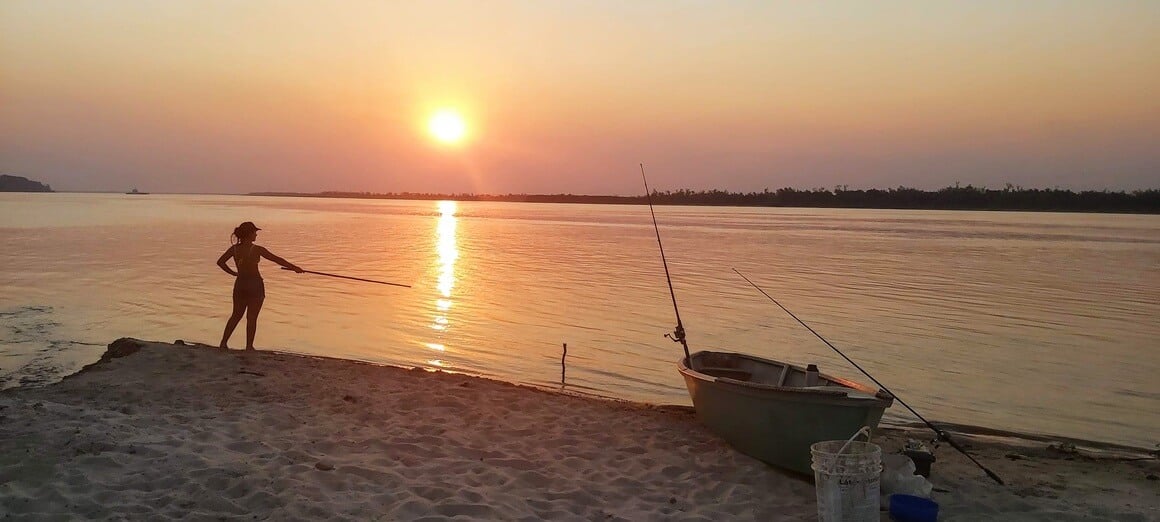
The Broke Backpacker is supported by you . Clicking through our links may earn us a small affiliate commission, and that's what allows us to keep producing free content 🙂 Learn more .
Why Go Backpacking in South America?
The South American continent is one of my favourite places on earth. It was always a place that mystified me: the traveller group was generally older and more mature. So when I got invited (by a sexy South American), I jumped at the chance.
It’s a place where I learned the art of budget travel , fell in love countless times, and had a multitude of life-changing experiences along the way. If you want to get off the beaten track whilst still having the option to meet plenty of other travellers, South America is the place to level up your backpacking skills and head on a real adventure…
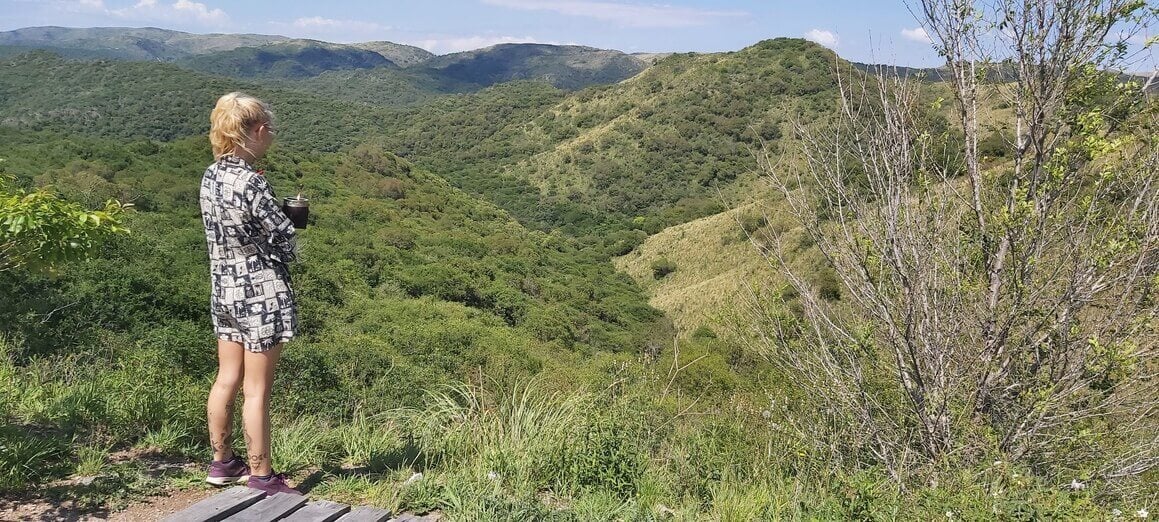
South America is one of the most diverse continents on earth. It is home to the world’s second-highest mountain range in the Andes, world-class surf beaches, the Amazon Basin, the world’s driest desert, huge plains of lush grassland, glaciers, and unique wildlife not found anywhere else on Earth…
Each country you visit whilst backpacking South America offers up the opportunity to experience the incredible natural and cultural forces unique to that region.
Backpacking South America is generally a cheap endeavour – although it’s not as cheap as Southeast Asia or India. There are some fairly expensive corners of South America that you should avoid if you’re travelling on a budget .
You will fall in love with South America (and maybe a person or two along the way). So let’s dive into some South America travel itineraries and backpacking routes for your trip.
Best Travel Itineraries for Backpacking South America
Best places to visit in south america – country breakdowns, 9 top things to do in south america, backpacker accommodation in south america, south america backpacking costs, best time to travel to south america, staying safe in south america, getting into south america, how to get around south america, working in south america, what to eat in south america, south american culture, unique experiences in south america, faqs about backpacking in south america, final thoughts on backpacking south america.
- Buy Us a Coffee!
When making a South America backpacking itinerary, remember that travel distances are HUGE, internal flights expensive, and sometimes you want to stay somewhere longer than anticipated.
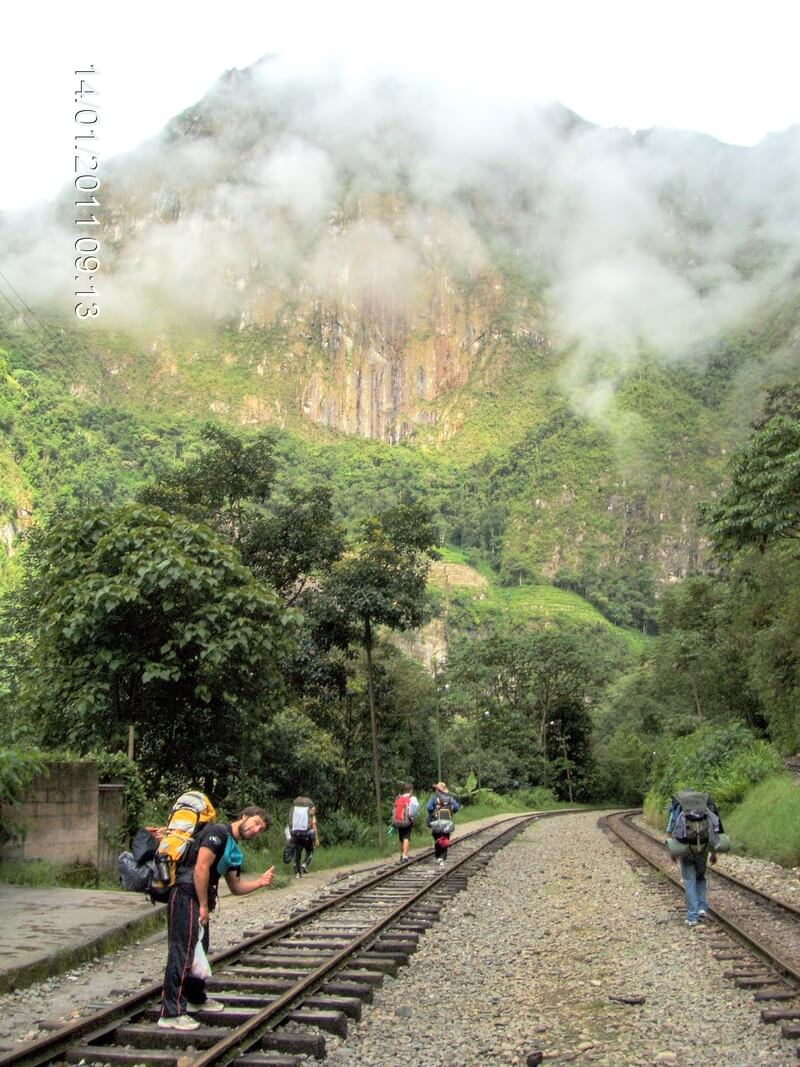
So choose your South America backpacking route carefully. Unlike other continents, how much time you have really matters; you simply can’t do all of it.
If you only have 2 or 3 weeks for travelling South America, forget about seeing the whole continent. I recommend sticking to one country and devoting your energy to exploring it properly.
In one month, you could explore some countries closer to each other. You could visit Bolivia and Lake Titicaca in Peru for example. It’s good to have room for spontaneity in your South America travel itinerary too.
2 Week South America Travel Itinerary – The West Coast Appetizer
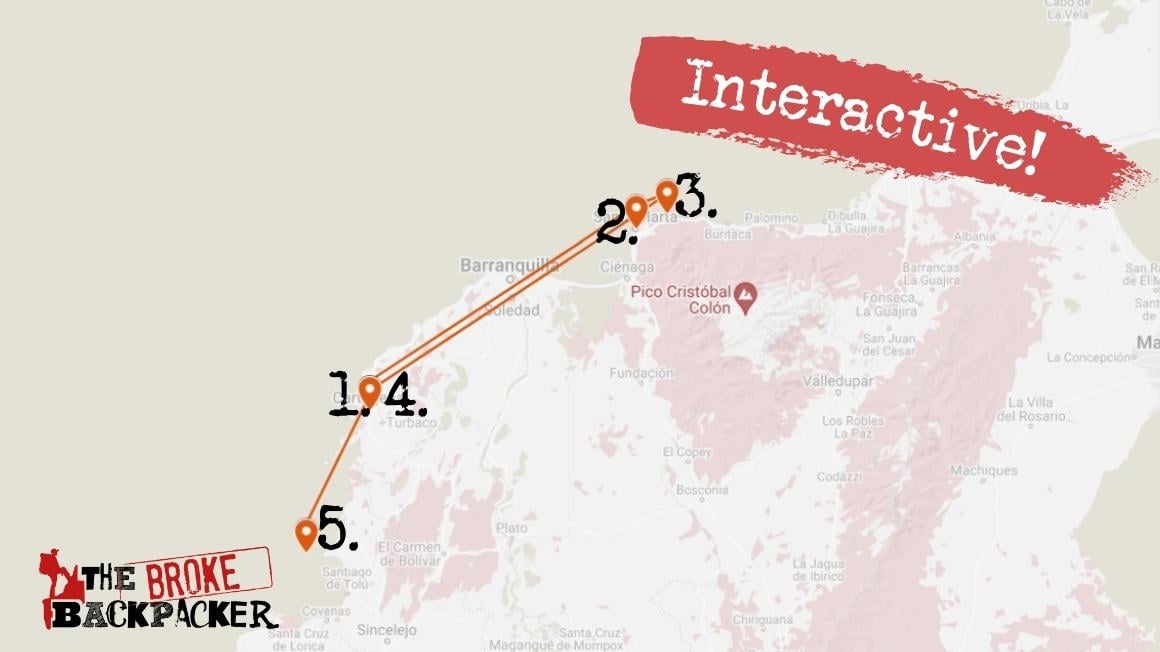
You’ll have to keep moving to make this itinerary happen in 2 weeks, but I believe in you!
Start your backpacking South America itinerary in Colombia by visiting Cartagena . After a few days, head to Santa Marta , the jump-off point for Minca – a charming mountain town – and Tayrona National Park. Plus, there are so many good places to stay in Santa Marta too.
Get a bit off the beaten path, and head east to Cabo de la Vela (where the desert meets the sea) and Punta Galinas , where you can feast on fresh seafood along the Caribbean coast. Doubling back to Cartagena , head to nearby Playa Blanca and Tolú (mangrove) before heading to Islas de San Bernardo (white-sanded islands).
Or you could start in Lima , Peru. Explore the city for a day or two before heading to the Nazca Lines , Arequipa , and Colca Canyon .
Then head to Cusco in the Andes. Take a few days to get used to the altitude before setting off on a multi-day trek to Macchu Picchu.
Alternatively, start in Buenos Aires . Then you can head south to trek in Patagonia . In southern Argentina and Chile, you can do the world-famous Torres del Paine circuit . 2 weeks is cutting it fine but – if you hustle – you could pull it off.
In 2 weeks, you can get a good taste of Colombia, Ecuador , or Bolivia . Don’t miss out on the Salt Flats .
1 Month South America Travel Itinerary – The Starter
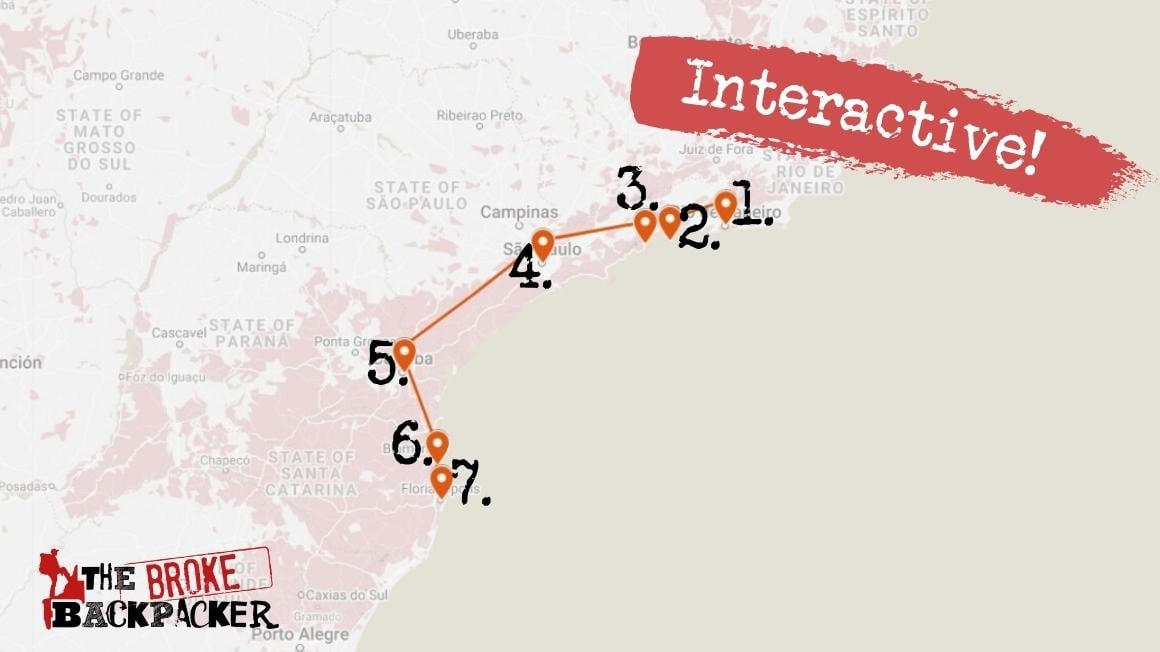
With 1 month, you can make an epic backpacking South America itinerary. If you want to explore more than one country in South America, you’re gonna need more than 3 weeks.
For surf bums, you could easily spend a month heading beach to beach from Southern Peru all the way to Colombia , in 1 month. Or you could do 2 weeks in Argentina followed by 2 weeks of hiking in Chilean Patagonia .
If it were me, larger countries like Argentina, Chile , and Brazil are better to explore with more than 1 month. You can do it but you will spend a long time on bus journeys, so I would just stick to one area.
Southeast Brazil is a good choice for 1 month on a South America itinerary: travel from Rio de Janeiro all the way south to Florianópolis and hit up everything in between. Bear in mind that you’ll probably want to stay in Rio AND Floripa longer than you expect.
Highlights of this route include exploring the megapolis of São Paulo , idyllic getaways of Ilha Grande and Paraty , eco-friendly and laidback Curitiba , and the crazy nightclubs of Balneário Camboriú .
Or, you could fly into Ecuador and spend 3 weeks exploring here: stay at a great hostel in Guayaquil before heading to Montañita . In Montañita you can party and surf to your heart’s content. Head North towards Bahia de Caraquez and Canoa for surf towns that are more off the beaten path.
Next head to the mountains, stopping first in Quito . There are some excellent treks in the Ecuadorian Andes .
If you have time, definitely hit up the Volcano Loop trail on the outskirts of Cotopaxi National Park . A trip to the jungle around Puyo is recommended as well. Then head for a week of trekking in Colombia .
3 Month South America Travel Itinerary – The Great South America Main Course
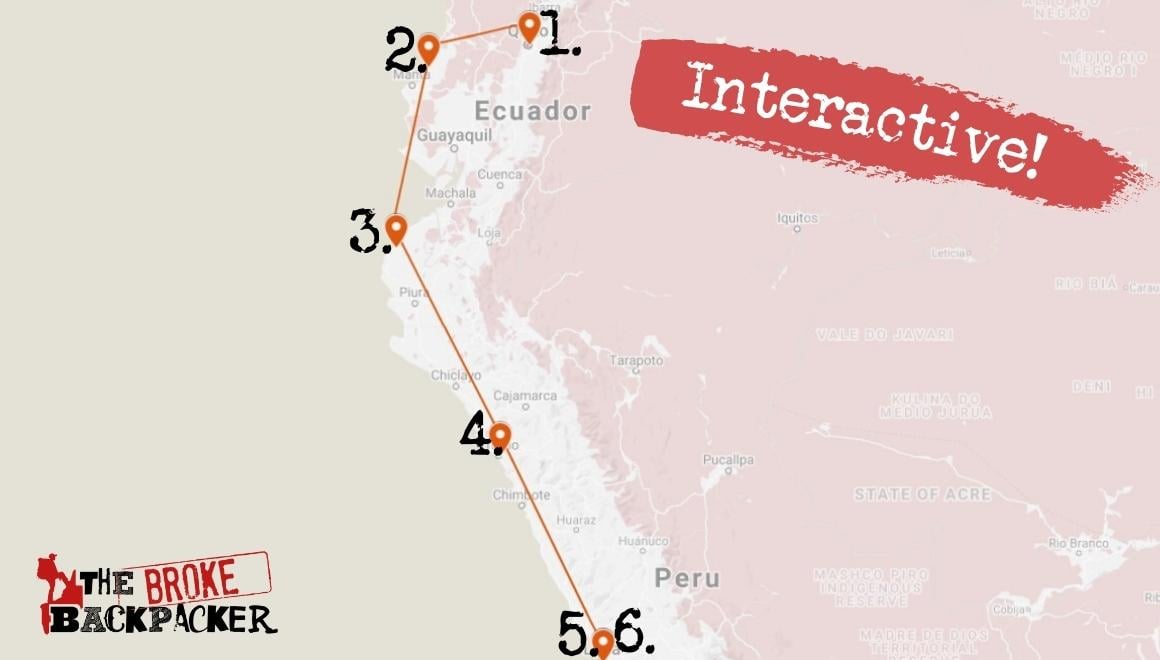
3 months backpacking South America, eh? Hell yes!
I recommend flying into Lima, Peru unless you know you want to start in the north (Brazil or Colombia) or further south (Argentina or Chile). Explore Lima and the coast before heading to the Andes. There Machu Picchu awaits in all of its glory.
Definitely do a trek to the famous Inca city! (More on hiking in South America later). From here, you can either drop down on the other side of the Andes and explore the Amazon basin or you can head south to Bolivia and eventually Argentina and Patagonia .
Alternatively, you can slowly start making your way north via the Coast. You could spend a month (or more) in Ecuador, Colombia, or Brazil respectively.
Personally, I started off in Buenos Aires then went north to Brazil and Colombia . The distances were truly massive. I’m talking 30-hour bus rides (on comfortable buses I must say).
Travelling in South America is never a quick affair, so plan your itinerary accordingly.
6 Month South America Travel Itinerary – The Full 3-Course Latin America
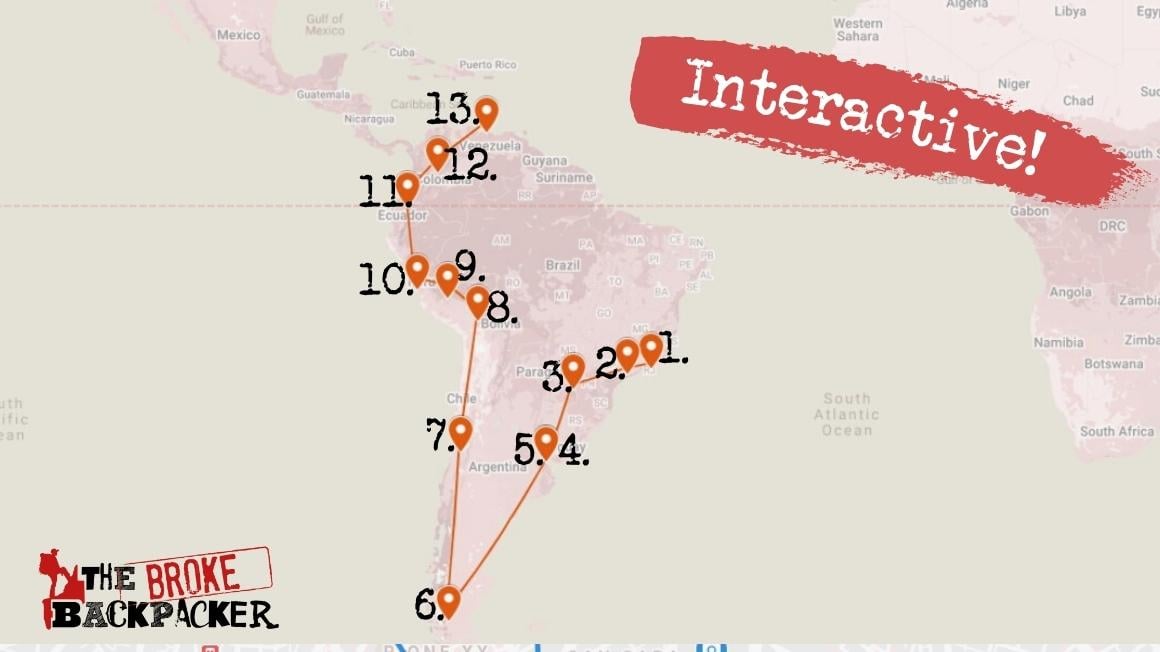
Life has brought you to the fortunate crossroads of having 6 months to travel South America? Good on you!
With a 6-month backpacking South America itinerary, you have the luxury of really being able to take your damn time. To see multiple countries, it’s a practical choice to begin your journey either in the north or the south to avoid backtracking.
With a 6 month itinerary, you can explore many South American countries in depth. I’ll be honest with you, the itinerary shown on the map is really fucking ambitious. But hopefully, it gives you an idea of what crossing this vast continent would look like.
Starting your journey in Rio de Janerio or São Paulo might be a bit of a rough landing, though you will be a primed bad-ass by the time it comes to move on to another country. Other options are starting with some days in Buenos Aires , in Argentina, and Chile, in the south.
You could be surfing it up on the coast of Ecuador one day, and be in the mountains of Peru several days (and many bus rides) later. I advise taking a chunk of your time to really explore and get off the beaten path in top destinations like Brazil , Colombia , and Bolivia .
Having 6 months or more to go backpacking truly means you have a total blank slate to work with. So get ready to write your own beautiful backpacking destiny!
Want to save money on accommodation?

We got you. For reals.
Each country in South America has something unique and profoundly exciting for backpackers. But they also have some common themes: they are Spanish speaking (minus Portuguese in Brazil), they have stunning natural beauty, and some of the nicest people you will meet whilst travelling. So finding the best places to backpack in South America has a lot to do with your own interests.
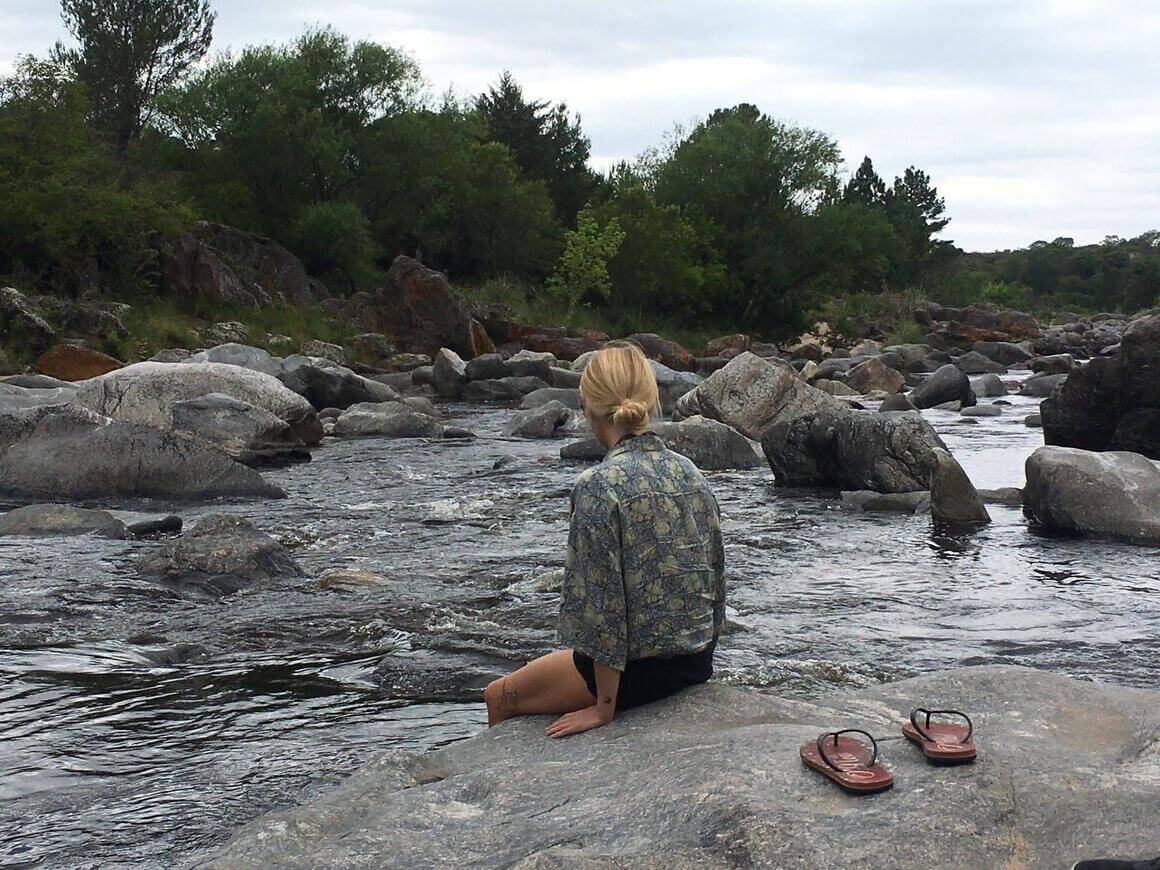
Maybe you’ll explore the epic snow-capped peaks of Patagonia in Argentina and Chile. Party with beautiful people at the Carnival in Brazil.
Trek to the Lost City in Colombia. Experience the sun-drenched deserts of Bolivia and the colourful Rainbow Mountains of Peru.
Backpacking through South America truly is a life-changing journey through one of the planet’s most fascinating landmasses. When you visit South America, you can be sure that it will be some of the most fun you will have in your life.
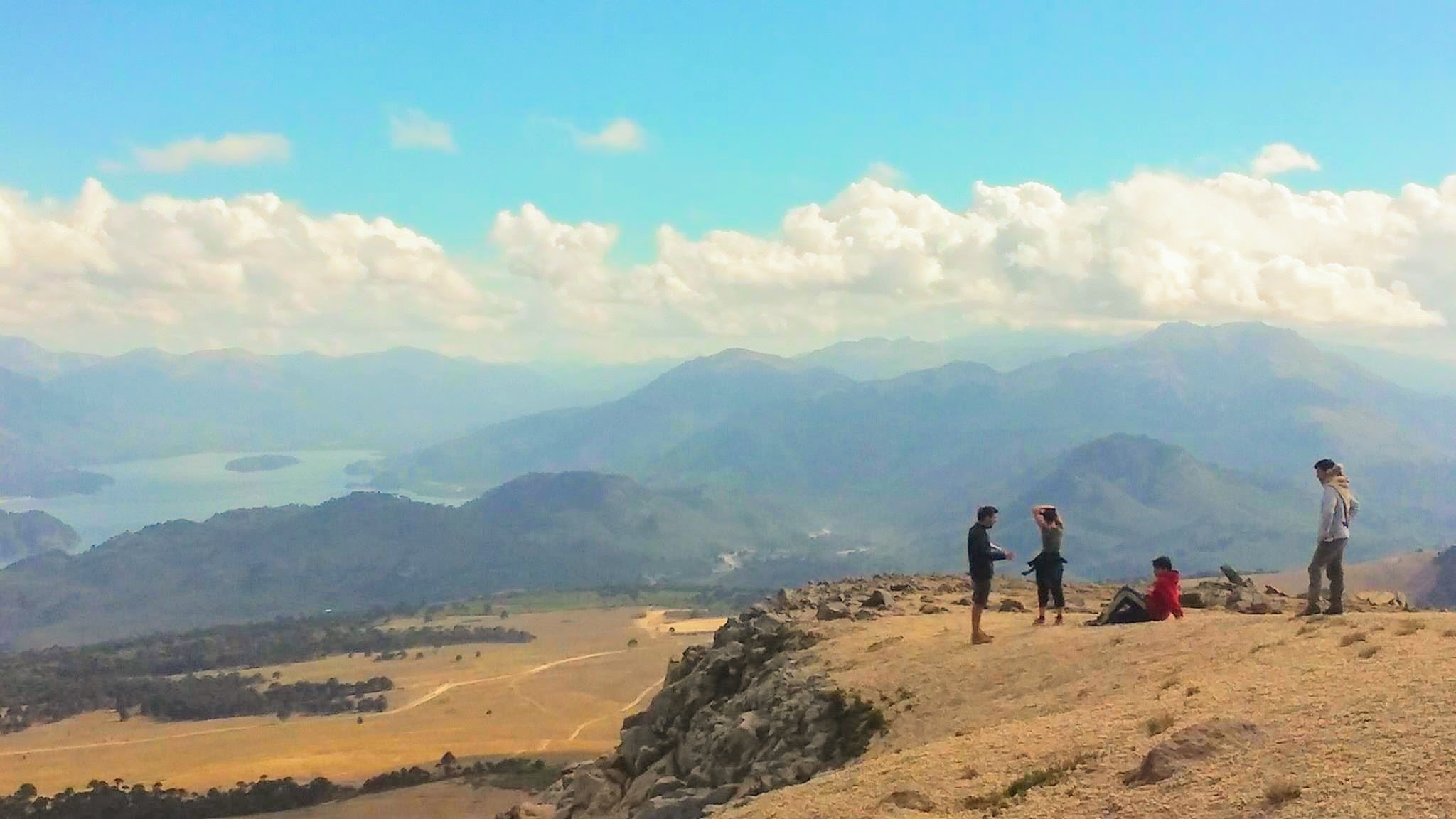
South America is a vast continent on the move. The number of people travelling to South America is increasing every year. Whilst the cost of living in South America remains quite low, each country requires a different budget for travellers.
Once you begin to discover a few of the South American countries, you will be entranced by the jaw-dropping landscapes, fascinating history, vibrant culture, and awesome food.
Let’s take a look at the countries that make backpacking in South America so damn special.
Backpacking Brazil
Brazil is, hands down, one of South America’s most dynamic countries. It’s all about the extremes. Whether it’s the parties, the people, or nature, the vibrations run through everything – and connect everyone.
Backpacking in Brazil offers up sick surf beaches, fun-loving locals, insane parties, and landscapes that would make even the most seasoned traveller say “no shit, mate, look at that!”
Of course, the Brazilian festival Carnival is legendary – and for good reason. Get your mind blown on the Brazilian side of Iguaçu Falls , visit the Amazon , drink a Caipirinha on the beach! Plus Brazil’s home to big up-and-coming cities like Belo Horizonte, Curitiba, and Natale.
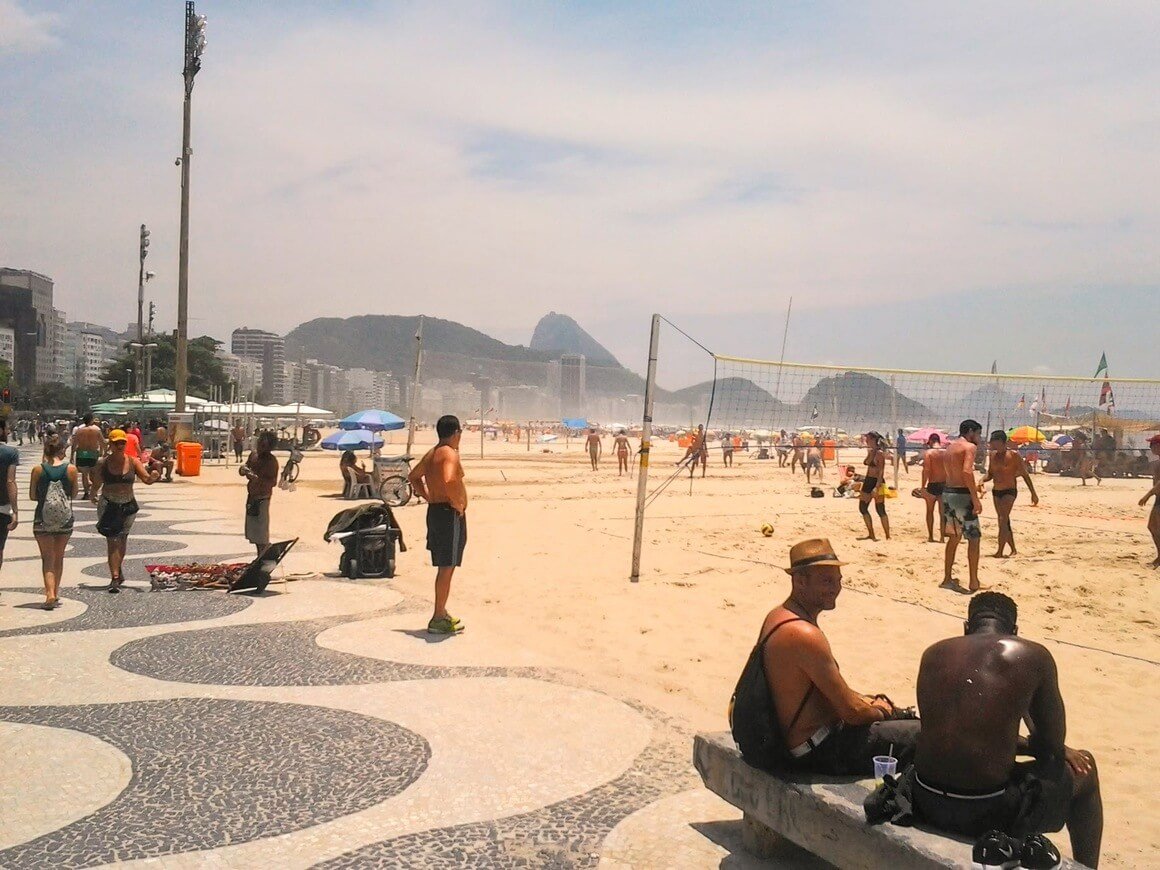
And when I say ‘extreme’, I mean extreme : Brazil is absolutely MASSIVE and covers nearly half (47%) of South America’s landmass! That should give you an idea of how big it is.
But, more importantly, it gives you a better idea of how much diversity Brazil has on offer. In fact, there’s a lot going for Brazil that you may not be aware of.
For example, trekking probably isn’t the first thing that pops into your mind when you think about backpacking through Brazil. It’s a shame because Brazil has truly gorgeous trails spread throughout the country. It’s also home to Iguazu, one of the most incredible waterfalls on Earth.
The best hiking opportunities are usually found in Brazil’s national parks (parques nacionais ). Brazil has over 70 national parks and – in terms of beauty – these can contend with any other on Earth.
What to Know Before Visiting Brazil
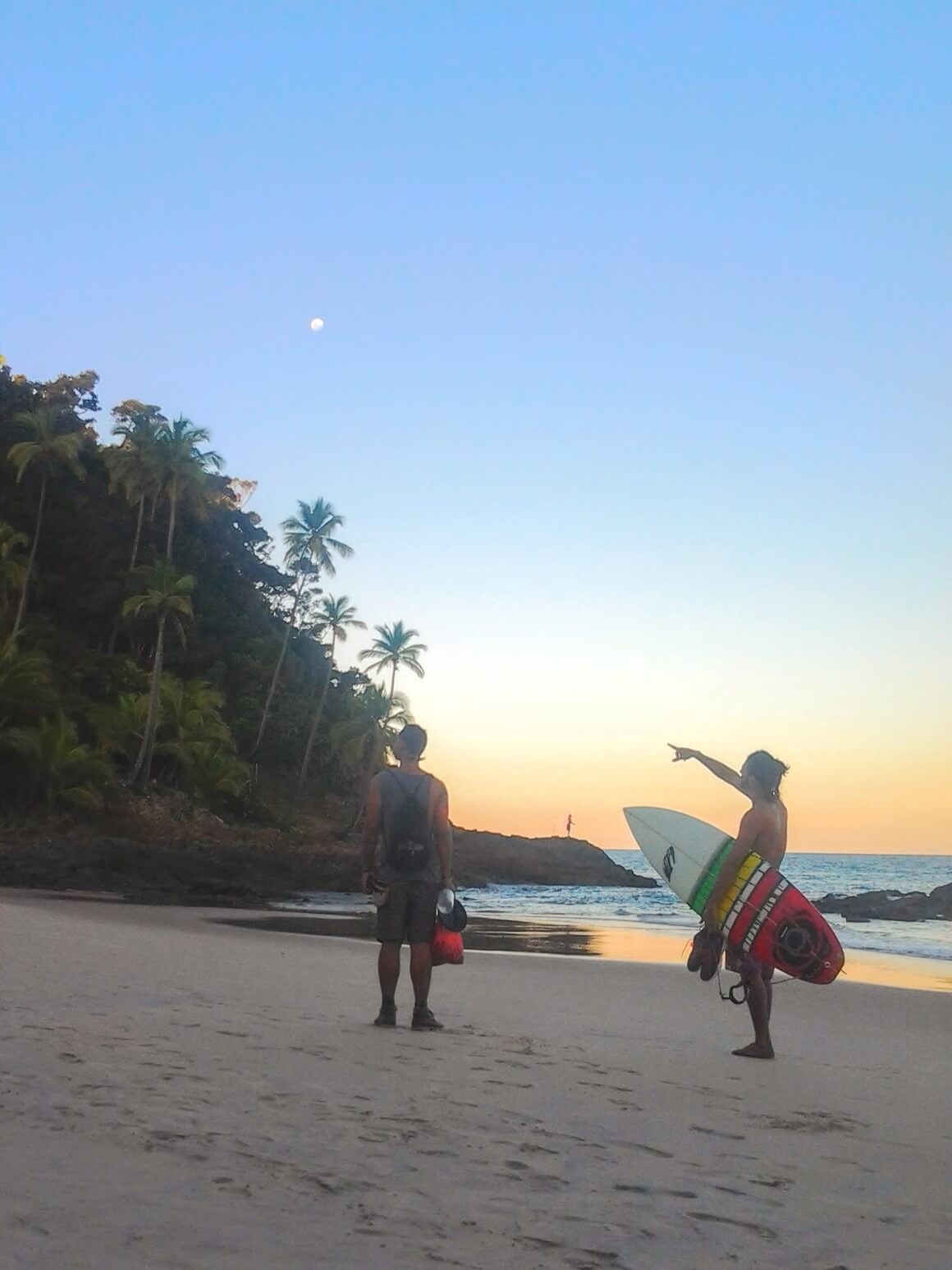
- Don’t miss out on… Florianopolis. The Brazilians favourite place to visit for a reason. It’s chilled, safe, and gorgeous. You plan to stay in Floripa for a week, it grabs you by the balls, and you get stuck for months.
- Keep an eye out for… Travel distances. Don’t be fooled: they’re way longer than they seem on the map. Give yourself plenty of time to get from A to B.
- The coolest hostel is… Hostel do Morro . In one of my favourite destinations in Brazil, this hostel is a true nature immersion. In the “mato”, with sea view and monkeys visiting. A true good vibes place!
- The best food is found in… Belo Horizonte. There is an amazing energy to this place; everyone hangs out on the streets, eating and drinking at plastic tables, all night long.
Backpacking Colombia
Whilst South America has many countries that I consider to have the full package , Colombia is the most complete. It’s a relatively small country. So considering the scale of epic surf, neverending parties, untouched jungle, happening cities, and towering mountains, Colombia is a reason for backpackers to keep travelling!
Cali, Cartagena, Bogotá , and Medellín are a few major cities in Colombia where you can really let loose. Go and have some extraordinary conversations with the locals about life in Latin America and not taking life too seriously.
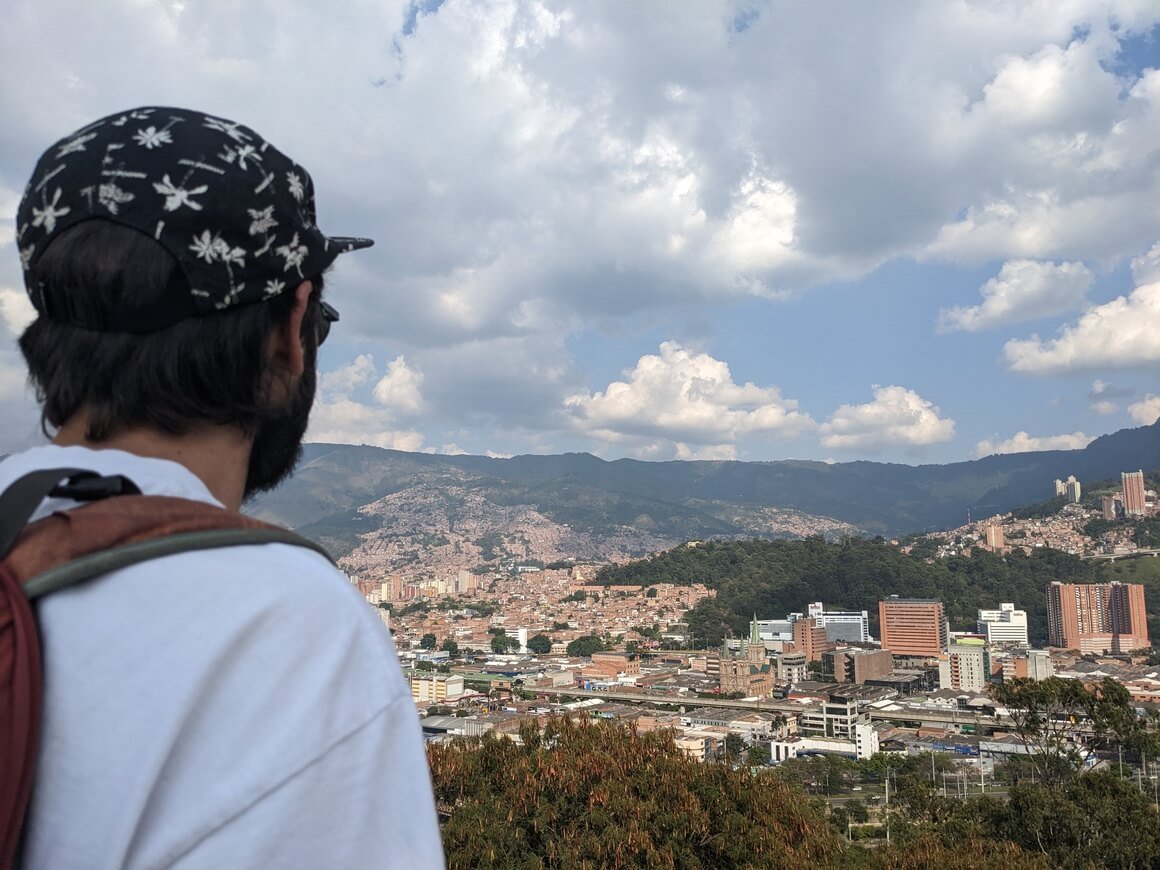
Is Colombia safe ? Perhaps your mum would love to know. Hell yes, it is !
As much as Colombianos are ready for the disassociation with Pablo Escobar, it’s hard not to mention the impact that he made on the country and the South American continent as a whole. But his reign of terror is over.
Modern-day Colombia couldn’t be more different from the days when narco-traffickers ruled the country. Visiting Medellín now vs 20 years ago is a COMPLETELY different experience. The Medellín of today is a great experience.
Colombia is for adventure junkies and nature lovers too. The northern terminus of the Andes Mountains ends here and you can take your treks into the deep jungle in Colombia’s National Parks .
What to Know Before Visiting Colombia
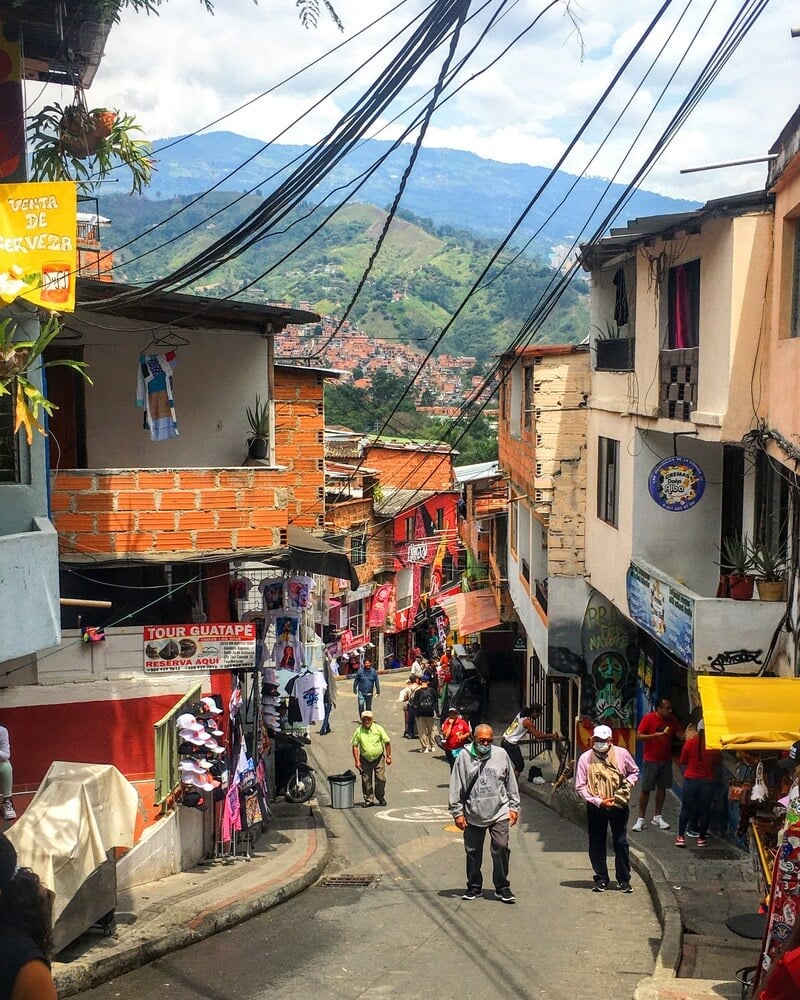
- Don’t miss out on… Carnival in Barranquilla. Most of the time, this industrial town is overlooked by travellers. But for one week of the year, this place goes NUTS.
- Keep an eye out for… how difficult the trek to Cuidad Perdida is. It’s long, treacherous, and hot as shit, but absolutely worth the effort in the end. The Lost City is one of the best places to visit in South America.
- The coolest hostel is… Viajero Santa Marta Hostel . Great location and has lazy and peaceful vibes. Amazing rooftop and activities to connect and meet other travelers.
- The best food is found in… the local restaurants. Look for the menu del dia to feel like you’ll never need to eat again.
Backpacking Ecuador
Ecuador might be small but it certainly packs a punch. I spent 3 months backpacking in Ecuador and could easily spend many more.
The diversity is incredible and it’s a great place to experience Andean Highland culture. The people who live in the Andes have a distinct and ancient culture rooted in mountain life. They even speak another language called Quechua . It’s a relatively safe country , and isn’t ruined by mass tourism.
In addition to staying in colonial cities like Quito , Ecuador’s natural landscape is the biggest draw. You can spend weeks or months exploring the coast before heading to the mountains and vice versa. Towering over the shore, volcanoes, waterfalls, and massive snow-capped mountains all make incredible trekking routes.
Surfing reigns supreme on the Ecuadorian coast. It attracts surfers from all over the globe. Even if you’re a beginner, it’s a great place to catch your first waves. Towns like Montañita and Canoa are famous surf beaches and party hotspots.
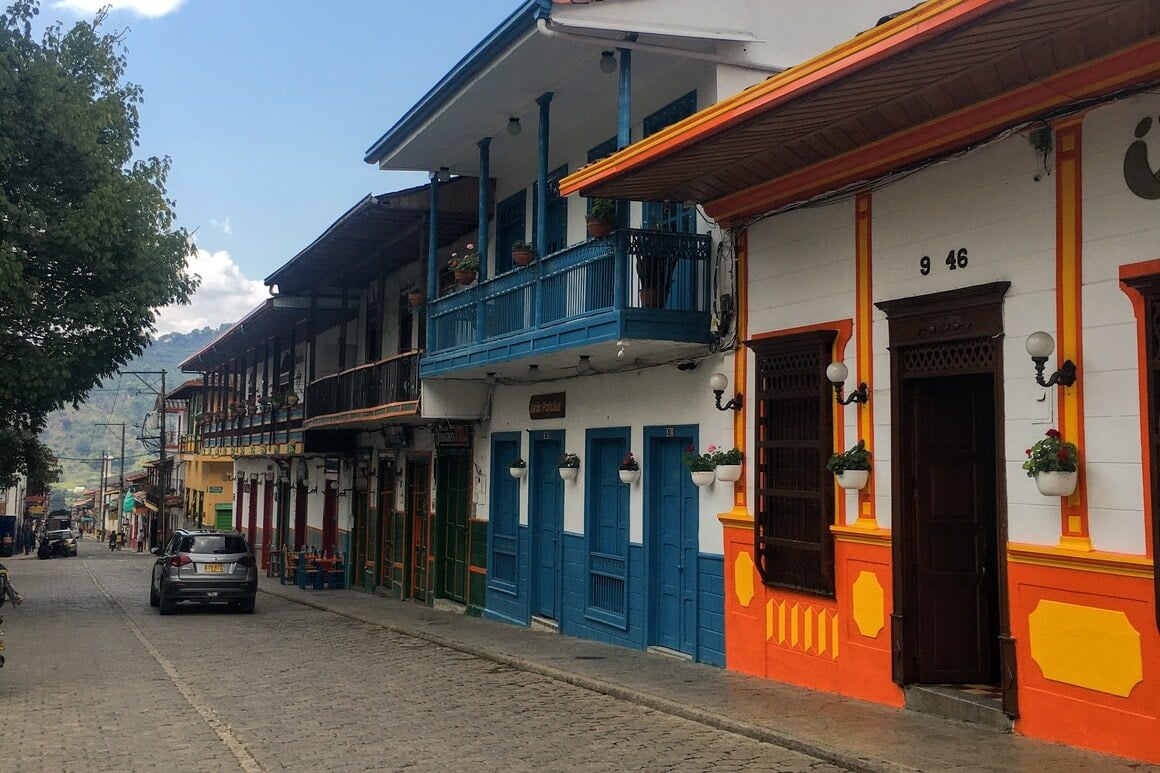
If you have some extra cash in your budget, you can visit The Galápagos Islands . But be warned – this is not a cheap endeavour, especially for excursions like diving (though it is AWESOME). So prepare yourself to shell out some cash!
Then there is the Amazon Basin of Ecuador. The Amazon region is what helps make Ecuador one of the most biologically diverse places on earth. The Amazon is best explored by boat with a local guide and is bound to be the adventure of a lifetime!
What to Know Before Visiting Ecuador
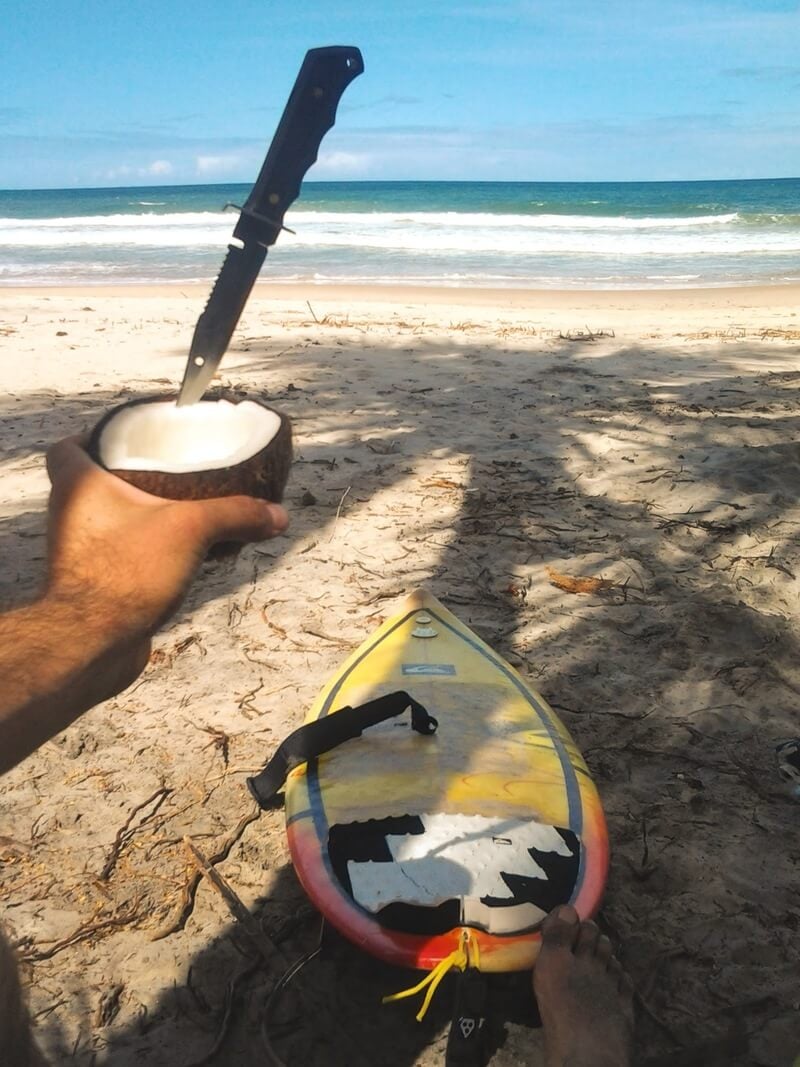
- Don’t miss out on… exploring the highlands and Cotopaxi National Park. Easily accessed from Quito and totally epic.
- You know what’s overrated … Montañita. It’s not all it use to be and is mostly catered to foreigners who want to get wasted and high. If you want real Ecuadorian culture, there are better places nearby.
- The coolest hostel is… Casa del Sol . Relaxed vibe at a few steps from the beach. Close enough to go party and far enough to have a good sleep. THE place for yoga and Surf.
- The best food is found in… the small almuerzo (lunch) cafes found across the country.
Backpacking Peru
Ah Peru. Backpacking Peru is the essence of travelling in South America. Though tourism has spiked in Peru in recent years, there is still plenty of magic to be found here.
The cost of backpacking Peru is a little higher than you might expect. Expect to pay between $30-40 USD a day whilst travelling here. (But more about the cost of backpacking South America later.)
Peru has a super long coastline dotted with prime surf beaches and scuba diving sites. In the Andes lies a whole other form of beauty.
I mean, who isn’t aware of Machu Picchu and hiking the Inca Trail ? Besides the obvious, there is much, much more to the Peruvian Andes than Machu Picchu. Although, you still have to go there!
Peru has some truly fascinating colonial cities as well, including Cuenca and Cuzco, which is the gateway city to Machu Picchu. The off-the-beaten-path potential in Peru is enormous.
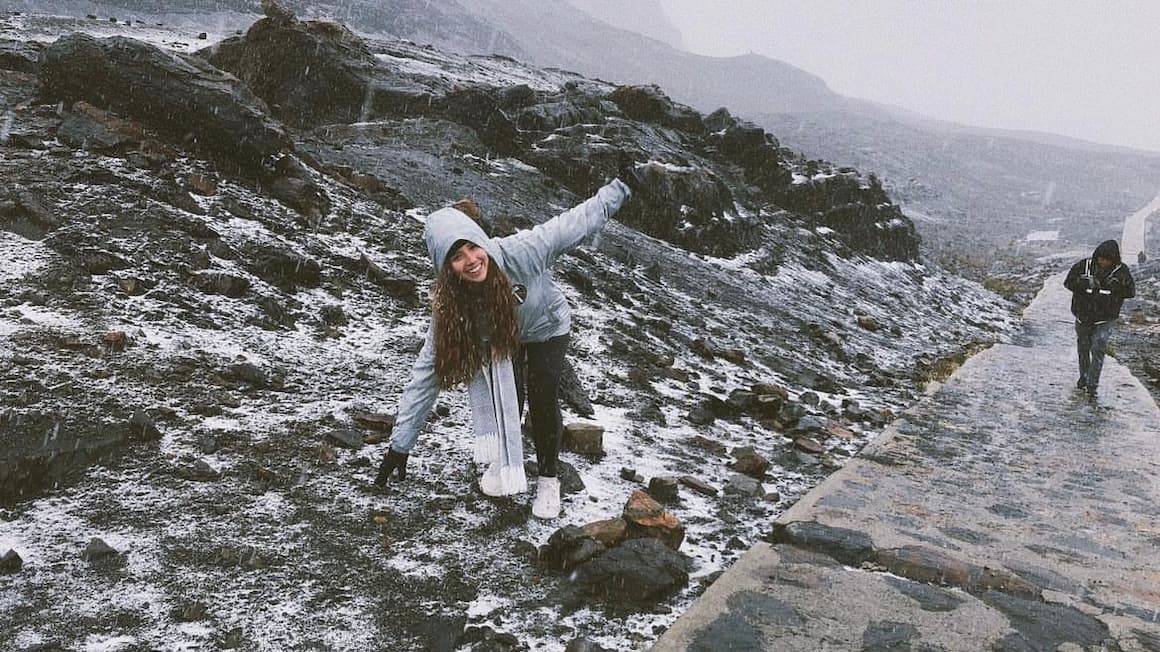
Check out the Rainbow Mountains to see nature at its most colourful. Hike the majestic Cordillera Huayhuash . Explore Colca Canyon and sleep out under a billion stars.
If you want a truly magical experience, there are many eco-lodges in Peru that are nestled in the best nature spots, from the Amazon jungle to the Andes mountain range.
Wherever you decide to travel in Peru, be sure that it will be a highlight of your South America backpacking adventure.
What to Know Before Visiting Peru
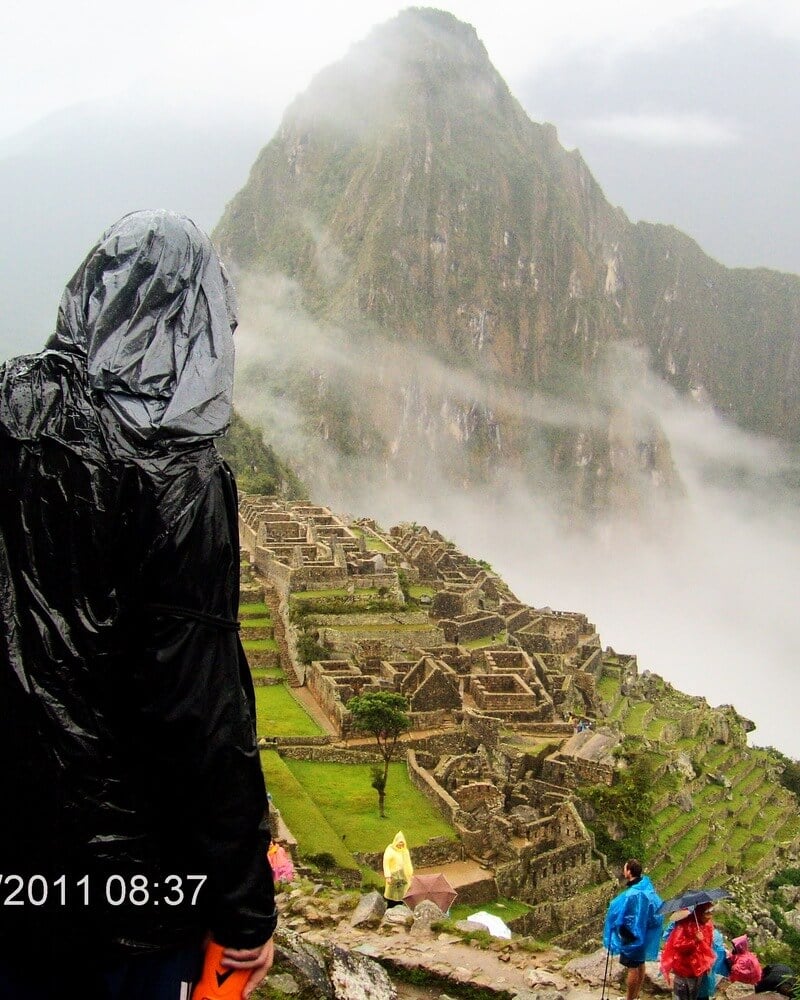
- Don’t miss out on… a motorcycle journey through the Sacred Valley outside Cuzco. It’s definitely worth staying in Cuzco a little longer for this.
- You know what’s overrated… the Inca Trail. Go for the less-trod Salkantay Trek to Machu Picchu instead.
- The coolest hostel is… Banana’s Adventure Hostel . In an unreal location (an oasis in a desert) this is a sociable and relaxed vibes hostel. With a great rooftop plus a lovely garden with hammocks, and an outdoor pool.
- The best food is found in… Lima. This city is full of cafes, local lunch spots, and street food vendors. The best are in Barranco and Miraflores. Pig out on ceviche !
Backpacking Bolivia
Backpacking in Bolivia offers up a glimpse of what South America was like 30 years ago. It’s a country looking to the future in many ways whilst still having one foot firmly rooted in the tradition of the past.
Expect super friendly locals, dramatic desert and mountain landscapes, and the kind of low prices which make the dirtbag within us very happy. You could easily get by on $20-25 a day here, and even less by roughing it a bit.
Bolivia is home to plenty of adrenaline-pumping activities including the Road of Death , which, in essence, is a road down through the mountains in which people ride bicycles to the bottom at top speed. The ride goes on for at least 30 kilometres and it is straight down. Can you guess why it’s called the Road of Death yet?
Aside from the high-risk adventure activities, Bolivia is safe for the most part as well.
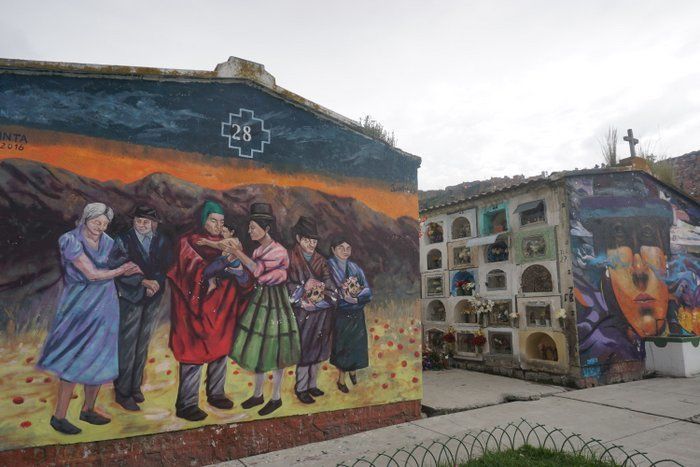
World-class trekking is abundant in the Bolivian Andes. If you love to hike, all the more reason to visit Bolivia. Bring along a good sleeping bag as temperatures can plummet at night.
La Paz has the best hostels (particularly for partiers) and is a cool city to base yourself in. Lake Titicaca is breathtaking, however, it has become far too touristy – I personally can’t deal with that many people taking selfies. I don’t blame the locals as they need to make a living. Just the way it has been done is unfortunate.
The Salt Flats are also cool AF. Okay, admittedly it’s pretty touristy too, but it’s still worth a visit.
What to Know Before Visiting Bolivia

- Don’t miss out on… the Salar de Uyuni. Yes, everyone who comes to Bolivia does this and, yes, it’s touristy. Regardless, it’s still in-fuckin-credible.
- Keep an eye out for… the altitude. Some people fly directly to La Paz from sea level and get sick almost immediately. At 3640 meters, La Paz is the highest major city in the world.
- The coolest hostel is… Wild Rover La Paz . A dynamic and festive hostel. The perfect place to start your Bolivian experience connecting with other travellers. Great location in the central area.
- The best food is found in… La Paz. This is the epicenter of Bolivia’s newly emerging food culture.
Backpacking Chile
There are no half measures while Backpacking Chile. From trekking through gorgeous glacial national parks to exploring the martian bone-dry Atacama desert , you’re all in for one hell of an experience.
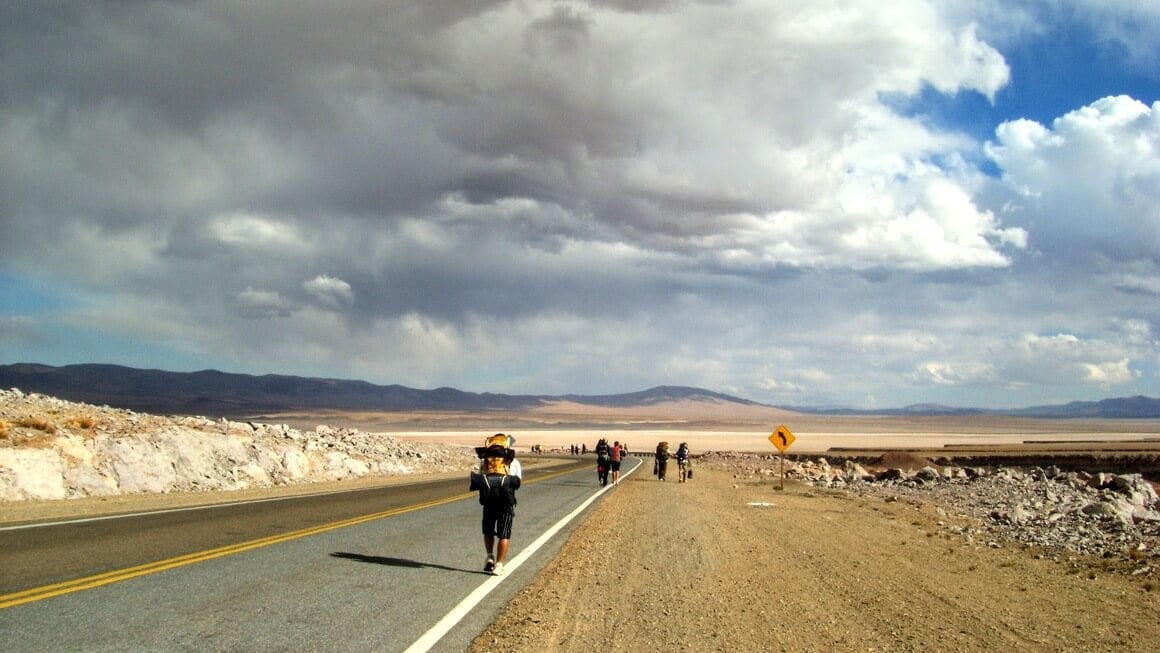
There are 36 National Parks in Chile ; all of them are beautiful and unique in their own way. Chile is also home to Easter Island , one of the most mysterious places on the planet.
Like Argentina, Chilean Patagonia is a paradise for trekkers and adventure types – though it does take some effort to reach the places you want to go trekking in. That said, the journey is well worth it; experiencing some of the planets last truly wild places is an indescribable feeling that you can only understand by doing it!
Most backpackers will start their backpacking journey in Santiago. But you can come to Chile from one of its borders in the South (as I did).
Oh yeah, one more thing: Chilean wine is cheap and it is damn good! Do you need more reasons?
What to Know Before Visiting Chile
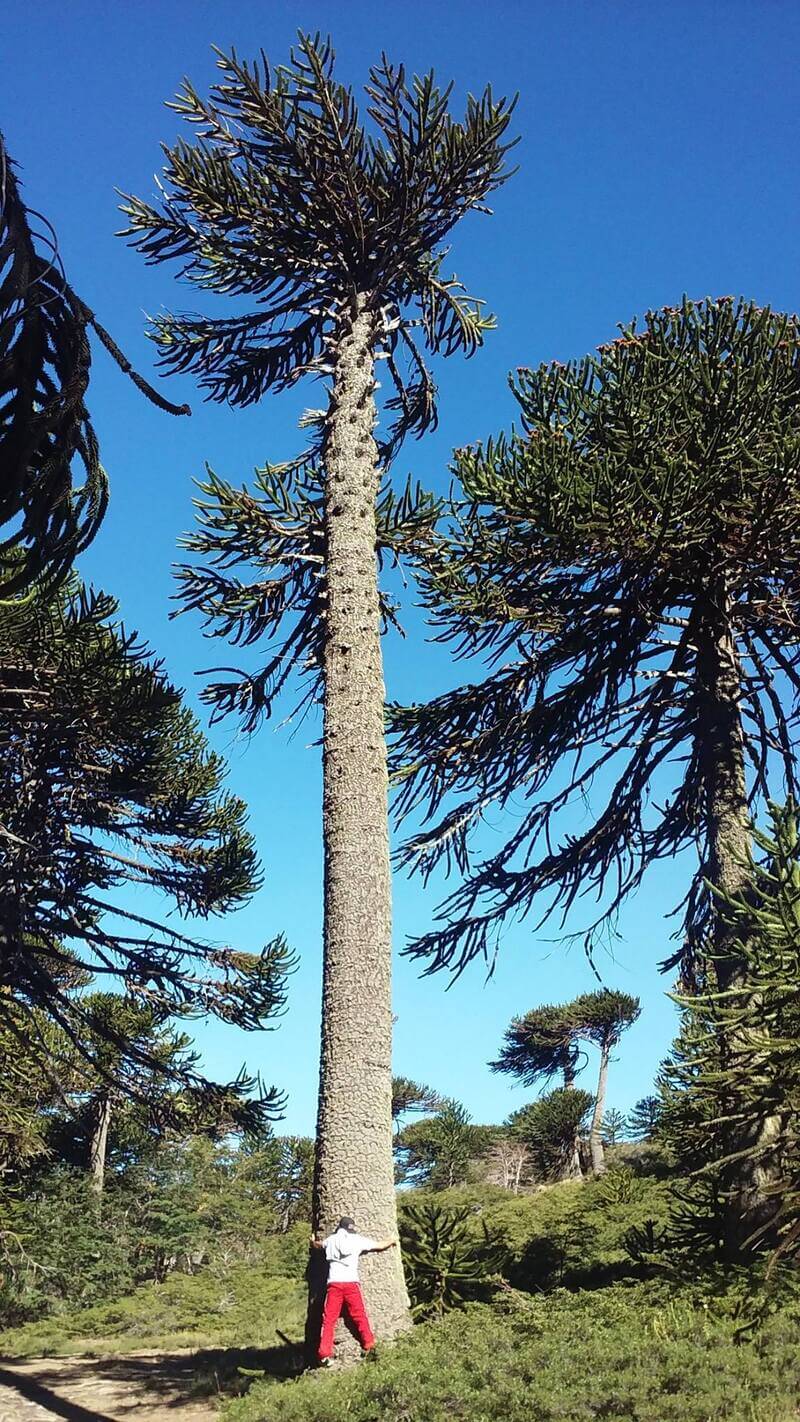
- Don’t miss out on… Patagonia, and not just the usual spots. Chilean Patagonia is vastly unexplored, especially the fjords. Look out for whales, dolphins, penguins, and elephant seals.
- Keep an eye out for… fire bans in Torres del Paine. A lot of nature has been threatened because of dickhead backpackers using gas burners, despite warnings.
- The coolest hostel is… MaPatagonia Hostel . Near a beautiful lake, this place has what you need. Kitchen facilities, a nice big garden, some cats, and a jacuzzi! There is also a fireplace for those cold nights.
- The best food is found in… Santiago. Staying in Santiago will unlock the most culinary options, including the cheap street food stalls.
Backpacking Argentina
Viva Argentina!
Backpacking Argentina is one for the ages. Welcome to the land of wine, excessive meat, football, tango, incredibly passionate people, and the final frontier – Patagonia.
Argentina is an immense country with very distinct regions. Eat to your heart’s content, party harder than you ever have before, and fall deeply in love.
You’ll probably land in Buenos Aires , arguably the cultural capital of all of South America.
Unquestionably, you’re going to find incredible hostels in Buenos Aires and reasons to stay. But don’t stay too long!
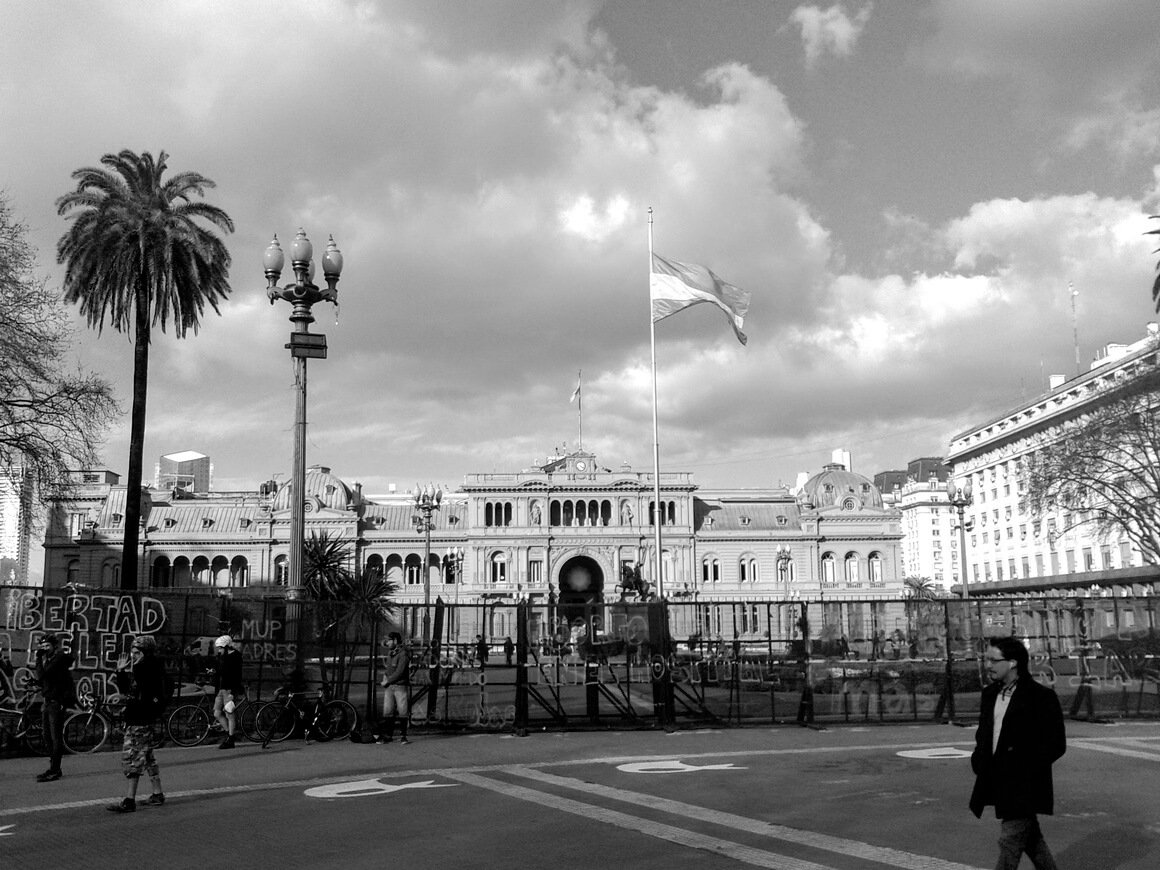
Rosario and Cordoba are cities like Buenos Aires but, in my opinion, better. They’re a perfect place to head to if you want to steer clear of the heavily populated capital. Mendoza is the wine region home to the “ best wine in the world ” (according to Argentinos).
Further south lies Patagonia : one of my favourite places on Earth, and home to many Argentinian National Parks . Patagonia is a truly expansive, desolate wilderness area where the weather is harsh and civilization is few and far between.
Trek mountains and glaciers, or sea kayak around them,. There, you could go days without seeing many (if any) backpackers! Now THAT’S the dream.
Staying at an Argentine mountain hut (refugio) is a wonderful experience not to be missed. Few who travel to Argentina manage to make it as far as Tierra del Fuego (the Land of Fire). Visit one of the most dramatic places in Argentina with its long summer days and epic arctic landscapes.
Speaking of the arctic, you can arrange trips to Antarctica from Ushuaia ! This would be the adventure of a lifetime but it’s by no means cheap.
What to Know Before Visiting Argentina

- Don’t miss out on… El Chaltén, which is the base for seeing some of the most dramatic peaks on Earth: Cerro Torre and Fitz Roy.
- You know what’s overrated… La Boca in Buenos Aires. These much-hyped multi-coloured houses are pretty rundown and actually quite dangerous, I strongly suggest you avoid it. The whole area feels like a tourist trap. There are much better things to do in Buenos Aires .
- The coolest hostel is… America del Sur Hostel (El Calafate). Cozy, super social, and with an insane view of the lake, the town, and beautiful sunsets. Great place to chill, and work (if you need to).
- The best food is found in… your neighbour’s personal asado . Nothing beats grilling grade-A Argentinian beef with some locals.
- The official exchange rate is NOT THE EXCHANGE RATE . Because of the fluctating exchange rate, many of the locals withdraw their cash by using what is referred to as a “blue dollar rate” from Western Union. This way gives you 50% more pesos than withdrawing pesos from an ATM or exchanging currency.
Backpacking Uruguay
Not many travellers end up backpacking in Uruguay. There are a few reasons why:
- It’s small
- It’s out of the way
- There’s not a ton to do
All of the above are true to some extent: Uruguay is not overflowing with adventurous activities or jaw-dropping sights. But let me tell you, they have some of the best quality of living in South America.
One of the perks about Uruguay is you don’t HAVE to do anything here. People are friendly and, compared to some chaos you find in other areas of the continent, it’s pretty chill. The beautiful coast is the perfect place to get away from the usual backpacking South America route and to avoid traveller’s burnout .
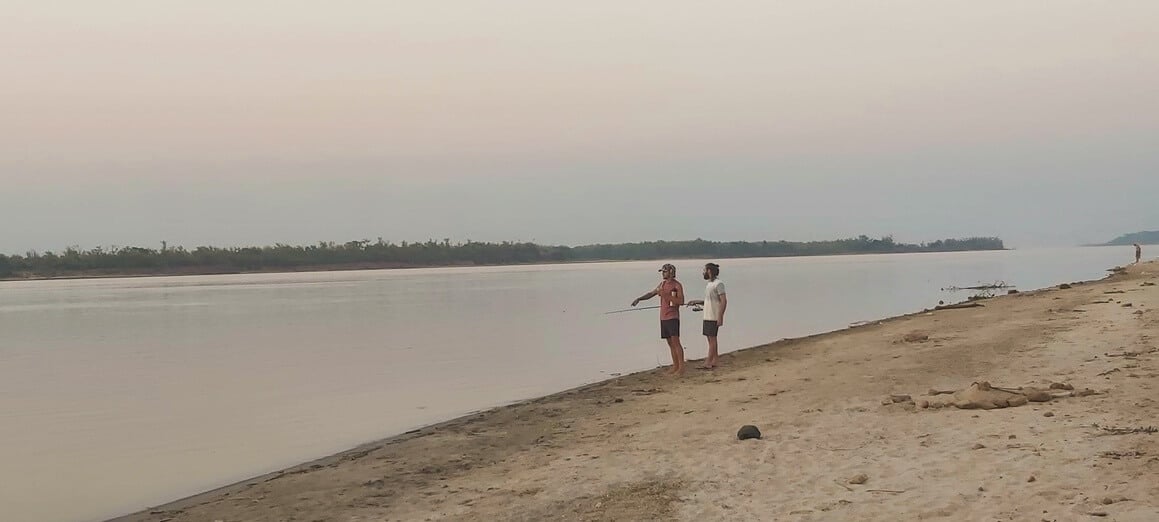
Outside of Montevideo , there are nice beach towns worth crashing at; Punta del Diablo is the quintessential lazy surfer town. Punta del Este is fun in the summer if you like partying. Colonia del Sacramento is an old colonial outpost and UNESCO heritage – although it is admittedly more of a day trip rather than a base.
Oh but here’s the kicker: weed is legalised. Yes, Uruguay is famous for allowing the smoking of the devil’s lettuce. And the quality of it is surprisingly good.
Lots of locals keep a weed garden on their balconies. Perhaps your hostel in Montevideo will have one?
Head to Uruguay if you want to chill out and do your own thing. It’s easy to travel to Brazil and Argentina from there too.
What to Know Before Visiting Uruguay
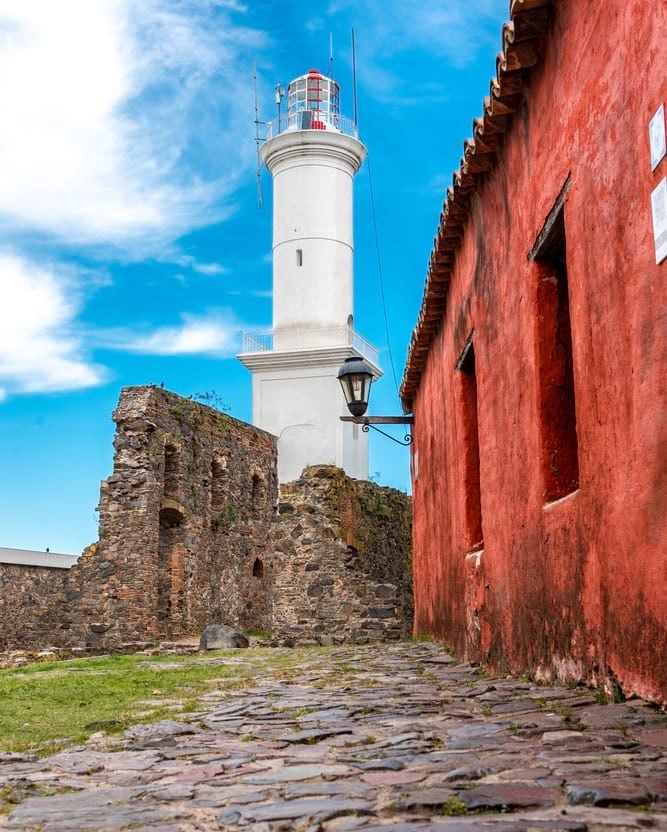
- Don’t miss out on… Punta del Diablo. This is laid-back surfer town evades most backpackers. It is arguably one of the best beach towns in South America.
- You know what’s overrated… Punta del Este. This place literally exists for the sake of Argentinians on holiday. In the off-season, it’s empty.
- The coolest hostel is… La Brújula Hostel . It’s near the beach, eco-friendly, has a family vibe, and is great to meet new people. This is a gem next to the sea.
- The best food is found in… Montevideo. Can’t beat a giant chivito after you’ve got the munchies!
Backpacking Venezuela
Venezuela is a truly incredible country. With towering mountains, steaming forests, endless beaches , and just enough danger to keep you on your toes, this country is every budding adventurer’s dream destination.
A Disclaimer on Visiting Venezuela
Unfortunately, due to the political situation in Venezuela , The Broke Backpacker absolutely does not condone visiting the country right now . It is simply not safe and it would be irresponsible to even attempt to Venezuela at present.
Unless you somehow have absolutely solid and trustworthy contacts on the ground , Venezuela is not the place to travel for the foreseeable future. We do not have any contacts to give out.
That being said, there are many team members at The Broke Backpacker that hold a special place for Venezuela in their hearts. For this reason, we are leaving this information available to you, our readers, as an homage to a country we love. We can’t wait for the day that it will be safe to visit again.
Backpacking Venezuela has a truly terrible reputation. Don’t get me wrong, travelling Venezuela has been dangerous in recent years: this is a country where you need to keep both eyes on your gear, watch who you’re with, and be on the lookout for iffy situations before they get the chance to rear their ugly head.
Backpacking in Venezuela is, in my opinion, one of the last great adventures out there. Plus it’s one of the cheapest countries in the world to backpack in.
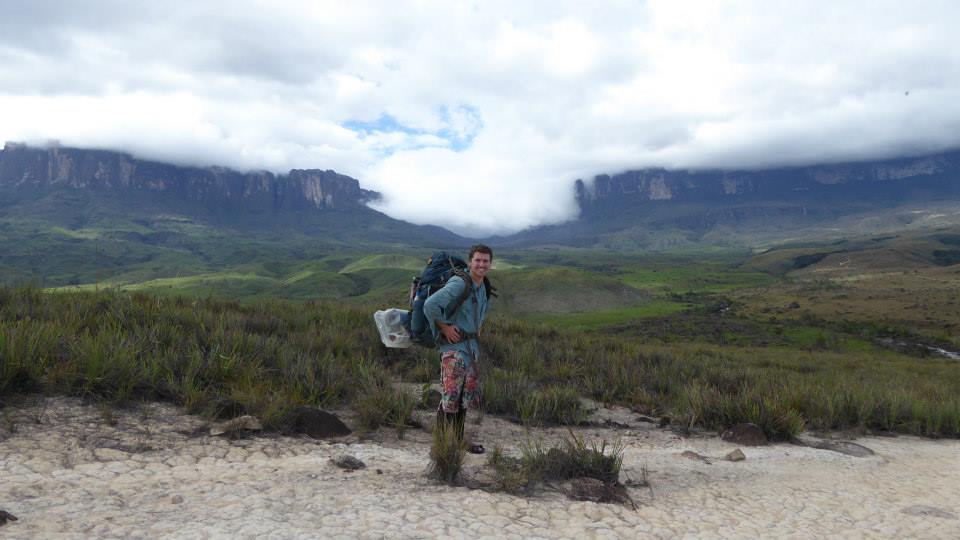
Venezuela is a mysterious country. It attracts adventurers looking for a raw adventure.
It’s a country yet to be polluted by heavy tourism with incredible landscapes of mountains, forests, lakes, and caves. It is a kind of Shangri-La for adventurers and extreme sports lovers.
A South American backpacking trip to Venezuela is getting into the wild. To feel like the old explorers, Venezuela will not disappoint you. But backpacking Venezuela is not for the faint-hearted: this is a veteran explorer country.
What to Know Before Visiting Venezuela
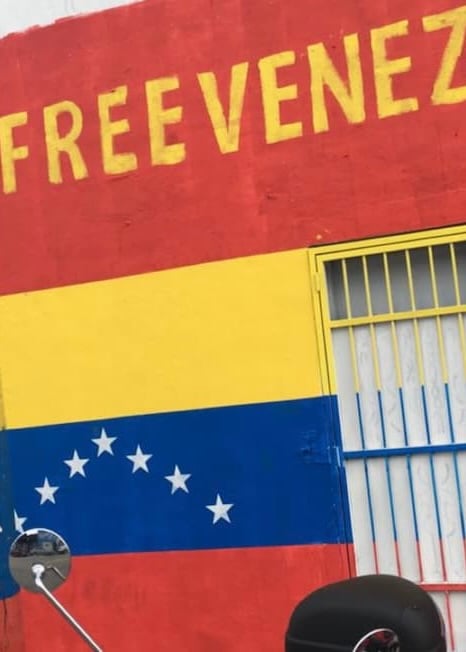
- Don’t miss out on… Mt. Roraima – the highest tabletop mountain in the world; an incredible place to explore. Sometimes you feel like you’re walking on an island in the sky.
- Keep an eye out for… the seasons when visiting Angel Falls. When it’s dry, the falls are actually quite weak (it’s more like a trickle).
- The coolest hostel is… El Sofá Caracas . Safe, quiet, cozy place in the big city. You’ll feel at home instantly. And they have a unique boat pool to chill when it gets too hot.
- The best food is found in… the buffet places where you pay by the weight of your plate. A little goes a long way here and you won’t be disappointed!
Getting Off the Beaten Path in South America
South America is totally full of wild places, tiny villages, far-flung settlements, lonesome valleys, sparsely inhabited jungle… Point being, there are plenty of great places to get off the beaten path . With a little motivation, you may well find yourself cutting your own path and writing your own backpacking destiny, one adventure at a time.
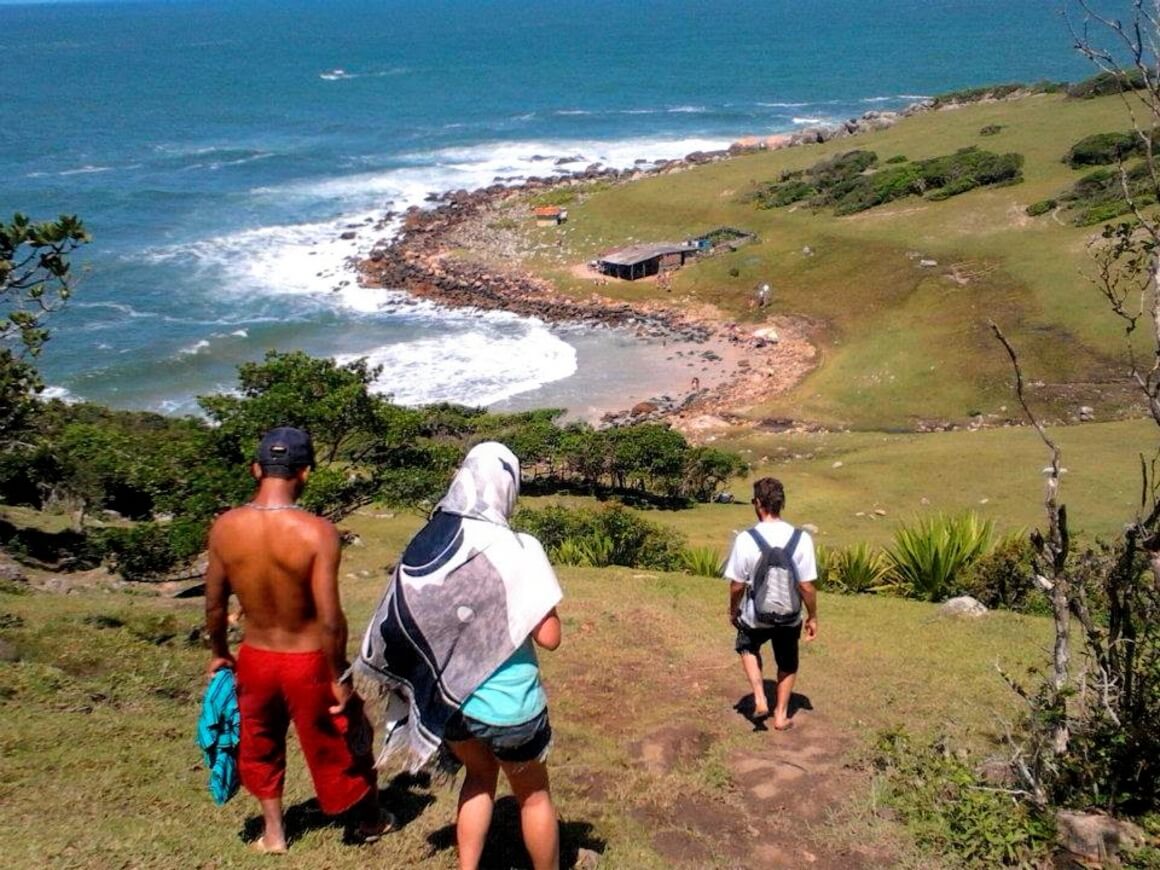
Explore the national park systems of South America as much as you can. Investigate the little interesting-looking food stalls where all the locals are queuing up.
Don’t rely on a guidebook of popular places. In South America, those tiny towns in the middle of nowhere are where the real culture is, and the real adventures. All you need is a bus ticket…

We’ve tested countless backpacks over the years, but there’s one that has always been the best and remains the best buy for adventurers: the broke backpacker-approved Osprey Aether and Ariel series.
Want more deetz on why these packs are so damn perfect? Then read our comprehensive review for the inside scoop!
You can make your South America backpacking route totally unique. No matter what things you get up to, they’re going to leave a big print on your heart. But here are some things I definitely recommend considering planning for your itinerary .
1. Explore Patagonia
Patagonia is still one of the last untouched wildernesses on the planet. Not everyone gets to experience this in their lifetime! In addition to the usual superlative locations, like Cerro Torre and Torres del Paine, there are heaps to discover off-trail.
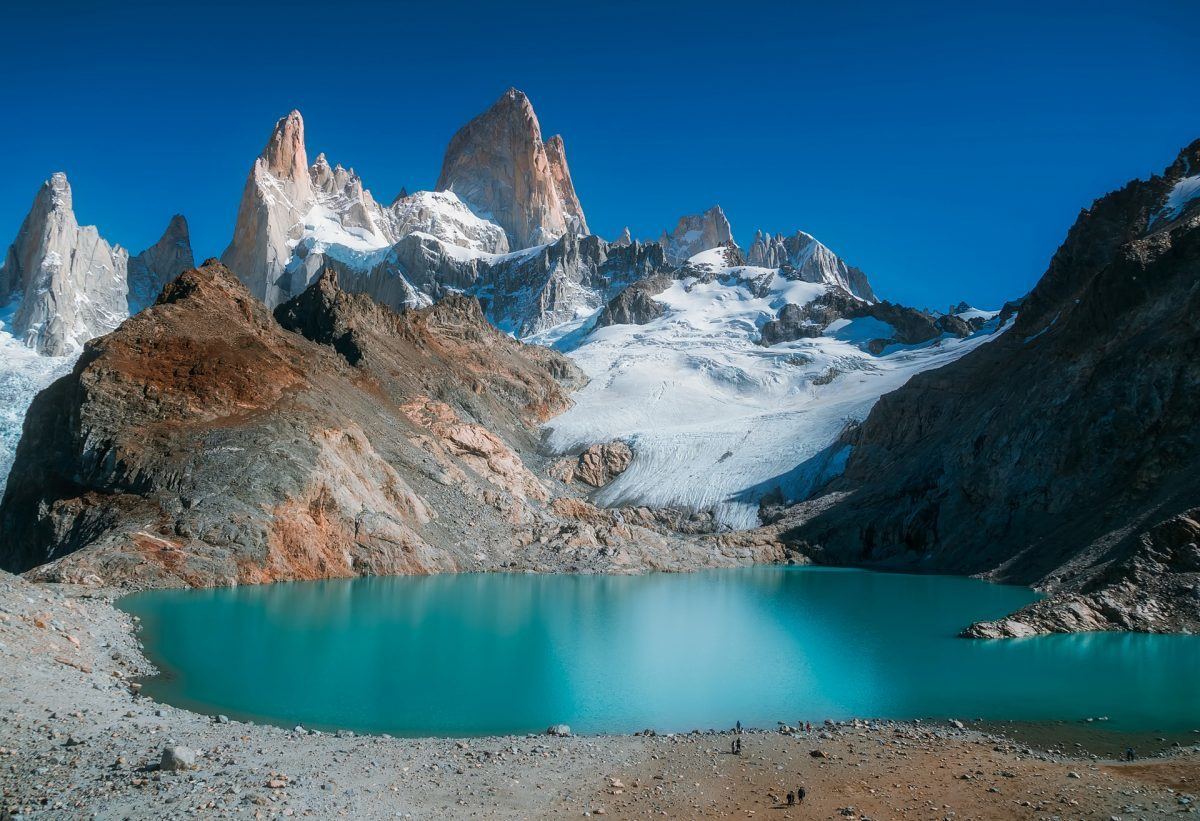
2. Party hard at Carnival
It’s the biggest party on the planet! Grab yo’ body paint, yo’ finest feathers, whatever else you can get your hands on, and join the festivities!
You won’t ever forget the time you spent Carnival in South America. The carnivals in Bahia, Rio, and Barranquilla are particularly good.
3. Explore the Salts Flats of Uyuni
It’s one of the most unique places on the planet and a highlight of any South America backpacking trip. Get ready to be wowed by this alien landscape.
I know broke backpackers usually cringe hard at the idea of an organised tour (because I’m one of them) but the Salt Flats is one that’s really worth shelling out for.
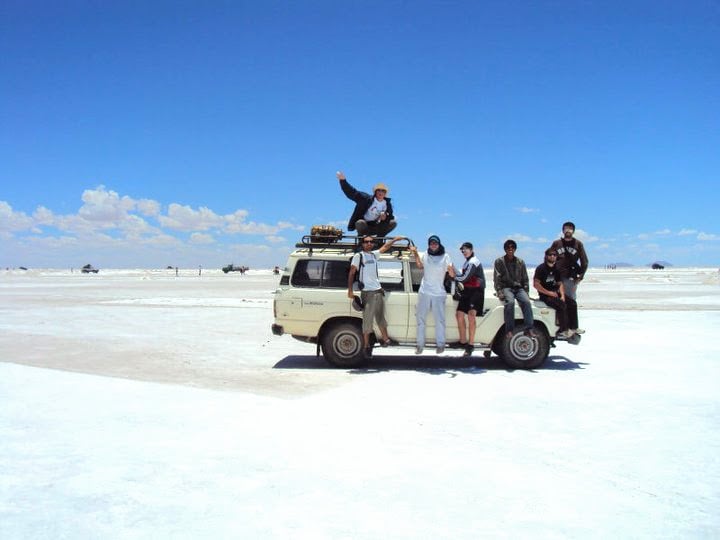
4. Find your own secret beaches
It wouldn’t be a proper backpacking South America itinerary without some beach time! Every kind of beach imaginable is found on the continent.
From tropical slices in Brazil to surfer’s paradises in Ecuador to even fjords in Chile, you won’t be lacking in choices. There are plenty of them secret spots that make those magical days. Take a beer, bring your mates, get busy.
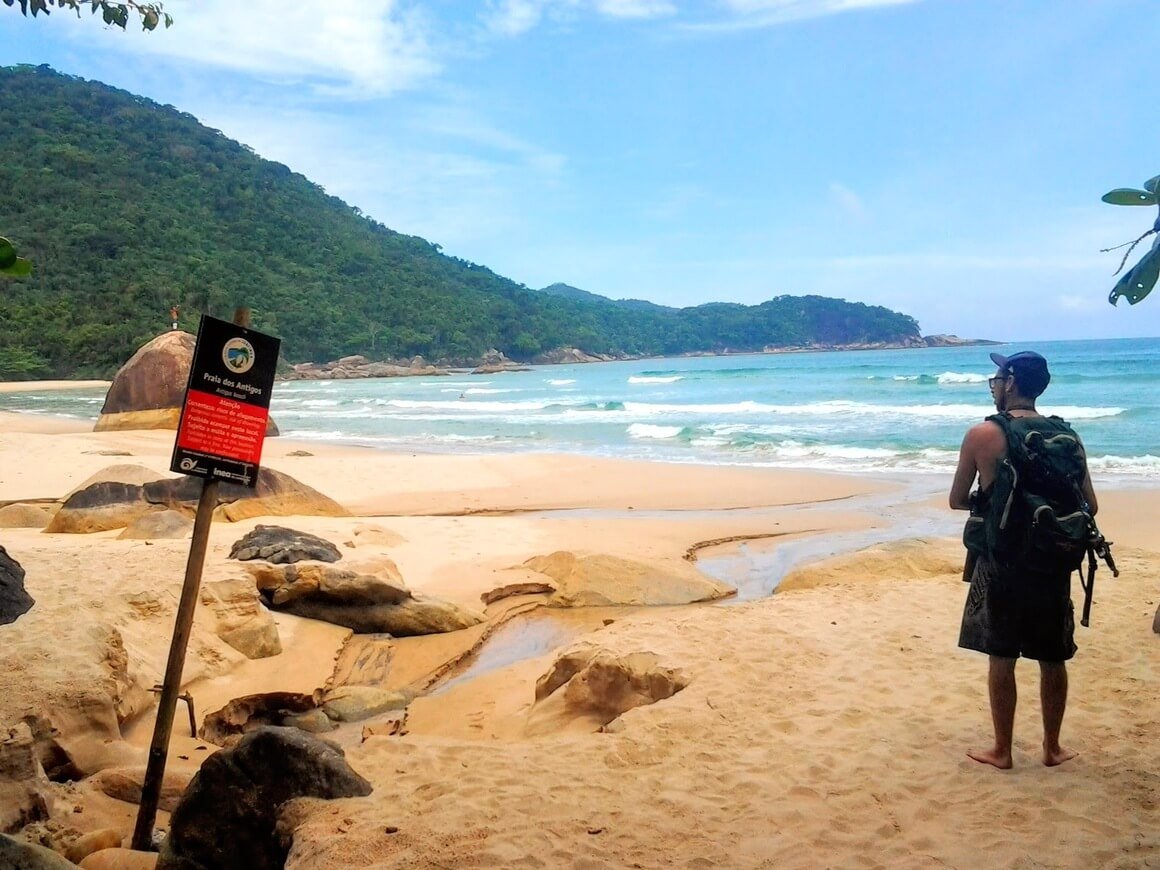
5. Check out Medellín
Medellín is one of the most popular cities to visit in South America right now. The choice between Medellín or Bogota has never been easier.
It’s fun, safe, comfortable, and (most impressively) completely different than it was before. Medellín has shed its violent past and is ready to host the next wave of backpackers.
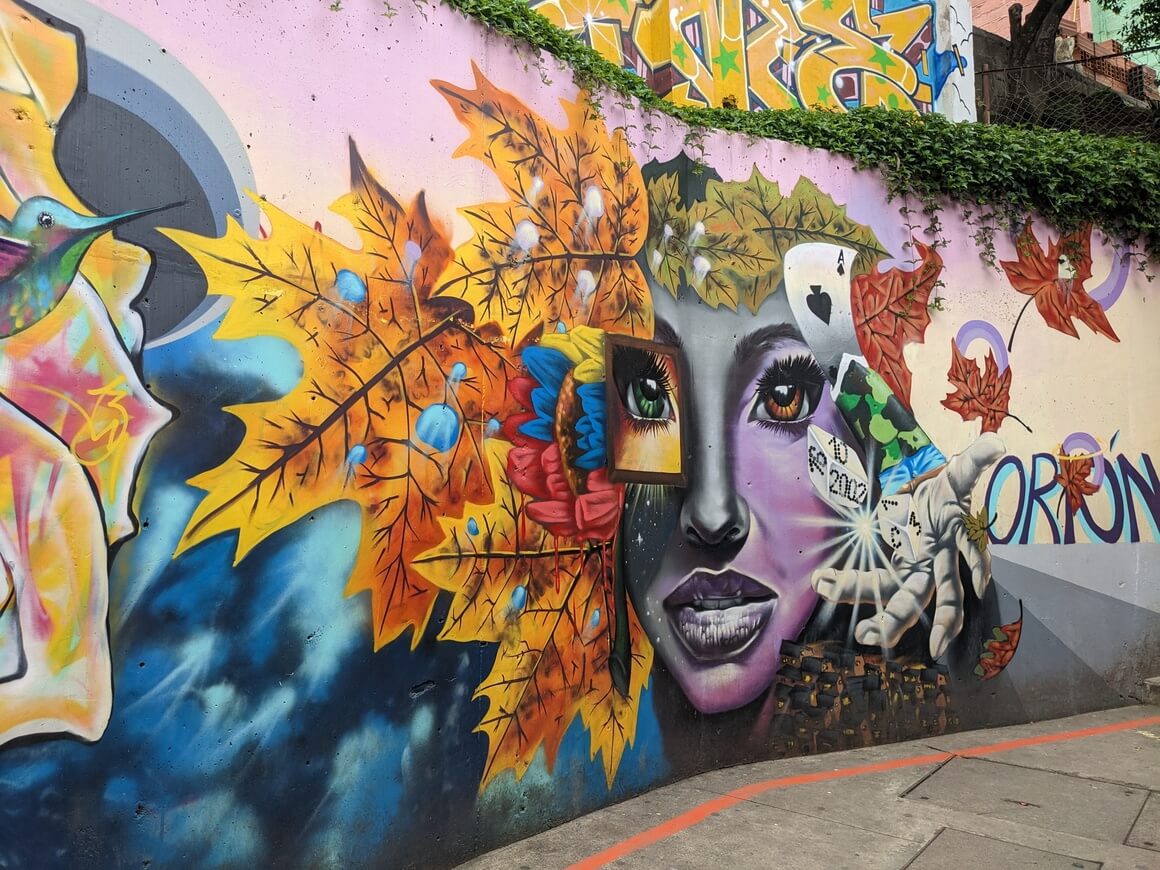
6. Visit Machu Picchu
I mean, you’re reading a backpacking South America guide: I know you already know about this one. It is the place that attracts most people to visit South America… but I’d be lying if I said it wasn’t worth visiting.
You can hike the Inca Trail like everyone else. But if you want to visit Machu Picchu in an alternative way, try one of the other Inca trails like Salkantay Trek.
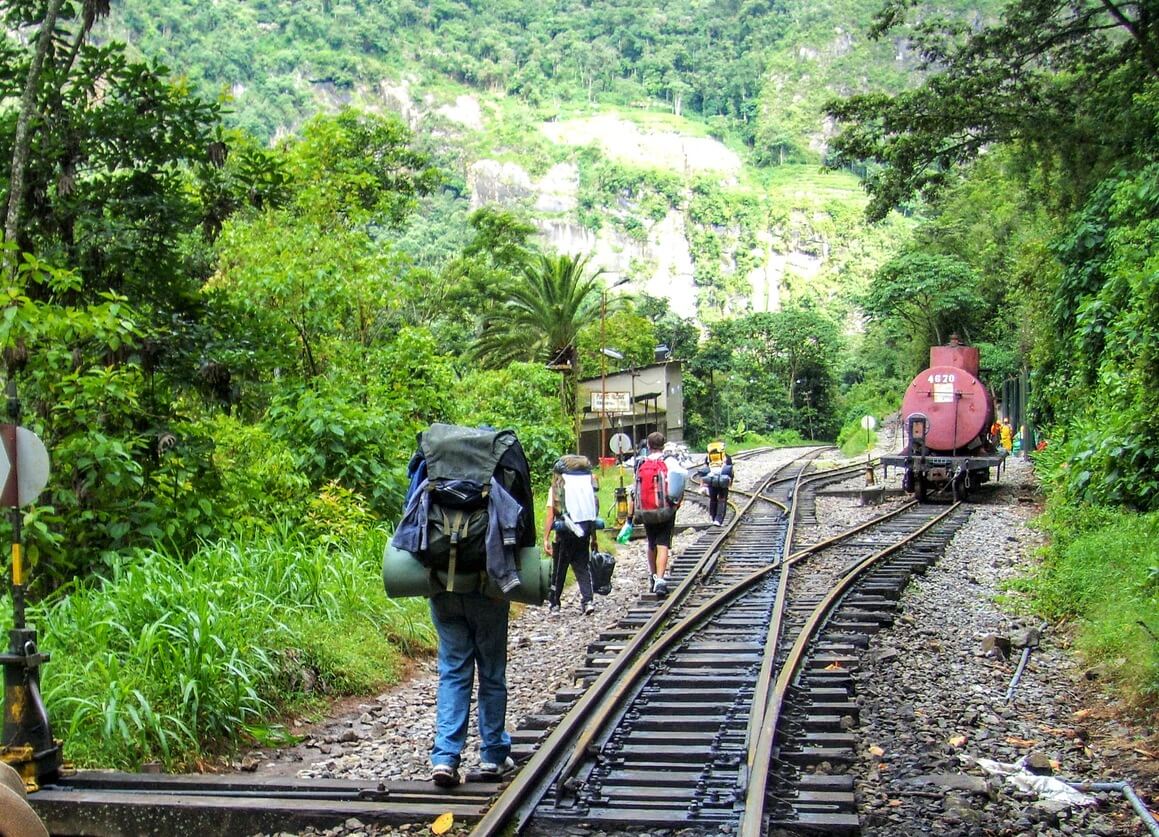
7. Hike in the Andes
The Andes are one of the greatest mountain chains in the world, known mostly for hosting the aforementioned Machu Picchu and the gargantuan Aconcagua. But there is more to these mountains than just these popular destinations: the highlands of Ecuador, Cordillera Huayhush in Peru, the Cordillera Real in Bolivia are all stunning. Even Colombia gets a slice of the pie at Cocuy National Park.
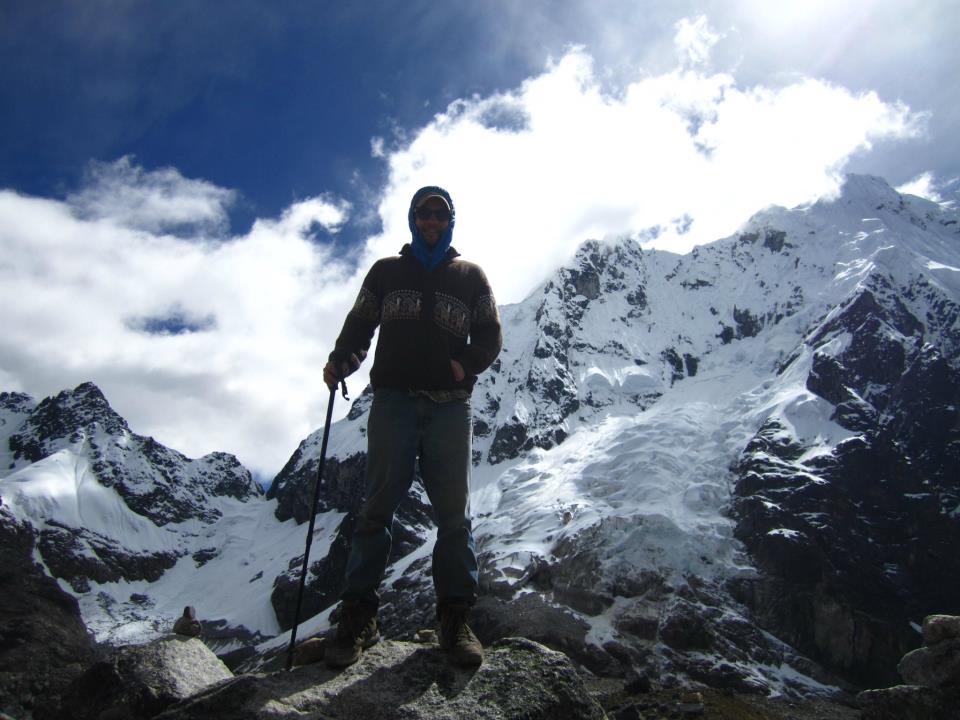
8. A South American
Hey, most backpackers will vouch for love and sex on the road being something memorable to take part in…
They love, and they love passionately. And the sex… well, maybe you’ll find out.
9. Get “stuck” somewhere
South America is full of sticky places AKA places where you get stuck for months on end. Florianópolis, La Paz, Medellín, Mancora… All of these locations start off as a simple stop on your South America backpacking route but turn into temporary homes.
Don’t fight it! Find your sticky place and stay awhile.

Wanna know how to pack like a pro? Well for a start you need the right gear….
These are packing cubes for the globetrotters and compression sacks for the real adventurers – these babies are a traveller’s best kept secret. They organise yo’ packing and minimise volume too so you can pack MORE.
Or, y’know… you can stick to just chucking it all in your backpack…
South America has a wide range of budget accommodation options for backpackers. Airbnbs are fantastic for private rooms if you’re travelling as a couple or as a group.
For solo travellers, when you are not passing the night from the comfort of your tent in the Andes or with a Couchsurfing host , you’ll likely be booking hostels.
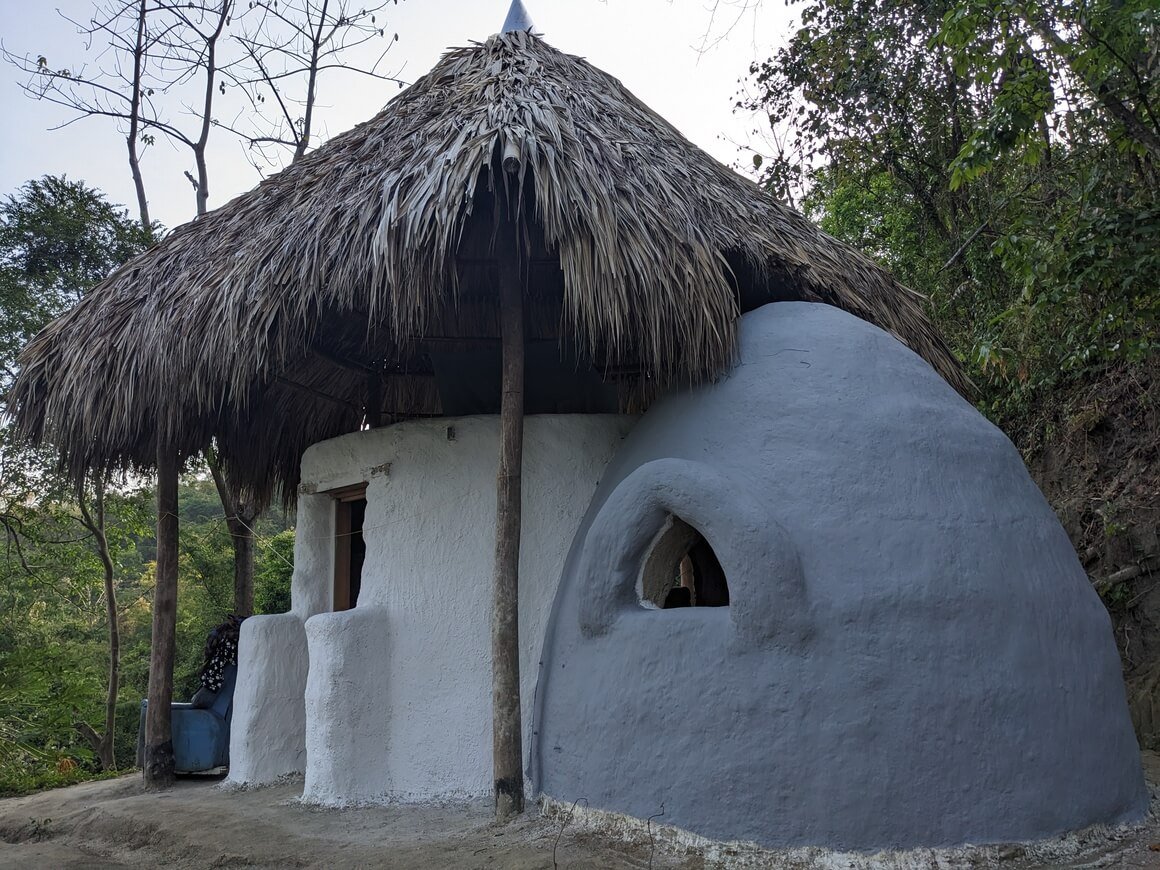
Whether you just need a place to lay your head or a spot to meet fellow backpackers like yourself, hostel life is clearly where it’s at… In fact, I love South American hostels, even travelling with my partner, you get perks in a hostel that you don’t get in a hotel or Airbnb.
I’ve had some of the best nights of my life in them and met some of the best people in my life. The South American countries are home to some of the best hostels in the world .
- Best Hostels in Sao Paulo
- Best Hostels in Cusco
- Best Hostels in Cartagena
- Best Hostels in Mendoza
- Best Hostels in Lima
- Best Hostels in Medellin
- Best Hostels in Quito
- Best Hostels in Salvador de Bahia
- Best Hostels in Santiago
- Best Hostels in Valparaiso
Insider tip: If you want to see all your hostel options to visitbackp South America, Booking.com is the perfect one-stop-shop to book hostels. You can even filter your personal travel needs to find the perfect place for you.
It is the common belief that backpacking in South America is dirt cheap. In some places this is true, but it doesn’t go for the entire continent.
But fear not! Travelling South America on a budget can definitely be done.
Due to the nature of Patagonia being one of the most remote areas on earth, expect higher travel costs than the rest of South America. Peru also takes some navigating in order to travel on a tight budget.
Brazil is one of the most expensive countries in South America. The cost of living in Brazil is higher and it is notorious for jacking up accommodation prices during the high season.
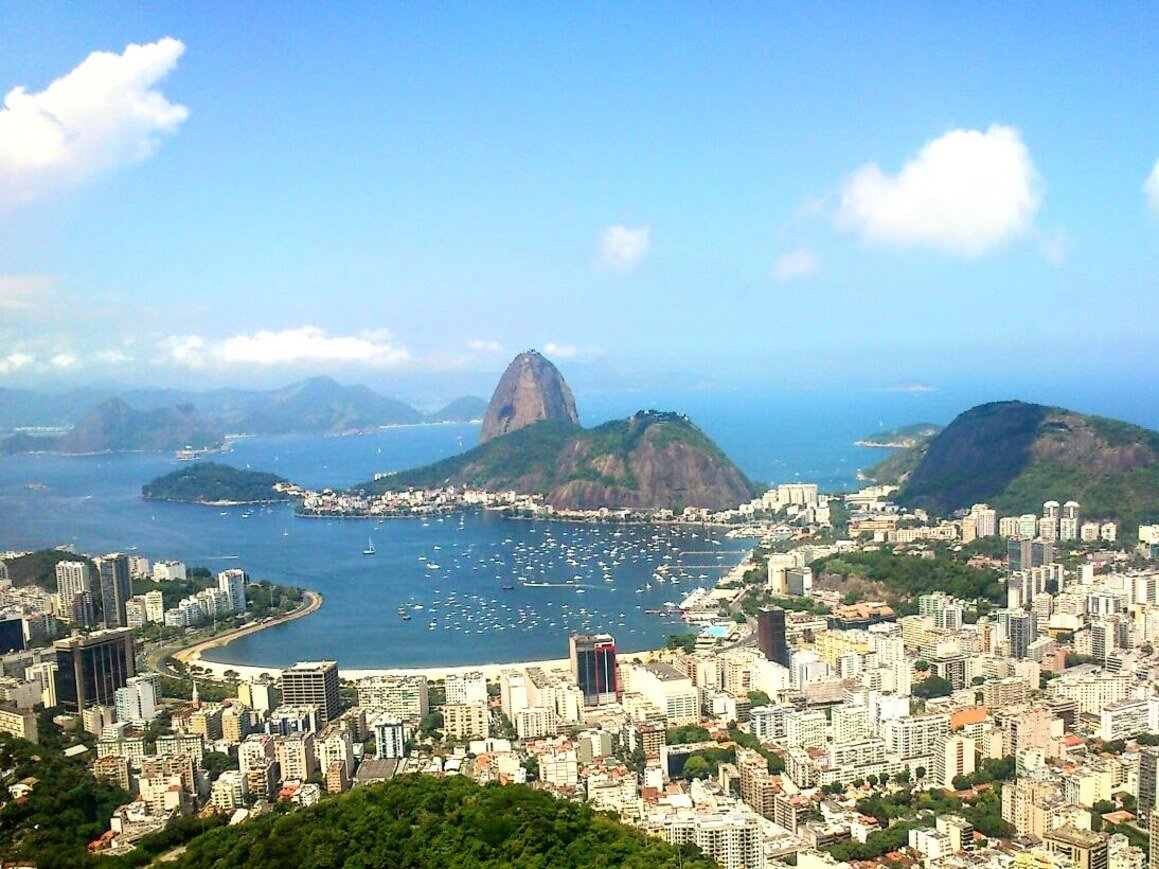
With a few travel tips up your sleeve, you will save a ton of money and have the time of your life. Bring your haggle game whilst backpacking through Latin America to ensure you get the best possible price for things, including accommodation. South Americans love smooth talkers so keep it playful but don’t get too cheeky.
Taking long-distance buses, buying beer and drugs, paying entrance fees to national parks… these things add up fast. But sometimes you have to shell out the dough in order to do the things you want. Overnight buses are a good way to save some money.
Remember to always leave a little extra wiggle room in your budget so you can go scuba diving or go on a trek that you have been dreaming about!
Daily Budgets for South America
Here is a breakdown of what you can expect to pay on a daily basis on a backpacking South America trip…
Travel Tips for Broke Backpackers in South America
Hey, all those dollaridoodles add up to more fun times. So saving whatever you can on your journey means you can be on the journey… for longer. So here are a few budget travel tips for South America :
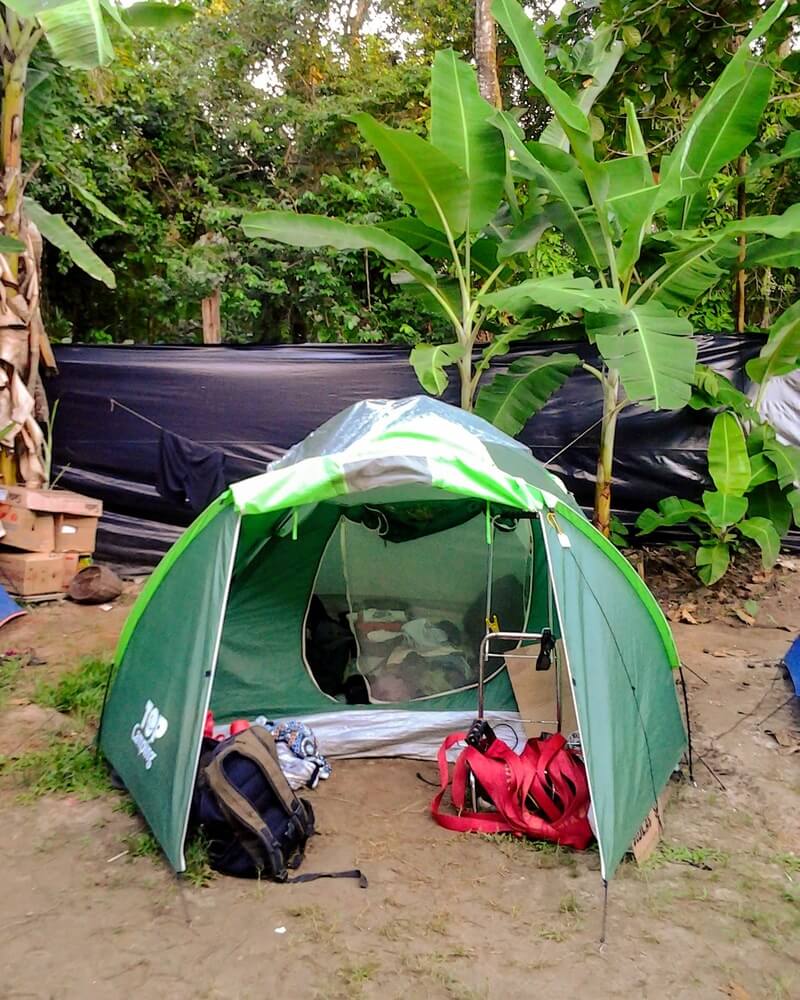
- Camp : With plenty of untouched beaches, forests, stunning countryside, and far-flung jungle, South America is a great place to carry a good backpacking tent . Camping saves you money and can help you get off of the beaten path.
- Cook your own food: Travel with a portable backpacking stove and cook your own food to save some serious cash whilst backpacking across South America. If you plan to do some overnight hiking trips or camping on the beach, having a backpacking stove will be a great asset.
- Haggle: Haggle as much as you can. You can always get a better price for things, especially while in local markets. Learning Spanish will go a long way!
- Couchsurf: South Americans are awesome. Get to know some! Check out Couchsurfing to make some real friendships and see the real continent. When using Couchsurfing, be sure to send personalized messages to your potential host. A generic copy-and-paste message is much more likely to get turned down. Make yourself stand out.
- Hitchhike: Although some countries are friendlier than others, hitchhiking across South America is common practice, so you won’t struggle too much to find a ride. Speaking at least a little Spanish will go a long way though. You want to explain exactly what you’re doing and where you want to go.
Why Should You Travel to South America with a Water Bottle?
Plastic washes up on even the most pristine places… So do your part and keep the Big Blue beautiful!
You aren’t going to save the world overnight, but together we CAN make a difference. I hope you become more inspired to continue being a responsible traveller .
Plus, now you won’t be buying overpriced bottles of water either! Travel with a filtered water bottle instead and never waste a cent nor a turtle’s life again.

Drink water from ANYWHERE. The Grayl Geopress is the worlds leading filtered water bottle protecting you from all manner of waterborne nasties.
Single-use plastic bottles are a MASSIVE threat to marine life. Be a part of the solution and travel with a filter water bottle. Save money and the environment!
We’ve tested the Geopress rigorously from the icy heights of Pakistan to the tropical jungles of Bali, and can confirm: it’s the best water bottle you’ll ever buy!
You know by now that we are talking about an enormous amount of land with regards to the South American continent. Countries in South America near the Equator do not experience distinct seasons. As you start to head south you will find the seasons to be the opposite of what they are in the Northern Hemisphere i.e. winter in June.
Patagonia experiences bitterly cold and windy winters. I do not advise travelling there during the winter unless you are a serious mountaineer and have all the right gear.
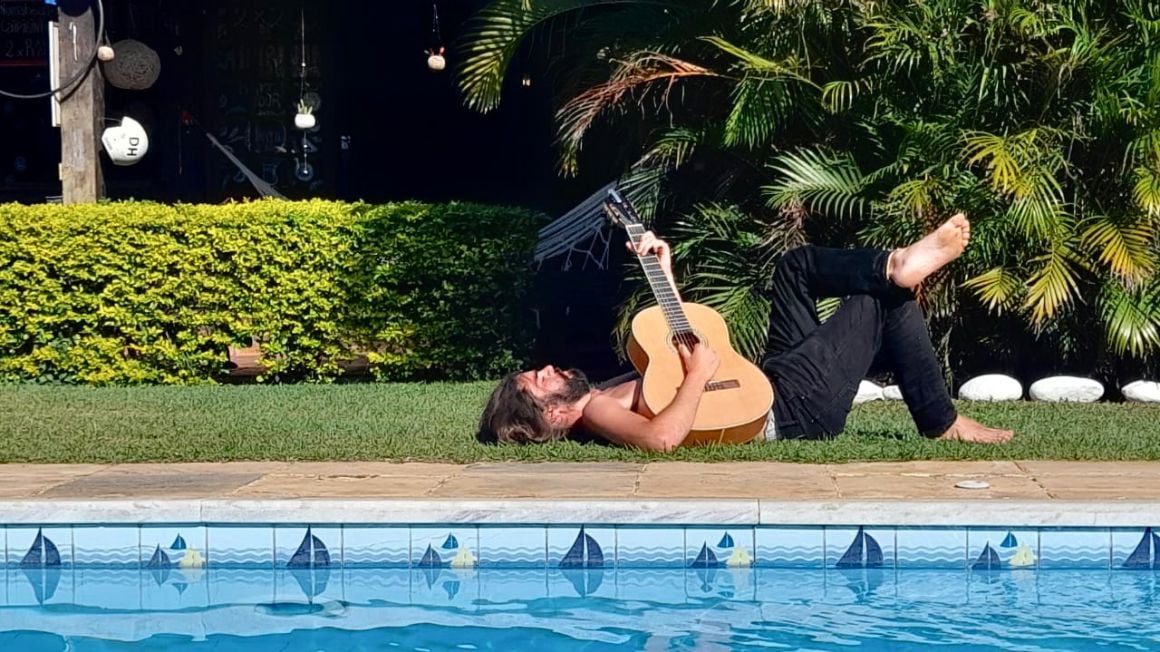
Dry season depends on the country. Generally, the cooler months from June to September are the driest in the coastal areas. In the Amazon – given that it is the world’s biggest rainforest – is wet pretty much all year. The Andes are the driest from April – November.
High season for all countries is, without a doubt, from December – February. This is due to holidays occurring over that time and it is also the time when many gringos and locals alike take their holidays. Backpacking in the low or shoulder seasons will definitely make for a cheaper trip, especially with regards to accommodation.
Best Time to Visit – Country Breakdown
Here are the best times to visit South America broken down by country!
Best Months to Travel: September – April
What’s the climate in Brazil like?
In the south, the hot, wet summer season runs from November – March. In the north, the rainy season is from April – August. In the Amazon, it rains pretty much all year.
If you want to visit during the festival season though, September-March is best.
Best Months to Travel: November – March
What’s the climate in Colombia like?
Generally speaking, travellers should visit Cartagena and the Caribbean coast between November and March when the weather is dry. The rest of the country is good year-round. Bogota, Cali, and Medellin are always pleasant weather-wise.
Best Months to Travel: March – May, September – November
What’s the climate in Ecuador and Peru like?
Lots and lots of micro-climates in the Ecuador Peru region. But there are some general trends:
- The highlands/Andes are dry from May – September. These are the best months for hiking and visiting Machu Picchu.
- The coast is warm and dry from December – May. This is the best time for the Galápagos.
- The Amazon is always wet and humid as shit.
- The south of Peru is much drier than the north, and Ecuador for that matter.
You’ll need to plan your trip carefully around what you want to see and do.
Best Months to Travel: May – October
What’s the climate in Bolivia like?
The winter season (May – October) is also its dry season, and the best time to visit Bolivia. This means that nights can be very cold, especially when you’re at higher altitudes. Although Bolivia is generally drier than its neighbours, it stills gets dumped on in the wet, summer season.
Best Months to Travel: March – April, October – November
What’s the climate in Chile like?
Summers in Chile are generally the high season. That being said, this may not be the best time to visit. Prices are at their highest, the Atacama Desert is a furnace, and the winds are VERY strong in Patagonia.
Like almost anywhere, the shoulder months (October – November & March – April) are better.
Best Months to Travel: October – April.
What’s the climate in Argentina and Uruguay like?
Summer for most of the country is from December – February. In the north, the summers can see rain and temperatures that soar to almost unbearable. In the south and Patagonia, summers are dry(ish) and pleasant.
The winters, obviously, are extremely cold in the south. Whereas the north generally has pretty mild winters.
What to Pack for South America
Travelling through South America is a lot easier if you have the right gear. A thorough backpacking South America packing list goes a long way – literally.
On every adventure, there are 6 things I never go travelling without:

Snoring dorm-mates can ruin your nights rest and seriously damage the hostel experience. This is why I always travel with a pack of decent ear plugs.

Hanging Laundry Bag
Trust us, this is an absolute game changer. Super compact, a hanging mesh laundry bag stops your dirty clothes from stinking, you don’t know how much you need one of these… so just get it, thank us later.

Sea To Summit Micro Towel
Hostel towels are scummy and take forever to dry. Microfibre towels dry quickly, are compact, lightweight, and can be used as a blanket or yoga mat if need be.

Monopoly Deal
Forget about Poker! Monopoly Deal is the single best travel card game that we have ever played. Works with 2-5 players and guarantees happy days.

Grayl Geopress Water Bottle
Always travel with a water bottle! They save you money and reduce your plastic footprint on our planet. The Grayl Geopress acts as a purifier AND temperature regulator. Boom!
South America IS a safe place to go backpacking. Is backpacking in South America safe all the time?
Hell no. But nowhere in the world is safe 100% of the time. Does that mean we let it stop us?
Hell no.
In recent years, security in South America is increasing. Using the common sense safety rules of backpacking is usually enough here.
The thing with South America is understanding your surroundings and self-awareness. Coordinating your safety in Rio de Janeiro is completely different than hiking the Inca Trail.
Robberies are rare and could happen to anyone – in any country. Sometimes people in desperate circumstances are forced to do bad things. They see a foreigner and they see a chance to temporarily relieve the stress of their situation.
Odds are, you should be just fine. If ever you run into a hold-up situation just give them what they want.
Your iPhone and wallet aren’t worth dying over, ever! But it’s worth hiding your money well just in case .
Political wobbles are pretty common. Due to the political situation in Venezuela right now, this is probably the most dangerous country in Latin America. I hate to say it but the situation is what it is.
In general, being out late, drunk, and/or alone is a recipe for trouble. Always take a taxi home at night, even in a group.
Do know which neighbourhoods you should avoid too, especially in major cities – even during the daytime. Ask the locals which these are. There’s no real reason to head into these areas anyway, but it’s worth noting so you don’t stumble into the wrong places.
- Is Peru Safe?
- Is Argentina Safe?
- Is Chile Safe?
- Is Brazil Safe?
Sex, Drugs, and Rock n’ Roll in South America
South Americans love to party! They start the party late and they don’t stop until the sun is way up.
Of course, Brazil is very famous for Carnival AKA the biggest party on the planet . But it’s a big deal in most South American countries – so you’ll find great parties everywhere.
The backpacker circuit is notoriously rowdy. Traveller hubs like Cusco, Buenos Aires, Montañita, Mancora, La Paz, and Medellín are legendary for their nightlife.
It is very easy to meet people, stay up all night, and fall in love with a sexy South American. Much of the continent is LGBTQ+ traveller friendly too!

Alcohol is freely available, freely consumed, and good quality too. I’m telling you, I’ve had beer in South America which puts Germany to shame.
South America is stoner-friendly too! Weed is legal or decriminalized for recreational use in many places – some countries are more relaxed than others. It’s best to ask the locals how it’s currently being handled where you are.
Cocaine is just about everywhere; particularly in Colombia, Peru, and Bolivia. But be aware, this isn’t the stuff you find back home – it’s much purer. One line is enough to keep you up all night.
To find drugs on the road, just ask a local to help you. Don’t go out alone looking to score in strange places and don’t give cops a reason to shake you down.
Ayahuasca retreats are gaining popularity as well. But remember, it is a ceremonial spiritual medicine of indigenous people. If you do want to try it, make sure you’re doing it with a real shaman, for real reasons; it’s not like acid and not a drug just to get mindless with.
Staying Healthy in South America
Travellers should be properly vaccinated before backpacking in South America. Consult a medical professional before travelling about which shots you should get.
You should have all the usual travel vaccinations before heading out: hepatitis A & B, typhoid, tetanus, etc. Rabies is also recommended particularly if you’re going to the rural areas or parts of the jungle. You don’t want to mess around with that one because it can be really nasty.
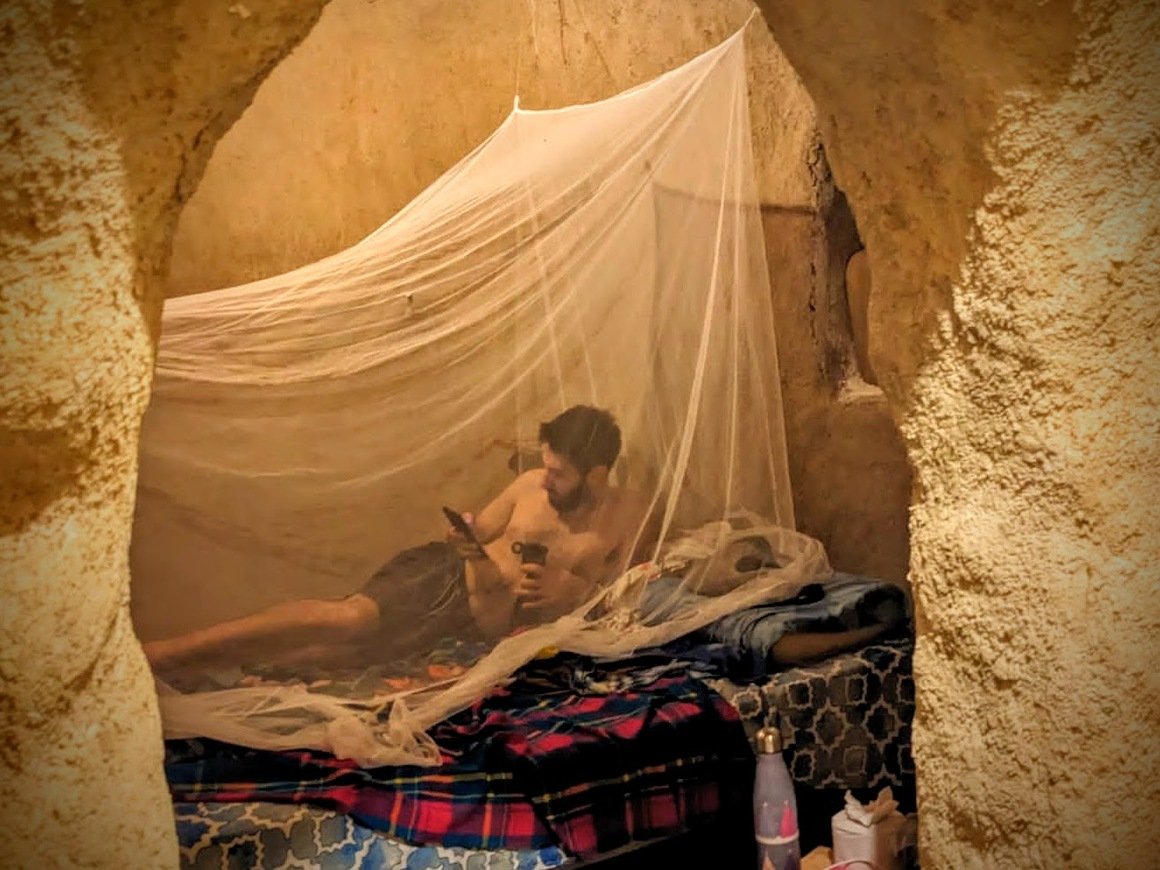
It is worth checking if you need the Yellow fever vaccine before entering some countries. In some places, it is only recommended.
It’s also worth noting that in most places in South America, the water isn’t fit for consumption. The best travel water bottles have a filter.
Getting Insured BEFORE Visiting South America
ALWAYS sort out your backpacker insurance before your trip. There’s plenty to choose from in that department, but a good place to start is Safety Wing . Travelling without insurance in South America is risky. I broke my back in Brazil and will be happy to tell you why GOOD travel insurance is so important.
They offer month-to-month payments, no lock-in contracts, and require absolutely no itineraries: that’s the exact kind of insurance long-term travellers and digital nomads need.
SafetyWing is cheap, easy, and admin-free: just sign up lickety-split so you can get back to it!
Click the button below to learn more about SafetyWing’s setup or read our insider review for the full tasty scoop.
Where you will start your trip will be determined by what backpacking route you have chosen. Obviously, if you plan to tackle a specific country, the capital city of that country is a popular starting point and – usually – the logical option.
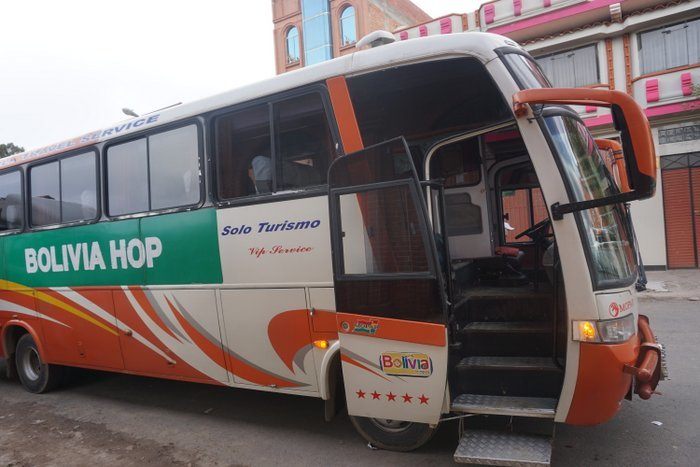
South America is not the cheapest country to fly to, but you can sometimes bag a cheap direct flight from another major airport. It’s pretty expensive to fly within it too. Unless you are coming by boat to Colombia via the San Blas Islands, you will certainly be arriving by plane.
São Paulo, Lima, Buenos Aires, Santiago, and Rio de Janeiro are all major hubs for South America. Compare the prices between these top destinations, and base your South America itinerary from there.
Entry Requirements for South America
Good news everyone! Most South American nations DO NOT require a visa to visit! This applies to those travelling from the USA, UK, EU, Australia, and most other Western nations.
This is a positive trend in the last few years. A few years ago, travellers sometimes had to apply for (expensive) visas to enter countries like Argentina and Brazil. Luckily, this is no longer the case .
Once you’ve entered the country, you can remain for a period of 90 days visa-free. Extensions are possible but these vary on a country-by-country basis. Most South American governments do not take kindly to people who overstay.
Of course, ALWAYS double-check visa policies before travelling .
City Bus. Local Bus. Long-distance bus. Overnight bus.
That’s right. Buses are the most economical way of getting around South America. Every major capital has buses going to the far reaches of the country.
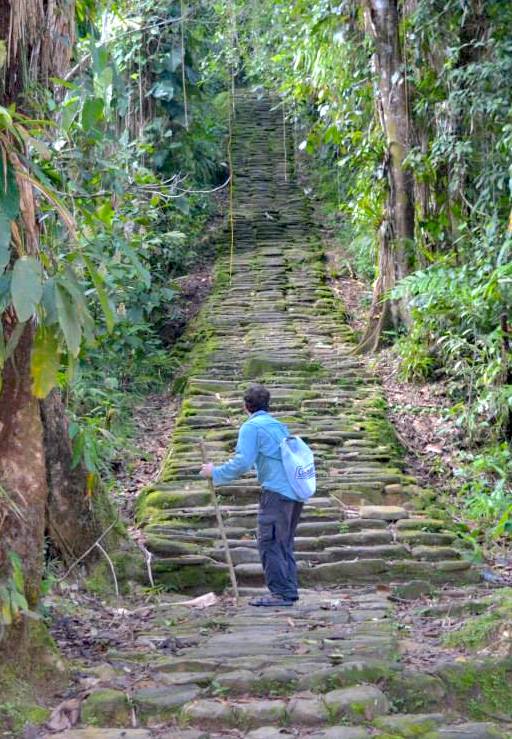
Local buses are typically super cheap. You can book online but the bus stations are organised really well too.
Taxis are an option within cities and sometimes Uber too, depending on the city. If you opt for a taxi ride, make sure they are legit, set the price beforehand, and haggle the shit out of the driver without being rude.
Flights between countries in South America can be expensive. Internal flights within the country aren’t the cheapest either, though they are cheaper if you buy them while you’re inside the country (you’ll save money on taxes).
As a general rule when backpacking, cheap travel is slow travel . Buses can be slow but as you will be taking many if you are backpacking South America long term, you want to go for the cheapest option.
If you want to go full Che Guevara style you can travel by motorbike pretty easily (and cheaply) in most places in South America. I recommend that you have some experience riding motorbikes before you even think about sauntering into a capital city or down a winding road in the Andes. If you do go the motorcycle route you can be sure that it will be the ride of your life.
Hitchhiking in South America
Travelling by hitchhiking is always an option. Your success will greatly depend on the area and the country; I wouldn’t recommend hitchhiking in a major city or at night.
Hitchhikers aren’t that common in countries like Colombia, mainly due to paranoia about the security situation in the country. Not everyone here is a drug lord that wants to kidnap you for ransom money. You can hitchhike throughout Colombia AND it’s such an awesome experience!
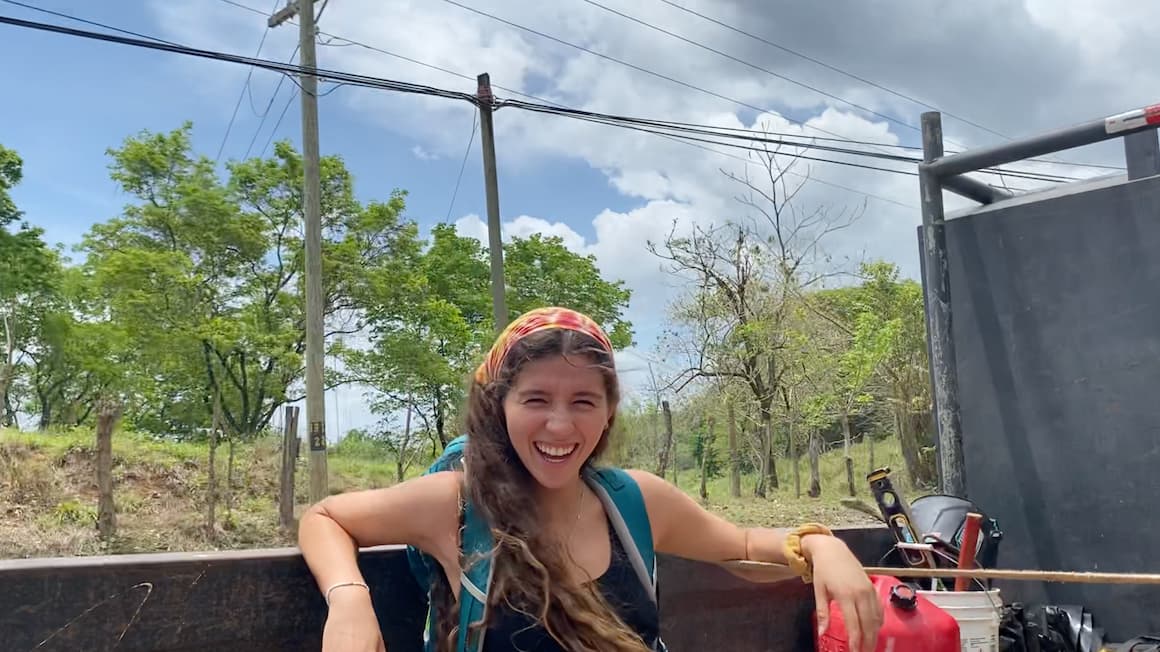
Rural areas of South America are especially impacted by high rates of poverty. Expecting free rides from folks with limited means isn’t morally fantastic. That said, even if you offer the driver a few bucks, it could very well end up being cheaper (and more rewarding) than taking the bus.
I would never assume that the ride is free initially. Always ask to avoid having an awkward scenario in which the driver who picked you up is demanding an unexpected fee. This is when learning Spanish comes in very handy.
Onwards Travel From South America
Your only options for leaving the continent are by boat or by plane. Most likely you will fly out of the country where you are finishing your trip if it makes sense and is the cheapest option. Try to book your flights in advance in order to find the best flight deals .
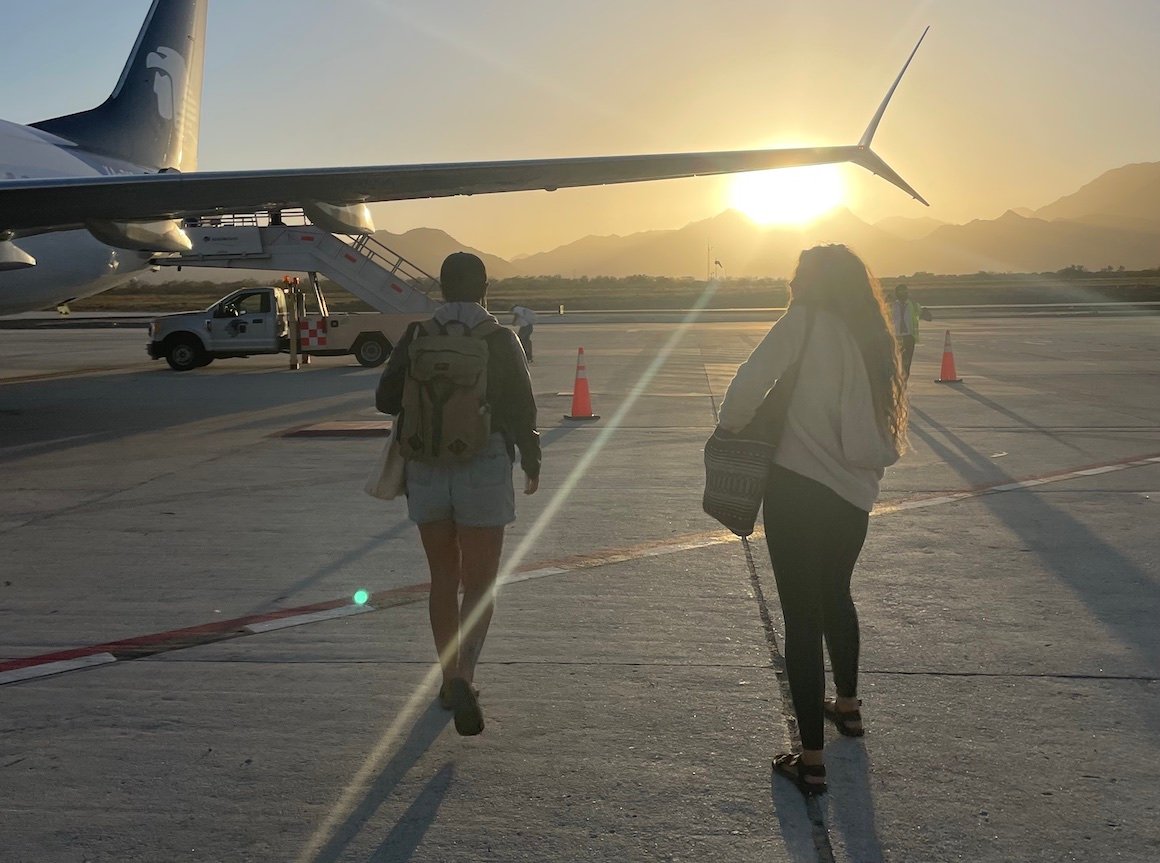
It is technically possible to cross the Darien Gap to Panama overland. Rumour has it that you can hire a guide for quite a bit of money and cross the Darien on foot.
In the past, this was impossible though due to narco-terrorist/guerrilla activity. May the Gods of Backpacking be with you if you attempt the journey on your own without a guide.
South America is becoming a digital nomad hub. After the pandemic, the boom really: a generally low cost of living, relatively reliable internet, and tons of expat communities.
Medellín is the current front-runner. This city is growing at a RAPID pace and is becoming the apple in every backpacker’s eye.
Plus, Medellín is safer than ever. Lots of people want to stay here for an extended period of time, digital nomads included.
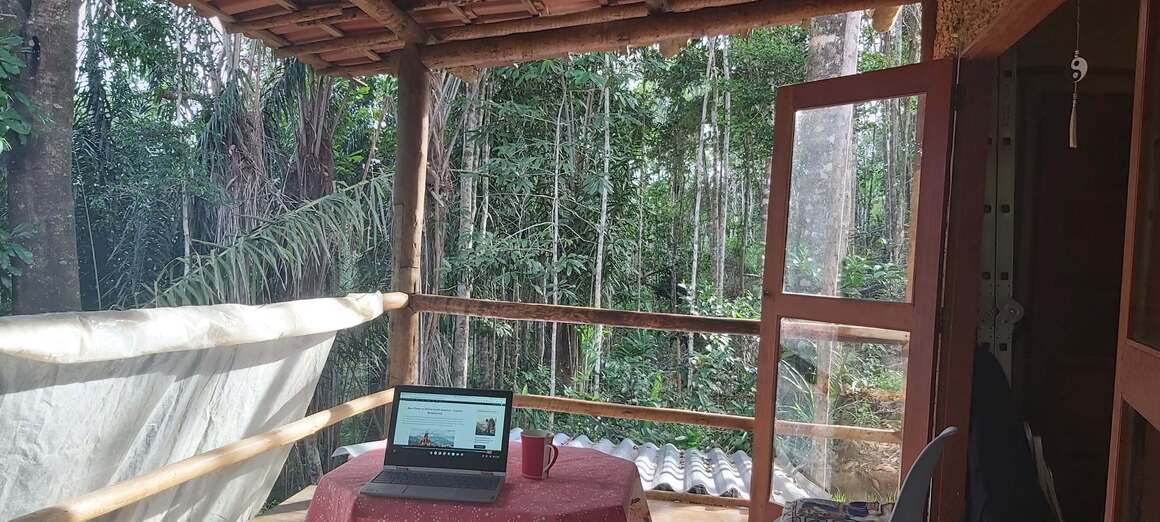
Close behind are larger South American cities like Buenos Aires, São Paulo, and Quito. Being big cities though, you’ll have to overcome higher prices and crime. Safety in Buenos Aires can be sketchy but so can every massive city, right?
Note that, at the moment, most South American countries do not offer a special digital nomad visa.

A new country, a new contract, a new piece of plastic – booooring. Instead, buy an eSIM!
An eSIM works just like an app: you buy it, you download it, and BOOM! You’re connected the minute you land. It’s that easy.
Is your phone eSIM ready? Read about how e-Sims work or click below to see one of the top eSIM providers on the market and ditch the plastic .
Teaching English in South America
Most people who end up living or staying long-term in South America do one of two things: teach English or volunteer.
Teaching English in South America is very popular. Some people make a living out of just going from one city to the next city and hitting up all the English schools in between. Some are accredited though many find success using their own merits.
If you have a TEFL certificate it will be much easier to score teaching gigs in South America. I recommend getting yours with MyTEFL – Broke Backpacker readers get a 50% discount on TEFL courses when you enter the code PACK50 at the checkout.
Volunteering in South America
Volunteering abroad is a great way to experience a culture whilst doing some good. There are loads of volunteering gigs in South America ranging from protecting the Amazon to teaching in barrios of Buenos Aires.
Arguably, you may need a permit in order to volunteer. But in reality, the continent is pretty chill and this is unlikely to ever be enforced.
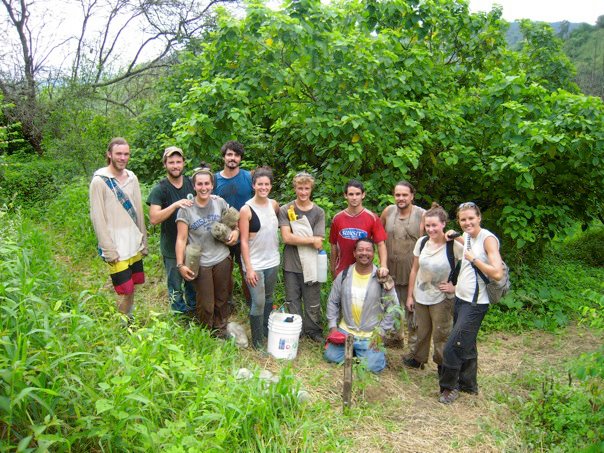
I spent a few weeks volunteering in the mountains in Northern Colombia and it was the best way to get to know the land, people, and lifestyle. Finding volunteering opportunities in South America is about learning, building community, and making an impact in a place you visit.
The best way to find volunteer jobs is word of a trustworthy mouth. But programs run through reputable work exchange programs like Worldpackers , Workaway , and WWOOF help you get your foot in the door of volunteer communities.
They’re a great opportunity for unique experiences and make amazing connections with people. But you do have to stay vigilant, especially when working with animals or children.
If you sign up for Worldpackers with a discount code, memberships are only $39 a year. For that price, it’s often worth giving it a try.
Summing up food in South America is like trying to explain what music is. It’s incredibly diverse and every country, every region, every household has a different definition.
First of all, meat is hard to avoid. They like it juicy, tender, slow-cooked, and accompanying pretty much everything. Especially in the southern part of the continent, Argentina, Uruguay, and South Brazil, the smell of cooking cow is heavy in the air.
The Argentinian way of grilling is Asado . And it’s not just a delicious barbecue – oh no – that’s just the centrepiece. The event is a huge part of the culture.
The vegetarian movement is gaining momentum, though it’s harder in some places than others. In more rural places, you may go hungry if you don’t want to eat meat now and again, but in general, it’s not impossible.
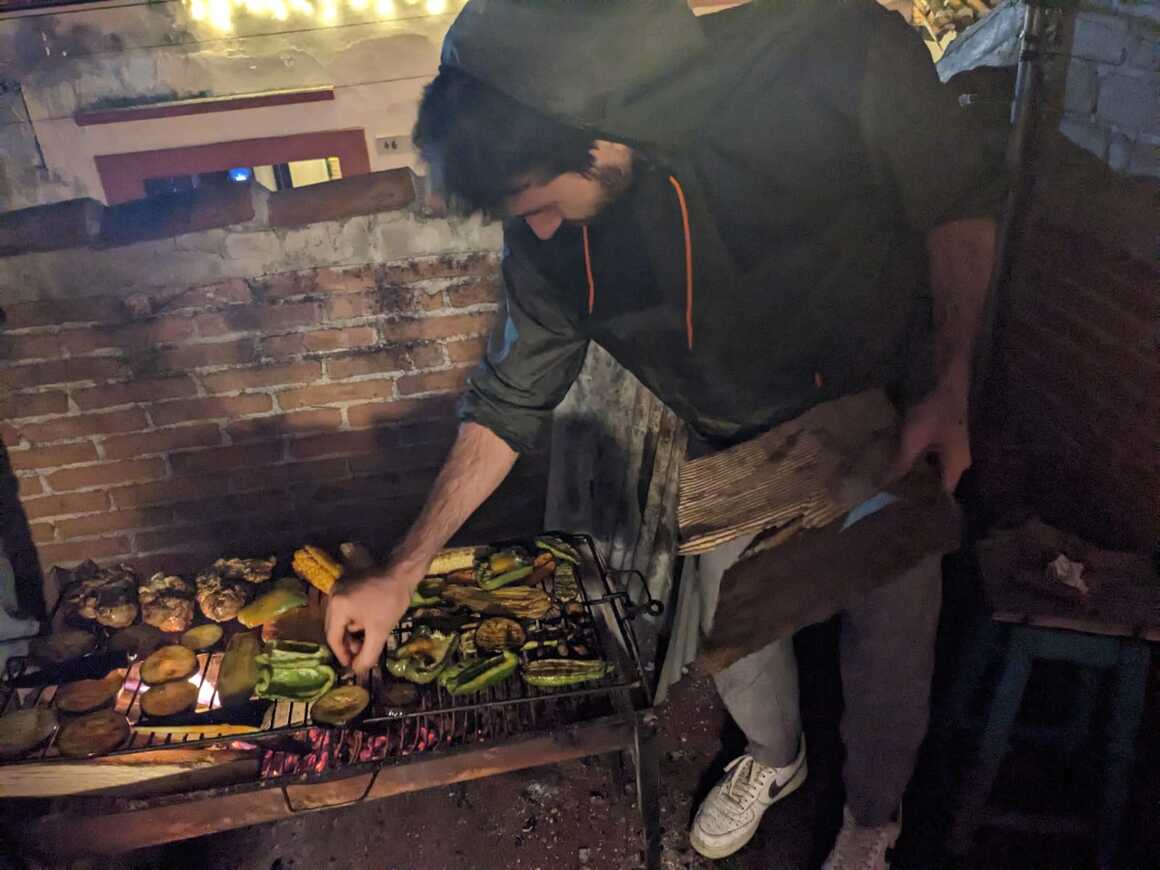
Andean countries like Peru and Bolivia have chronically underrated food scenes. In fact, Peruvian food is often regarded as some of the best in the world. You’ve never felt fresher than after chowing down that ceviche.
In the Amazon, they have a whole different gastronomic world; obviously, everything grows here. There are ingredients that come from the Amazon that just don’t exist anywhere else.
There are strange fruit and vegetables in abundance. Then, of course, the fresh fish comes leaping out of the river, almost directly to your plate. Catching your own fish is never a bad idea either.
The food in the north of South America, like Colombia and Venezuela, is the definition of comfort food. If you’re eating right, you’re going to be gaining a few kilos. Don’t pass on an opportunity to gorge yourself silly.
Street food usually involves lots of deep-fried goodness. But it’s the abuelas that make the best pastries, with oodles of love. And ooh, those arepas… they have a special place on my plate.
The Best Food in South America
Here are some of the best South American foods that you definitely shouldn’t miss out on.
- Feijão (Brazil) – Beany stew for everyday eating.
- Acai (Brazil) – Superfood berry.
- Empanadas – Your trusty stuffed pastry friend.
- Dulce de leche – Just try it… thank me later.
- Asado (Argentina) – Grilled meat with a side of meat.
- Antichucho (Bolivia) – Mmmm… cow’s heart.
- Ceviche (Peru/Chile) – raw but not raw fish, in lemon juice.
- Cuy (Peru) – A large cooked guinea pig.
- Encebollado (Ecuador) – Ecuadorian Grandma’s comfort stew.
- Arepas (Colombia) – Corn pockets to fill your hungry belly.
South America is a very complex continent. Colonization by Western Europeans technically makes it the youngest member of modern civilization. But saying this disregards all the history that came before the “ conquistadors” arrived.
South America has hosted many advanced civilizations like the Incan Empire, whose influence still lasts to this day. Though much of the native culture was lost with the mass killing by said conquistadors .
Long story short: South America is an enormously diverse region, maybe more so than anywhere else. Yes, European culture has largely shaped the entire continent. But indigenous and African cultures are just as important, if not more so.
Northern Brazil is very Afrocentric. This was the first charted part of the continent and ideal for rowing sugarcane. Consequently, it’s the place where all the slaves were brought.
Slavery is over. But it leaves behind a blend of African customs and cultures morphed into Latino culture.
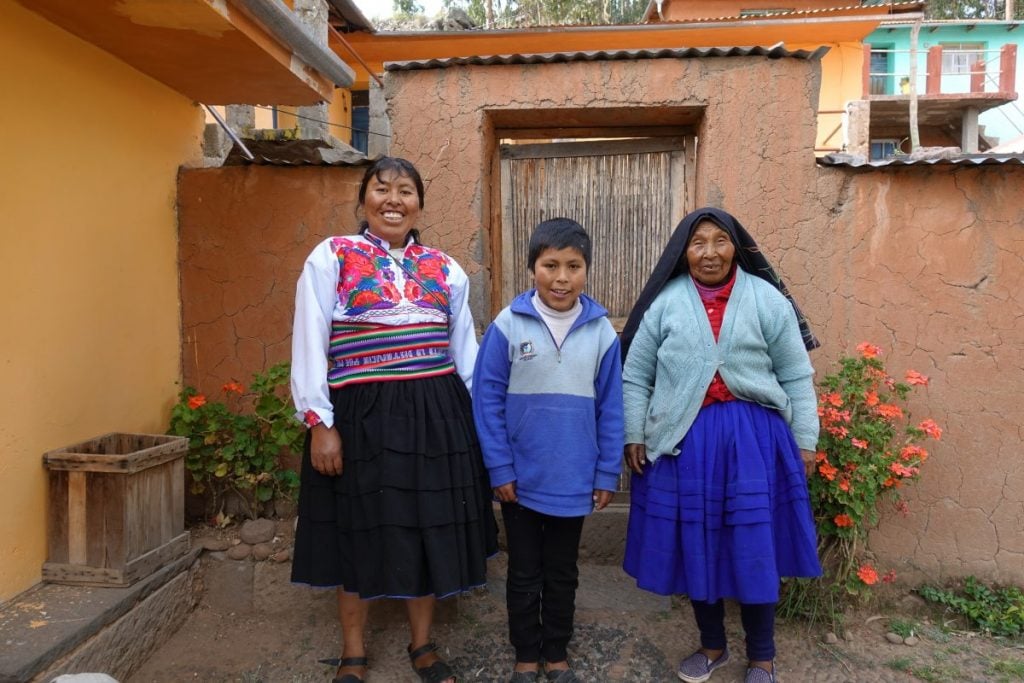
The south, which constitutes Argentina, Chile, and Southern Brazil, is much more European. Aside from the big players – the Spanish and Portuguese – Italians, Germans, and French all settled here following a huge era of migration.
In the Andean countries of Bolivia, Peru, and Ecuador you see a lot of indigenous cultures. Some people still live like their ancestors, living in the highlands and tending the land. Though Spanish is still the dominant language, several local languages, like Quecha and Aymara, are still commonly spoken.
Don’t make the mistake of thinking that all of South America is just an extension of Europe or North America. You’ll miss out on the beautiful subtleties of the region, which make backpacking in South America so wonderful.
A backpacking trip in South America is a unique experience in itself. And within that, there are instance amounts of opportunities to make your South America itinerary different to anyone else who’s travelled here before. Here are some of the best things to add to it:

Things go wrong on the road ALL THE TIME. Be prepared for what life throws at you.
Buy an AMK Travel Medical Kit before you head out on your next adventure – don’t be daft!
Hiking in South America
South America has some of the best hikes in the world . Here are a few iconic options to get your bucket list started:
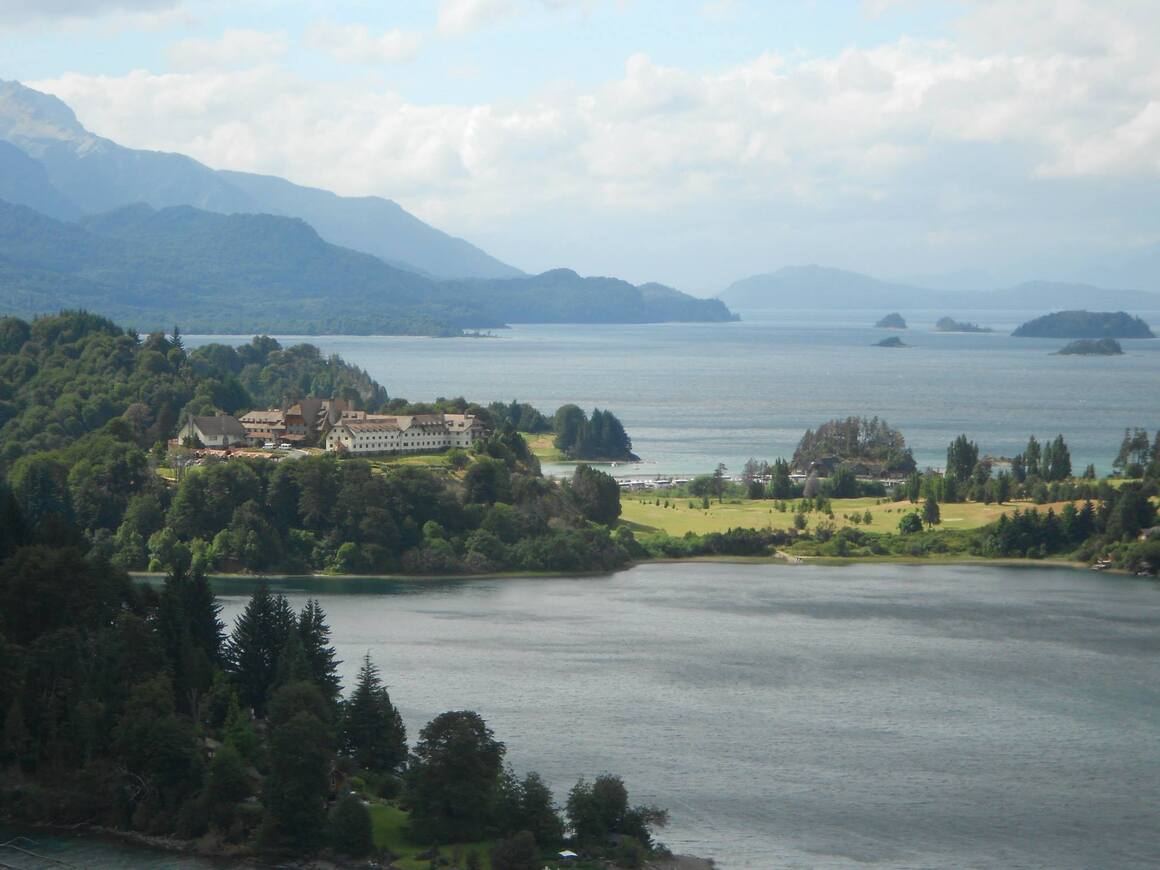
- Lost City Hike, Colombia : This hike through the Colombian jungle will certainly be a highlight of your South America travel.
- Sierra Nevada de Cocuy, Colombia : Snow in Colombia? Here you can find peaks are as high as 5,330 meters above sea level. If you have your own gear and a good sleeping bag , you can probably do the hike without a guide.
- Iliniza-Norte, Ecuador . This is a fantastic 2-day trek that does not require any special gear or equipment. If you are planning to tackle Cotopaxi this is a great warm-up. A solid challenge for the dedicated hiker!
- The Salkantay trek, Peru: Hike to Machu Picchu over 4 days and experience the true beauty of the Andes along the way. One of my favorite South American treks for sure.
- The Cordillera Huayhuash, Peru : Truly one of the most stunning areas in Peru. For serious hikers, planning a trek like this is one for the books!
- Hut-to-Hut in Bariloche, Argentina: Spectacular hike for some of the best views of Nahuel Huapi National Park and its lakes. Tents are optional since you can stay exclusively in the refugios.
- Villa O’Higgins to El Chaltén, Chile/Argentina : One of the greatest ways to experience Patagonia. Walk from Villa O’Higgins in Chile to El Chaltén in Argentina. You’ll see some superlative mountain, forest, and lake scenery along the way.
- Torres Del Paine Circuit, Chile : The hike of all hikes in South America. This epic walk takes 9 – 11 days and passes through some of the most dramatic landscapes one can fathom. A must if you’ve got the time and hiking spirit!
Scuba Diving in South America
You have scuba diving options galore in South America! In general, scuba diving is pricier than it is in other parts of the world but that’s because it’s worth it. If it is something that you really want to do, I say go for it!
Colombia is probably the cheapest and best place to dive AND get certified in South America. You have Providencia and Santa Catalina (a smaller island to the north) which is home to the third-largest coral reef barrier on Earth and includes over 40 dive sites.
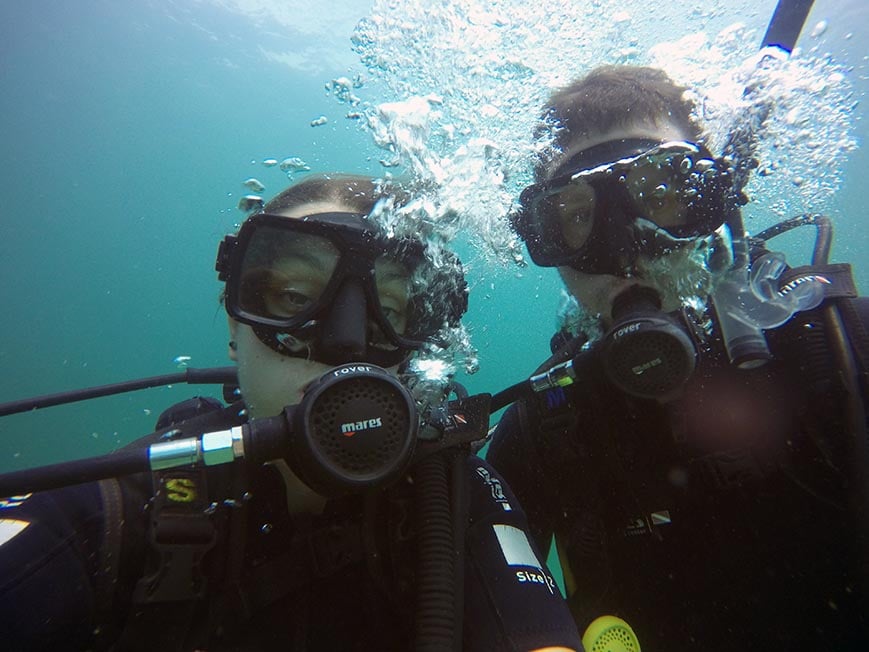
Malpelo is the harder-to-reach version: a jagged rock in the Colombian Pacific, it can only be reached by boat, and divers can only visit here as part of an organized trip. It’s worth the time and money for sure; Malpelo is one of the best places in the world to dive with sharks, including hammerheads, whale, and the rare sun ray shark.
People have reported schools of up to 500 sharks around Malpelo. That’s right. 500!
Peru and Ecuador both have some decent diving right off their coasts. The diving around the Galápagos Islands is world-class, but it will cost you a fortune go diving there.
If you truly want to have the scuba diving adventure of a lifetime, I highly recommend joining a Liveaboard trip.
- Liveaboard the Galapagos
- Liveaboard Colombia
Surfing in South America
Surfing is the number one sport on South America’s coast. From Peru to Brazil, backpackers and locals are coming together and shredding!
Peru is home to the longest left-breaking wave in the world . You can literally ride a wave for five minutes!
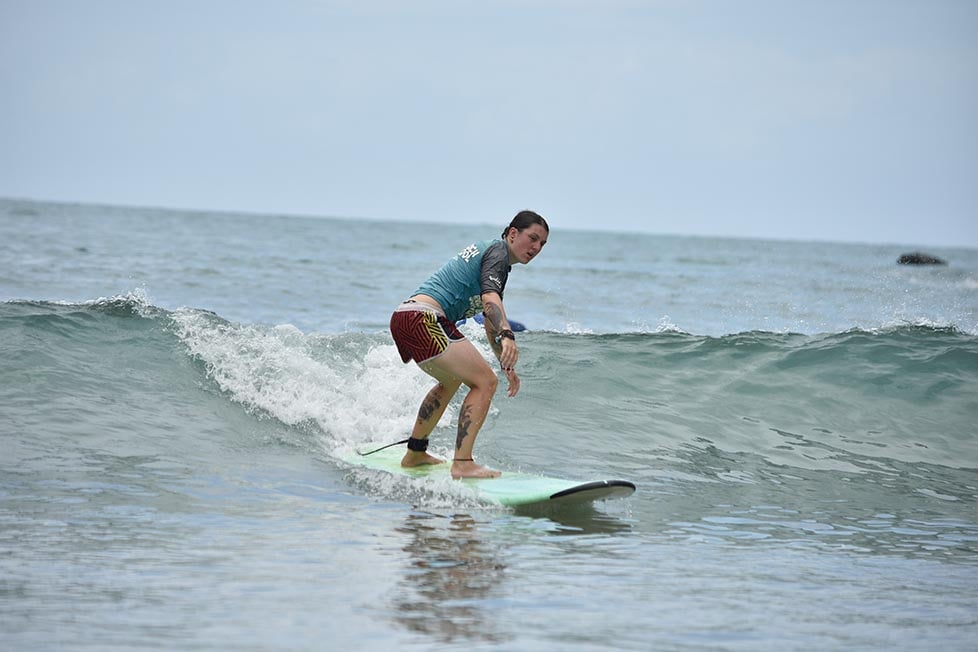
The Pacific Coast is dotted with funky surf towns, where the main activities revolve around the waves and the nightlife. There are a plethora of surf schools in every country. Often these surf schools offer Spanish classes as well if you are wanting to double down (which I highly suggest!).
It is easy to fall in love with the surfing lifestyle. But be careful, you might just fall in love with the whole scene. I wouldn’t blame you for a second.

Our GREATEST Travel Secrets…
Pop your email here & get the original Broke Backpacker Bible for FREE.
Here are the questions I get asked the most about how to backpack South America.
Is backpacking South America safe?
Yes. Backpacking South America is safe. Just bear in mind that crime rates are higher than in some other areas of the world. But by following standard safety procedures, there’s no reason why that crime should affect you. Be sensible, show people plenty of respect, and look after your friends.
How are the bus journeys in South America?
The long-distance buses are generally top quality and comfortable. Just be aware that distances on the map can be deceiving and journeys can be long so bring plenty of water, food, something to keep you warm in the baltic aircon, and probably some toilet paper too.
Is travelling South America as a woman possible?
Absolutely! Not only is it possible, it’s awesome. Do remember that, unfortunately, women do have to consider safety as a factor more so than men, especially after dark. But with that in mind, prepare for the adventure of a lifetime.
How are South Americans so damn sexy?
There are too many reasons. Just go and spark up conversation with them and find out for yourself. Beware though, you’re likely to fall completely, madly, deeply in love.
Backpacking South America can be one hell of a party at times. Take it from me, it can be easy to get carried away.
You can make a positive impact on people when we travel and South America is the perfect place to do that. Try to spend your money in places where the experience is mutually rewarding.
When buying a local craft, be fair to the person who spent countless hours crafting it. Pay people their worth and contribute to the local economies as much as possible.
If you visit small or indigenous communities, be respectful: they are normal folks just living their lives. Backpacking South America – or any region for that matter – often illuminates some of the great socio-economic inequalities of the world. Never take it for granted that you are healthy and financially able to go travelling.
Show the world around you some gratitude and help to make a positive impact on it. Most of all have the time of your life and spread the love!
Well, amigos, the time has come for me to send you on your travellin’ way. Armed with your budget travel knowledge, on you go!
Your South America backpacking trip awaits. Have a few cold ones for me, yeah?
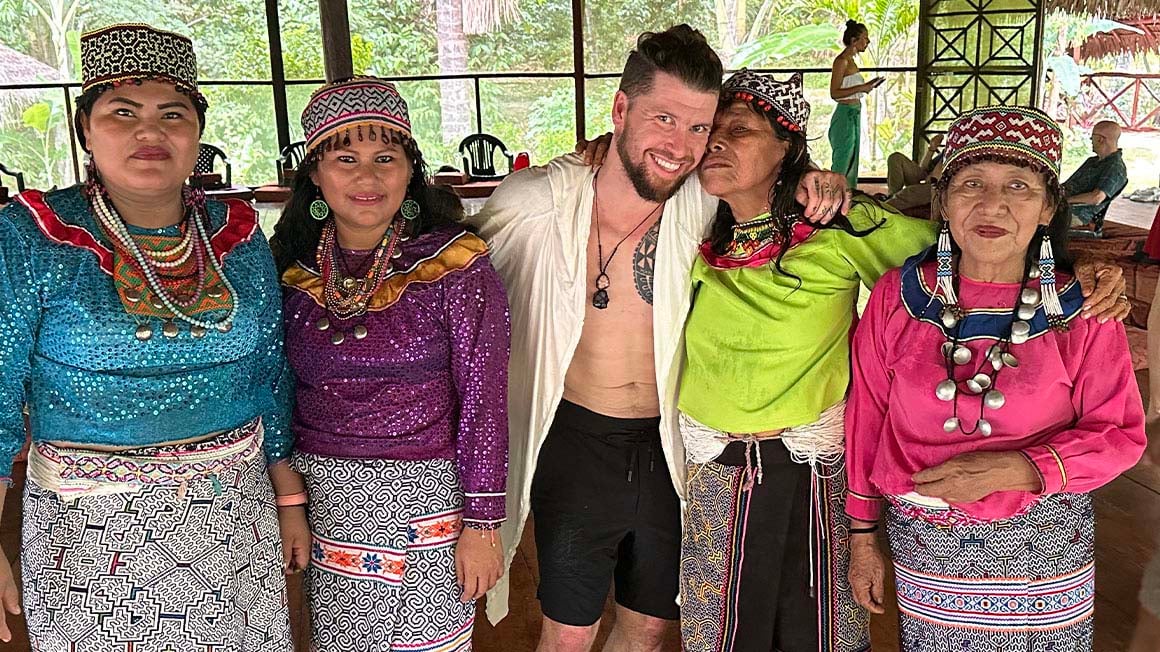
Buy Us a Coffee !
A couple of you lovely readers suggested we set up a tip jar for direct support as an alternative to booking through our links. So we created one!
You can now buy The Broke Backpacker a coffee . If you like and use our content to plan your trips, it’s a much appreciated way to show appreciation 🙂

Share or save this post

30 Comments
Great post, loved the detail and enthusiasm you have for South America. I am saving up to travel from northern Colombia all the way down the west to Patagonia and then back up the other side (yes I am aware it will take the best part of a year). I wondered if you had any tips on the best time of year to start this adventure?
Plan your time with the weather and seasons in mind! Have a great time.
Is traveling to brazil unwise right now because of the covid situation? Has it become more unsafe because of the covid situation? It’s been really difficult to find solid information, and making a decision wether to visit or not has been quite difficult. Thanks for the otherwise wonderful post! Super informative.
informative post . best of luck
Hi Kami, glad you liked the article!
Very nice blog, congratulations I found a cheaper way to flight some routes inside Latin America If someone have plans, after this health crisis is gone, just ask me, I will be glad to help
Interesting. However as a Guyanese, that us from Guyana, South America I always find it odd that many persons leave out the English Dutch and French speaking countries of South America. We too have things to offer.
Hello Malkia, We totally agree with you! As soon as we manage to visit Guyana, we will update this guide! I look forward to exploring your country. Cheers
Hey there!! So I am planning a trip to south America this summer. I have a couples questions. I’m flying into Bogota, Colombia. I plan on spending 2-3 months in SA. I’d like to travel from Bogota to Machu Picchu, then to Buenos Aires, and depending on time Brazil. I am trying to figure out the cheapest way to travel from country to country. I don’t care about long bus rides or any of that. I just don’t know where to purchase the cheapest bus tickets. Please help!!!
Simply the cheapest tickets are usually at the bus station, or wherever locals buy their tickets. Look out for agencies and the like that might add a fee for booking the very same thing you could yourself.
I have a good tip to move around if you need to do it by plane, just let me know if you plan (after the whole problem is gone) to fly some stretches.
Hey man great blog, been reading so many of your posts recently, can you email me I wanna chat to someone who knows there stuff… I’m going to South America for about 6 to 8 months on a budget and need help planning a route… hopefully you see this and we can chat thank you
Hey Jamie, What is your question specifcally regarding your route? Cheers!
Thank you so much for sharing these information – they are so useful!
I am planning a trip of a lifetime to South America. To keep cost down, I am likely to stay in hostels for the first time. I like to understand how travellers wash their clothes in hostels. Are there usually any washer or dryer machines in hostels? Do we usually have to pay to use them? What is the price like?
Look forward to hearing from you.
Hi Tina, Some hostels offer laundry services. Other times you can get your laundry done at local lavanderias . Depending on the country, prices are usually pretty reasonable. They usually charge by the weight. Getting a massive load of clothes washed should not cost you more than $10 (sometimes way less) washed, dried, and folded. Cheers!
Thanks Chris for this wonderful article. Bolivia and Brazil is a magical place! Anyone who went there said it was absolutely amazing! That nature is just wonderful here. keep sharing your travel ides about more places of South America.
Cheers, Mate!
I started my South American journey two months ago and this has been a big help. There’s literally so many options once you get down here. Overwhelming in all of the best ways.
Much love from Peru.
Wow! That’s a marvelous article! Unfortunately, not so long ago, I was in South America, and I really had a lot of predicaments while traveling. If only I had read this article before the traveling, most likely, my trip would have been better!
Great content, congratulations.
Really great and in depth guide, thank you! Planning my first trip to South America and really like the look of your 3 month route across Peru, Ecuador and Columbia, was thinking of taking another couple of weeks on top to see Bolivia as well. What month would you advise starting this travel? (would really like to be home for Christmas)
The autumn months would be a lovely time to visit South America 🙂
Awesome content! I took so much advice and suggestions. I feel like I can plan whatever kind of trip ranging in length of time spent there plus budgeting. Thanks!
It’s great that you’re such a strong advocate of reusable water bottles and avoiding one-use bottles and generally I totally agree. However, I normally refill my water bottle from the tap, which obviously isn’t safe everywhere. Geneally can you drink tap water in South America? Or if not how do you safely refill without buying bottled water?
We’ve used lots of things over the years to harvest clean water from taps and streams. The GRAYL filter bottle is one of our favorites. South America is something of a mixed bag when it comes to drinking water. It ranges from safe to unsafe with every shade of chloriney in between.
I am starting my South America trip new month and I found this website extremely useful. One question though – I am worried about the requirement to show proof of onward travel. Any idea if Argentina, Chile, Bolivia, Peru, Ecuador, and Colombia require this?
Hi Neringa,
I never had to show proof of onward travel during my 6 months in South America. There was never a time when a customs officer/border police questioned me about my onward travel plans. You should be just fine 🙂
Thanks, Chris. You have been right! But I was requested to provide proof of onward travel by Avianca when flying for Cusco to Quito. Maybe because my passport expires soon. My friend, however, did not have one and was still allowed to board the plane 🙂 There was a group of Israeli guys who I think had to show this info, too.
Thanks a lot man, I’m planning a 3 month trip to Colombia, Peru and Brazil next year and this really helped me get my head around how to do it and the kind of money I’m gonna need to save! Cheers dude
Thanks, this really helped me a lot for planning my trip next year!
Leave a Reply Cancel reply
Your email address will not be published. Required fields are marked *
Save my name, email, and website in this browser for the next time I comment.
Notify me of followup comments via e-mail.
South America
Book your individual trip , stress-free with local travel experts
Select Month
- roughguides.com
- south-america
Plan your tailor-made trip with a local expert
Book securely with money-back guarantee
Travel stress-free with local assistance and 24/7 support
updated 23.10.2020
Ready to discover tailor-made travel?
Get support from our local experts for stress-free planning & worry-free travels.
30 Best Places to Visit in South America 2024
Sharing is caring!
Filled with otherworldly landscapes, incredible weather and, bustling cultures, the colourful continent of South America has brought me back time and time again.
Whether you’re looking for inspiration on where to go in South America or are already planning a trip, make sure you don’t miss out on this categorised list of the best places to visit in South America !
This article may contain affiliate links. If you purchase through these links, I may earn a small commission at no additional cost to yourself. This helps towards the upkeep of this website for which I am grateful.
Best Cities to Visit in South America
The South American continent is filled with diverse cities, most are bustling and filled with colourful colonial architecture, making them a must see vacation spot in South America.
Rio de Janeiro, Brazil
The lively city of Rio de Janeiro is a must see in South America.
With epic views from the top of Sugarloaf Mountain, and the Christ the Redeemer statue, Rio de Janeiro is like no other city.
However if you want a unique birds eye view, make sure you try hand gliding over Rio !
Other than the views, the city is home to a number of South American tourist attractions such as Ipanema and Copacabana beach as well as the mosaic covered steps of Selarón in Lapa and the Rio Carnival in February.
Salvador de Bahia, Brazil
The coastal city of Salvador , is the capital of Brazil’s northeastern state of Bahia.
It is known for its Portuguese colonial architecture, Afro-Brazilian culture and a tropical coastline.
The Pelourinho neighbourhood is its historic heart, with cobblestone alleys opening onto large squares, colourful buildings and baroque churches such as São Francisco, featuring gilt woodwork.
This city is a must if you are wondering where to visit in South America!
Cartagena, Colombia
Cartagena de Indias is one of the best cities to visit in South America, with its Caribbean climate, colourful walled city and nearby white sand beaches, it’s no wonder so many tourists flock to the ‘Jewel of the Indies’.
My favourite neighbourhood is Getsemani, an edgy quarter filled with street art, that wonderfully contrasts the old city.
There are plenty of things to do in Cartagena including trying their famous from food stalls, fresh juices and fresh seafood.
Buenos Aires, Argentina
The combination of South American flair and European elegance make Buenos Aires , a one of a kind destination in South America.
Famous things to do in the instagrammable city of Buenos Aires , include visiting the iconic presidential palace, Casa Rosada , and the grand opera house, Teatro Colón , as well as the colourful area of La Boca .
No trip to Buenos Aires would be complete without trying their tasty empanadas , and some Dulce de Leche ice cream .
La Paz, Bolivia
The highest capital city in the world, La Paz rests on the Andes’ Altiplano plateau at more than 3600m above sea level.
The best places to visit in La Paz are Valle de la Luna, Death road , the Witches market and the lofty viewpoints of La Paz.
Bolivia’s capital is also connected to the rest of the country, so it’s easy to get a bus to Salar de Uyuni , Lake Titicaca or to the Bolivian Amazon jungle .
Medellin, Colombia
The ‘City of Eternal Spring’, Medellin was once one of the most dangerous cities in the world, but is now a haven for tourists and digital nomads.
Known for its nightlife, Medellin is a great place to spend a few days exploring and understanding quickly why it was named the most Innovative City in the World back in 2013.
The modern buildings of Medellin are surrounded by the green hills, which are perfect for paragliding off.
This was one of my favourite activities in South America, and a tandem paraglide in Medellin is a fraction of the cost anywhere else in the world.
Valparaiso, Chile
The colourful and bohemian UNESCO World Heritage town of Valparaiso , is only an hour and a half from Santiago in Chile , making it perfect for a weekend break or even a day trip if you are short on time.
Valparaiso is full of unique buildings, endless staircases, narrow streets and funicular elevators.
I highly recommend searching out some of the lofty lookout points to get a panoramic view of Valparaiso, and it’s rainbow coloured buildings.
Best Places to Visit in South America on a Budget
As a whole the continent of South America is budget friendly however the Galapagos Islands, Easter Island and the countries of Chile and Argentina (especially Patagonia) are a lot more expensive.
The coolest places to visit in South America on a budget, include some of my favourites spots on the continent, including Salar de Uyuni in Bolivia, Quito in Ecuador and Lake Titicaca on the border of Peru and Bolivia.
Salar de Uyuni, Bolivia
Sixteen thousand years ago, this area in the south of Bolivia was a high altitude salt lake.
The water has since evaporated, leaving a unique and unforgettable landscape of flat white salt as far as the eye can see.
Dotted somewhere in the middle of the twelve thousand square metres of salt, lies Incahuasi – a rock island covered in hundreds of flowering cacti, an unmissable spot on a trip to Bolivia.
Strangely unique, there’s not many places I could visit over and over again (the world is far too big for that!) but I’d happily return to Salar de Uyuni during the rainy season to capture the mirror image reflections on these salt flats.
Salar de Uyuni is the world’s largest salt flat and best visited on the popular three day tour from Uyuni or San Pedro de Atacama .
During the multi day trip you will visit several lakes including one of the best places to visit in Latin America, Laguna Colorada .
Quito, Ecuador
The capital city of Quito (a UNESCO World Heritage site), is the gateway to Ecuador and the Galapagos Islands , Pacific coast, Andes and the Amazon rainforest.
Quito has everything from bustling cafes to volcano peaks, and there are plenty of things to do in Quito to keep you busy for at least three days.
The must visit places in Quito and the old town are La Ronda – the cities cultural hub, and La Mitad del Mundo – the Equator line.
Lake Titicaca, Bolivia
Lake Titicaca is a stunning and inspiring place to relax for a night or two on the border between Peru and Bolivia.
Serene, sacred and steeped in rich cultures past and present, the beautiful Lake Titicaca is easily one of South America’s most alluring destinations.
Over forty islands are sprinkled throughout, the largest of which is Isla del Sol (Island of the Sun), which has over 180 ancient Incan ruins.
Spend a day hiking across the island and spend the evening relax in a hot tub at this amazing hotel .
Iguazu falls, Argentina and Brazil
Iguazú Falls are one of the best places to travel in South America, due to the sheer size of the waterfalls.
Located on the border between Brazil and Argentina in a large expanse of national park, the falls are surrounded by unique flora and fauna.
Visiting on the Argentinean side is recommended as you can hike along the waterfalls, but remember to bring a waterproof jacket as you will get wet!
Best Places to go Hiking in South America
If you are wondering where to travel in South America to go hiking, look no further.
Here are a collection of a few of best hikes in South America ranging from one day to multi day hikes in some of the best South American countries to visit.
Machu Picchu, Peru
Machu Picchu has been voted one of the new seven Wonders of the World and is a must visit for all travellers in South America.
These majestic ruins were built by the Inca Empire and are located in the scenic Andes mountain range, surrounded by beautiful cloud forests and mountain scenery.
Machu Picchu is only accessible from the city of Cusco, which you can reach by bus or air travel.
It’s worth staying a few days to enjoy all the things to do in Cusco before heading off to Machu Picchu.
Whilst the ruins are impressive, I actually enjoyed the four day Inca Trail hike more than the final destination, due to the beautiful scenery and sereneness of the Inca trail .
Torres del Paine National Park, Patagonia
Ancient forests, towering granite peaks, glaciers, lakes, rivers, and pampas, Torres del Paine National Park is the gem of Patagonia.
Named after the three iconic granite spires that rise out of the heart of the Paine Massif, Torres del Paine is located in the Magallanes and Chilean Antarctica region of southern Chile.
The hiking trails in Torres del Paine, like the W Trek draw in more than 250,000 visitors a year from Chile and abroad.
The park was founded in 1959 and became a UNESCO Biosphere Reserve in 1978 to protect the fragile landscapes, plants, and wildlife that call this place home.
Torres del Paine National Park is popular for its hiking trails , but there are plenty of other activities to be enjoyed like wildlife viewing, kayaking, boating, and cycling, making it one of the best places to visit South America.
San Pedro de Atacama, Chile
Active geysers, coloured lagoons and breathtaking salt flats make up the landscape surrounding San Pedro de Atacama .
It is one of the best adventure travel destinations in South America, especially if you enjoy mountain biking or sand boarding down the dunes.
You can also relax in one of the natural hot springs and visit the Atacama desert at night to experience the endless stargazing in the driest desert in the world.
Easter Island, Chile
As one of the world’s most remote islands, Easter Island is on many people’s bucket lists.
This island has 887 mythic moai stone statues, strewn across the 63 square-mile land constructed around 1200 to 1600 A.D.
However the island is also full of volcanic craters, preserved stone villages, beaches, fantastic seafood and world-class diving.
Rapa Nui , the native name of the Easter Island is a Chile-governed territory, but is 2,200 miles away from South America’s mainland.
El Calafate, Patagonia
El Calafate is just a short bus ride away from one of the continent’s last advancing glaciers, Perito Moreno Glacier .
It is best to view the glacier from the walkways, and via boat before heading onto the ice for a memorable trekking adventure .
I highly recommend doing the Big Ice experience, which involves walking through ice caves, and seeing the striking blue colour of the lagoons up close.
Colca Canyon, Peru
Peru has plenty of places to visit other than Machu Picchu , such as Colca Canyon.
Located four hours from the city of Arequipa, it is the second deepest canyon in the world and one of the best places to visit in South America to see the Andean Condor.
With a weight up to 12 kg and a wingspan of over three metres, they are an impressive bird to see up close.
Colca Canyon is also one of the most popular destinations for trekking in South America .
I did the overnight hike into the canyon, and spent the night in one of the villages at the base before hiking 1100 metres up to the ridge.
It is a tough hike so for those looking to relax a bit more and take it slower you can do the three day version instead of the two day trip .
Either way it’s easy to see why Colca Canyon is in the top South America places to visit.
Rainbow Mountain, Peru
A day trip from Cusco, the Rainbow Mountain takes only a few hours to climb.
This site – which is also known as Vinicunca, Winikunka, Montaña de Siete Colores, and Montaña de Colores – was covered in thick snow and ice until the end of 2015, when the striped colours have now become visible.
The summit is at 5200m so make sure you are acclimated to the altitude in Cusco before setting off on this trek.
Best Places to Visit in South America for Wildlife
South America is filled with diverse wildlife from penguins and crocodiles to whales and flamingos, making it a great hotspot for nature lovers.
Before embarking on your trip make sure you research wildlife photography tips so you can make the most of it.
Galapagos Islands, Ecuador
One of the most spectacular places to visit in South America has to be the Galapagos Islands .
Although the islands aren’t the cheapest or the most accessible place in the world to visit, they still attract an extraordinary number of visitors.
This number is however restricted, so a trip to these famed islands needs to be planned well in advance.
Don’t let this put you off visiting one of the most diverse and unique places on the planet, as a visit to the Galapagos Islands are a chance to experience pristine beaches, incomparable wildlife, and volcanic landscapes like no other.
Laguna Colorada, Bolivia
Bolivia is home to one of the most surreal landscapes in South America.
Located 4300m above sea level lies a distinct lake covered in a sheet of pink algae and white borax islands.
Laguna Colorada is home to hundreds of rare flamingos that flock there to feed on the algae, which in turn helps the flamingos earn their unmistakable colour.
As the wind blows, the algae is affected and the lake seems to change colour in front of your eyes from pink to red to a deep orange.
A unique place to add to your South America bucket list.
Magdalena Island, Chile
Thousands of playful penguins can be found in their natural habitat on a tour of Magdalena Island from Punta Arenas.
Cruise past stunning seaside scenery as you venture to a picturesque and protected nature reserve to observe the incredible creatures.
Gain insight into the penguins physiology and behaviour with a knowledgeable guide and embark on a hike to a legendary lighthouse.
Weather permitting, you can also sail to the shores of Isla Marta to witness sea lions and elephant seals splashing in the sea.
It’s easy to see why Magdalena Island is one of the best vacation spots in South America.
Pantanal, Brazil
Brazil’s best kept secret is the Pantanal . Located in the heart of South America and as the world’s largest tropical wetland area, it should be on everyone’s bucket list.
The Pantanal stretches across the Brazilian states of Mato Grosso and Mato Grosso do Sul and also spills into Bolivia and Paraguay.
While the Amazon gets more credit, the best opportunities for wildlife spotting are in the Pantanal so be sure to carve out a few days to visit.
If you want to do some jaguar spotting, visit the Mato Grosso along the Cuiabá River from July to September.
Ballestas Islands, Peru
The Ballestas Islands are a group of rocky islands located off the Pacific coast of Peru near the town of Paracas, three hours south of Lima.
Nicknamed “The Poor Man’s Galapagos”, the islands are a must see for all wildlife lovers as they are home to thousands of birds and mammals including penguins, sea lions, pelicans and dolphins.
The islands, locally known as Las Islas Ballestas, are protected, meaning you cannot swim with the animals or walk on the islands themselves, but you can get very close to them on a boat tour .
Underrated Places to Visit in South America
Here are a list of the best hidden gems in South America, from jungles and deserts to mountains and beaches, as well as the most underrated city in South America!
Ciudad Perdida, Colombia
Located deep in the Colombian jungle lies Ciudad Perdida or “The Lost City”, it is one of the most underrated places to visit in South America.
An archaeological site that was undiscovered for centuries until 1972.
Ciudad Perdida is around 650 years older than Machu Picchu, however only around 10% of the site has been uncovered.
Despite being accessible to tourists for the past 10+ years, the ruins are still surprisingly quiet, but well worth visiting for an authentic experience.
The ruins can be reached by hiking 4 – 6 days (46 km round trip) through the lush green humid jungles of the Sierra Nevada mountains.
River crossings, steep hills, and tropical heat make this trek a gruelling one.
Compared to the infamous Inca trail, this adventurous trek involves sleeping in hammocks, swimming in crystal clear pools, visiting local indigenous communities and if you’re lucky, spotting a rare toucan.
Visiting this part of Colombia, during dry season is advised (December to March) when the river crossings are knee height as opposed to chest height during wet season!
Huacachina, Peru
Located four hours south of Lima, close to the city of Ica. Huacachina is South America’s ONLY natural desert oasis and is home to the largest sand dunes in the continent.
Huacachina is perfect for a two night stay, and a visit has to include exploring the sand dunes on foot at sunset or sunrise.
Another great way to experience the desert is by joining a dune buggy tour and trying your hand at sand boarding .
Mount Roraima, Venezuela
Straddling on the border of Venezuela , Guyana and Brazil , the table top mountain of Mount Roraima is located 2810 meters above sea level.
Mount Roraima is the highest of the Pakaraima chain of tepui plateaus in South America.
Few places on earth conjure up the feeling of a truly alien landscape, but Mount Roraima, with its lakes, strange shaped rocks and extraordinary panoramic views, perfectly encapsulates the “Lost World” of Victorian literature.
The summit can be reached via a six day trek from Santa Elena , and the best time to visit Mount Roraima is between December and April when the weather is drier.
The views from the top are why it’s one of the best South American destinations.
Tatacoa Desert, Colombia
The second largest arid zone, the Tatacoa Desert, in Colombia occupies more than 330 square kilometers.
The landscape is covered in rocky canyons rather than sand.
As the desert is located close to the Equator its possible to view both the Northern and Southern skies, coupled with no light population, this makes Tatacoa Desert one of the best places to stargaze in the world.
Though small, there is an observatory with a team of knowledgeable astronomers who open the observatory doors each night to teach visitors, about constellations and use the telescopes to get a closer look.
The easiest way to reach Tatacoa Desert is by getting a bus from the closest town Neiva to Villavieja .
Ilha Grande, Brazil
Ilha Grande, remains one of my all time favourite beach destinations in South America.
Set in a National Park, Ilha Grande has gotten more popular over the years due to its proximity to Rio de Janeiro , but if you want to get away from the crowds make sure you visit the hidden gem of Lopes Mendes.
This beach is as secluded as it gets, there are no toilets, no restaurants, and likely no other tourists, as it takes two hours to hike to the beach, but I’m sure you’ll agree it’s worth it.
Guatape, Colombia
The best day trip from Medellin, is the full day tour to Guatape .
The trip includes walking 740 steps to the top of El Peñol for the panoramic views of the surrounding islands, (this sounds like a lot but it actually only takes about ten minutes at a medium pace).
After the climb you should visit the colourful facades of Pueblo de Zócalos and see El Peñol from afar.
Guatape is around two hours away from Medellin and the day tours include a boat ride through the emerald green waterways and past the home of Pablo Escobar, making it one of the great South America vacation spots.
Montevideo, Uruguay
A hidden gem and one of the most beautiful places to visit in South America is the laidback capital of Uruguay.
Considered one of the safest cities on the continent, Montevideo is great for culture vultures.
The pedestrian-only walkways of Ciudad Vieja are filled with colourful boutiques, cafes and markets, and the beaches of Montevideo are great for kite surfers.
If you want to learn to dance the tango, the city is a great place to take lessons, and if you want to relax with a good glass of wine, make sure you don’t miss out on a tour to one of the cities wineries .
Has this list of the best tourist destinations in South America by category inspired you to visit the continent? Let me know in the comments and if you love hiking, check out the 15 best hikes in South America .
Save Best Places to go to in South America to Pinterest
Similar posts, top 10 things to do in quito ecuador 2024.
The capital of Ecuador in South America, is the jewel of the Andes, find out the top 10 things to…
50+ Best Travel Quotes With Friends 2024
Whilst traveling solo or with your partner can be fun, there’s something special about going on a trip with friends….
119 Inspirational Hiking Quotes For Adventurers 2024
From hiking active volcanoes in Guatemala, to spending the weekend walking in Castleton or the Peak District – trekking has…
Bolivian Lagoons in Pictures
This really has to be my favourite place in the world to photograph. Bolivia is home to one of the…
13 Epic Things To Do In Vang Vieng Laos 2024
Known for its party scene, in recent years Vang Vieng has reinvented itself as the outdoor capital of Laos. Now…
Best Things to do in One Day in Castleton Peak District 2024
The chocolate box village of Castleton is a haven for hikers, nature lovers and history buffs. Situated in Derbyshire’s Peak…

33 Best Places to Visit in South America for an Epic Adventure
When people think of the best places to visit in South America, they think of a destination in rawness, vast wilderness, and spectacular scenery.
The amount of outdoor adventure available on this continent could keep a traveler busy for months on end and still leave you begging for more in the cultural and historical adventure.
It’s a continent we’re ready to explore more of during our travels and every time we start looking at photos, realize we may end up spending months there once we set foot on land.
Of course, not everyone travels that way, but adding a little adventure to your travels will encourage you to be more active and get out to explore more of this fantastic world that we live in.
To define what is the very best is a matter of perspective and passion, so we’ve asked our fellow travel bloggers to share their favorite South America adventure experiences with us.
While this article could go on for days with all the unique and cool experiences to be had on the continent, these are the places and adventures you absolutely shouldn’t miss.
Don’t leave home without: Lonely Planet South America (Travel Guide)
Best Places to Visit in South America
Table of Contents
1. Ice Trekking on the Perito Moreno Glacier (Argentina)

The Perito Moreno Glacier is one of the largest and most accessible glaciers in Patagonia. Recognized as one of the only growing glaciers in the world, Perito Moreno is an extensive ice sheet that stretches more than 30km and rises 80 meters above Lago Argentino.
My boyfriend and I visited the glacier in January when the weather was pleasant and mild. Due to its location in southern Argentina, Perito Moreno is best visited during South American summers, from November to March. Even during the summer months, however, the weather can be volatile and unpredictable.
In order to best explore the glacier, we joined a three-hour glacier trekking tour and set out to discover the cracks and crevices of the massive ice sheet.
Initially, debris and rocks made the edges of the glacier dirty and brown. But the farther we trekked into the center of the ice field, the cleaner the glacier became and the bluest blues imaginable started to sparkle all around us.
At some points, the glacier’s spires rose sharply skyward. In other places, the ice stretched out smoothly, interrupted by cobalt pools and streams of meltwater.
While viewing the Perito Moreno Glacier from the park’s network of boardwalks is incredible, there is no better way of experiencing the sheer size of the glacier, than by trekking across its rough and slippery surface with crampons and a harness. The expedition is incredible and the views, unforgettable.
Contributed by Erika, Erika Travels
2. Kayaking in Mocona (Argentina)
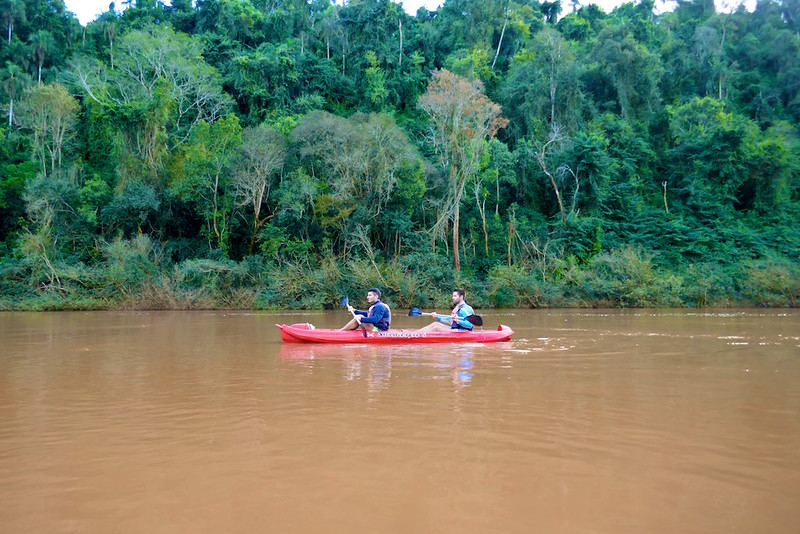
Misiones province in Northeast Argentina is not only home to the Iguazú falls, but also to the lush Yabotí biosphere, a 250,000 hectares protected reserve created by UNESCO in 1995.
It is made of untouched pristine rainforests – in short, this is the Argentinian jungle. Moconá is also where you can see one of the most fascinating and unique natural phenomenons: the Saltos de Moconá, or The Mocona Falls .
The Don Moconá Virgin Lodge offers a wide variety of adventure options such as jungle treks, kayaking, tubing, rappelling, and ziplining.
Our favorite experience was kayaking on the Yaboti river all the way to the larger Uruguay River, which forms the natural border between Argentina and Brazil.
There’s something quite spectacular about kayaking in between 2 countries, in the middle of the Argentinian jungle.
The Yaboti Biosphere is the area surrounding the Moconá Falls with a rich sub-tropical forest ecosystem, a large diversity of fauna and many endangered species of reptiles, birds, and mammals.
Mokona has a subtropical climate with changing landscapes, so the jungle flora and fauna you can see at different times of the year.
This makes it a year-round destination. But remember to bring mosquito repellent – they’re particularly fierce out here.
Contributed by Stefan, Nomadic Boys
3. Hiking to Laguna de Los Tres (Argentina)

Hiking to Laguna de Los Tres is one of the most picturesque hikes in Patagonia, Argentina. The hike starts in the village called El Chalten and ends at the closest point of the famous Fitz Roy mountain.
It is not considered a very difficult hike, but the last stretch is very steep and the temperature drops significantly, so it takes a lot of effort to reach the top.
The wind was very strong and it was very cold on the top and the road leading up there was slippery. It took us about 5 hours to reach the lagoon.
On the bottom of the mountain, the surrounding nature is green and there are a few rivers to cross. The temperature is warm and the view is beautiful.
For about four hours it is a very pleasant, easy hike. The last hour of the hike becomes very difficult because the weather gets cold and windy.
Once I reached the top, I couldn’t spend too much time up there because of the wind, but the view was spectacular. Seeing the peak of the Fitz Roy mountain reflecting in the turquoise blue lagoon was worth all the effort.
It is best to do this hike in December-February when it is Summer in Argentina because even in the Summer this region is cold. It often snows during this time of the year. This hike is recommended to advanced and amateur hikers.
Contributed by Barbara, Jet-Settera
4. Hiking in Los Glaciares National Park (Argentina)
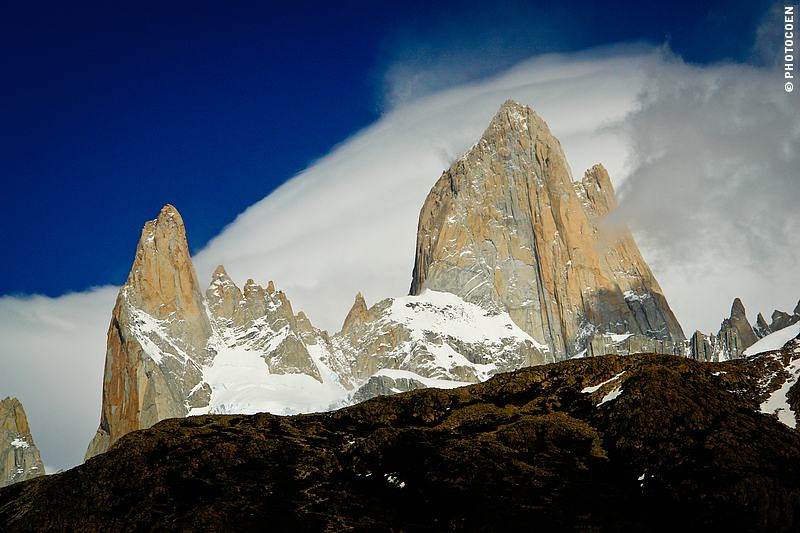
Glaciers around the world are mostly shrinking. The ones in Patagonia, on the other hand, are still growing. A place to see them is Los Glaciares National Park in Argentina , a UNESCO World Heritage Site.
With trails suited for families with kids as well as hard-core hikers and climbers, this park offers opportunities for everybody who enjoys the outdoors. Go for a short walk to enjoy a good view of Fitz Roy’s pinnacles.
Hoist your rucksack and set out for a multiple-day hike to Cerro Azul and tent at designated campgrounds in beech forests. Do you like a technically challenging mountain? Climb the Fitz Roy or Cerro Torre.
Add a predawn hike to Laguna de Los Tres for the ultimate sunrise, and bring a thermos to Lagune Torre to sip your coffee while watching how chunks of ice break off the glacier.
The town of El Chaltén is the perfect hiking hub for this area. Here you can stock up on food, or buy hiking gear and camping equipment.
Go in November-April, when it’s summer in the Southern Hemisphere but note that it can get very busy in January and February.
Contributed by Karin-Marijke, Landcruising Adventure
5. Whitewater Rafting Rio Juramento (Argentina)
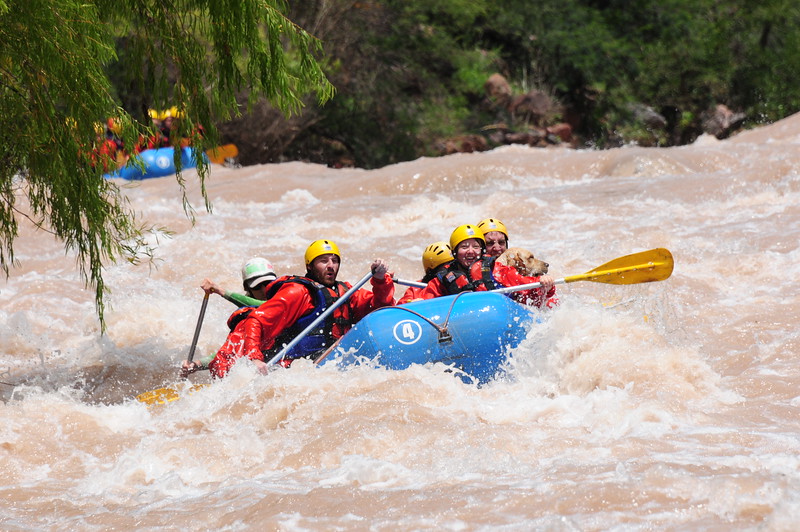
If there is one thing I am happy I tried, despite being terrified at the time, that is rafting on the Rio Juramento, in the Salta region of Northwest Argentina.
I had to travel for about 2 and a half hours from Salta to reach the base camp. There, we met with the guides, who after giving us all the gear we needed such as the wetsuit, trained us into all of the necessary safety measures.
Minutes later, we started rafting – 4 groups of 6 passengers each, plus a guide per boat, and a dog, Remo, on our boat. The dog was incredibly chilled, even on the worst of rafts.
We went on level IV rafts, so not too bad, but not exactly a piece of cake either. Whenever I sat in the front, as the raft would come, I could literally see a wall of water in front of me.
Our boat never flipped, though others did and we had to “rescue” the passengers.
The organization was excellent: two extra guides went in front of the group to take pictures. I have great memories of the experience, and it started my addiction to rafting which I now do whenever possible.
Contributed by Claudia, My Adventures Across the World
6. Hiking the Inca Trail to Machu Picchu (Peru)
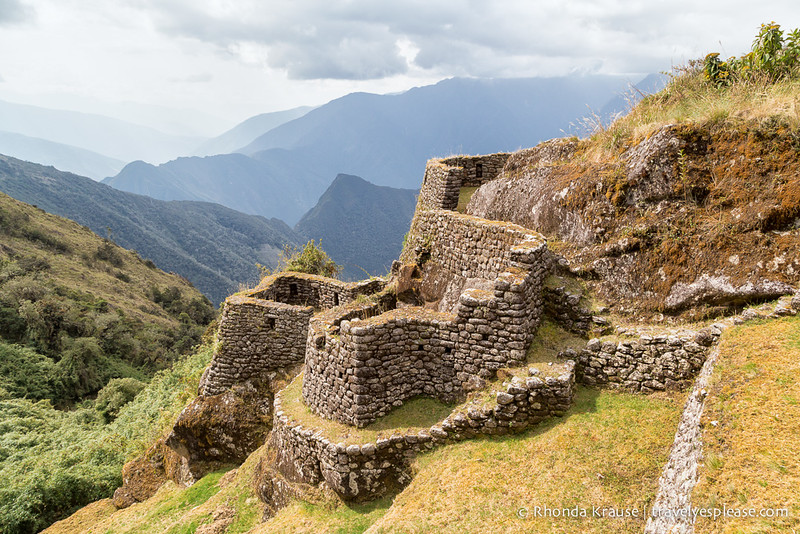
As one of the most famous hikes in South America, the classic 4-day Inca Trail trek is an experience that should not be missed on a trip to Peru .
It’s a challenging journey where hikers face thin air due to high elevation, steep ascents and descents on stone steps and a narrow path that hugs the edge of a mountain on one side and overlooks a steep valley on the other. Definitely heart-pumping!
As tough as the hike can be, the incredible Inca ruins along the trail, and the reward of Machu Picchu on the final day will make you forget about the difficulties along the way (or at least make you appreciate them).
The most popular time to hike the Inca Trail is from June-August, but May and September generally bring dry, sunny weather and fewer crowds.
The Inca Trail can only be hiked with a licensed tour operator and most companies supply porters to carry the sleeping tents, cooking equipment, and food. All you need to worry about is enjoying the scenery and making it to camp each night.
Trail permits are limited to 500 each day so treks sell out many months, even up to a year in advance, especially during high-season.
Contributed by Rhonda, Travel Yes Please
7. Ausangate Trek (Peru)

Without a doubt, the Ausangate trail offers some of the most wonderful scenery in the whole of the Cusco area.
It features birds, wildlife, glaciers, high alpine lakes, and the infamous rainbow mountains. It is also one of the most challenging in the region with three high passes over 5,000 meters/16,000 feet.
On a clear day, standing at 6,380 meters, Apu Ausangate dominates Cusco’s southern skyline. It is not hard to understand why the ancient Incas held this spectacular mountain in such high regard.
During the whole Ausangate trek circuit you’ll pass local villages where you can meet and observe people that live in the mountain area.
The trek takes at least 5 days with some people opting to do the trek over 5 days and add in a visit to Sibinacocha. Due to the height of the passes that are encountered on this trek, acclimatization can be a problem for some people.
It is recommended that you arrive in Cusco several days early to adjust to the altitude and prepare for the trek.
8. Canoeing in the Amazon (Peru)
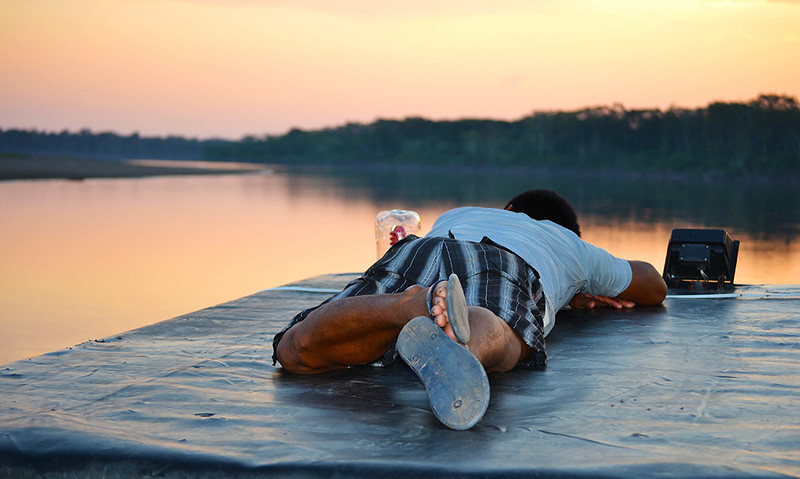
Adventurers headed to Peru absolutely can’t miss the opportunity to explore the wonders of the famous Amazon River. Even getting to the Amazon River is an expedition in itself, but when you finally do, the real adventure begins.
Docking the Amazon riverboat at a little riverside town called Lagunas, the next part of the journey requires you to drive out to the smaller river, where you’ll then canoe upstream for the next few hours.
Along the canoeing trip, there are opportunities to jump out and go for a swim, only to find out half an hour later that there are piranhas in the water! You’ll also get the chance to go fishing for the very same piranhas, as well as other Amazon fish, to prepare for dinner that night.
After canoeing throughout the afternoon you’ll make it to your camping spot for the night, where, if you’re lucky, wild boar will be sniffing around the site and you can chase them through the jungle with a crazy guide called Wilfred.
At around 2 or 3 in the morning, in the absolute pitch black of night, jump back in the canoe and go for a slow paddle down the river. This is when all the animals come out to play.
Cayman, with their small red eyes, can be seen glistening in the distance from light of the torch. As the canoe approaches them slowly they retreat below the water, giving you the uncertain reassurance that under your tiny wooden canoe is a rather large Cayman. Sloths, anacondas and exotic birds are some of the other highlights if you’re lucky.
Contributed by Jules, Don’t Forget to Move
9. Hiking Laguna Churup (Peru)

When I came across Laguna Churup in Huaraz, I had never heard of it and really had no idea where it was but I wanted one more party in the mountains before I headed back to the coastline for some much-needed surf and ocean time.
Once I arrived, the town itself was small and quiet. I was there in November and there was almost zero tourists in town. I didn’t actually see a single one until I went to the bus stop again to leave town.
I asked at reception the best way to get to the base of the mountain and set off the next morning in a taxi. The taxi driver knew exactly where to go once I said the name and it took maximum 20-30 minutes from the center of the town.
It is possible to do without a guide and at the time I did it no one seemed to require a pass. It was not an overly tough hike but the altitude, its highest point was about 4500 meters, made the air thin and I found myself a little short of breath at times.
After about 5-6 hours at a pretty good pace, I reached the lagoon. I could not believe what I was seeing. I had seen similar things before but never so completely isolated from others.
There was no one, anywhere. I was not sure if it was the time of year or if I had just randomly stumbled upon some magical land that no one knew about. Either way, I could not have been happier about it.
It started to hail at the top and I began my descent, it is not overly difficult going either way but after the hail, it became covered in ice and climbing down the steep faces holding onto the chains became a little precarious. As long as you have a credible level of fitness and multi-day hikes are not a problem, then you should not have any problems here either.
Overall, I think that being so isolated in such an amazing place was a very special experience and after 6 weeks in Peru, it was one of the most memorable moments of my trip.
Contributed by Dane, Holiday From Where
10. Macaw Research Expedition (Peru)
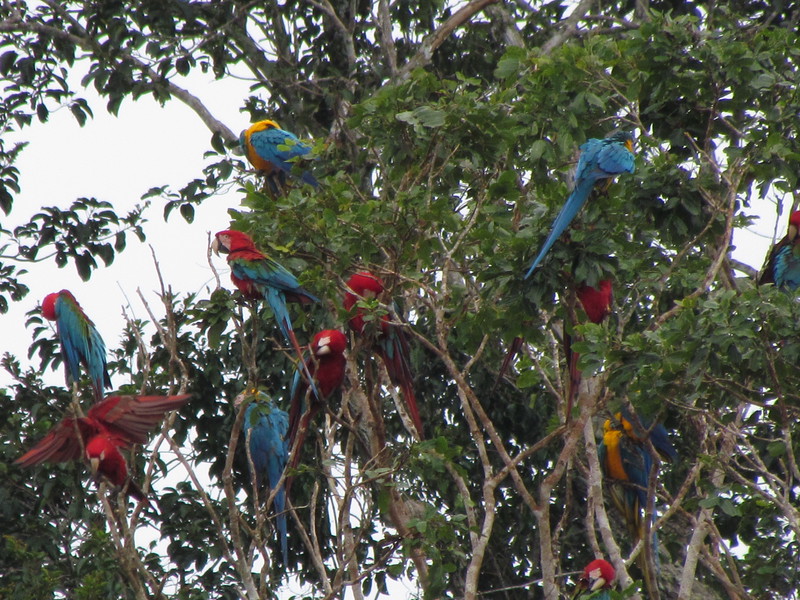
Set deep in the Peruvian Amazon is an opportunity to commune with nature, become with the Amazon rainforest and help devoted scientists with the research and data gathering of the endangered Macaw.
Access to the research center can be gained from the sleepy Amazon town of Puerto Maldonado on the Madre de Dios River.
The adventure begins from the moment you step into the small boat on the river and begin the 6-hour journey up the river into the Tambopata tributary.
You’ll find almost immediately that you are in a very remote area, in the middle of the Amazon. After the boat trip, you will arrive at the center where you climb up the river bank and are introduced to your home for the duration of your stay.
The days are spent collecting data and in the Amazon jungle. Outings also include early morning trips to the various clay licks in the area to observe a large variety of parrots and Macaws that come in to hang on the clay cliffs and bend your ears with loud noises.
It’s a South America adventure not to be missed.
11. Santa Cruz Trek (Peru)
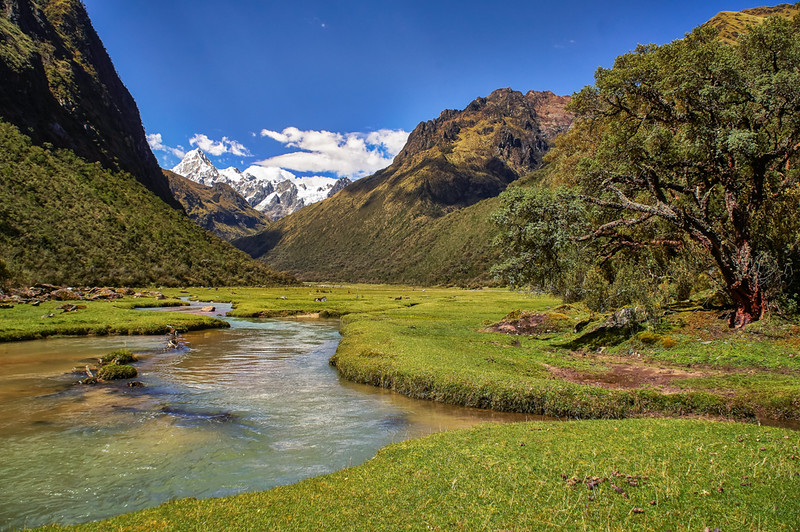
One of the best options for multi-day hikes in Peru is the Santa Cruz trek. This scenic 50 km (31 miles) hike takes you through lush green valleys, along a river and lagoons, and over a 4760 meters high mountain pass.
The views on the Cordillera Blanca are simply stunning. The trek takes about 4 – 5 days to complete, depending on your pace and how much time you are willing to spend there.
Doing the Santa Cruz trek without a guide is the best option, in our opinion, because you are free to enjoy the beautiful scenic landscapes without being hassled by the demands of a guided trek.
The trail is well-trodden in most parts, so getting lost is not really an issue and finding nice spots to camp is not hard.
According to some guides, the best time to go is between May to September, but we did it in November and had gorgeous weather with most blue skies. Also, if you don’t have camping gear, you can rent most of what you need in Huaraz.
Contributed by Bianca, Nomad Biba
12. 2 Day Colca Canyon Trek (Peru)
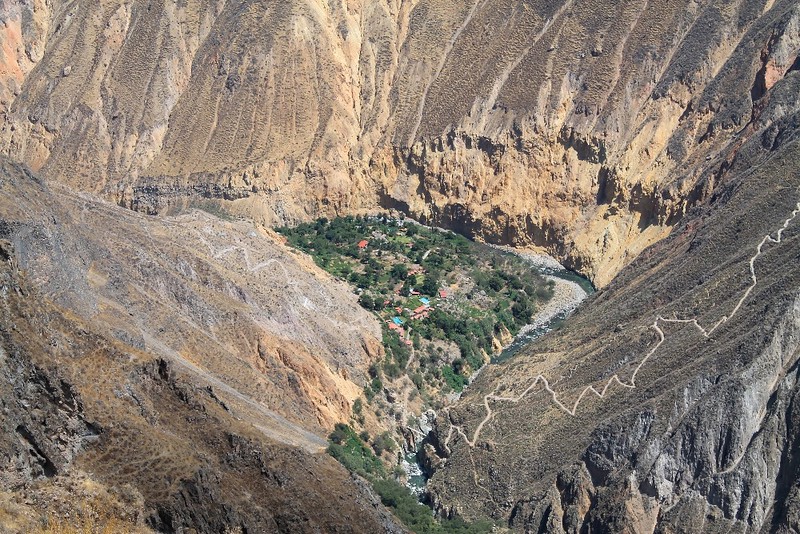
Easily one of the best hikes in Peru, the trek to Colca Canyon features treacherous descents, lung burning climbs, and amazing scenery.
Famous not only for its natural landscape but also for its magnificent condors, Colca Canyon is a great place for a challenging hike in South America.
The first day takes you down into one of the world’s deepest canyons and eventually ending at Oasis Sangalle, a surreal oasis village full of guesthouses with swimming pools.
What goes down must go up, and the three-hour continuous climb out of Colca Canyon is extremely hard. It’s so hard that the guides often suggest people ride a mule to the top.
The ascent starts from 2200masl (Oasis Sangalle) to about 3200masl (Cabanaconde) — this is challenging!
The Colca Canyon trek is a high altitude hike so you’ll want to acclimatize before attempting it. Arequipa, a colonial city towered over by volcanoes, is the best place to organize the trek to Colca Canyon.
From there you can arrange for a tour or travel by public transport — there’s not a huge difference in price though. The best time to visit Colca Canyon is the dry season (May to September).
Contributed by Gia, Mismatched Passports
13. Sandboarding in Huacachina (Peru)

If zipping headfirst down a 300-foot sand dune doesn’t frighten you, plan for a visit to Huacachina, Peru. Located just three miles west of Ica, Huacachina is a charming small desert town, famous for being home to the world’s highest sand dunes.
Known as “Everest of the Desert”, sand buggy and sandboarding tours are the adventure of choice for tourists here.
Tours ranging from $12 – $75 USD, you’ll be strapped into a sand buggy and flown through the dunes at high speeds. clutching your seatbelt until your knuckles turn white.
We gripped the seats in front of us for dear life as our driver floored the gas and took dunes 90-degree angles. We whizzed through the desert, screaming at the top of our lungs as we blew through the most spectacular desert scenery you could ever hope to see in your life.
You’ll spend an hour or two in the dunes, boarding down in between dune bashing, and being picked up at the bottom before being taken to an even bigger dune.
You lie flat on your stomach and zip down the sand dunes headfirst with your forearms on the board and your legs spread wide behind you. The fastest downhill speed is rumored to be 60 mph. Fight the urge to scream unless you enjoy the taste of sand.
Booking an afternoon tour (4 pm) means you will have the opportunity to watch the sunset over the desert which is spectacular (and avoid the heat of the day). Tours are available all year round however temperatures are milder from May through November. The rest of the year is quite hot.
We had heard it was dangerous, but honestly, the biggest danger you’re likely to experience is the sun. Make sure you pack plenty of water, plenty of suntan lotion, a hat, sunglasses, and clothes you can easily shake the sand out of.
I wore long sleeves and yoga pants to avoid sand rash – unless you’re experienced you will sandboard down the dunes on your stomach, and tearing down the dunes at high speeds will tear the skin off your arms and legs if you let them drag.
Oh and pack toilet paper. It seems to be a rare commodity in Peru
Contributed by Megan, Mapping Megan
14. Salkantay Trek (Peru)
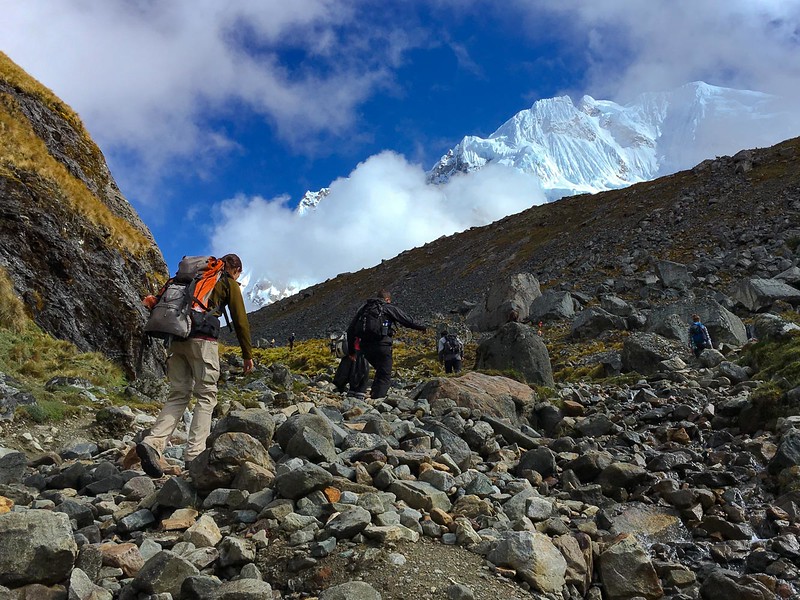
Trek for 3, 4, or 5 days along the Salkantay Trail through remote mountain passes and verdant tropical forest landscapes in the Andes. The high altitude trails are steep, so add a baggie of coca leaves for chewing along the way to your first aid kit. (Approximately $1 at any local market.)
On the final day, hike or ride the bus up the mountain to the fantastic Machu Picchu ruins, a fantastic place for photography . This UNESCO Historic Sanctuary is huge, making it easy to escape other tourists!
Also, most tourists depart the mountain by 4 pm, so you’ll have the place to yourself until closing time—perfect for photography.
How To: This route requires a reservation a day or two in advance, and can easily be set up upon arrival in Cusco. Meanwhile, an Inca Trail trek must be reserved months in advance.
Cost: Approximately $200 USD for a backpacker 5-day trek, including Machu Picchu entry fees, most food, and transportation to/from Cusco—you only carry a daypack.
Alternatively, take all the time you want and do it yourself (DIY). Optional activities along the Salkantay trek include hot springs, zip-lining, and horseback riding.
Recommendation: if you have any knee issues, ensure your tour includes walking poles .
Contributed by Jess, Longest Bus Rides
15. Hiking in Caraca Nature Reserve (Brazil)

The Caraca Nature Reserve in Brazil is a great way to explore the natural beauty of the country’s interior. You stay in a converted monastery which provides simple rooms and meals in the old monastic buildings.
The monks have trained the maned wolf which lives in the forest to come at night and eat at the monastery. Like any wild animal though, the maned wolf’s appearances at the Caraca Nature Reserve are unpredictable.
The Nature Reserve is over 30,000 acres and so there are plenty of opportunities for hiking and spotting wildlife. Most of the other guests were Brazilian as this Nature Reserve is a bit off the beaten path for foreigners. We went in the summer and the temperature was perfect.
Warm days in the mountains meant you could jump into the waterfalls after a long hike. Long cold evenings allowed you to sleep comfortably after a day of exploring the reserve. Do not expect extra comforts like air conditioning while staying in the reserve.
There are various levels of difficulty in the hiking involved which makes this place ideal for a group with mixed-ability or ages.
The most difficult hikes involve taking a guide who knows the way so that you don’t get horribly lost. We did easy and medium hikes because we were traveling with our children.
Contributed by Shobha, Just Go Places
16. Abismo Anhumas Caving (Brazil)

Brazil’s most unforgettable activity by a landslide is Abismo de Anhumas , 20km west of Bonito, it’s a 72m abyss culminating in an underground lake, home to incredible stalactite formations.
Bonito itself is a very small town and has only one main street but the natural resources of the surrounding area, the 76-sq-km Serra da Bodoquena national park, are spectacular.
The Abismo Anhumas adventure involves rappelling down to the bottom of the cave and snorkeling or diving in the lake below. You will float among formations of more than 10 meters high, giving the impression that you’re floating through a submerged city. It’s a surreal experience.
The climb back up is hard as it’s 72m back up the same rope you came down on. But the cave, the silence, the light falling on the lake and the beauty of the dive make this adventure unique and unforgettable.
I suggest wearing long sleeves, trousers and tennis shoes with long socks (I know, it’s not a fashionable look but it helps to protect your legs from the ropes while climbing up).
Because the temperature inside the caves stays roughly the same all year long, you can do this whenever you like. It’s cold inside the cavern, but you get a wetsuit for the snorkeling.
Contributed by Geert, Inspiring Travellers
17. Hiking on Fernando de Noronha (Brazil)

Fernando de Noronha, located some 350km off the coast of Brazil, is an archipelago of 21 islands and islets. The destination is probably one of the few places in Brazil that are not teeming with tourists and that isn’t going to change anytime soon either.
Thanks to its UNESCO Natural World Heritage Site designation, the island is limited to only 400 visitors per day, making it feel like one of the most exclusive destinations in the world.
The environmental preservation fee onto the island is steep but as soon as you lay your eyes on the raw beauty of this incredible archipelago, you’ll won’t mind forking out that $40/day.
There is no shortage of adventurous activities to do on the island, from diving to mountain biking, but one of the best ways to explore all Fernando’s nooks and crannies is by hitting one (or more) of its 5 designated hiking trails that are opened from August until February.
The trails vary in length (from 2 – 5 km) and difficulty (from easy to difficult), but each one provides access to a unique part of the island that’s not accessible by bus/buggy.
Combine a few of these trails, like the Farol trail that ascends up to the Ponta de Sapata lighthouse inside the National Park and the Capim Açu trail, that runs along the rocky beach towards Praia do Leão, and you are in for a challenging day hike that will get your heart pumping and leave you breathless from the untouched nature surrounding you.
If you don’t get hit by a storm halfway through (like we did) and if you are not attempting this hike just 5 months after a serious broken leg injury (like Oksana was), you’ll love the experience!
Contributed by Oksana, Drink Tea & Travel
18. Lençóis Maranhenses Desert Expedition (Brazil)

Lençóis Maranhenses National Park in Brazil is probably the most amazing natural landscape we have seen traveling around South America.
We have been to different sand deserts during our travels, but none of them compares to this one. In Lençóis Maranheses the rainwater accumulated between the sand dunes forms lagoons of different colors, which results in a really unique and almost surreal landscape.
The best moment of the year to visit is between May and August when the lagoons get filled in the rainy season.
The access to Lençóis Maranhenses is very complicated. From the coastal village of Jericoacoara, it takes a couple of days to get to Bairerrinhas, the nearest town to the park with road access.
From there you can take a 4WD tour to the desert or you can do as we did and catch a local boat to Atins, a barely populated village on the edge of the park. In Atins you can then get a guide, who will take you on a memorable adventure to the desert.
We walked in the desert for two days and spent a night in an oasis, where only 5 families live, totally isolated from civilization.
Every morning we started walking at 4 AM, since being close to the Equator the Sun is already over your head at 8 AM, and you don’t find any shadow between the sand dunes.
The only way to freshen yourself up is to jump in the lagoons and have a nice swim in the crystal clear water. It was very exhaustive to walk for 10 hours each day in the desert, but the fantastic landscape compensated us for the effort.
Contributed by Gabor, Surfing the Planet
19. Hang Gliding in Rio de Janeiro (Brazil)
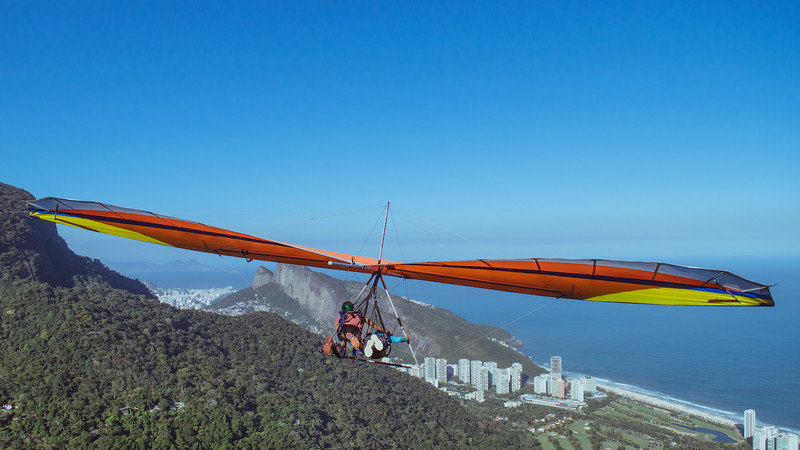
Hang gliding is one of the most popular wind sports practiced in Rio de Janeiro. It is a recreational sport that uses a craft often consisting of a metal-framed fabric wing, with the pilot mounted on a harness hanging from the wing frame.
He exercises control by shifting his body weight against a triangular bar, also attached to the frame. Hang gliding is very popular worldwide.
Imagine leaping from the mountains that surround the bustling city for an experience of flying. Hang Gliding happens at Pedra Bonita, a beautiful mountain situated in São Conrado neighborhood.
Jumping involves a tandem set up with an experienced hang glider. No experience is necessary but you do need an adventurous spirit and the courage to run off the side of a mountain.
20. Camping with Gauchos (Uraguay)

You absolutely HAVE to stay with gauchos (cowboys) in Uruguay. It is a gaucho country, after all, and the gauchos are a national symbol of both Uruguay and Argentina.
Whilst traveling South America, I spent 3 days living with real-life cowboy Pedro, his wife Nahir and Grandson, Bautista. These days became some of the most memorable days of the entire 3 months I spent in South America.
We were up early to ride horses, round up cows, find skunks and armadillos and play with puppies all whilst eating some authentic gaucho food cooked for us by Nahir.
When we weren’t out adventuring and pretending to be cowboys, we snuggled up by the fire with a good book. Estancia Yvytu Italy was the perfect mixture of adventure and relaxation and absolute must-have adventure in Uruguay.
You can enjoy your own cowboy adventure in Uruguay at any time of year, although be aware that it can get pretty hot in summer, and very cold in the winter.
Contributed by Hannah, That Adventurer
21. Climb Villarrica Volcano (Chile)
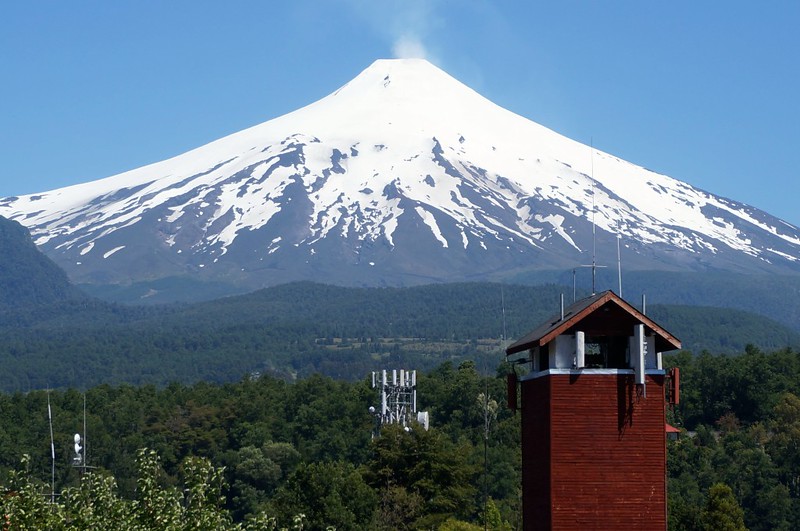
One of the best adventures in South America is the icy climb up the very active Villarrica Volcano. Located just outside of Pucon, Chile , it’s an intense summit that requires the use of crampons and an ice pick to hoist yourself up the ice sheet covering the top of this treacherous volcano.
To stay safe, it’s important to pursue this adventure under good weather conditions and with an experienced guide.
While it may sound a bit scary, under good conditions the climb is a lot of fun and can be accomplished in a half-day. The views from atop Volcan Villarrica are spectacular, as you can gaze down for miles to see picturesque lakes and other volcanoes on the horizon.
For those who accomplish the summit, it’s also an interesting sight to peer down into the smoldering cone.
Yet the biggest thrill of this entire excursion is sledding down the side of the volcano. To get down, you jump on a sled to fly down what felt like makeshift luge tracks. It’s such a rush and the sledding lasts for nearly an hour.
We recommend pursuing the Villarrica Volcano climb in early-to-mid summer (late November to early January). During this time, there’s still plenty of solid ice and snow-packed onto the volcano but you’ll hopefully avoid major snowstorms that sometimes plague the winter months.
But most importantly, go when Volcan Villarrica is not erupting, as it’s been very active for the past couple of years. In fact, it was only recently that this trek was reopened to climbers. So go now, before the next eruption.
Contributed by John, Roaming Around the World
22. The W Trek (Chile)

This is the most epic trek I’ve ever undertaken, a 5-day onslaught through incredible landscapes across one of the world’s most Southern national parks.
After jumping off the ferry, the first day is spent hiking up to the magnificent glacier grey, 6km wide and over 30 meters high. On a clear day, this thing just seems to go on forever, it is quite breathtaking.
The trek then continues over 85km in total, stopping at checkpoints along the way and constantly pushing your body up and down the mountainous terrain.
It is possible to stay at overpriced lodges but the more adventurous choose to camp, in gear you carry yourself across the whole journey.
If you time everything right on the final day you can hike up to the viewpoint of the famous Torres Del Paine for sunrise and watch the mountain peaks glow as they bathe in the morning light.
The park is technically open all year round, but try to visit between October and April as it gets a little cold out of season. All camping gear can be hired from the town of Puerto Natales, so book a few days here before and after your trek.
Contributed by Jon, Adventure in You
23. Diving with Moai on Easter Island (Chile)

It was one of my dreams to visit the Easter Island off Chile’s coast – well it’s more than simply off the coast, actually, it’s a 6 hours flight from Santiago de Chile, but worth every second and peso.
As a passionate diver, I knew I had to see more than the island itself and to take a day and spend it exploring the water.
Diving on Easter Island is good at any time of the year when the ocean is calm. I visited late August and stayed for five days. The dives are rather easy, but there are some sites where more experience is necessary to conduct a safe dive.
There are some dive shops on the island, I chose to go with Mike Rapu Diving Center. Email them or visit them at the shop to know about the dives and requirements.
My favorite dive was the one where they sunk the Moai statue – and I have to disappoint you: the statue is not one of the original ones, but was made to remember someone and was then sunk there.
Still, it’s a great dive, a bit chilly, but you’ll appreciate the hood and hot showers afterward.
Contributed by Viktoria, Chronic Wanderlust
24. Camping in the Bolivian Amazon (Bolivia)
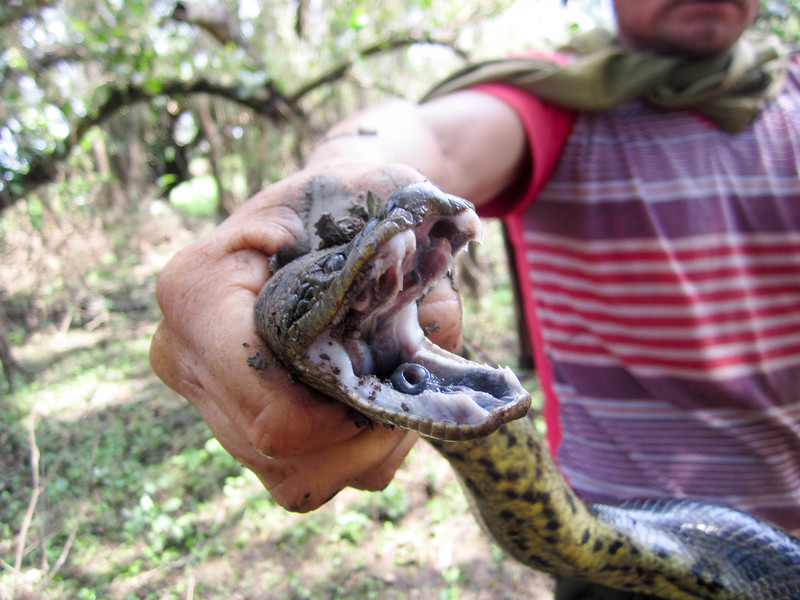
As humans, we live a relatively safe existence, so the only place I have ever felt vulnerable within my environment was while camping in Bolivia’s Amazon Rainforest.
As a slowly disappearing and iconic region, no visit to South America would ever be complete without a morning dip in a river teeming with caiman or fishing for piranha in an unstable boat for that evening’s meal, followed a hike at night eerily watched by glowing eyes while a guide hacks at the scrub with a machete.
Then finish the day rudimentary tenting – otherwise known as a plastic sheet thrown over a tree branch.
But a trip to the Amazon isn’t all peril and risk, we also spent afternoons making jewelry with various seeds and alligator scales while listening to the deep yowls of howler monkeys, created temporary tattoos with jagua fruit and learned uses for Amazonian flora and fauna.
The Amazon can be accessed through nine South American countries, but Bolivia is arguably the cheapest and a two-night all-inclusive camping trip costs just B$900/US$130.
These trips can be extended up to a month if you wanted to become completely immersed in the Amazon way of life and learn to live entirely off the jungle.
The best time to visit the Bolivian Amazon is during the dry season (May to October) and can be reached via Rurrenabaque, the frontier town access the Rainforest and the easiest place to book a camping tour.
Contributed by Emma, The Travel Natural
25. Mountain Bike Down Death Road (Bolivia)
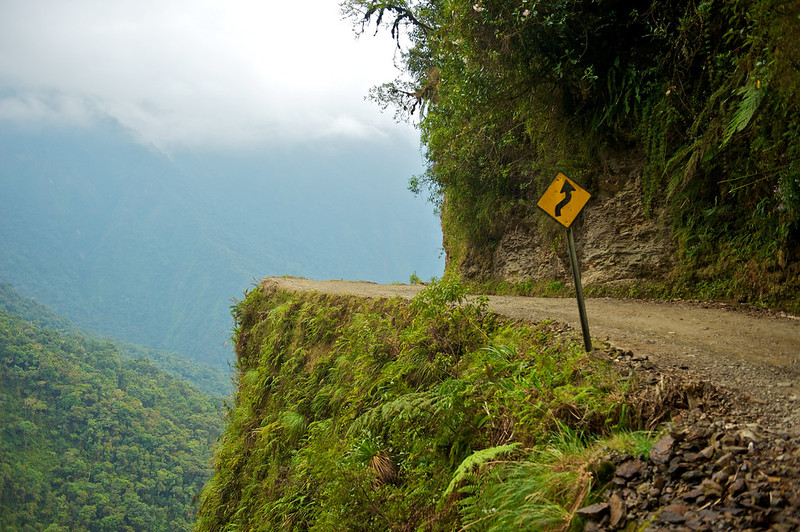
One of the most exciting activities in Bolivia is riding a bicycle down Death Road. The road in question is Yungas Road which for many years was the main thoroughfare to La Paz from many small mountain villages.
The road itself is barely one lane, with only a few wider turnouts for passing. However, it is operated as a two-lane road with massive commercial trucks and buses going to and fro.
Throughout the years, hundreds of motorists have lost their lives on this small stretch of road, earning it’s named as the World’s Most Dangerous Road.
These days, you will not encounter as much traffic as you would have 15 years ago, but it’s still an adventurous 60 km ride barreling down bumpy mountain roads.
The ride starts out on a fairly decent paved road before arriving at the beginning of Death Road (El Camino de la Muerte). Quickly, the road becomes more of a gravel path than the smooth asphalt, which can make for scary stops!
This ride is not to be taken lightly, there are some very extreme drop-offs of at least 1,800 feet. In sections, it is very steep, which means your back brake is constantly in use to control your speed around the many hairpin curves.
As a bicycle rider going down the hill, you will be on the cliffside with oncoming traffic against the mountainside. Be aware, there are very few guard rails to protect you from flying over the edge!
The thrill of hurtling down the mountainside on a bike is indescribable. Even with the adrenaline rush and fear, you can’t help but notice how amazing the scenery is.
You will be greeted with fantastic views of the valley and surrounding mountains. Riders can stop as they wish to take photos, but there are also safer sections where guides will stop riders for a chat, to tell more about the area and to provide breaks for photos.
Riding down the World’s Most Dangerous Road can be conquered by beginners and experienced riders alike and everyone else in between. You need to see it for yourself, as photos do not do it justice.
Tip: Do your due diligence in researching tour companies in La Paz. Some focus more on safety gear and expensive bicycles, while others focus on providing experience at budget prices.
Contributed by Karilyn, No Back Home
26. Overland Through Uyuni to the Atacama (Bolivia)
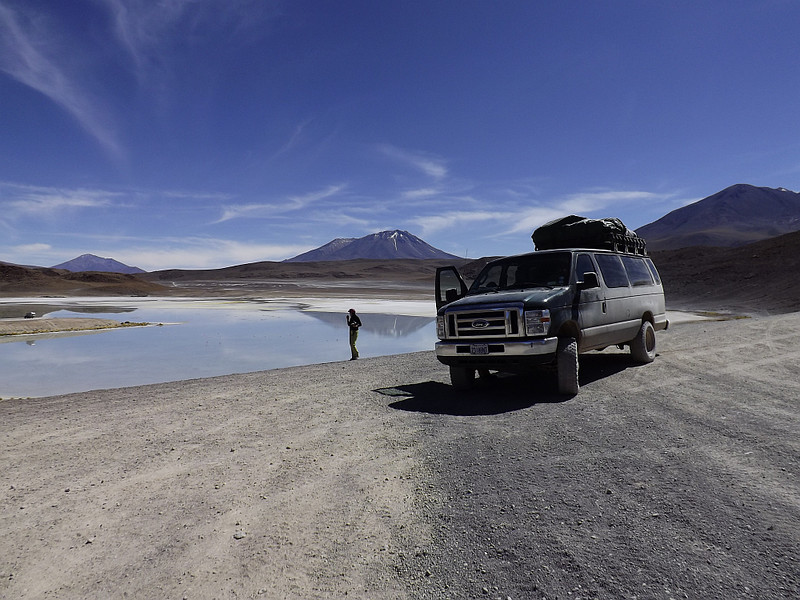
You’ve probably seen a thousand photos from travelers on the Uyuni Salt Flat of Bolivia. Where did they go after that? Most head back to town, but a few keep going.
They cross the huge salt flat and stay on the other side. They visit islands and villages on the rim. Then they venture into an area with almost no other vehicles or people: the southern desert of Bolivia.
If you’ve ever dreamed of truly getting away from it all, being in a land so quiet you can hear your own heartbeat, this overland trip will do nicely.
You see the whole galaxy at night, see clear daytime skies that look just as they did a thousand years ago, without the plumes of jets passing overhead. No cell signal. No internet for days. No garbage trucks or traffic horns.
Most of the time, no people except your companions. Light is supplied by solar and gas lanterns at night since everything is off the grid.
This is far from a lifeless zone, however. Colorful birds land on the strange rock formations and long-tailed rabbits hop around outside where you’re sleeping at night.
At the gorgeous lagoons dotting the landscape, it’s common to see hundreds of pink flamingos. Compact moss that can grow and expand for centuries adds a bright green touch to the brown rocks and blue sky.
We explore a crystal cave, boiling mud springs, and lakes of many colors while leisurely making our way toward the tourist draw of San Pedro de Atacama in Chile.
There, as in Uyuni, there will be touts and tour agencies, bars and babes, restaurants and rum, friends on Facebook.
Between the two, however, there’s a land where you can still feel like an explorer rather than customer number 23 on the day’s excursion list.
Several companies run this tour out of Uyuni and San Pedro, but the best bet is a Travesia by explora. That company has its own permanent camps set up with private sleeping rooms and real bathroom facilities.
Contributed by Timothy, Luxury Latin America online travel magazine
27. Trekking the Quilotoa Loop (Ecuador)

Why waste your time trekking to a lousy summit when you could finish your hike at a 3km wide, brilliant green crater lake? The network of some 200km of Andean trails south of Quito makes up the Quilotoa Loop.
The route is more of a choose-your-own-adventure than a regular trail, as the Quilotoa Loop trek can take anywhere between two days and two weeks.
Along the way, you’ll sleep in tiny Ecuadorian villages like Insinliví, Chugchilan, and Sigchos and enjoy some of the coziest nights of your life.
You’ll see vast expanses of agricultural land, hike into jagged valleys, and get lost more than you really know the way. And just when you’re sunburned and exhausted from too many days of trekking, all trails eventually lead to the spectacular Laguna de Quilotoa.
You’ll climb over the volcanic rim upon one of nature’s greatest wonders, and it will be worth all the energy you put into getting there.
Contributed by Taylor & Daniel, Travel Outlandish
27. Cotopaxi Horse Trek (Ecuador)

When we planned our trip to Ecuador, horseback riding wasn’t something we were really looking forward to. It was mainly a means to an end for us – a chance to see and photograph the legendary Cotopaxi volcano from a unique vantage point.
Both of us had been on horses when we were younger and didn’t enjoy the experience.
Cotopaxi is the world’s highest active volcano. It’s notorious for being unpredictable: strong winds and sudden storms are common. Not long after we left Ecuador, the volcano had an eruption.
One of the best ways to experience Cotopaxi is actually horseback riding up the grassy Pasochoa or rocky Rumiñahui volcanoes nearby and viewing Cotopaxi from across the valley. We chose Rumiñahui.
High up on Rumiñahui, we had an unexpected surprise. No, it wasn’t views of Cotopaxi. Overhead, we were joined by an Andean Condor – the largest bird on Earth. It soared above us. And then there was another. And another.
Soon the sky was filled with these majestic endangered birds. They would dip down to only 40 feet above our heads. It was an incredible moment. Looking back, horseback riding the volcanoes of Ecuador was the highlight of our trip.
Most of the horseback trips leave from Hacienda El Porvenir at the edge of Cotopaxi National Park. Trips range from ½ day excursions to multi-day rides and are possible throughout the year (except when there is a volcanic eruption).
Contributed by Lance & Laura, Travel Addicts
28. Galapagos Kayaking Expedition (Ecuador)
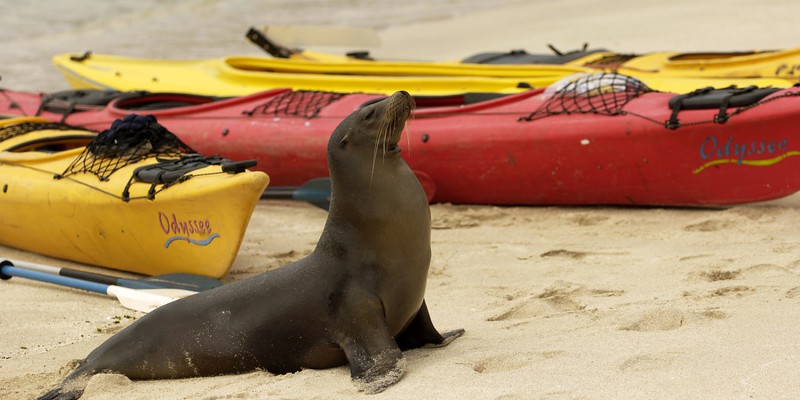
The Galapagos is all about wildlife. An incredibly diverse menagerie of remarkable animals thrives on these remote islands, scattered nearly 700 miles off the coast of Ecuador .
The seclusion of this archipelago honed the development of unique animals, untouched and unafraid of human civilization. Though the Galapagos now allows a limited number of visitors to its enchanted shores, careful habitat-management preserves this special ecosystem.
The beauty of a sea kayak as a vessel for wildlife viewing lies in its non-intrusive, eco-friendly presence with all the makings of a true adventure experience.
The best itinerary available operates with small group sizes on an 8-day kayaking and camping trip around the Galapagos Islands. 5 of the nights are spent beach camping, while your days are spent paddling and meeting the many inhabitants of these islands.
Prepare to meet giant tortoises, iguanas, blue-footed-boobies, penguins, sea lions, and an endless variety of underwater life during the whole duration of the expedition.
29. Hiking Cocora Valley (Colombia)
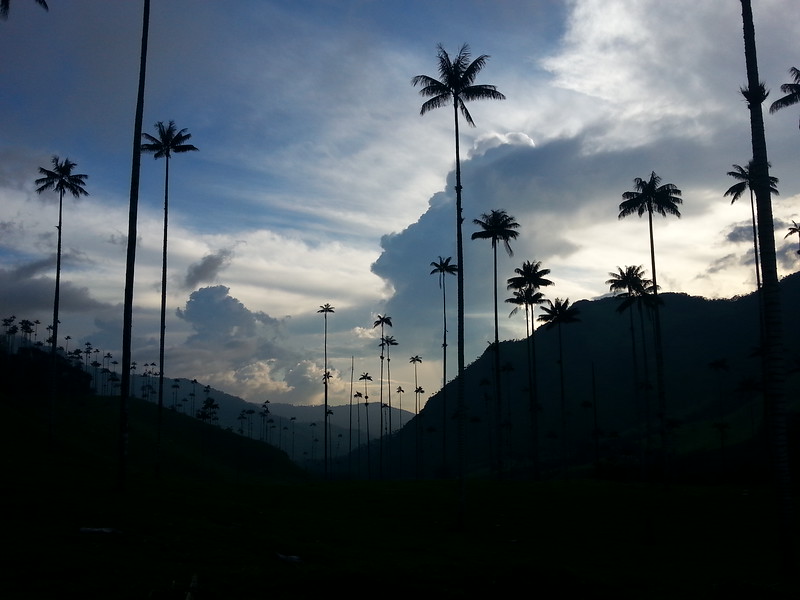
Hiking the Cocora Valley in Colombia is an incredible experience through one of the most stunning valleys I have ever seen.
Following the trail around the valley, you’ll find yourself scrambling through streams, clambering over rocks and traversing rickety bridges, to finally be rewarded with phenomenal views.
Beginning with a flat trail through lush green fields and following a gentle river, you will soon start to climb through the forest, to a hummingbird sanctuary where you can take a rest & watch several species of these tiny birds whizzing around.
Continue the hike to finally emerge on the mountainside for mind-blowing views of the valley below. Eerie Quindío wax palms tower above the skyline as you descend into the valley.
The tallest palm trees in the world peer through the mist, some reaching heights of 200 feet, and you can’t help but gaze in awe at the landscape!
The hike can take anywhere from 4 to 7 hours, depending on your speed, and how many photographs you take! It’s best during the dry season from March to July, as it can get VERY muddy after rainfall.
Comfortable, waterproof boots are a good idea any time of year, as is a rain jacket , sun cream, snacks and plenty of water. And be aware that the only place to stop for the bathroom is in the hummingbird reserve, or in the fresh air!
Contributed by Claire, Tales of a Backpacker
30. Trek to the Lost City- Ciudad Perdida (Colombia)

Thick jungle, high humidity, natural river pools, dazzling waterfalls, native tribes and the camaraderie of our wonderful group and guide is what made hiking to the Lost City (also known as Ciudad Perdida) one of the best hikes of my life.
The trek is certainly not for the faint-hearted. Days are long and the humid heat can drain you. However, the long days were much easier to manage thanks to the various natural freshwater swimming pools along the way.
It was a great feeling to pull off my sweaty t-shirt and jump into a cold river. At night, we’d sleep in hammocks or bunk beds with nothing but a roof over our heads.
Occasionally, we’d have to ask our guide to get rid of the odd scorpion in the bathroom. He would then take out his machete and kill it. I guess he didn’t want to take any chances.
Then, after 3 long days, we made it. After climbing up hundreds of stone stairs, we were standing on the foundation of an ancient stone city, discovered only in 1972.
With distant views of the lush jungle valley, I sat down at the edge of the stonewall and marveled at the natural beauty surrounding me and reminisced over what was easily one of the best hikes in the world.
The dry season runs from December to March and is a better time to go if you don’t want to be hiking through mud, crossing chest-high rivers, or getting poured on by rain.
However, if you’re okay with added adventure, tours are done throughout the year. You will need a guide. The name of our guide is Omar. He was fabulous and if you can find him, I highly recommend it.
At the time, we went with Turcol Tourism but Omar might have started his own tour company by now and there are many in the area.
Expect high heat and humidity. Guides provide food and lodging but you’ll need to bring anything else. I recommend bringing just one set of clothes for hiking and another DRY set of clean clothes for the evening.
Contributed by Matt, Live Limitless
31. Laguna de Guatavita Hike- Legend of El Dorado (Colombia)

Few places in the world have been shrouded in as much mystery, speculation and research as the quiet waters of a small crater lake outside of Bogota, Colombia.
It is rumored that the depths of Laguna Guatavita was where the Muisca Cacique would come and offer gifts to the Goddess of water by launching their golden treasure into the muddy depths of the lake.
Is there a better way to experience the history and mystique of a country than by following in the footsteps of the most historic stories? The hike up to Laguna de Guatavita offers so much more than just mystery.
Surrounded by the beautiful Colombian jungle, and offering sweeping views of the countryside, this adventure will transport you back in history. You can almost picture the Inca floating on the lake offering prayers and sacrifices to the gods as you stand at the precipice of the steep caldera.
Laguna de Guatavita is a little over an hour drive from central Bogota, and getting there involves a fascinating drive through the blue-collar barrios on the outskirts of the city, and along beautiful Lake Guatavita.
The hike to the top is a long and steep one, but the steepest sections have well-built stairs and platforms to help you along the way. Just don’t get too tempted to dive into the waters and search for the gold yourself.
Entrance into the waters of Laguna de Guatavita is now banned after centuries of intrepid treasure hunters had failed to pull but a few items from the water.
Contributed by Kevin, Wandering Wagars
32. Kaieteur Falls Trek (Guyana)
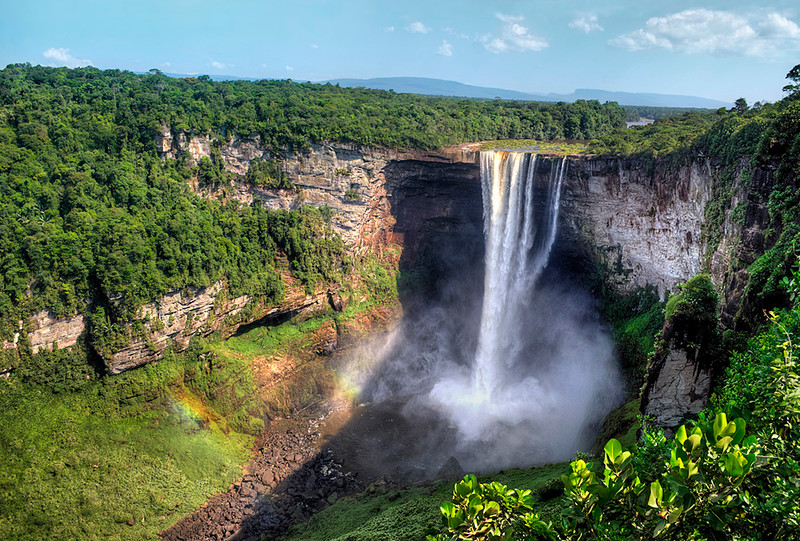
Kaieteur National Park is Guyana’s first legally protected area. It is known for the majestic Kaieteur Falls, considered to be one of the highest single-drop (741 ft) waterfalls in the world.
In addition to Kaieteur Falls, the rich biodiversity, some of which are endemic to Kaieteur National Park, ensures a highly educational, adventurous and challenging experience while traversing through its pristine Amazonian rainforest.
The overland trek entails traveling by land, water and foot (hiking approximately 1,800 ft above sea level) to the Kaieteur Plateau and takes between 3-5 days depending on the itinerary and interest.
Categorized as a hard adventure hike, prices start at $795usd per person including transportation, meals, light refreshments, entrance fees, and guides. Kaieteur Falls holds a place on the Top 100 Travel Adventures in the world.
33. Trek to Mount Roraima & Angel Falls (Venezuela)
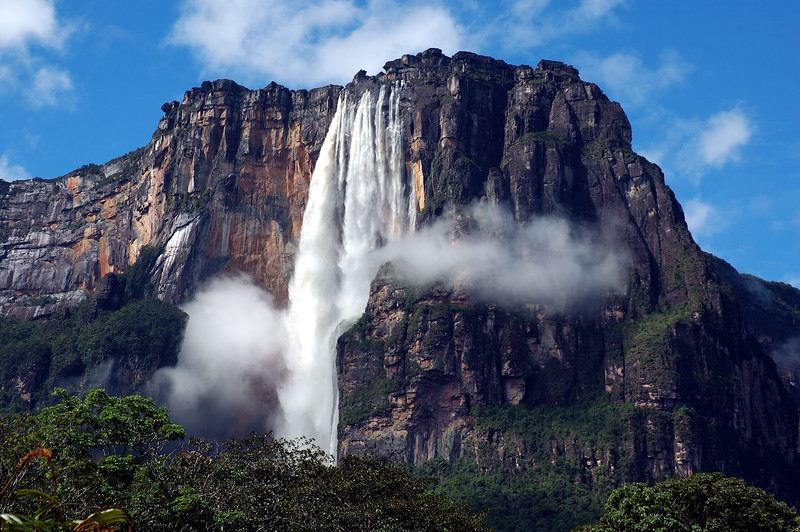
Angel Falls is the highest uninterrupted waterfall in the world. It has a height of 979 meters and drops over the edge of the Auyantepui mountain in the Canaima National Park.
The waterfall is located in the middle of a thick jungle, which makes accessing it a great adventure that takes days and involves a variety of transport.
Just to visit Angel Falls, you need around 7 days to make the journey into the jungle before hiking to the falls.
Many people aim to combine the Mount Roraima trekking expedition with Angel Falls for a full-on adventure experience.
Be sure you have 14 days or more to tackle this combo and bring a sense of humor. It’s a beautiful part of the world but not easy to access. This is one of the best things to do in Venezuela .
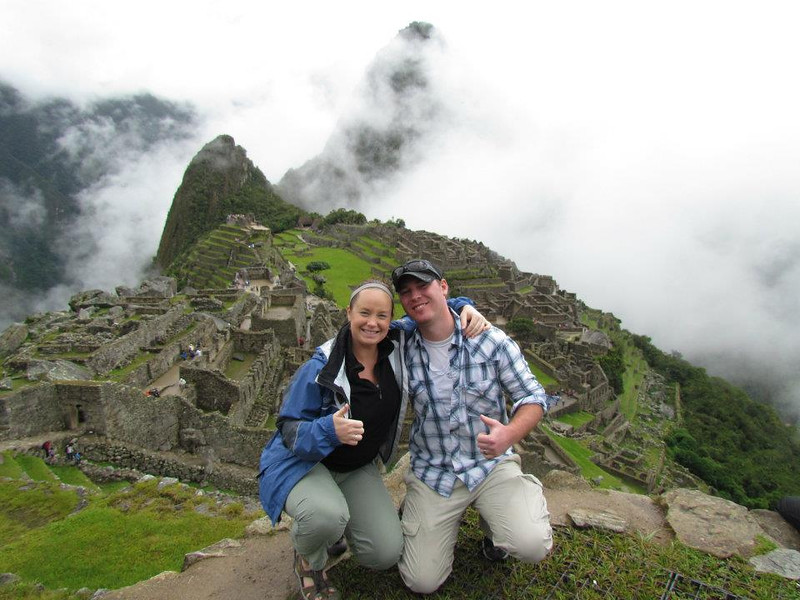
South America is a diverse continent with so many different things to offer a traveler.
We hope we have inspired you to consider a journey outside your comfort zone and give you some ideas to bring out the adventurer in you as well.
More on South America:
- Two Week Trip to Brazil Itinerary for Any Traveler
- Ilha Grande, Brazil Planning Guide: Paradise Found
- 5 Days of Hiking in Patagonia: The Basecamps Trek
- 11 Cool Things to Do in Peru + Planning Tips
- How to Visit the Amazon in Peru
- 16 Amazing Things to do in Brazil
- 16 Epic Things to do in Bogota
- Unique Galapagos Islands Animals You Must See
- Galapagos Luxury Cruise on the Sea Star Journey
- 7 Exciting Things to Do in Venezuela (If You Dare to Go)
Did you like this story? Share it!
Travel planning resources, about lina stock.
Lina is an award-winning photographer and writer that has been exploring the world since 2001. She has traveled to 100 countries on all 7 continents. Member: SATW, NATJA, ATTA, ITWA
7 thoughts on “33 Best Places to Visit in South America for an Epic Adventure”
Ohh wow! lots of wonderful places in South America, I can’t decide which I would go first.
I’m excited to go to the next one!
South America is indeed full of breath-taking sceneries. Hopefully, I could visit them soon.
I’m excited to visit south Am soon!!
Lots of great adventures there! Safe travels.
Excellent post – delighted to be a part of it! Have pinned and sharing to all our friends. Aiming to replicate that final Machu Picchu picture next month 🙂
So many incredible adventures here! South America is an amazing continent, and so diverse with it’s landscapes and opportunity for adventure … I’ve only really touched the surface and would love to get back for more!
Thanks for including our experience at Peru 🙂
Leave a Comment Cancel reply

Subscribe & get your free guide to going abroad!!
9 Epic South America Backpacking Routes: The Best Itineraries and Ultimate Travel Guide
Backpacking South America is an incredible experience that will leave you with lasting memories and a yearning for more. Planning the adventure of wandering such a vast continent can seem intimidating, but this article will demystify how the adventure can be simple yet more fulfilling than any travel experience you’ve ever had. In this guide to backpacking South America you’ll discover the best options for exploring my favorite continent, tips for getting off the beaten track, and everything you need to make your trip as smooth, amazing, and memorable as possible.
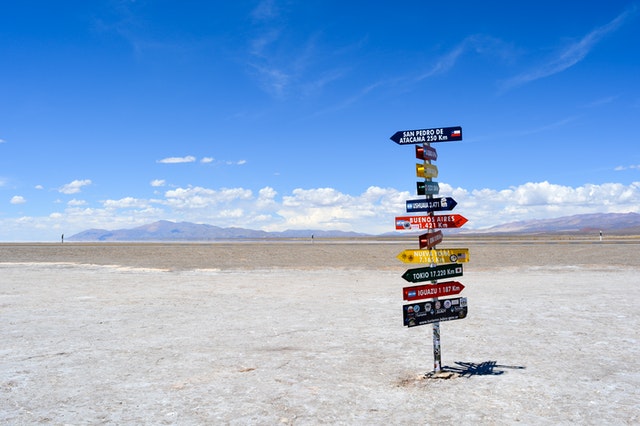
- Why You Should Go Backpacking in South America
- 2 Week Itineraries
- 1 Month Itineraries
- 3 To 6 Month South America Itinerary
- Essential Info for Your South America Itinerary
- South America Travel Budget
- Where To Start Your South America Backpacking Trip Buenos Aires Santiago Or Medellin
- How To Get Between Countries in South America
- The Galapagos Islands
- Where To Next Central America and Beyond
- What About Brazil and Venezuela
- Now That You Understand the Highlights Of Your Destination
- More Essential South America Info
WHY YOU SHOULD GO BACKPACKING IN SOUTH AMERICA
Backpacking South America is an amazing experience! You’ll experience unique cultures, hike up active volcanoes, hike through lush Amazon rainforests, raft down giant waterfalls, and explore some of the most beautiful beaches you’ve ever seen. There will be challenges, but the rewards will be well worth all of the hard work.
TOP 10 HIGHLIGHTS OF SOUTH AMERICA
- Patagonia and Torres del Paine National Park and El Chalten (Los Glaciares National Park)
- The Galapagos Islands: Living among wild animals on land and sea
- Buenos Aires : The gritty Paris of South America
- Machu Picchu: Ruins of an ancient empire
- The Lost City: An often missed highlight just as remarkable as Macchu Picchu
- Food: Lima and Buenos Aires
- Alien Landscapes: The high desert of San Pedro de Atacama and the salt flats of Uyuni
- Wine: Mendoza wine country of Argentina and the equally remarkable Chilean wine country
- Tayrona National Park with a campground nestled against the ocean and Minca highland coffee country, meer minutes away
- Hiking up snow covered volcanoes and sliding back down
- San Carlos de Bariloche and the Lake Districts and trekking through some of the most beautiful nature in the world
- The Perito Moreno Glacier, this vast icefield is the third largest reserve of fresh water in the world
Still planning your trip? Be sure to read our article on the best times to visit South America and wehere to go if you’ve already booked.
THE BEST SOUTH AMERICA BACKPACKING ROUTES AND ITINERARIES
In this article, we’ll share the highlights you need to know about all the best routes for backpacking South America and countries you need to visit on your South America trip to help you figure out the perfect backpacking route for you. However, feel free to click the links below for the perfect itinerary for 2 weeks by region, 1 month by region, and 3 to 6 months in South America.
2 WEEK ITINERARIES

2 Weeks in Patagonia
- San Carlos de Bariloche (2-3 days) and the lake district
- El Chalten (2-5 days) and trekking Parque Nacional Los Glaciares
- El Calafate and Perito Moreno Glacier (1 day)
- Puerto Natales (1+1 day) in prep for the Torres del Paine trek
- Torres Del Paine National Park (4 days for W trek, 7 days for circuit trek)
- Ushuaia (2 days) to expererience the end of the world and fly home
2 Weeks of Argentina, Chile, and Uruguay
- Optional: Montevideo and Colonia in Uruguay (2 days ) Experiencing a smaller more polite Buenos Aires
- Iguazu Falls (1 day) UNESCO heritage site that dwarfs Niagara Falls
- Mendoza (2 days) Argentine wine country experienced by biking between vineyards and wine tastings
- Santiago (2-3 days) Absorbing Chile’s capital through, art, history museums, restaurants, and nightlife
- Chilean Wine Country (1 day) Just as charming and intoxicating as Mendoza
- Pucon (2-3 days) Hike up a volcano and go where Chileans vacation
- San Carlos de Bariloche (2-4days) A trekking mecca (day hike or multi-day) that only a handful of places in the world compare to
- San Pedro de Atacama (2-3 days) : The clearest skies in the world allow you to see more stars than you’ll ever see anywhere else
2 Weeks of the Incan Experience – Peru and Bolivia
- Lima (2-4 days) : The best culinary scene in all of South America
- Cusco (2-3 days) : The gateway to Macchu Pichu against a backdrop of hipster polished Peruvian food and drink
- Sacred Valley (1 day) : A calmer, emptier way to discover the Incas
- Macchu Pichu and Aguas Calientes (1 day) : The highlight of Peru and (for some) South America
- Colca Canyon (2 days)
- Lake Titicaca (1-2 days) : The “highest navigable lake in the world”
- La Paz (1-3 days) : The highest de facto capital in the world, with a “frontier feel”
- Salar de Uyuni (Salt Flats of Uyuni)(2 days – ~3 to 5 days for SUV tour)
- La Paz (1 day) : Returning home
2 Weeks of Alien Landscape – High Altitude Deserts, the Bolivian Altiplano, and Salt Flats
- Santiago (2 days)
- Valparaiso (1 day)
- Atacama Desert + San Pedro de Atacama (2 days)
- Uyuni + Salar de Uyuni (2 days)
- La Paz, Bolivia (1 day)
- Lake Titicaca + Puno , Peru or Copacabana , Bolivia (1 day)
- Cusco (2 days)
- Macchi Picchu (1 day)
- Lima (2 days)
2 Weeks of Animals and Biodiversity – Galapagos, Volcanoes, and the Amazon
- Quito (2 days) : Acclimate to South America in this relaxed and conservative capital
- Otavolo and Otavolo Market (1 day) : Soak up local culture and shop for souvenirs at this uniquely Andean market
- Mindo Cloud Forests (1 day) : An extremely boidiverse subtropical forest that is like few other places in the world
- Galapagos – Isla Isabela (2-3 days)
- Galapagos – Isla San Cristobal (2-3 days)
- Galapagos – Isla Santa Cruz (2-3 days)
- Other options: Avenue of the Volcanoes, Antitana ecological reserve
1 MONTH ITINERARIES
1 month in southern south america.
- Buenos Aires (3-5 days)
- Montevideo and Colonia Del Sacramento (2 days)
- Iguazu (1 day)
- Cordoba (1-2 days)
- Mendoza (2 days
- Santiago (2-4 days)
- Valparaiso (2 days)
- Pucon (2-3 days)
- San Carlos de Bariloche (2-5 days)
- Puerto Natales (1 day – in prep for Torres Del Paines National Park
- Torres Del Paine National Park (4-8 days)
- Ushuaia (2 days)
1 Month in Northern South America
- Bogota (2 days)
- Medellin (2 days)
- Guatape (1 day)
- Cartagena (2 days)
- Zona Cafatera and Cali (2 days)
- Quito (2 days)
- Otavolo Market (1 day)
- Mindo Cloud Forests (1 day)
- Galapagos – Isla Isabela (2 days)
- Galapagos – Isla San Cristobal (2 days)
- Galapagos – Isla Santa Cruz (2 days)
- Sacred Valley (1 day)
- Macchu Pichu (1 day)
- Optional: Colca Canyon (2 days)
- Lake Titicaca (2 days)
- La Paz ( 1 day)
- Salar de Uyuni (Salt Flats of Uyuni (2 days)
- La Paz (1 day)
1 Month of South America Highlights
About the optimal time backpacking South America: The truth: one month aiming to experience all of South America is pushing it as that timeframe is much better suited for a single large country or a couple of small ones than experiencing a whole continent. Argentina, Chile, and Colombia can each easily take a month each when traveling at a comfortable, cost-efficient pace and absorbing the culture. Ecuador, Bolivia, or Peru could be paired as couplets for a good month of travel as well.
But for those with limited time and lots of ambition, we’ll share an itinerary, or more so a list of destinations and minimum timeframes, for blazing through the best of South America in one month.
The balance: Try to absorb the best of nightlife, food, wine, nature, history, and ruins without burning yourself out by being discriminating about your destinations.
How to use this itinerary: Highlight half of the locations that are absolute essentials for you based on your interests and bucketlist, and the 3 places/sites that are your top priority as you’ll want to spend extra time in them. For the remaining half, get comfortable with either breezing through them – to save time – or skipping them altogether – to save money and energy. As such we’ve listed recommended minimum days for each experience so you can patch together the itinerary that suits you based on the best South America Highlights for a month-long trip without burning out or wasting time.
- Buenos Aires (2 days)
- Mendoza (1 day)
- Santiago (1 day)
- Valparaiso (1 day
- San Pedro de Atacama (from Arequipa) (1 day)
- Puerto Natales in prep for Torres Del Paine National Park (1 day)
- Torres del Paine National Park (4 days) – only covers the W Trek
- Ushaia (1 day)
- Salar de Uyuni (2 days – accounting for bumpy transit time)
- Cusco (1 day)
- Maccu Picchu and Aguas Calientes (1 day)
- Arequipa (1 day)
- Lima (1-2 days)
- Guayaquil –> Galapagos Islands (5 days)
- Quito (1 day)
- Cartagena (1 day)
3 to 6 Month South America Itinerary
3 to 6 months is the perfect period of time for backpacking all of South America, with 4 months being the minimum sweet spot. The only difference between a 3 month South America itinerary and a 6 months is that we move at a slower pace and take more rest days.
6 months on the road is exhilarating, exciting, and a wonderful opportunity if you’re spending it all in South America. By being able to slow down, and spend a week in Buenos Aires , Medellin, and Galapagos, instead of mere days you’ll fall deeper into the experience and more in love with the continent. You’ll notice smaller details and absorb more as you will be in a less rushed mindset. Additionally, scheduling 1 to 2 days per week of no travel or sightseeing will leave you rejuvenated, refreshed, and a more hungry and interested traveler.
For this itinerary, we will list all of the recommended highlights of South America with the recommended timeframes for slower travelers. Be sure to take that recommended 1 to 2 days “off” per week, and don’t be afraid of getting stuck in a destination that captures your heart for a little longer than planned – just go with it.
- Buenos Aires (7 days): A perfect introduction to South America with plenty to do and great food. Consider taking Spanish lessons here
- Iguazu (1 day): Account for the extremely long bus ride in from Buenos Aires and know this waterfall will be worth the trip
- Cordoba (2 days) : Practice your Spanish in this university town surrounded by outdoorsy experiences
- Mendoza (2 days): Set aside one day for “bike and wine” tour wine tasting between vineyards of nearby Maipu, and relaxing in Mendoza proper
- Santiago (2 to 3 days): Explore Chile’s capital with heavy focus on history and art museums, nightlife, and just wandering
- Valparaiso (2 days): Explore the hills, graffiti, and nightlife one day, and soak up the towns vibe the next lounging and dropping in on beaches the next
- Pucon (2 days) : Climb Villarica volcano and slide down one day, spend the next sipping coffee and enjoying a popular Chilean vacation spot as locals do
- Puerto Natales and Torres Del Paine (11 days): Give yourself 1 day to prep, 7 to 9 days to do the “Circuit Trek” through Torres del Paine, and 1 day to recover back in Puerto Natales with a warm house and hot meal
- Ushaiia (2 days): Get the post office stamp in your passport denoting “the end of the world,” take a day trip to see penguins, and wander the city to catch “end of the world vibes.
- San Pedro de Atacama and the Atacama desert (2 days) : Give yourself time to explore by night and account for potenital hiccups on the travel to and from Atacama
- La Paz (2 days) : Explore the town, markets, and street food, then day trip to ride the “world’s most dangerous road”
- Salar de Uyuni (2 days): Experience the salt flats on a day tour fromUyuni and allow time for mishaps when arriving/departing
- Cusco (3 days): Visit the museums, do a free walking tour (or 2), and walk within and outside the city to discover ruins everywhere. Additionally, explore the nightlife and food scene thoroughly as it is just as strong as in Lima but with a Peruvian hipster vibe
- Sacred Valley (1 day) : Soak up Incan ruins without the crowds and chaos of Macchu Pichu
- Macchu Pichu (1 day) : Visit the highlight of Peru and inspiration for the character Indiana Jones
- Lake Titicaca + Copacabana/Puno (2 days) : Expereince the highest navigable lake in the world, and the culture that lives by its existence
- Lima (4 days) : Explore art, gourmet food & drink, and nightlife in this metropolis
- Guayaquil –> Galapagos Islands (7 to 10 days) : Slow travel through the Galapagos archipelago choosing as many independent and self guided experiences as possible for a richer, more pleasant experience
- Quito (2 days): Relax and wander, visit the equator, and just decompress in this relaxed and mellow stop
- Bogota (2 days) : Explore the museums (such as Museo del Oro), walking tours that cover the complex history, and nightlife including arguably the best nightclubs in South America in Colombia (and Latin America’s) financial center
- Medellin (4 days): Soak up the good life in a uniquely Colombian, vibrant, and complex place, starting with free walking tours, then visiting museums and eco-parks, following on with nightlife and (ideally) learning to salsa dance)
- Guatape (1 day): Visit a beautiful site in the mountains that looks like thousands of forested islands grew out of a lake
- Cartagena (2 days): Experience the Caribbean at its most “Caribbean” you’ll find in South America – outside of Baranquilla Carnival
- Santa Marta (1 day)
- Minca (1 day): Visit an organic and hydroelectrically powered coffee processing station and plantation
- Tayrona National Park (2 days): Hike in and camp by the ocean for at least a couple of nights
- Cali, Salento, and Zona Cafatera (2-4 days): Discover more than you ever wanted to know about coffee while basking in the home of salsa dancing, and perhaps taking some lessons
ESSENTIAL INFO FOR YOUR SOUTH AMERICA ITINERARY
Travel through South America is uniquely suited for backpacking or any long term travel experience that aims to embrace experiencing local culture, food, language, and nature in a less structured way than package tours, all on a rather small budget. Compared to that required to travel North America, Western Europe, the Middle East, and many parts of Africa, the $40 to $60 per day budget of South American countries (varying by country) is one of the main reasons I recommend South America, as well as Southeast Asia as the perfect first time backpacking destinations.
In return for flexibility of timeline and compromising on 4 star accommodation in favor of hostels, guest houses, and refugios, you’ll receive a one of a kind travel experience in return – a more contiguous expereince than Southeast Asia in culture and language, a more outdoorsy experience that revolves less around beaches and more around mountains, and lastly urban experiences that somewhat echo a gritty yet more vibrant version of traveling Europe. Architecture, food, and travel infrastructure abound but are still uniquely “Latin American” with a different indigenous touch and richness in every country and region.
Here, we’ll review some of the general and basic essentials that you should keep in mind while planning for your itinerary overall as well as each country and segment of your itinerary.
SOUTH AMERICA TRAVEL BUDGET
Travel in South America is in a very reasonable price range – between $40 and $60 a day for a backpacker style budget, averaged across all countries, assuming shared hostels, eating out once per day, and DIY traveling as much as possible.
Compared to other regions of the world, South America travel tends to be more expensive than Southeast Asia travel, which averages ~$35 per day, but slightly cheaper than traveling the Balkans, and much cheaper than traveling the USA, Western Europe, the Middle East, and Africa. In recent years, the price to travel South America has become even cheaper, relative to Europe, the Balkans and Southeast Asia as the cost of living in some of the best cities for digital nomads and backpackers in South America has dropped.
Keep in mind that Argentina, Chile, and Brazil will be the most expensive countries to visit in South America, and Buenos Aires, Santiago, and much of Brazil can become very costly if you get too caught up in the luxury lifestyle. Because of this, when planning your budget for South America plan your budget based on the amount of time you plan to spend in each country and budget much more than the $40 per day for Buenos Aires, Santiago, and Brazil in general. This way, you’ll have enough time and money for an enjoyable experience.
Tips for Saving Money in South America
- Travel by public transport between cities, specifically by bus, as much as possible, as air travel is very expensive
- Travel slower, because the longer you spend in a city, the cheaper the average cost per day becomes
- Cook at home, or at your hostel (this is common) and shop at grocery stores to “brown bag lunch” during the day to save money or order the “menu del dia” at restaurants for a cheaper option
- Quickly check the currency situation of the country you are entering next as bringing in cash dollars or Euros may garner a better exchange rate
WHERE TO START YOUR SOUTH AMERICA BACKPACKING TRIP: BUENOS AIRES, SANTIAGO, OR MEDELLIN
The best places to start your South America backpacking route are Buenos Aires, Santiago, or Medellin, due to location on the “Gringo Trail” and flight access.
Starting in Buenos Aires
Starting in Buenos Aires is the optimal introduction to South America as there are plenty of international flights arriving, the city is easily navigable and welcoming, and, with the exception of Brazil, most everything you will want to see in South America is located west and south or north making it possible to efficiently travel a loop through South America.
Within Buenos Aires, the vibe is welcoming and very European. You will be able to navigate easily in only English while you figure out the ins, outs, and idiosyncrasies of traveling in South America. Additionally, you’ll be able to take some quick and cheap Spanish lessons for a week while exploring the nightlife, robust Argentine BBQ scene, and complex history of a city that is interestingly Italian, Spanish, German, and Argentine at once.
From Buenos Aires you will be able to travel west through national parks, waterfalls, and wine country before traveling south from Santiago, Chile by bus, to hop between Chile and Argentina repeatedly and explore, trek, and camp through Patagonia until reaching the end of the world in Ushuaia.
At this point you can fly back to Santiago and proceed north, exploring Andean South America. On this leg you’ll experience the mountainous and otherworldly Bolivian altiplano, ancient Peru and the remnants of the Incan empire, the biodiverse and animal rich territory of Ecuador and the Galapagos archipelago, and the complex and vibrantly charming gem of Colombia.
From here, if you still have time on your agenda, sneak past Venezuela and explore the vast, complex, and beautiful Brazil wrapping around and ending in Sao Paulo.
Starting in Medellin
For a more direct path, start in Colombia, specifically in Medellin, to enjoy the good life, get acquainted with the vibe and way of South America, and take some Spanish lessons. Medellin is another city that is very accessible, with very cheap flights from almost anywhere in the world, easy to navigate with limited Spanish, and enjoyable while you settle in.
From Medellin, explore northern Colombia and the Caribbean as well as the Atlantic coast – extra points for timing the trip with Carnival as Barranquilla has the biggest and best Carnival outside of Rio de Janeiro and Sao Paulo – not skipping the Lost City of Colombia along the way. Then, continue falling south through Colombia, exploring coffee country and the heartland of salsa.
At the border, continue into Ecuador exploring its diversity and rerouting to Galapagos for a once in a lifetime experience.
After returning to the mainland, follow the backpacking trail south through Peru, exploring the best food scene in South America, remnants of the Incan empires, and some of the best surfing in South America.
Then, explore the rougher side of travel in Bolivia, passing through the extremely mountainous Altiplano and the salt flats.
Proceed into northern Chile and Argentina, switching from an Andean experience to a more heavily European influence, more wine, and more opportunities to camp and hike in the forested, mountainous backcountry of Patagonia instead of the rain forests of northern South America.
Continue the fall south to Ushuaia at the end of the world, potentially hopping a two-week trip by boat to Antarctica before flying up to Buenos Aires.
Spend the remainder of your trip exploring Argentina, traveling from Buenos Aires to the UNESCO site of Iguazu falls, to the university town and outdoorsy Cordoba, and the wine country of Mendoza at the base of Aconcagua, the tallest mountain in South America. Finally, hop a bus across the border to Santiago, Chile to end your South America tour.
Starting in Santiago
From the Santiago start, proceed on much the same path as starting in Buenos Aires, except travel south, Santiago to Ushuaia, then fly from Ushuaia to Buenos Aires followed by traveling west by bus, city-hopping your way to Santiago. End the South America tour traveling by bus north from Santiago to Medellin and Caribbean Colombia.
HOW TO GET BETWEEN SOUTH AMERICAN COUNTRIES
A defining characteristic of traveling South America is that it is best traveled by bus, with the flight from Ushuaia to either Santiago or Buenos Aires being the only logically necessary flight. This is partly why South America is a destination best suited for months of travel if traveling multiple countries or for a single country if traveling for less than a month, to offer sufficient time travel by bus without losing your sanity. Along the way, the slow travel of busses will allow you to soak up smaller destinations that are on the beaten path but simply less traversed.
As off-putting as longhaul bus travel sounds, the “cama,” which translates to “bed,” class of buses in South America, more common in Argentina and Chile than other places, is prevalent and consists of a large comfy seat that seems more like living room furniture and reclines completely into a bed, making overnight trips bearable and interesting but still comfy.
However, if you do decide to fly, note that domestic flights are far cheaper than flights across borders, usually by a few hundred dollars at least, even if the comparable domestic and international flights are the same length, on the same airline. Plan accordingly.
Tips for getting around South America:
- Plan on traveling by bus if possible
- Attempt to keep flights domestic to save money
- Colombia is the exception – with domestic flights being cheap and much more convenient than bus travel
- When flying to Galapagos, fly out of Guayaquil instead of Quito for cheaper prices and less headache
- Check out this article for more information on getting around South America: https://abrotherabroad.com/how-do-you-get-around-when-traveling-the-world/
COUNTRY BY COUNTRY OVERVIEW FOR BACKPACKING SOUTH AMERICA
The”Gringo Trail” through South America is one of the most scintillating and adventurous travel experiences on the planet combining urban experiences, towering mountains and ancient ruins, with friendly, vibrant culture in a way that few other destinations do. All possible on a rather small budget. As much as each country in South America embodies these traits, each country still truly has its own personality.
Argentina is uniquely European in the north, permeated with Italian culture, wine, and European architecture while having a Swiss Alpine feel in its southern experience.
Bolivia is a charmingly “rough” travel experience, taking you through high desert landscapes you might only see elsewhere in the Himilayas, and tying with Peru for its preservation of indigenous culture.
Ecuador is THE most unique place in the world to experience wild animals humanely, in a way that benefits them more than us, along with the most biodiverse landscape on the planet.
And every other country and region in South America carries its own personality and quintessential experiences.
With that said, no single itinerary or South America backpacking route is good for every traveler.
Because of this I highly recommend “getting the vibe” of each country in South America by reading our descriptions below, understanding the most easily traveled and economical route through them (the Gringo Trail) for you, starting in one of the three starting cities that interests you the most (Buenos Aires, Medellin, or Santiago) and just going.
From there, based on your passions and interests – food, wine, outdoors, architecture, nightlife, etc. – plan the travel allowing more days for the destinations and experiences you expect to love, and breezing past the destinations and experiences that just don’t get your heart racing.
In your itinerary, alot one day per activity (maximum two activities per day) and add an extra day or two of empty time in destinations you REALLY expect to love or that appear to have a lot that interests you on paper.
In the following sections, we’ll share the overview and highlights for the countries in South America you need to visit.
Click on any of the following countries to jump to our Country Quick Guides, or simply keep reading to soak it all in.
Argentina is an adventure-filled country with some of the world’s most beautiful landscapes and a great place to experience a mesh of European and Latin American culture. Backpackers should take a road trip between Buenos Aires and the Chilean border stopping at highlight cities along the way, then down South into the lake district and the Patagonian backcountry. On this simple L-shaped path you’ll enjoy the expansive, gorgeous scenery as well as its picturesque cities and easy access to the amazing food that Argentina has to offer – beef in the north and Patagonia lamd in the south.
In Argentina, real travel means experiencing one of the most poetic regions in South America: Patagonia. Throughout Argentine Patagonia, you’ll be able to hike for hours upon hours in federally protected national parks or go rafting down waterfalls through the mountain range. Backpacking Argentinian Patagonia also introduces travelers to food and cultures they likely won’t experience anywhere else in South America. The tradition of Argentine “asado” shifts from beef in the north to wild raised goat and lamb in the south. Additionally, the heritage of beer, brought by the Germans, and the establishment of mountain towns that seems remarkably Swiss and specialize in chocolate (like San Carlos de Bariloche) make for a unique experience on the Gringo trail. Be sure to try the beers by Cervezeria Austral, especially the Calafate berry ale.
Wanderers that do make it south will find endless opportunities for outdoor adventures– anywhere they go, there are infinite landscapes waiting to be discovered – from the frontier mountain of El Chalten, to just across the border in Torres del Paine National Park. while sights like El Calafate (near Perito Moreno Glacier), a quaint little fishing town that is the gateway to Antarctica due to its location near Ushuaia. Travelers in the area can rent boats for day trips onto the frozen glacier or take guided hikes with local tour operators.
There’s no shortage of activities: from trekking alongside llamas in Mendoza wine country, climbing Mount Fitz Roy (arguably one of the most
There is plenty of historic scenery and cultural heritage to explore in the north too. Buenos Aires was one of the earliest colonial settlements in South America for example. Further north “Salta La Linda” maintains an almost indigenous charm, justifying her name.
MY FAVORITES IN ARGENTINA
Buenos Aires is the capital and largest city of Argentina, as well as the third-largest metropolitan area in South America. Backpackers can take a walking tour around Buenos Aires, visiting historic districts such as San Telmo and La Boca that have preserved various architectural styles from different periods. Backpackers may also want to visit the Teatro Colon, an internationally acclaimed opera house that is home to performances from local artists and groups touring inter-America.Sa
When in Buenos Aires, Backpackers should take a walking tour around the city, visiting historic districts such as San Telmo and La Boca that have preserved various architectural styles from different periods. Backpackers may also want to visit the Teatro Colon, an internationally acclaimed opera house that is home to performances from local artists and groups touring inter-America.
Mendoza wine country offers backpackers a unique opportunity. Backpackers will find themselves surrounded by some of the most beautiful vineyards in all of South America with views of snow-covered Andes mountains in every direction. Backpackers can partake in classes about wine
Backpackers will find themselves surrounded by some of the most beautiful vineyards in all of South America with views of snow-covered Andes mountains in every direction. Backpackers can partake in classes about winemaking and tasting in Mendoza wine country. Backpackers will enjoy the expansive, gorgeous scenery as well as its picturesque cities and easy access to amazing food.
San Carlos de Bariloche and National Park Nahuel Huapi: The most beautiful and accessible hiking country I’ve seen in the world. Countless trails through forests, pasts lakes, and up mountains, with more than you could possibly do falling into the half-day category all of the way to the multi-day category making National Park Nahuel Huapi one of my favorite places in the world
El Chalten and Parque Nacional Los Glaciares: A frontier mountain town, simple and adventurous, adjacent to Parque Nacional Los Glaciares delivers a hiking and trekking experience through front country and backcountry that is somewhat of a “Torres del Paine light” experience and free – you just have to buy and pack in your food. each time I’ve visited, this has been of the most peaceful and enjoyable experiences hiking through Patagonia.
HIGHLIGHTS OF ARGENTINA
- Buenos Aires: The Paris of South America, gritty and filled with Argentine BBQ (asado)
- Mendoza and Argentine wine country: Bike tour vineyards tasting world class wines
- San Carlos de Bariloche and the Lake District: A German influenced mountain, surrounded by hiking and trekking opportunities, and the gateway to Argentine Patagonia
- Iguazu Falls, Argentina/Brazil Border: A UNESCO world heritage site, this combined waterfall has the largest flow of any in the world, taller than and twice as wide as Niagara Falls
- Patagonian Backcountry in El Chalten: A small, frontier town that sits on the edge of the Patagonia Glaciares National Park, with great free, rustic camping and trekking with a more adventurous, less refined feel
- El Calafate and the Perito Moreno Glacier: Witness the vast and impressive glacier Perito Moreno while exploring it via a series of walkways for a half day experience
- Puerto Natales, Chilean Patagonia, and Torres del Paine National Park: Hike the “W Trek” over 5 days or the “Circuit Trek” over 7 days in arguably the most impressive park in Patagonia
- Ushuaia: Experience the end of the world and the southernmost civilized city, potentially visit Antarctica
- More of Patagonia and the Wilds
- Argentine Asado (BBQ)
- Latin America meets Europe
- Best wine in Latin America
- Also Consider: El Bolson
WHAT YOU NEED TO KNOW ABOUT BACKPACKING ARGENTINA
Bring us dollars to get a better exchange rate and make your money go further thanks to the “dolar blue.”.
Due to recent history, Argentina is undergoing somewhat of an economic crisis. Though this event is terrible for locals, it doesn’t diminish the travel experience much and actually works in the traveler’s favor. The “Dolar Blue” is a “blue for an exchange rate much more favorable to you than the official rate. For example, at the time of writing this, the official exchange rate is 1 USD to to ~100 Argentine Pesos while by contrast the “Blue rate” is 1 USD to ~200 Argentine Pesos. The Dolar Blue rate alone makes traveling Argentine a great financial decision.
Comparatively, when I first traveled to Argentina in 2010, the currency exchange rate was 1 USD to 3.82 Argentine Pesos. At the current exchange rates, $1 will by you a Latte at an upscale coffee shop and $17 will buy you a ribeye steak at the best restaurant in Argentina (Don Julio’s).
To get the dolar blue, first educate yourself on the daily rate to go in informed. I’ve found https://bluedollar.net/ to be an accurate source. Next, bring your dollars.
If you don’t have any, going to Uruguay to withdraw from an ATM is a solid option, as there are many USD dispensing ATMs in Montevideo and Colonia.
Last, visit an “Arbolito” or unofficial exchange house kiosk. There are many located on the pedestrian street of Calle Florida.
Plan for long haul bus rides between cities
The distance between cities in Argentina are vast, so 12 to 20 hour bus rides aren’t uncommon. Do yourself a favor and only book “full cama” (full bed) bus rides over semi-cama and below
WHAT TO EAT AND DRINK IN ARGENTINA
- Mendoza Region Wine: Aim for Cabernets or Cabernet Sauvignon as these are their strengths
- Argentinian Steaks
- Chimichurri sauce
- Pizza, typical of Buenos Aires in an Argentine style
- Argentinean asados
- Argentine desserts Dulce de Leche and alfajores
DAILY BUDGET FOR ARGENTINA
Backpackers can expect to spend about 40 USD per day if they are traveling solo and making their own accommodation arrangements. Backpackers traveling with one other person can expect to spend about 50 USD per day on accommodations and food; those who travel with two people should
BUDGET FOR EATING AND DRINKING
Backpackers can budget about 40 USD per day if they are traveling solo and making their own accommodations arrangements. Backpackers traveling with one other person can expect to spend about 50 USD per day on accommodations and food; those who travel with two people should budget about 60 USD per
A budget for Backpacking Argentina will depend on a few factors. One factor is the time of year you go. Backpackers will have to take into account the high prices during the winter and shoulder seasons. Backpackers should also remember that accommodations are often much more expensive in the peak season (normally November to March). Other important factors in determining your budget are the length of your trip, how many people you are traveling with, and what type of accommodations you choose.
WHEN TO VISIT ARGENTINA
One of the best times to visit Argentina is during the shoulder seasons of September to November and March to May. Backpackers can explore at their own pace without feeling rushed and should be able to get a good price for accommodations. Those who want to avoid crowds may want to avoid the summer (in Patagonia) and winter months (in Buenos Aires and the North) as these are the peak travel seasons. Also consider visiting Patagonia for fall color in addition to the lighter crowds just before winter.
ARGENTINA VISA INFORMATION
Travelers can stay up to 90 days without being granted any type of permission from immigration authorities and without any fees.
GETTING TO ARGENTINA AND MOVING ON
Traveling into Buenos Aires to start any Argentina backpacking trip is the best option . A perfect Argentina itinerary and path would begin in Buenos Aires traveling the loop west then south through Patagonia and Chile by bus, and then flying from Ushuaia back to Buenos Aires to depart, or to Santiago to travel north and explore more Andean South America.
Keep in mind that as you travel south through Argentina you will (or at least should) bounce across the border into Chile to explore cities such as Santiago, Valparaiso, Pucon, Valdivia, Puerto Montt, Tierra del Fuego, and of course Puerto Natales and Torres del Paine National Park
THE ARGENTINA ITINERARY (**CITY ITINERARIES COMING SOON**)
- Buenos Aires
- Iguazu and Iguazu Falls
- Mendoza and Mendoza Wine Country
- San Carlos de Bariloche and the Lake Districts
- El Chalten (Patagonia)
- El Calafate and Perito Moreno Glacier
We’ve already mentioned that backpacking Argentina is a fantastic adventure, so it’s worth saying that Chile has just as many places and experiences worth exploring too. Backpackers who make the trip from Buenos Aires to Santiago will see the urban, cultured, and heavy European influence in Latin America, in the form of food, wine, university cities, and urban pockets, before following a more beautiful yet equally interesting path into Patagonia. The one up that Chile has is being arguably more outdoorsy and friendlier to the beach loving crowd.
Chileans, compared to Argentines and their neighbors, are remarkably more conservative, so you’re less likely to find them out at 3am on a Wednesday night going hard with work the next morning. On the other hand, thanks to the 4,000 mile coastline and landscape dominated by mountainous Patagoniw, Chileans outside of the bigger cities are know to be more outdoorsy and Salt of the earth. Take that to say Chile is the place you’re most likely to run into a local that’s a surfer, rock climber/mountaineer, and cowboy as well. And if the locals love these activities that means more opportunity for you to join in, safely ,and cheaply. If you prefer the outdoors, big night skies, and rugged landscapes to Italian influenced architecture, Chile is a place you could enjoyable fall through for months ending in legendary Torres Del Paine and Tierra Del Fuego.
By following the path south through Chile, from Santiago, “Valpo”, and Atacama, and bouncing back and forth between Argentina and Chile while falling south, backpackers can explore Torres del Paine National Park, take part in challenging climbing or make their way to Puerto Natales for an enchanting gateway town, climb a volcano (Pucon), explore the lake district on both sides of the Chilean and Argentinean border, pass through hippie towns, and more. Backcountry lovers seek out the many other less popular but equally beautiful national parks in Chilean Patagonia which tend to be more well maintained and improved than their Argentine national park counterparts.
On your way through Chile and Patagonia you’ll stumble past guanacos, pumas, and plenty of other backpackers enjoying life against a backdrop of incredible mountain landscapes while they traverse closer towards the highlight of the region – Torres del Paine National Park.
The further south you travel, the greener the landscape gets, until you’ve reached frost-covered volcanoes and the end of the world in Tierra del Fuego
Once you’ve fallen as far south as you care to, proceed north to experience the Atacama desert and some of the clearest skies in the world, perfect for stargazing in a way you will never experience anywhere else.
Chile’s long strip of land, dominated by coastline and mountain ranges, is an outdoor paradise speckled with fantastic wine. The conservative population, recently complex history (with the military junta), and lack of nightlife – compared to Argentina, Colombia, and Peru – make Chile perfect outdoors and nature lovers. EVERYONE should pass through, but plan how much extra time you spend in Chile according to your love of being outside.
CHILE HIGHLIGHTS
- Santiago: Chile’s capital, largest city, and start point for exploring Chile
- Chilean Wine Country: The Casablanca Valley is Chile’s premier wine region for crisp white wines (Sauvignon Blanc and Chardonnay) as well as Pinot Noir, located halfway between Santiago and Valparaiso. Essentially the Napa Valley to Valparaiso’s “San Francisco of South America” reputation
- Valparaiso : One of the best cities in South America according to lonely planet, Valparaiso is “Little San Francisco” with a South America twist. Hilly, artistic, and charming with its own version of “Napa Valley” (the Casablanca Valley) nearby
- Pucon: An outdoorsy lake town at the base of the permanently snow covered volcano VIllarica which is the trip highlight to trek and literally slide down after. In between you can enjoy the trendy cafes and socializing with international vacationers
- Puerto Natales and Torres del Paine National Park: The town and adventure base for arguably the best National Park in Patagonia and South America hosting a 5 day “W Trek” and a 7 day “Circuit Trek”
- San Pedro de Atacama: A high altitude desert city that boasts the clearest night skies in the hemisphere and unreal views of the stars amid a now trendy and hipster oasis
- Iquiqe: A resort town on Chiles north coast that gives the chance to sandboard HUGE sand dunes enroute to San Pedro de Atacama
- Valdivia: A past hub for German immigrants, as well as chocolate and beer, and now a lively university town with a solid nightlife and social scene
Also Consider:
- Colchagua valley for wineries – south of Santiago
- Chiloe (Region): An archipelago of 40 islands steeped in superstition and locals that are in touch with their heritage and roots of surviving in an adventurously unhospitable locale
- Puerto Varas: A quaint lakeside town that is Chiles conservative, quieter answer to Bariloche
- Central Chile: Great surf breaks, wineries, and Chilean cowboy culture
- Epic Surf Spots: Arica, Pichilemu
- Puerto Montt: The jump off point for travelers in Chile launching into Patagonia – big and busy
- Concepcion: A busy, urban port city and the second largest in Chile
WHAT TO EAT AND DRINK IN CHILE
- Chorillana: A mass of fries, cheese, hot dogs, and guilt that’s perfect drunk food.
- Teremoto: A drink legendary among college students. One drink will shake your world up
DAILY BUDGET FOR CHILE
The estimated daily budget for traveling in Chile depends on the type of traveler and the country they are visiting. Backpackers and modest tourists should expect to spend around $40 to $50 per day (shared hostel, one meal eat at a restaurant daily, self guided tours), but those who enjoy luxury can spend as much as $100 (private hotel room, eat out 3 times daily, several guided tours).
WHEN TO VISIT CHILE
Chile’s extreme climate in the south means that it has a smaller window of time each year in which it is appropriate to visit expecting sunny skies – in Patagonia. However the shoulder seasons are still great to travel Patagonia if you don’t mind surprise rain and weather shifts. Backpackers looking to experience the Patagonian summer months might try visiting from October through February for sunny weather, but expect the most tourists in December and January.
Those who want to see the snow-capped mountains of Chile should plan on visiting during its winter months which typically fall between April and September – and plan on being able to squeeze in some snowboarding and skiing. Backpackers looking to visit Chile during its spring, summer and autumn seasons (October through March) might be interested in exploring San Pedro de Atacama or Patagonia for outdoor-oriented activities.
VISA INFORMATION FOR CHILE
Travelers staying in Chile for less than 90 days will need to pay a $5 USD fee at the port of entry. Make sure your passport is valid for at least 6 months beyond the end-date of their Chilean visa Backpackers.
GETTING TO CHILE AND MOVING ON
As flights throughout South America are pricey, plan on bus travel when moving on to Argentina, Bolivia, or Peru from Chile. The land border crossing will be “interesting,” as Chile is very strict about the foods (mainly fruits and veggies) that cross the border into Chile, so ditch any fruits and vegetables before passing through customs.
ABOUT BUS TRAVEL IN CHILE
For long haul travel within Chile, for most Chileans, flights are out of the question, as they instead of for coach style “Pullman” buses, but likely not the kind you’re used to if coming from the US, Canada, or Europe.
These buses are honestly more comfortable than most plane rides – if you pick the right one. In Chile the longhaul bus classes are “cama” (meaning “bed”) and semi-cama (meaning “semi-bed”). The “Cama” seats fold down completely horizontal to create a bed comfortable enough for a 20 hour trip. I honestly love these buses for road trips as you get a seat more comfortable than any airplane I’ve been on, with the exception of a few first class rides, and a beautiful view out of the window, especially the further you travel south into Patagonia.
The bottom line: Wherever you’re traveling in Chile, go by bus and choose “full cama” for an even more enjoyable travel experience.
BOOKS TO READ ABOUT CHILE
- The House of the Spirits – Isabel Allende
- The Statues That Walked: Unravelling the Mystery of Easter Island – Terry Hunt and Carl Lipo (Rapanui)
South America itineraries commonly focus on countries, but adventures generally don’t stop at borders and Patagonia is a perfect example of that. Patagonia is a vast, wild, and a beautiful region. Located at the southern end of South America, stretching across Chile and Argentina, this legendary rugged landscape is well worth a visit.
For lovers of the outdoors that are pressed for time and craving a trip to South America, I highly recommend skipping the city life, flying directly into Ushuaia, and venturing solely through the region of Patagonia. That experience alone would be rich and satisfying enough to make Patagonia the only part of your itinerary.
HIGHLIGHTS OF PATAGONIA
- San Carlos de Bariloche + the Argentine Lake District: This Alpine style mountain filled with chocolate shops feels like and is the beginning Patagonia filled with deep blue lakes, towering green hills, and days of trekking in the epic Parque Nacional Nahuel Huapi
- Punta Arenas: The gateway to the Antarctic and a Patagonia jump off point that, thanks to its history, is worth a few days to explore its food, festivals (if time right), and character
- Pumalin Douglas Tomkins National Park: A 700,000 acre park gifted back to the Chilean people
- El Calafate: The largest city near the Perito Moreno Glacier. Though El Calafate doesn’t offer much, besides a fantastic all you can eat Patagonian BBQ joint, the city is the perfect place to base for your trip to the Perito Moreno Glacier
- El Chalten + Cerro Fitz Roy : A Patagonian frontier town in Argentina that is one of the quintessentially charming yet relaxing trekking experiences in the region as it is adjacent to the free to use Glacier National park, filled with free campsites, with the Cerro Fitz Roy mountain, the star of the Patagonia brand logo
- Puerto Natales town as a base for the Torres del Paine W and ) Circuit Treks
- Torres del Paine Torres del Paine National Park W or O Trek + Grey Glacier + Peho as the highlight multi-day treks in Patagonia
- Ushuaia: The southernmost civilized city in the world and the main “jumpoff point” for hopping a cruise to Antarctica
WHAT TO EAT AND DRINK IN PATAGONIA
- Austral Brewery Calafate Berry Ale
- Patagonian cordero (lamb) cooked Argentine asado style
- Chocolate (from San Carlos de Bariloche)
- Empanadas with a Patagonian twist
- Octopus and squid grilled on the beach
- Comparsa (deep fried corn pancakes with cheese)
WHAT YOU NEED TO KNOW ABOUT BACKPACKING PATAGONIA
- Distances are far between cities, so plan accordingly with snacks, bathroom breaks, and the potential for a bus to break down
- The weather can be unpredictable don’t think you’ll be able to travel Patagonia in the winter, and plan for sun, rain, and snow (potentially) year round
- Carry cash ATMs are fewer than in other cities in south America. Some cities only have one ATM and they’re commonly broken too
DAILY BUDGET FOR PATAGONIA
Plan on spending ~$50 per day minimum in cities throughout Patagonia not including drinks and entertainment, and significantly less when camping in places, outside of Torres del Paine Park.
Hostel Accommodation: ~$20 per night
Budget Hotel Accommodation: ~$50 per night
Transportation between cities: $20 per movement
Campsites: Free to ~$10
Food costs per day: $20
Budget for Torres del Paine National Park W Trek: ~$150 if you bring in your own food
Budget for Torres del Paine National Park Circuit Trek: ~$100 if you bring your own food
WHEN TO VISIT PATAGONIA
Patagonia is a unique place where you’ll want to go during the summer for the best weather and experience. Summertime, between December and February, the weather is pleasant and dry, but plan for Patagonia to be filled with tourists.
The shoulder season of springtime, during October and November, amd autumn,, during February and March, give other great options wherein the weather is cooler, crowds are lighter, and prices are less expensive.
GETTING TO PATAGONIA AND MOVING ON
By plane, plan to fly into Ushuaia, which has the nearest airport, and plan to bus into your preferred city, region, or destination in Patagonia from there.
For budget travelers and those already in the region, plan to take a bus, and plan your itinerary at least a week out if possible. Buses between locations and on specific routes in Southern, more remote South America only run 2 to 4 times per week, and full cama buses run even fewer days per week. To ensure you don’t spend too much more time in a destination than planned (getting stranded), check bus schedules at the town’s central bus station when you arrive, and don’t rely 100% on online bus schedules.
BEST BOOKS AND MOVIES ABOUT PATAGONIA
- Whispering Land
- 180 South (movie)
- In Patagonia – Bruce Chatwin
- The Old Patagonian Express – Paul Theroux
- Patagonia: A Cultural History – Chris Moss

PATAGONIA ITINERARY
- San Carlos de Bariloche
- Punta Arenas
- The new Patagonia National Park
- El Calafate Perito Moreno Glacier, Lago Argentino, and Los Glaciares National Park
- El Chalten + Cerro Fitz Roy for the trek past Lago de Los Torres or the 4 Day Huemul Circuit
- Puerto Montt
- Parque Nacional Pumalin (largest national park in South America)
- Futaleufú
- Parque Nacional Cerro Castillo
- Puerto Natales (fit and equip for Torres del Paine)
- What: Daily Torres del Paine W trek talk and Q&A at 3pm at Erratic Rock
- Torres del Paine Torres del Paine National Park W or O Trek + Grey Glacier + Peho
Bolivia is a country that anyone seeking to explore the natural wonders of South America should visit. Hike through incredible mountain ranges, take part in challenging climbing in the Bolivian Altiplano -(the Himalayas of South America), and visit the country’s highlands, and more to experience an extremely unique landscape and country. All with a backdrop of complex history and visibly preserved indigenous culture.
The Bolivian Altiplano carries a special beauty that is unlike anything else on earth travelers will have seen in their travels. Visitors will also experience a multitude of indigenous cultures, charming with op hats,, pet alpacas, and brightly colored traditional dress, and incredible attractions with “adventurous” transport en route.
Go by offroad ready chicken bus or SUV tour to the Salar de Uyuni, one of the world’s largest salt flats with mesmerizing optical illusions worthy of hours long amateur photo shoots.
End the trip in Bolivia, before crossing into Peru, at Lake Titicaca, which is home to a number of indigenous ethnicities and the “highest navigable lake in the world,” with man made islands made of reeds.
HIGHLIGHTS OF BACKPACKING BOLIVIA
- La Paz: The highest de facto capital in the world with the “Bolivian Himalayas” as a backdrop
- The towering Andes, the Himilayas of South America running across and towering above the vast and flat Bolivian altiplano
- Lake Titica: The “highest navigable lake” in the world, shared with Peru, with man-made floating islands constructed of Totora root.
- Salar de Uyuni (The Bolivian Salt Flats): Vast, impressive, and one of a kind experience – by day tour or multi-day SUV adventure
- Mountain Biking the most dangerous road in the world
WHAT YOU NEED TO KNOW ABOUT BACKPACKING BOLIVIA
- Keep your valuables hidden, especially passports as petty theft isn’t uncommon
- Travel as a group or in pairs to avoid being targeted
- Backpackers should invest in a reliable travel insurance plan for their trip (e.g., World Nomad)
BEST FOODS IN BOLIVIA
- Noodle chili
- Chola sandwich
- Cuñapé
- Jak’s Iawa
- Pique Macho
DAILY BUDGET FOR BOLIVIA
Bolivia is one of the cheapest countries in South America to travel costing roughly $25 to $35 per day (sometimes cheaper) for budget travelers and backpackers that don’t mind shared accommodation and avoid eating out too much. For less frugal travelers,, a budget of $50 to $65 a day for the basics, plus excursions will suffice.
Accommodation: ~$7-10 for a hostel, ~$25 for a budget hotel
Food: $10 for budget travelers, ~$15 for splurging
Transport: Averaged ~$5 per day if changing cities every 2 to 3 days
Activities: ~$10 to $30 self-guided and budget, $50 to $100+ for luxury
WHEN TO VISIT BOLIVIA
The best time to visit Bolivia is during the summer months between May and October when the dry season brings clear skies and the nights aren’t as cold. Outside of these summer months, temperatures in the highlands of the altiplano are much colder and may make hiking and camping less enticing.
VISA INFORMATION FOR BOLIVIA
Backpackers visiting Bolivia require a tourist visa, which can be obtained at any land border or airport, on arrival. The visa is valid for 30 days and costs $160. You will need 6 months validity on your passport, have proof of a flight leaving Bolivia before the expiration of your visa, and have the address for your accommodation in Bolivia.
You can find more information at the State Department website here
BEST BOOKS ABOUT BOLIVIA
- Bolivar: American Liberator
- The Lost City of Z
- Marching Powder – Thomas McFadden and Rusty Young
Peru is great for any backpacker looking to dabble into not just a rich present day culture, but deep into the past as well. The country has so much diversity in geography, culture, history, ruins, and gastronomy that it could very well be satisfying as your only destination for a 2 to 4 week adventure.
Peru is one of the cheapest places in South America to travel, slightly more expensive than Bolivia but delivering a far better living and travel standard. The Capital of Lima has a variety of restaurants, museums, and nightclubs that are not as pricey as they would be in other major cities like Rio, but just as lively, gourmet, and satisfying. Visitors can also visit Cusco for its famous Inca ruins or hike the Huayhuash circuit on one of Peru’s famous day hikes while diving into Peru’s hipster food, drink, and art scene.
HIGHLIGHTS OF BACKPACKING PERU
- Lima: Home to the best food in South America, Peruvian, fusion, and otherwise, and some of the best restaurants in the world
- Cusco: A city littered with Incan ruins, charming pockets of neighborhoods and great archeological museums, and the jumpoff point to legendary Macchu Picchu
- The Inca Trail trek or the Salkantay Trail trek: Adventurous, multi-day hikes through jungle and idigenous villages leading to the iconic, legendary highlight of Peru – macchu Pichu. Inca Trail – 4 days over 25 miles, Salkantay Trail- 6 days over 37 miles
- Macchu Picchu: The ancient and once lost city of the Incas, towering thousands of feet above sea level and the surrounding landscapes and inspired the story of Indiana Jones
- Huayhuash Circuit Trek (8 to 12 days): An often overlooked, adventurous, and enjoyable trek in Peru for outdoorsy travelers
- Colca Canyon: Another great and often overlooked trek in Peru
- Countless Archeological Sites hidden within the city of Cusco and around
BEST FOODS IN PERU
- Ceviche: Citrus “cooked” fish dish that Peru is legendary for.. Every region has a variation, so try some everywhere you go
- Lomo Saltado (Stir Fried Beef)
- Aji de Gallina (Creamy Chicken)
- Papas a la Huancaina (Potatoes in Spicy Cheese Sauce)
- Cuy (Guinea Pig)
- Causa (Potato Casserole)
- Rocoto Relleno (Stuffed Spicy Peppers)
- Anticuchos de Corazon (Grilled beef hearts)
- Arroz con Pato (Duck with Rice)
- Pollo a la Braza (Simply amazing roasted chicken)
WHAT YOU NEED TO KNOW ABOUT TRAVELING IN PERU
Bring lots of water and a sense of adventure whenever you hike, trek, or adventure in Peru. The altitude and heat will dehydrate you faster than you think.
Pack cash in order to buy food or drinks during their journey. ATMs will be rare at roadside cafes and on hiking trails.
DAILY BUDGET FOR PERU
Backpacking Peru will cost roughly $30 to $40 a day, if managing how much you eat out, and staying in hostels.
An average meal will be about $5 ( adding up to $15 to $25 per day), hostels will run $10 a night, and imported beer will run $3.
WHEN TO VISIT PERU
May to September is high season for tourism and the best time to visit Peru. Though the costs will be higher and the attractions will be crowded, this is the season to visit.
The low tourist season of January to April may offer cheaper prices and thinner crowds, but the high altitude jungles of Peru will be in the middle of rainy season and extremely rainy. Macchu Picchu and the Inca trail regularly shut down in February due to excessive rain.
VISA INFORMATION FOR PERU
For most nationalities, no visa is necessary to enter Peru, just 6 months validity on their passport. The visa is valid for up to 183 days, at the discretion of the issuing immigration officer.
BEST BOOKS ABOUT PERU
- Inca Empire: A History from Beginning to End
- Turn Right at Machu Picchu – Mark Adams
- The White Rock: An Exploration of the Inca Heartland – Hugh Thomson
- Eight Feet in the Andes – Dervla Murphy
- Last Days of the Incas – Kim MacQuarrie
Ecuador is the premier country in South America to soak in the experience of wildlife and nature. As the world’s most biodiverse country and home to the Amazon and the Galapagos Islands, few other places in the world will fill your thirst for David Attenborough styled Planet Earth adventures.
Backpacking Ecuador offers opportunities for hiking through cloud forests and active volcanoes, swimming with pink dolphins on the coastlines, taking in an aerial view of colourful villages from high vantage points and shopping from local indigenous markets. After the traditional sites, the Galapgaos archipelago offers interaction with wildlife – sea lions, sharks, iguanas, sea turtles, penguins, and seabirds – that you will unable to match anywhere else in the world.
Those who are up for a real adventure should hike one of Ecuador’s seven amazing wildlife reserves – like Mindo-Nambillo Cloud Forest Reserve – to see howler monkeys swinging on branches or quetzals (South America’s national bird) flying overhead.
Aside from Sri Lanka and Namibia and a handful of countries in Africa, nowhere else will you bring you as close to animals. And aside from Indonesia, no country will immerse you in adventures with aquatic animals like the Galapagos Islands and Ecuador as a whole.
For outdoorsy travelers, Ecuador and the Galapagos archipelago are perfect complements to Patagonia and not to be missed.
HIGHLIGHTS OF BACKPACKING ECUADOR
- Cotopaxi National Park
- Mindo-Nambillo Cloud Forest Reserve
- The Galapagos Islands (Isabella Island, Santa Cruz Island, and San Cristobal Island)
- Quilota Loop
- Other: Guayaquil
- Wildlife: In the Galapagos Islands and rainforests within the Amazon
- Rainforests
- Biodiversity
- Walking across the equator
WHAT YOU NEED TO KNOW ABOUT BACKPACKING ECUADOR
1. Get used to the altitude: The altitude in Ecuador is significantly higher than most places in North America, expect Peru. Unless you just came from Peru, plan to slowly adjust to the altitude at a low elevation while on your way to Ecuador or spend a few days in your first city (like Quito at 2,850 meters/9,350 feet) getting acclimatized. Hiking and trekking will be unnecessarily more difficult when you’re not acclimated, so take it easy and start out slow.
2. Be prepared for rain: Expect rain every day. It can come down in buckets or just sprinkle little drops, so pack optimism and a rain jacket whenever you venture out.
3. Wear sturdy shoes: Backpacking Ecuador requires a lot of walking which can add up quickly, on uneven, sometimes rocky, and sometimes muddy terrain. As such, you’ll need comfortable shoes with good ankle support. Backpacking shoes with good grip are recommended. Either some lightweight and packable hiking boots, or water friendly hiking saddles like Chacos or Tevas.
4. Fly from Guayaquil to the Galapagos Islands to save money : If you decide to go to the Galapagos Islands (which you should) then fly out of Guayaquil, instead of Quito, to save $150 on your flight and actually arrive via direct flight as most flights to Galapagos connect through Guayaquil
BEST FOODS IN ECUADOR
- Empanadas de Leche
- Guaytacos Ecuadorian dish with a variety of herbs and an avocado dressing
- Albóndigas soup
- Locro: Potato, corn, avocado, and cheese soup
- Chicha: Fermented corn drink
- Empanadas: A corn based pastry stuffed with meat, potatoes, and various vegetables
- Pisco: The local alcohol brewed from grapes and distilled for kick
- Llapingachos: Potato cakes
- Encocados: Fish served with a coconut sauce
- Seafood: A raw seafood cocktail prepared with lime and seasoned with spices and chili
- Seco de Chivo: Goat stew
DAILY BUDGET FOR ECUADOR
If staying in hostels instead of hotels, traveling Ecuador should be $30 to $40 a day. That is assuming you are traveling as a backpacker, staying in a hostel and managing how often you splurge and eat out.
Travelers who are not staying in hostels will spend about twice as much at around $60 to $80 a day, including long trips and excursions into the Amazon.
- Average meal: $5, Daily $20 to $30 (food, drinks, and snacks)
- Hostel cost: $8 for a shared room, ~$12 for a private room
- Imported Beer: $3.50
WHEN TO VISIT ECUADOR
High season for tourism is between May and September, when the weather is relatively cool and overcast with much less chance of rainfall, however, expect higher prices and more tourists. Backpackers visiting in October and November, in the shoulder season, will experience the best balance of weather and low prices.
Backpackers who want to find cheaper prices may opt to visit Ecuador in its low season of January to April – though it’s important to note that this is also when the jungle’s highland regions are experiencing monsoon season which may result in some parts of the country being flooded. Backpacking at this time is still a great call if you’re interested in seeing an active volcano and can brave the rain, or are up for some serious waterfalls hikes as the rains will “fuel up” the rivers and waterfalls making for great rafting opportunities.
VISA INFORMATION FOR ECUADOR
For most nationalities, no tourist visa is needed on arrival and a stay of up to 90 days is allowed. You simply need a passport with a minimum of 6 months of validity and your flight out of the country within 90 days.
BEST BOOKS ABOUT ECAUDOR
- The Voyage of the Beagle – Charles Darwin
THE GALAPAGOS ISLANDS
The Galapagos Islands are often thought of as one of the most impressive places in South America; and for good reason! These islands boast a natural habitat so diverse that scientists have found over a thousand unique species living with the borders of the archipelago.
You’ll find marine iguanas, land iguanas, giant tortoises, elfin forest dragons, penguins and sea lions to name just some of the bizarre animals inhabiting these islands. Backpacking to these enchanting islands is an absolutely unforgettable adventure that you won’t want to miss out on! The best part about visiting this remarkable place? Backpackers can enjoy amazing views no matter what budget they’re on making this the perfect opportunity for everyone.
WHY SHOULD YOU BACKPACK THE GALAPAGOS ISLANDS? FOR ANIMALS, ADVENTURE, AND BEAUTIFUL SCENERY
Highlights of backpacking the galapagos islands.
San Cristobal Island: The lux island, with the best accommodation, fanciest restaurants, and swankiest bars, but still with plenty of excursions you can do on your own. From snorkeling in a bay with sea lions, to hiking through nests of sea birds in an eco-friendly way. Between those experiences, swim with turtles and hammerhead sharks, and get chased in the water by sea lions pups.
Santa Cruz Island: The “backpacker island,” cheaper, packed with more nearby excursions, on island and on the ocean, and home to an amazing nightly market where you can have a lobster and seafood dinner grilled in front of you with $25 buying a lobster and the rest of a meal for 2 people.
Isabela Island: The “adventurous island” as it is the largest of the three and mostly uninhabited as it is the youngest island, and filled with lava fields on the far end. If you want a truly adventurous experience, visit, and aim for the dry season.
WHAT YOU NEED TO KNOW ABOUT BACKPACKING THE GALAPAGOS ISLANDS
- You don’t need a live aboard cruise. Hopping islands and taking day trips snorkeling is a much cheaper and more enjoyable way to experience
- For most sites, you’ll see more animals snorkeling than you will diving
- Each island has a distinct personality – one is luxury, one is normal, one is adventurous, roughing it ready, and backpacker-ish.
- There is a private flight from the remote island of Isla Isabella, that is worth it if you’re pressed for time. The price is ~$100
- Alternate between self guided day trips and paid snorkeling trips to make the most of your trip and get the most bang for your buck
BUDGET FOR THE GALAPAGOS ISLANDS
- A modest meal (lunch or dinner): $10
- Accommodation: ~$20 for a shared dorm, ~$35 for a private double room
- Snorkel tour: ~$50 to $100
WHEN TO VISIT THE GALAPAGOS ISLANDS
Though December to May are the best times to visit for pleasant temperatures and dry days, savvy travelers will want to time their experience around the movement of their favorite animals. Turtles, penguins, seals, various sharks, and various fishes all change where they live and nest throughout the year – sometimes closer to accessible areas and sometimes far away – based on breeding habits and food patterns that involve following their food supply.
To find the best time for you to visit Galapagos, decide the animals you would love to experience and research the migration patterns (closer to or further from Galapagos) and time your visit accordingly.
VISA INFORMATION FOR THE GALAPAGOS ISLANDS
Though no visa is required to entire the Galapagos Islands, because they are part of Ecuador, there is a $100 fee upon landing at the airport in order to support the maintenance of Galapagos National Park.
BEST BOOKS ABOUT THE GALAPAGOS ISLANDS
Vibrant culture, mecca of salsa dancing, the financial and tech hub of South America, former drug kingpin empires, and beachy coastline (Caribbean and Pacific) make Colombia a great country to backpack through. Travelers can see the beautiful Andes and Cordillera mountain ranges on the horizon, virgin jungle perfect for trekking, high mountain lakes with no less than six bizarre species of trout, cross bird-infested lowlands to reach pink flamingos and snow-capped peaks in just three days of wandering.
The capital city of Bogota is fun and welcoming to tourists with great nightlife and day attractions too while other nearby towns and neighborhoods within offer breathtaking colonial architecture in an environment where time seems suspended.
Medellin itself is one of the highlights of Colombia and South America, rivaling the experience in Buenos Aires while being cleaner and more functional with more down to earth locals. From Medellin you have quick access to Cartagena (by cheap flight)and islands off the coast like Malpelo and Sangral which are havens for sea lions – the largest colony of fur seals in the world can be found on Isla Clarión.
Beyond the cities, nightlife, and beaches, Colombia hides its own gem, “La Ciudad Perdida” or “The Lost City” which rivals Macchu Picchu in importance and stature. It is much more difficult to reach (adding to the adventure) and is far less visited, meaning you will likely have this remnant of the ancient Tairona civilization to yourself.
HIGHLIGHTS OF BACKPACKING COLOMBIA
- Cartagena’s walled Old Town and nearby Caribbean beaches
- The Lost City
- Zona Cafatera
- Sierra Nevada de Santa Marta National Park
- Zipaquirá
- Tayrona National Park
- Medellin and Antioquia
- Lost City – Sierra Nevada de Santa Marta
- Carnival (in Baranquilla)
BEST FOODS IN COLOMBIA
- Ajiaco (traditional Colombian soup)
- Tamales de Choclo or Plato Criollo (Colombian tamale with rice, ground beef and vegetables)
- Bandeja de Paisa
WHAT YOU NEED TO KNOW ABOUT BACKPACKING COLOMBIA
- Backpackers can feel at ease in Colombia because violence rates are lower than in many other Latin American countries – but take precautions as you would anywhere against pickpocketing and petty theft
- Keep a low profile, especially while touring the cities and avoid wearing conspicuous clothing that could draw attention to you and be a target for thieves
- Stay on public transportation when traveling between major cities. Private shuttles from airport to city center are available but can be expensive.
DAILY BUDGET FOR COLOMBIA
- Total Daily Budget: $40 for budget travel, ~$70 for more comfortable travel per day
- Accommodation: ~$12 per day for a hostel, ~$25 per night for a hotel room
- Meals: ~$4 per meal, $15 to $25 per day total
- Transportation: ~$7
- Entertainment: ~$12
WHEN TO VISIT COLOMBIA
The best time to visit Colombia is December to March when the weather is drier. The wettest months in Colombia are September and October. However Medellin is known as the “City of Eternal Spring” and even in its rainier moments I still loved that city. If you are traveling elsewhere, not on the coast, double check the season, but Medellin is a safe bet year round.
VISA INFORMATION FOR COLOMBIA
Most nationalities do not need a visa for less than a 90 day stay, however their cumulative stay cannot exceed 180 days in a single calendar year.
BEST BOOKS ABOUT COLOMBIA
- One Hundred Years of Solitude – Gabriel Garcia Marquez
THE LOST CITY AND THE 5 DAY TREK TO REACH IT (LA CIUDAD PERDIDA)
The Lost City of Colombia is an ancient city built by Tayrona Indians. Adventuroua travelers can visit the city to explore the rich heritage of the Tayrona and see grand and ancient ruins.
A new adventure that rivals the experience of Macchu Picchu and the Inca Trail trek. Whereas the Inca Trail experience can have a months long waitlist and cost $1000+, the Lost City has thin crowds and will cost ~$300 for the 26 mile trek.
The Lost City of Colombia is one of the most hidden and least visited places in all South America. It was first brought into the light by a group of Americans led by Tovar Jara who followed the ancient Inca steps up to a plateau in Ecuador where they discovered carved stone, some gold jewelery, and an Incan/Maya calendar shaped like Stonehenge.
Comparison of the Lost City and Macchu Picchu
The lost city dates back to 800 AD and was home the Tayrona Indians, while Macchu Picchu dates back from the 1400s with the Inca empire. The “Ciudad Perdida” was hidden in the jungle for over 400 years, while Macchu Picchu was “lost” for nearly 350 years.
Both treks are ~25 miles long (round trip for the lost city trek), but the Inca trail is difficult simply because of the elevation changes, the trek to the lost city is adventurous on its own, traversing through dense jungle, rivers, and more of ~5 days.
The Lost City in Colombia and Macchu Picchu are both popular tourist destinations. However, there are some major differences between these two cities. Trekkers who want to delve into Colombia’s rich history should visit the Lost City. It’s one of the oldest sites found in South America. It is believed that the Lost City was occupied by people as early as 8 000 BC before being abandoned around 1500 AD. Backpackers may have the opportunity to explore this ancient city that’s filled with ruins of a once-thriving society.
An interesting similarity between the two cities is that each was built on top of a mountain and has stone pathways up to its gates. Both were built for spiritual purposes with the intention of connecting to celestial bodies from their heights. Tourists visiting Macchu Picchu will see pre-Columbian ruins which date back to 1400 AD.
WHERE TO NEXT: CENTRAL AMERICA AND BEYOND
As you reach Colombia or Ushuaia and thus the end of your backpacking trip through South America, my guess is you’ll be leaving with unforgettably amazing memories and experiences. For most, that alone is the trip of a lifetime and worth departing with a huge smile on your face.
However, for those lucky enough to have six months to a year or more free to backpack around the world , where should you go next? I highly recommend one of four options
- Central America
- Southeast Asia
- The other four “trails” around the world
- One of the “mini backpacking routes” around the world
CENTRAL AMERICA
Being only a short plane or boat ride from Colombia, Panama and the rest of Central America are fantastic follow on destinations South America. With coast on both sides of the beautifuk strip of land and a vibrant mix of Latino and Afro-Caribbean culture, the beachy paradises that stack up to be Central America are perfect backpacking destinations. Beaches, surfing, diving, biodiverse landscapes, animals, volcanoes, the tropical “island style” nightlife you’d expect from a Caribbean paradise, and an all around “living the good life” vibe are what you’ll find no matter which country you visit.
Beyond Central America, but close in vibe and location, is a digital nomad favorite of Mexico. Mexico offers some of the most diverse and rich experiences of the region, with an amazing food scene, vast coastline, and fantastic, welcoming culture and people with depth and charm throughout.
Though the cost of travel in Central America will be more expensive than in South America, the experience will be just as rich and (in the more expensive places) will offer more of the amenities common in the US, Canada, and Mexico that are difficult to find in South America.
So, if you have a few more months on the road and want a place near South America, consider sailing to Panama and continuing north to Mexico.
SOUTHEAST ASIA
For backpackers on the “round the world” tour aiming to hit all of the backpacker highlights in the world and aiming for a cheaper cost of travel, the “ Banana Pancake trail ” popular with backpackers in Southeast Asia is the perfect way to spend three to six months of travel, with four months being the sweet spot.
So if you’re on the year long backpacking trip, I highly recommend Southeast Asia – the cluster of Vietnam, Thailand, Cambodia, Laos, Myanmar, and possibly Sri Lanka, Malaysia, and Indonesia as your next destinations.
During the wanderings you’ll experience the hub of backpacker culture, beach life, and thousands of years old cultures all possible on a budget of $25 to $40 per day.
Be sure to check out our Ultimate Guide to the Banana Pancake Trail and Backpacking Southeast Asia
THE BACKPACKING TRAILS AROUND THE WORLD
For the travelers lucky enough to have a whole year or more to explore the world, I highly recommend making the most of it by trodding off the beaten path and on to more budget friendly destinations over the popular and famed travel locales. Instead of Western Europe, travel to the Balkans, the Caucus region, and Eastern Europe. Even better, travel Arabia and the highlights of the Middle East.
As daunting as this task of hitting the major regions of the world – the Balkans via the “Balkan Walk”, Southeast Asia via the “Banana Pancake Trail”, the Middle East via the “Arabian Trail,” and Central America via the “Maya Trail” – may seem it is sctually easier than you think. Each of these paths through their respective regions are filled with friendly backpackers traveling on a self contained, conveyor belt like path if backpacker friendly infrastructure that shuttles them through the highlights of each region.
To learn more about “The Trails” approach to backpacking around the world, read our full article “ The Trails: A Guide to Backpacking the World .”
THE “MINI TRAILS” OF THE WORLD: 15 PERFECT TRIPS FOR 2 WEEKS OR LESS
If you are not lucky enough (yet) to have a year available to travel the world, the “ mini-backpacking trails ” are perfect for you. 15 countries and regional backpacking and travel paths that fit perfectly into a 2 week trip while delivering all of the pleasure, excitement, and adventure of a round the world trip.
Here are the 15 mini-backpacking trails of the world
- Vietnam : The new backpacker trail and moto adventures
- Thailand : A classicstarter for backpackers
- Philippines : Waterworld, filled with diving and liveaboard cruises
- Bali & the “Gilis” : Island meets Asia meets eclectic
- Myanmar : Ancient civilizations
- Sri Lanka : Animal safaris, tuk tuks, ancient kingdoms, and surfing
- Nepal : A mecca for trekking
- Colombia : Close to home and rich with vibrant experiences
- Argentina & Chile : A Latin American European experience wrapped in wine, steak, and outdoors
- Patagonia & the Argentine Lake Districts : Quintessential trekking experiences in South America
- Bolivia, Peru, and Galapagos : South America’s frontier at the Andean Altiplano and the “Tibet of South America”
- Turkey : East meets west dotted with history and otherworldly landscapes
- Israel and Jordan : A quintessential experience of the Middle East, safely, and easily
- Croatia & Montenegro : Coastal Europe with castles and irreplaceable views
- Albania : Mediterranean beaches and emerging experiences
WHAT ABOUT BRAZIL AND VENEZUELA?
Brazil is so large and rich in experience that it should be its own trip. Traveling Brazil properly would involve a 4 to 6 month trip, experiencing the contrast of vibrant cities such as Rio, vast cultural hubs like Sao Paulo, a plethora of Amazonian gateways, countless beach cities – ritzy like Florianopolis and far off the beaten path – and so much more to explore. Additionally, the vast distances between the numerous sites you need to see make Brazil much harder to travel than its South American siblings.
If you want a taste of Brazil, pass through Rio, Sao Paulo, Recife, Florianopolis, Porto Alegre or Manaus (the gateway to the Amazon).
Backpackers who want to visit the Amazon can stay in Manaus and then travel downriver on a boat (usually for as long as 2-3 weeks). This also offers the option of flying or taking a bus from anywhere in Brazil all the way to Manaus and exploring all they can from there. Backpackers can explore the mountains of Rio de Janeiro or head east to Salvador de Bahia, where they’ll find miles of beachfront property in one of South America’s most popular tourist destinations.
Also consider the Brazilian Pantanal in Mato Grosso do Sul. Backpackers looking for experiences that are truly off the beaten path will find them throughout Brazil, but especially in it’s northern reaches and inland cities such as Palmas or Fortaleza.
As for Venezuela…
Venezuela is chreenrly experiencing a serious economic crisis and danger as well. In my time in South America, I ran into several Venezuelans who chose not to go back to Venezuela due to security concerns – and I would advise most travelers to do the same.
Venezuela is currently experiencing instability with a corrupt government system that has poor track record for protecting travelers and that should play heavily into your decision to visit Venezuela.
I do hope things return to normal soon for the populace and travels as Venezuela is a country that matches the rest of South America in natural beauty, culture, and experience.
NOW THAT YOU UNDERSTAND THE HIGHLIGHTS OF YOUR DESTINATION OPTIONS IN SOUTH AMERICA, START WRITING YOUR ITINERARY
- Decide on how much time you have
- Decide on your budget, minus flights in and out, and divide that into a daily budget
- Review this list of countries and highlights, and visit our country specific guides and itineraries to get a better feel for each country, then list your “must-see” locations and attractions, also keeping in mind the places you can do without
- Decide your start and end points, with your start point being solid and your endpoint being fairly flexible
- Draw your rough route
- Dot your destinations along the way
- Plan the number of days you’ll need for each destination and experience, add in 1 to 2 days per week as downtime with no travel or specific exploration, then add them up to ensure they’ll fit your timeline and budget (i.e., time to bus between locations if flights are too expensive)
- Adjust your itinerary as necessary
- Understand that staying flexible is best as you will discover places and people that your timeline is worth changing for
OTHER GREAT ARTICLES ABOUT TRAVELING THE WORLD
- 11 Reasons why Buenos Aires is the perfect city for a long stay
- 5 Essential Routes for Backpacking the World and Visiting Every Continent
- The Balkan Walk: The Perfect Backpacking Itinerary for the Balkans
- 3 Months in Southeast Asia: A Perfect Plan for the the “Banana Pancake Trail”
- The Mini Backpacking Trails: 15 Itineraries Aroudn the World for 2 Weeks or Less
- The 10 Day Middle East Itinerary
(Click here to return to the Table of Contents)
More Great South America Articles
- Palermo Buenos Aires: Discover What to Do and See in Argentina’s Most Bohemian and Stylish Neighborhood
- Argentina Digital Nomad Visa: 6 Steps to Apply, Requirements, and Everything You Need to Know
- The 21 Best Digital Nomad Communities Around the World, Online, and Offline, plus 50 more…
More Great Articles to Help You Get Abroad:
- The Ultimate Malaysia Digital Nomad Visa Guide
- Moving to Malaysia: A Complete Guide
- Moving to Bali: A complete guide for digital nomads and aspiring expats
- The New Thailand Visa Exemption: Everything You Need to Know
- The New Bali Digital Nomad Visa and 5 Other Options: A Complete Guide
- Buying a House on Bali: A Complete Guide to Cheap, Easy Home Ownership in Bali
- The 51 Best Digital Nomad Jobs among Successful Nomads
- 9 Epic South America Backpacking Routes
- Backpacking the World…2 Weeks at a Time
- Is Geoarbitrage for You? An Ultimate Guide to Living Better for Cheaper as a as a Nomad
ABOUT THE AUTHOR
Carlos is a nomad, slow traveler, and writer dedicated to helping others live abroad and travel better by using his 7+ years of experience living abroad and background as a management consultant and financial advisor to help other nomad and expats plot better paths for an international lifestyle. Click here to learn more about Carlos's story.

The 31 Best Places to Visit in South America
By Author Steph Dyson
Posted on Last updated: 16th October 2023
Home to a spellbinding array of natural landscapes that shift between swathes of jungle, white sand beaches, volcanic craters, and glacier-speckled mountains, South America has a lot to offer, particularly for outdoor enthusiasts.
But, historic cities awash with striking colonial and pre-Columbian architecture, and a uniquely South American energy make this continent one for those seeking a city break or a more cultured vacation.
But how can you pin down exactly where to start when it comes to this incredible continent, made up of 13 extremely diverse countries? Luckily, after over eight years spent exploring the length and breadth of this continent for companies such as Moon , The Rough Guides , Lonely Planet and more, I’ve got a lot to say on the subject!
Whether you’re seeking the best vacation spots in South America or are planning a backpacking adventure through this mighty continent, we can guarantee that these 31 best places to visit in South America will have you booking yourself onto a flight, pronto .
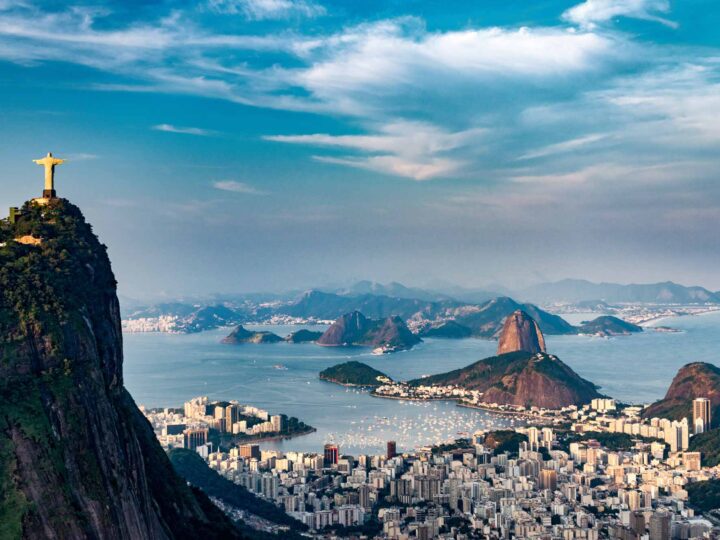
I’ve dug deep into my favorite destinations, including Patagonia , Chile , Argentina , Peru , Bolivia , Colombia , and Guyana , in my other detailed South America travel guides, but read on for inspiration for planning your next bucket list adventure to one of the globe’s most underrated destinations.
Click to navigate this article:
1. Experience city life in Buenos Aires
With magnificent neoclassical architecture, traditional porteño neighborhoods, world-beating steak houses, and milongas (tango halls), Buenos Aires is considered one of the most culturally vibrant cities in South America and is the perfect Argentina vacation spot.
It was a city that took me a little while to love, but once I did, I was hooked. To see the most of Buenos Aires, hop on the subway and explore the markets in the San Telmo neighborhood, catch the beautiful game at the Boca Juniors’ home stadium, La Bombonera, and dine like a king at a neighborhood steakhouse. Read more in our detailed Buenos Aires travel itineraries .
Pick from one of the tours operated by the local authority to learn even more about the city.
2. Visit Argentina’s most spectacular waterfall, Iguazu Falls
The magnificent Iguazu Falls aren’t just one incredible waterfall; no, it comprises 275 separate cascades, making Iguazu one of the globe’s greatest natural phenomena. A series of viewing platforms on the Argentinean side make you feel like you’re practically inside the water, as it thunders and crashes around you.
What’s more, the falls are set amongst lush, tropical forests frequented by indigenous birds and small mammals, making this a fascinating introduction to the Atlantic rainforest.
Planning Your Trip to South America?
Save time, stress & money with a customized travel itinerary planned for you by a South America expert
What previous clients have said:
Going to a new and exciting place is an adventure AND has its challenges. Being able to carve out an in-depth plan with someone that has been there and whom you can trust was extremely helpful. We felt comfortable embarking on a six-week backpacking trip with kids ages 8 and 11 with Steph on our team. Her expertise and ability to hear what we wanted gave us a great jumping point for planning. Her advice and wide array of options also allowed us to be flexible. It also gave us peace of mind knowing that we had someone we could call if our plans went awry. Every one of Steph’s recommendations panned out to be incredible pieces of our trips and we would highly recommend her!
The falls can be visited from either Argentina (Puerto Iguazú) or Brazil (Foz Do Iguaçu), making them ideal for a day trip. The Argentinian side boasts more walking trails and better up-close encounters with the falls. In contrast, the Brazilian side offers awe-inspiring panoramic views of the whole area.
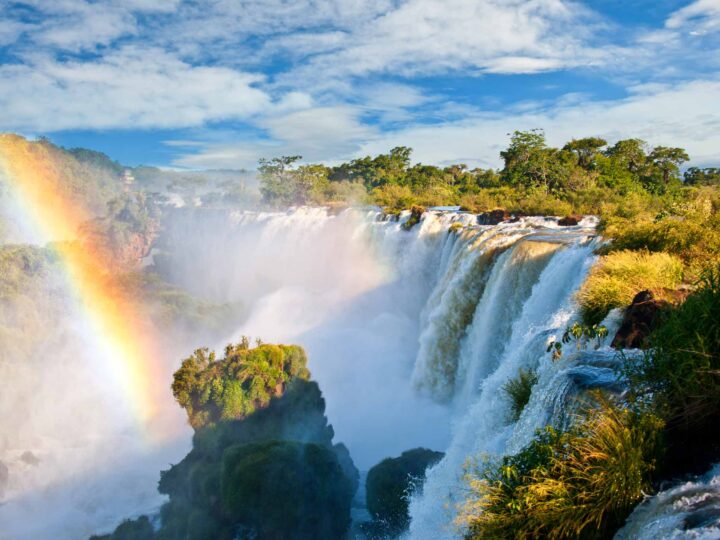
I spent a couple of days in the area, which meant I could day-trip to both.
3. Embark on an epic South American road trip along Route 40
Argentina’s Route 40 is a journey for the intrepid at heart. A drive along this road that spans the entire country as it wiggles its way from north to south requires some planning – and a wild sense of adventure.
Stretching over 3,100 miles (5,000 km), the trip can be done in various legs – depending on where you choose to start.
At the northern end, you’ll find the stark, high-altitude volcanic landscapes that border Bolivia ; at the south, you’ll encounter the glacier-strewn Andes mountains as they reach their conclusion at the tip of South America in Patagonia .
Renting a car gives you the independence to explore the route at your pace, although you’ll find buying your own vehicle a much more economical choice.
4. Marvel at El Perito Moreno Glacier
Nothing prepares you for the epic scale of El Perito Moreno glacier . Towering over the grey-blue waters of Lago Argentino, it’s a truly vast slab of ice that’s constantly moving – albeit barely visibly.
That said, if you’re lucky, you’ll catch dense blue lumps of ice calving off and crashing into the lake below – a truly thrilling experience.
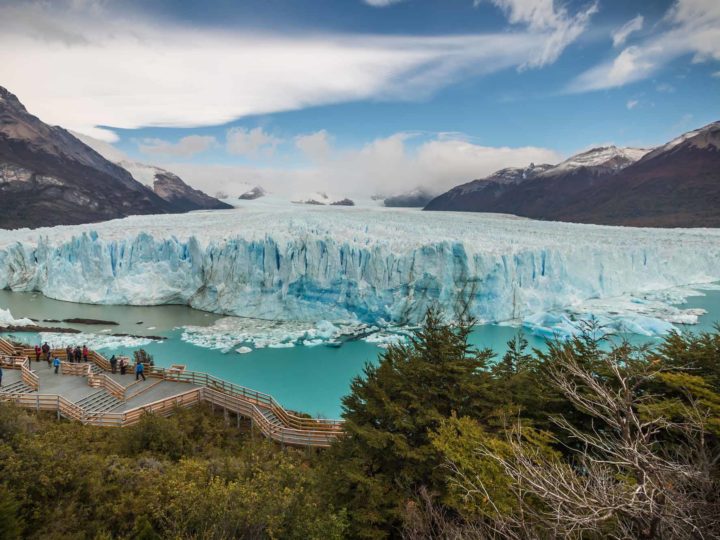
A series of boardwalks lead you around the glacier, offering a number of vantage points on this ice giant, while boat tours, kayaking, and even ice trekking offer more unusual means of exploring this relic of the last ice age.
5. Experience the laid-back atmosphere of Salta
For a glimpse of Andean culture in Argentina, head no further than the elegant and leafy city of Salta , which lies in the foothills of the Andes in the northwest of the country.
Neoclassical architecture gives a nod to the city’s colonial past, while its Andean roots continue to be celebrated, in everything from its food to its energetic peñas – venues that play traditional Andean music.
Fill your time with museum visits and strolling around the city’s leafy streets. For a more adventurous experience, take a tour out to the region’s famed rock formations, the Quebrada de Humahuaca. Here, the mineral deposits in the earth have turned the mountainside into a staggeringly beautiful kaleidoscope of colors.
6. Tour the El Salar de Uyuni salt flats
The world’s most extensive salt flats and one of South America’s most breathtaking natural landmarks, El Salar de Uyuni is a surreal salt desert so vast that the blinding white plains seem to stretch to the horizon beyond.
During the rainy season – between December and March – the salt flats transform into the world’s largest mirror, making the spectacle even more dazzling and a great opportunity for taking beautiful watery photos.
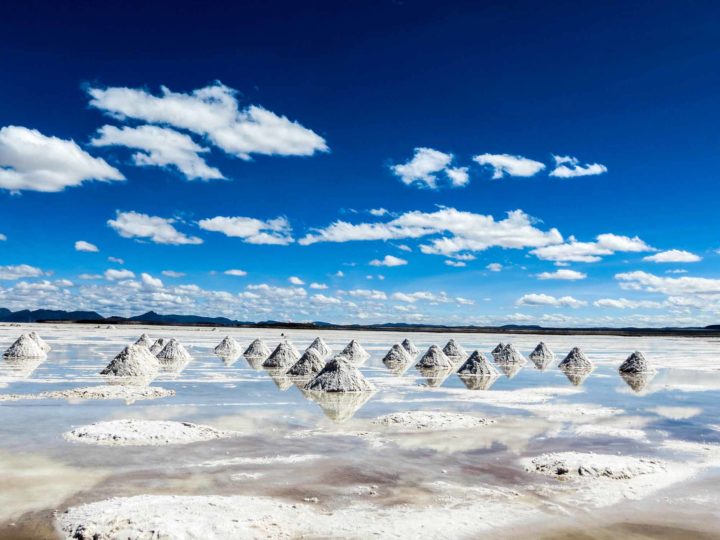
An unmissable place to visit in Bolivia, visiting these salt flats is easy via a tour from the nearby towns of Uyuni or Tupiza (the latter was my favorite way). Your trip will combine a visit to the salt flats with a tour of the volcano and lagoon-filled landscapes that surround the region.
7. Venture to Lake Titicaca to see the birth of an ancient civilization
Standing on the shores of Lake Titicaca, the largest high-altitude body of water on the planet, it’s not hard to understand why Andean people believe this lake to be the birthplace of the sun. At 3,812 meters above sea level, it’s thought to be physically close to the Gods and its sapphire-blue waters and the surrounding ring of ice-speckled mountains give the area a truly mystical quality.
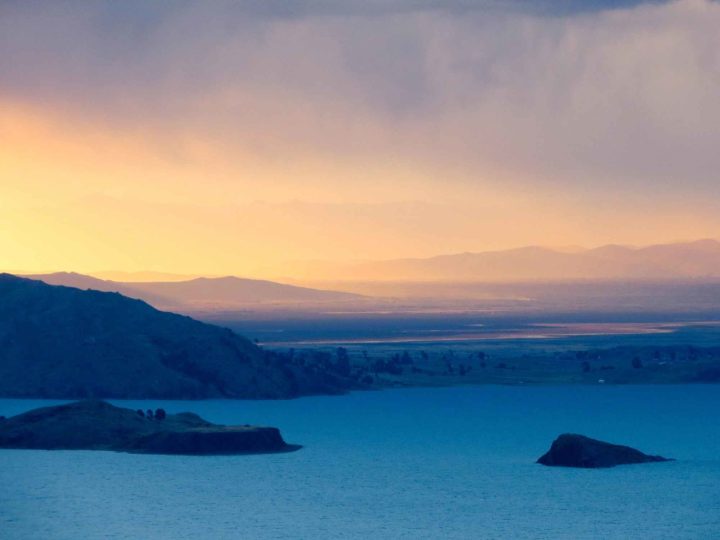
While the lake lies across the border between Bolivia and Peru , visit from the latter country, where a boat trip from Puno will take you out to see the remarkable floating islands made from reeds that the indigenous Uros began constructing centuries ago.
Alternatively, take a tour and stop overnight on Isla Taquile and learn about the indigenous Aymara culture and their ancient tradition of weaving .
Brazil
8. trek through the amazon jungle.
The vast ecosystem of the Amazon is home to over 40,000 tropical plant species and is one of the last refuges on the planet for a wide range of rare wildlife, including pink river dolphins and jaguars.
It’s easily one of the most exciting places to visit in South America and exploring by foot or boat is the best ways to get under the skin of this, the world’s largest rainforest.
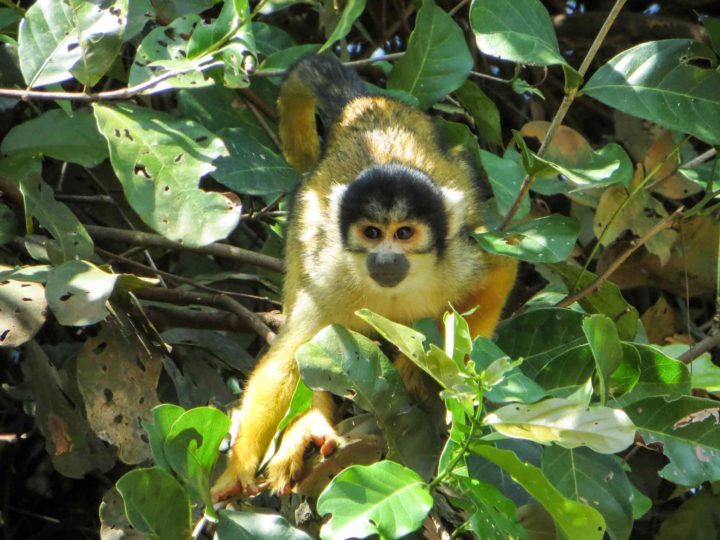
Popular entry points into the Amazon include Manaus (Brazil), Coca (Ecuador) Rurrenabaque (Bolivia), and Iquitos (Peru). I’ve visited from Colombia, Bolivia, Peru, and Guyana and found that, whichever corner you visit, your stay can involve sleeping in magical and remote jungle lodges tucked away in the depths of the rainforest.
The price of accommodation ranges from $35 – $110 USD per night – all depending on how luxurious you want your stay to be.
9. Discover the rhythms of Rio de Janeiro
Expect to be blown away by the sensational setting of Rio de Janeiro, a city famed for its gorgeous beaches, raucous Carnaval celebrations, and rambunctious nightlife. Few other South American cities can compete with Rio, which promises outstanding natural beauty and a damn good party.
Venture to buzzing beaches where volleyball is the go-to sport, take the cog train up to the city’s emblematic statue , the Art Deco Christ the Redeemer, or get to grips with samba and learn how to party, Brazilian style, in one of the city’s live-music halls or at a street party.
10. Get under the skin of rural life in Parque Nacional da Chapada Diamantina
Looking for an eco-adventure in Brazil? Look no further than Parque Nacional da Chapada Diamantina (Chapada Diamantina National Park). As one of the country’s – and the continent’s – most glorious national parks, expect to be blown away by the drama of the scenery here.
Spend a few days here to discover Brazil’s highest waterfall and ancient table mountains where gaping canyons and jagged peaks draw together, as well as the welcoming hospitality of the local people.
To see this region at its finest, take a multi-day trekking tour staying in local people’s homes, or take a hiking or caving day trip.
11. Explore the beautifully preserved Cidades Históricas
Miners flocked to this part of Brazil in the 1600s to exploit the gold and diamonds buried in the earth. When they left, they abandoned a series of mining camps that, over the years, had been transformed into prosperous and charming cities. These days, they’re considered some of the most beautiful cities in South America.
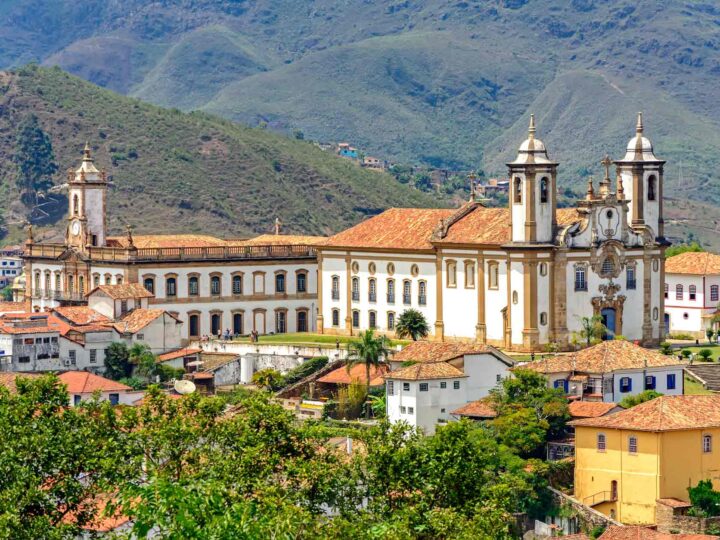
Ouro Preto is a pretty place of steep cobbled streets and beautifully well-preserved mansions, while remote Diamantina is surrounded by rugged landscape and home to colourful seventeenth-century houses and a glut of Baroque churches.
Chile
12. learn about the mysteries of rapa nui (easter island).
The enigmatic Rapa Nui (Easter Island), remote and volcanic, is home to the mysterious moai statues, which have been watching over the island for the last 800 years.
Carved by the islands’ artisans as a way to celebrate the lives of important community members and then installed on top of vast platforms on the islands’ shores, these monolithic figures are staggering in size and a remarkable slice of island history.
Some travelers shy away from the island because they believe it’s too pricey, but it’s possible to visit Easter Island without breaking the bank . Affordable activities include horse riding and snorkeling, as well as cycling or hiking around the island; I’ve also got an excellent guide to where to stay on Easter Island , too, written after my research trip to the island for Moon Chile .
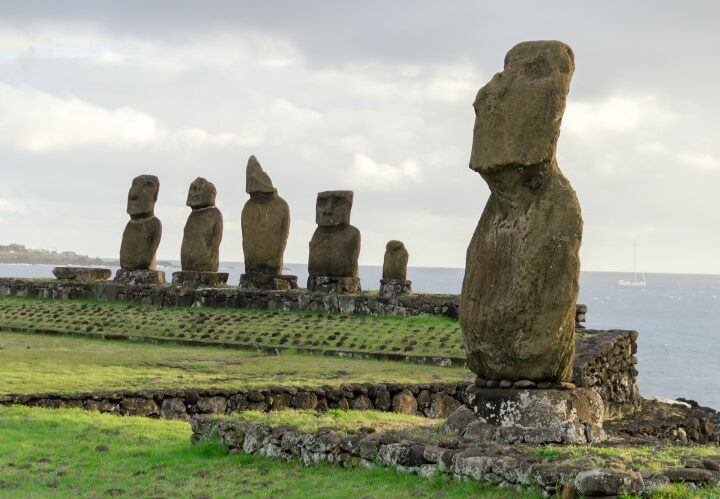
13. Take a road trip along the Carretera Austral
Few parts of South America lend themselves to an unforgettable road trip as much as the Carretera Austral . This serpentine road lined by the spellbinding scenery of some of the remotest parts of Patagonia is a truly intrepid place for an adventure and, despite its distance from civilization, a very safe part of Chile to explore.
It’s also one of the places in South America that I absolutely adore. Trust me: you must visit.
Start in the north at Puerto Montt and head the full 1,240 kilometers south past some of the region’s most dazzling national parks, glaciers, and breathtaking lakes.
Spend the night wild camping beneath a canopy of stars or tucked up in cozy B&Bs or luxurious hotels.
14. Trek the O Circuit around Parque Nacional Torres del Paine
With its glacier-stippled landscapes and dramatic montane scenery, there’s a reason Patagonia is best explored on foot.
Few trails in the region give you quite the same feeling of being miles from civilization quite like the O Circuit, in the world-famous Parque Nacional Torres del Paine (Torres del Paine National Park) .
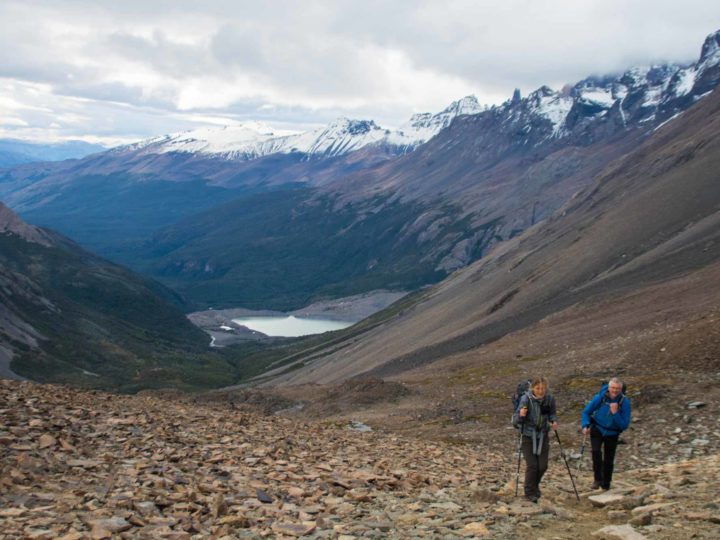
This nine- to eleven-day trek introduces you to Patagonia at its most dazzling. From hanging glaciers perched vertiginously on mountains or attached to gleaming lagoons to groups of wild guanacos grazing on windswept plains, every step along this trail will leave an impression.
It’s easily one of my favorite things to do on a trip to Chile .
15. Go wine tasting in the Colchagua Valley
Argentina might be better known for its wines, but for the finest vintages head directly to the Colchagua Valley, a few hours’ drive south of capital city Santiago and an often overlooked Chilean tourist attraction. Here, the almost-lost French carménère grape has become the symbol of Chilean wine – and what a wine it is!
Tour the country’s most awarded wineries, including Casa Silva , Montes , and Viu Manent , stopping to dine on a feast of Chilean meats, cheeses, and fish at their fine-dining restaurants. I’d also highly recommend staying in a hotel surrounded by vineyards (you can find my favorites in this list of the best hotels in Chile ).
Once you’re done, head out on a horse and carriage tour or self-guided bike ride to explore through the vineyards themselves.
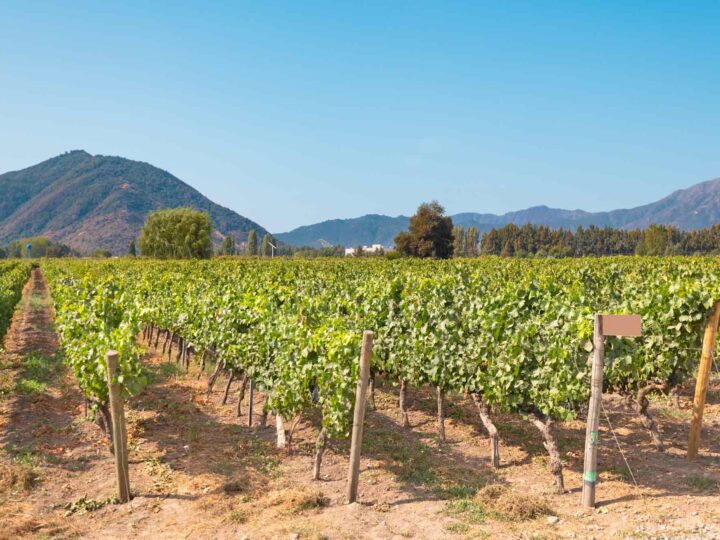
16. Learn about island life in Chiloé
As the ferry journey from the mainland touches the shores of Chiloé, a vast archipelago of islands in the south of Chile, it’s hard not to sense its magic. Known as a place of myths, history, and a truly unique island identity, Chiloé feels a world away from the rest of South America.
To get to grips with this corner of Chile, stay overnight in one of the colorful wooden fishermen’s dwellings known as palafitos that have been converted into luxury hotels , or head out at dawn to kayak along a hidden river searching for giant otters along the Chepu river valley.
Colombia
16. explore the historic city of cartagena.
Colombia is a backpackers’ favourite, but even those planning a shorter but still memorable South American vacation will find northern city Cartagena merits at least a few days of their trip.
One of the most-visited tourist destinations in Colombia and easily the most beautiful city in the country, Cartagena is a UNESCO World Heritage site and was built using the blood and sweat of the thousands of slaves who were brought through here in the 17th century.
Exploring its cobblestone streets and vast churches in the Old City, and the grittier, art-daubed streets of nearby Getsemaní is a way of getting under Cartagena’s skin , while you can embark on a tour of the country’s food through the city’s wealth of restaurants specializing in local fish and Caribbean-inspired dishes.
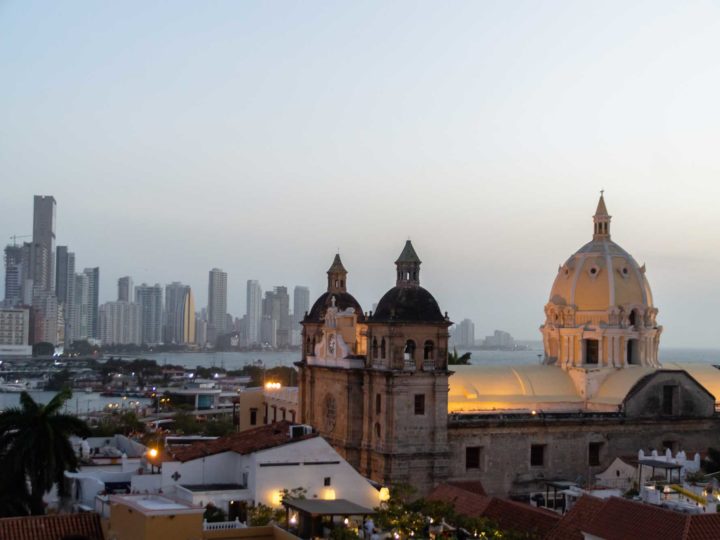
18. Step back in time at the Ciudad Perdida
There’s a reason that the Ciudad Perdida in Colombia’s Sierra Nevada de Marta range was dubbed the “Lost City”. Built by the Tairona people in 660 AD and abandoned when it was pillaged by the Spanish conquistadors in the sixteenth century, the city lay forgotten and buried by the encroaching jungle until the 1970s.
Less dramatic in architecture than Machu Picchu , the Lost City does, however, present a far bigger challenge to reach. A five-day, 40-kilometer hike takes you through dense jungle, in sight of an impressive diversity of flora and fauna, and sticky humidity to reach these remote and barely-visited jungle ruins.
Wear mosquito pants and bring plenty of suncream – as I found out last year, this is one hot and bug-filled hike!
19. Hike and sunbathe on white sand beaches in Parque Nacional Tayrona
For some of Colombia’s finest white sand beaches and unspoiled rainforest, don’t miss Parque Nacional Tayrona (Tayrona National Park). Lying along the country’s dreamy Caribbean coast, it’s one of the continent’s finest places to sit back, relax and catch some rays.
Once you’ve had your fill of sunbathing, spend a day or two wandering the hidden trails through the jungle or swinging in a hammock with a cold, crisp beer in hand. Paradise.
20. Sip coffee on a coffee plantation
If there’s a drink that Colombians like even more than their aguardiente, it’s coffee. South of Medellin lies the Zona Cafetera, which is home to thousands of coffee fincas (farms) growing the world-class coffee that is sold around the planet.
Staying on a traditional coffee farm is the perfect way to learn more about the country’s favorite caffeinated drink and is a perfect stop on a Colombian travel itinerary .
With everything from basic to luxurious lodgings on the cards, a trip to a coffee finca can be combined with a series of activities including horseback riding, hiking or just relaxing in a hammock as you look out over the lush slopes of the region.
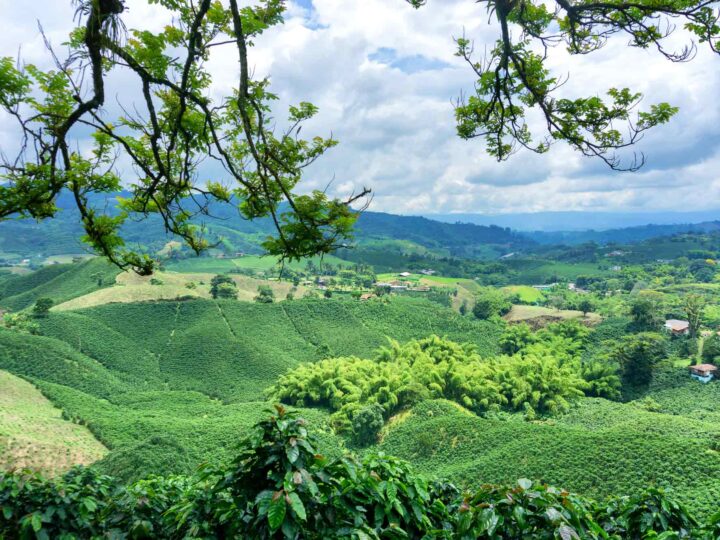
Ecuador
21. explore the staggering diversity of the galapágos islands .
Wildlife documentaries are nothing when compared to seeing the Galapágos Islands in person. Where else in the world can wander freely among giant tortoises, marine iguanas, and sea lions, who are all but unconcerned by humans?
Composed of 127 islets, rock formations, and large, volcanic islands, the Galapágos has a whole host of locations to explore, where you’ll encounter everything from frigate birds and blue-footed boobies to Galapágos penguins and green sea turtles. It should come as no surprise that this ranks as one of the must-see destinations in South America.
Snorkel in the turquoise waters to catch a sight of the islands’ underwater residents, hike along the coast of Isla North Seymour for birdwatching opportunities, or visit the El Chato Tortoise Reserve to learn about the islands’ most famous residents.
22. Trek the Quilotoa Loop
Get your hiking boots ready for a magnificent three- to five-day trail that’s considered one of Ecuador’s finest. Taking you past remote, Andean villages and through glorious, high-altitude scenery, this trail ends at the strikingly turquoise water of the volcanic crater lake, Laguna Quilotoa .
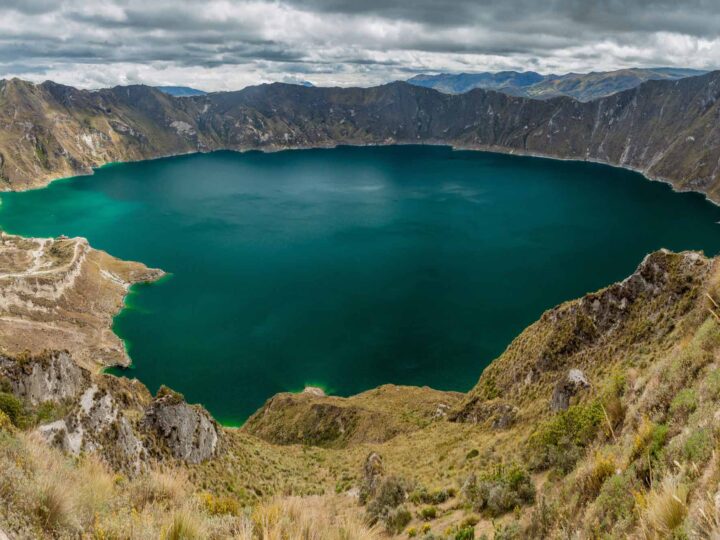
A great off-the-beaten-path adventure , hiking the Quilotoa Loop doesn’t mean you have to lose any of your creature comforts, as cozy hostels dot the path for a comfortable sleep before your next day of hiking. All in all, it’s the perfect opportunity to go under the skin of rural Ecuador.
23. Marvel at the architecture in Quito’s Old Town
Situated at a dizzying 2,850 metres above sea level, Ecuador’s capital city Quito is guaranteed to take your breath away. A major colonial city under the Spanish conquest, it lays claim to some of the continent’s best-preserved architecture.
You can easily spend a few days wandering this UNESCO World Heritage city , taking in its glut of sixteenth-century squares and grand churches. Alternatively, spend a day heading out to the Mitad del Mundo , aka the Middle of the Earth, and the spot that marks the equator, or another of the different day trips from Quito .
The Guianas
24. fly over the magnificent kaieteur falls, guyana .
If going beyond the beaten trail is your intention, make sure Guyana is on your list. Rarely visited by tourists, Guyana is home to a unique array of tourist attractions , including the spectacular Kaieteur Falls.
Spilling over into a seemingly bottomless gorge within the thick, humid jungle of the Kaieteur National Park, these falls are second to only Angel Falls in neighboring Venezuela in terms of scale and magnificence.
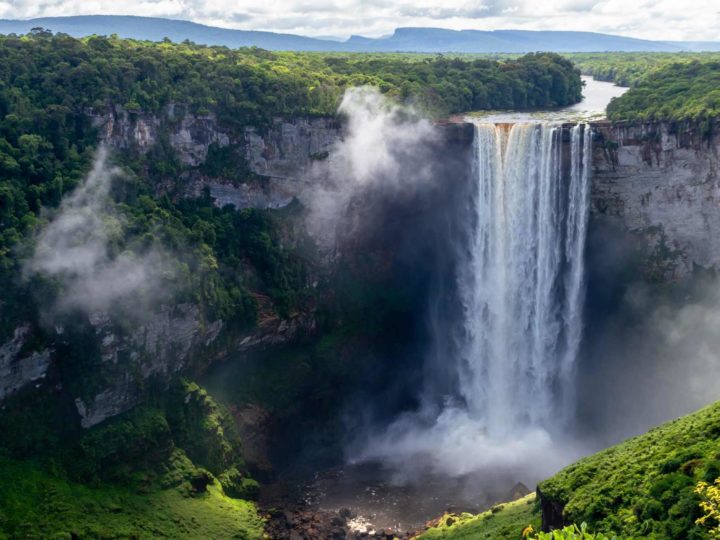
Access them either on foot or via a more adventurous means: light aircraft. Flying from the capital of Guyana, Georgetown, you’ll swoop directly over these vertiginous falls, which stand 226 metres above the ground and plunge to the earth in a torrent of foam and spray.
25. Boat along the Upper Suriname River, Suriname
Covered in vast swathes of practically untouched jungle, former Dutch colony Suriname is the perfect place for an intrepid adventure in South America. With the local population speaking a mixture of Dutch and various indigenous tongues, it receives few English-speaking visitors – I was one of the only there when I visited. So, don’t miss out: the Upper Suriname River promises adventure for those who seek it.
Travel by boat upriver to stay in the Dannpati Lodge , whose comfortable cabins situated on an island in the middle of the river feel tucked away in the jungle.
Spend your days splashing in the warm waters of the river, or learning about the local Maroon culture – the name for the enslaved people who escaped their captors and set up their own communities hidden away here in the jungle.
26. Marvel at the ruins of Machu Picchu
Nestled in the Andes Mountains are the ruins of Machu Picchu . Built as a mountain getaway for the civilization’s rulers, this archaeological site gives visitors a glimpse into the Inca Empire, the largest of its kind in pre-Columbian America.
Part of the thrill of this site is how this once lavish mountainside citadel sits high up in the mountains and becomes absolutely enrapturing at dawn as the sun cascades over the stone buildings – an absolute must-see when you’re in Peru.
You’ll encounter a diverse range of flora and fauna – including the site’s resident llama population, with the best way to get here is by hiking the Inca trail or one of the other paths that wind their way through the mountains to arrive – as the Inca themselves would have.
To enter Machu Picchu, you need to buy tickets in advance and you can do the visit without a guide you can read our article to find out the best time to visit Machu Picchu , too.

27. Fly over the Nazca Lines
If you’ve got a head for heights, you won’t want to miss South America’s most puzzling human landmark, the Nazca Lines. A collection of around 300 geoglyphs that have been etched into the desert sand with many spanning many kilometers, no one’s really sure why they were created .
What is agreed on is that a flight above the geoglyphs is the only way to really appreciate their enormous size and remarkable designs.
Yes, it’s very short, and yes, you will feel a bit sick if there’s even slight turbulence. However, you can peer down on designs that look like everything from a hummingbird to a monkey and more abstract geometric shapes and stare out across the otherwise empty desert as you wonder exactly what caused them to be made.
28. Explore the continent’s finest dining in Lima
Home to some of the finest restaurants on the planet , there’s no arguing that Lima is a top South American destination for foodies.
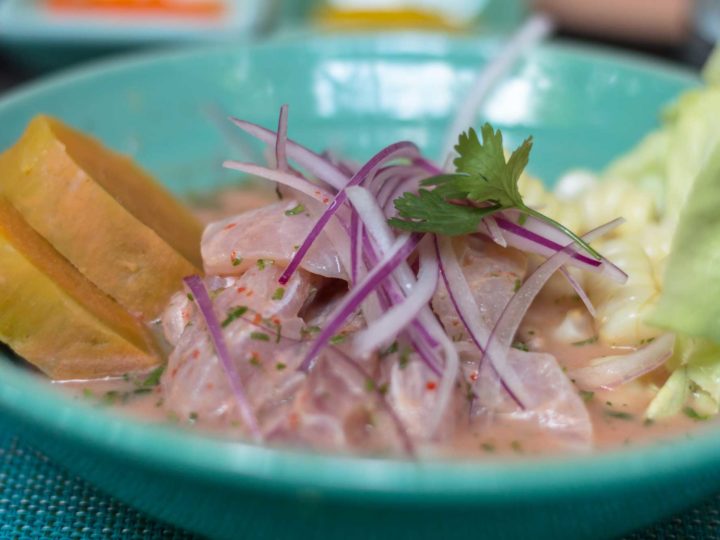
The city’s dining scene is quite something else: whether you want to sample an anticucho from a street food stand, dive into a delicate dish of traditional ceviche or go all out on a ten-course tasting menu showcasing the remarkable variety of Andean cuisine, there are options for all tastes and budgets.
Every time I visit, I try and eat my body weight in ceviche. Trust me: you want this too.
29. Visit ancient cities and witches around Trujillo
In the dusty northwest of Peru lies the ruined city of Chan Chan , formerly the largest adobe brick complex in the world. Once paneled with gold and brightly painted with patterns reflecting the Chimú people’s relationship with the ocean, Chan Chan is a remarkable architectural site that dates back to around 850 AD.
For another glimpse into the mysterious pre-Columbian civilizations that inhabited Peru, be sure to add the nearby huacas del Sol y de la Luna (Temples of the Sun and Moon) – a series of decorated pyramids rising high out of the otherwise flat desert landscape – and the Complejo Archeológico El Brujo (Archeological Complex of the Wizard).
The latter plays host to a remarkable museum containing gold ornaments, as well as the body of a female mummified shamanic leader, whose well-preserved arms are daubed in tattoos. No one really goes here and I’m baffled as to why.
30. Seek giants and jaguars in the Pantanal
Few tourists venture to the sweltering territory of Paraguay, but those who do are rewarded in spades. To see this country at its best, make a beeline for the Pantanal , the remarkably biodiverse stretch of soupy rivers and wetlands that boasts the highest concentration of wildlife in South America.
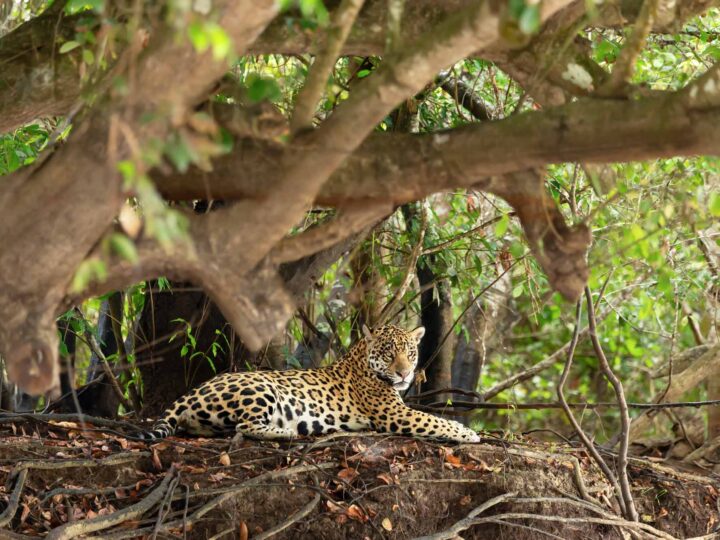
Remote and challenging to reach, it’s the perfect place to spot jaguars, giant anteaters, giant armadillos, and giant otters, as well as a wealth of other wild creatures.
Arrive by boat from Concepción further south or take a small plane from the capital, Asunción; basic accommodation and the feeling of being alone in one of the remotest parts of the country awaits you.
31. Fall in love with Montevideo’s historic Ciudad Vieja
Montevideo, the Uruguayan capital, is one of the lesser-known cities in South America, and often finds itself in the shadow of its neighbor, Buenos Aires. But, as the locals know, this is the true home of tango, and history lovers will fall in love with this city, thanks to its magnificent Ciudad Vieja (Old Town), which is packed with quirky museums, famed theatres, and historic plazas.
Visiting Montevideo is an unmissable thing to do in South America. Between history trips, soak up the sun at one of the beaches found on the town’s outskirts, or head east for a day trip to the country’s more glamorous beach resort, Punta del Este.
Venezuela
32. visit the magical angel falls.
Buried deep in the Venezuelan jungle lies one of South America’s most dramatic natural landmarks. Thundering down from a tabletop mountain from a height of 980 meters, Angel Falls is sixteen times the height of Niagara Falls, making it the world’s tallest waterfall, and easily one of South America’s most spectacular sights.
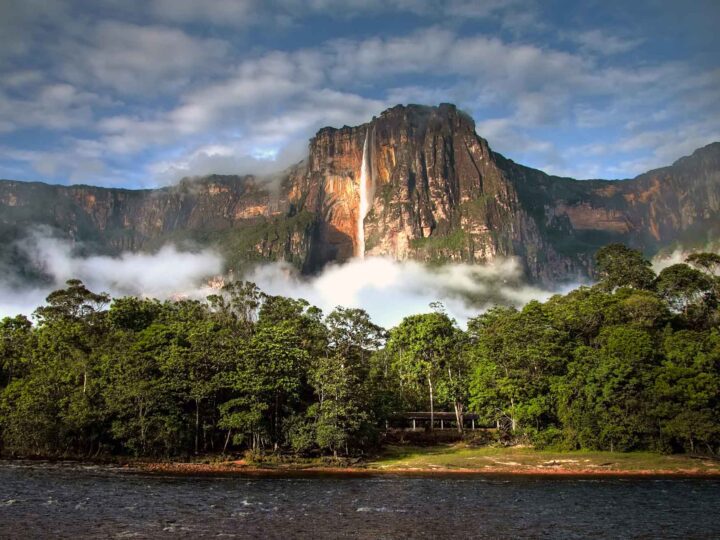
But it’s not just the falls themselves that make this part of Venezuela so beguiling. Surrounded by lush rainforest within Parque Nacional Canaima (Canaima National Park) , these falls are challenging to reach, requiring a boat journey followed by a hike to stand at their feet.
But, with this degree of magic awaiting, it’s a more than worthwhile adventure.
Ready for your thrilling adventure around South America?
Whether you’re seeking beauty, ancient human civilization, or the buzz of a modern city, South America has a diverse range of destinations to choose from. From spectacular nature to vibrant city life, it has the potential to steal a piece of any traveler’s heart.
Whether yours is a short vacation or a more lengthy backpacking adventure or road trip, exploring South America is guaranteed to be an unforgettable experience. Before you go, find out which season and months are best for visiting South America , what you should pack for a trip to South America , and which counties are best in South America for everything from archeological sites to fine dining with our expert-written guides.
Thursday 14th of April 2022
Hello, Thank you for your itinerary. I am Mildred. I book my cruise to Antarctica on November 23- Dec. 2. Starting in Ushuaia, Argentina. I want to make an itinerary. I will fly to Lima, Peru to adventure the place. Then bus to Bolivia, Chile to Ushuaia for my cruise to Antarctica. I also want to visit Brazil. I am having a hard time of making my itinerary if which is next to each other before I book my ticket. Any idea of how to plan my itinerary will help me a lot. I can come early to do my adventure to these places before my cruise to Antarctica nor I can do my adventure to these places after my cruise to Antarctica. Please and thank you for your help.
Steph Dyson
Friday 22nd of April 2022
Hi Mildred, I offer travel planning services just for this! Check them out here and drop me an email! Steph

The Best Time to Visit South America: A Comprehensive Travel Guide
The Best Time to Travel to South America: A Comprehensive Guide to Understand When to Visit Each Country
Whether you’re drawn to the lush rainforests of the Amazon, the breathtaking heights of the Andes, or the vibrant rhythms of Brazilian carnivals, South America has every type of adventure and every climate you could imagine. Since South America is such a vast continent, each country comes with its own unique climate and charm, making the timing of your trip a crucial factor for an optimal experience. This is a comprehensive guide to help you decide when to visit each country in South America. For each country, this guide covers the high season, shoulder seasons, and low season, the climate, traveling during summer, fall, winter, spring, and the best destinations to visit during each season. Our hope is that this guide ensures that your exploration aligns perfectly with the local seasons and festivities.
Use the links below to jump to each country!
The Best Time to Travel to Argentina
The best time to visit Argentina largely depends on your interests and the experiences you’re seeking. Given the country’s diverse climate and geography, different regions shine at different times of the year. Here’s a general overview of Argentina’s climate the best time of year to visit each region, and the best places to visit Argentina in each season:
High Season, Shoulder Season, and Low Season in Argentina:
High Season (December to February):
- Why: The high season in Argentina falls during the Southern Hemisphere summer, making it perfect for enjoying outdoor activities, beaches, and festivals.
Shoulder Season (March to May, September to November):
- Why: During shoulder seasons, the weather is still pleasant, but the crowds are thinner, allowing you to explore popular attractions without the hustle and bustle of peak tourists.
Low Season (June to August):
- Why: Low season is ideal for ski enthusiasts as Patagonia offers great skiing opportunities. Additionally, the stunning landscapes of Patagonia are less crowded, providing a serene experience.
Whether you’re seeking sunny summer escapades, moderate weather with fewer crowds, or winter wonderlands, Argentina offers unique experiences in each season.
The Climate in Argentina
Argentina has a diverse climate due to its vast geographical expanse and varying topography. The country’s climate ranges from subtropical in the north to subpolar in the far south. Here’s a general overview of the climate zones in different regions of Argentina:
- Northwest Argentina: The northwest region, including places like Salta and Jujuy, features a subtropical highland climate. Summers are warm and humid, while winters are mild and dry. The region experiences a pronounced rainy season during the summer months.
- Northeast Argentina: The northeast region, which includes provinces like Misiones and Corrientes, has a subtropical climate with hot and humid summers and milder winters. Rainfall is abundant throughout the year, with a wetter period during the summer months.
- Pampas: The central Pampas region, where major cities like Buenos Aires are located, experiences a temperate climate with distinct seasons. Summers are warm to hot, while winters are mild with occasional cold spells. Rainfall is fairly evenly distributed throughout the year.
- Cuyo : The Cuyo region, encompassing provinces like Mendoza and San Juan, has a desert or semi-arid climate. Summers are hot and dry, while winters are cooler and more pleasant. Irrigation is essential for agriculture in this region.
- Patagonia Argentina: Southern Argentina, including Patagonia, has a wide range of climates due to its vastness. In general, the western part experiences a cold desert climate with very little rainfall, while the eastern part near the coast has a subpolar climate with cold winters and relatively cool summers. The Andes mountains also influence climate variations in this region.
- Tierra del Fuego: This far southern region, including Ushuaia, has a subpolar climate characterized by cold temperatures throughout the year. Winters are especially cold and snowy, while summers are relatively cool.
Traveling During Each Season in Argentina
In general, there are four main seasons in Argentina:
- Summer in Argentina (December to February):
- Fall in Argentina (March to May):
- Winter in Argentina (June to August):
- Spring in Argentina (September to November):
Summer in Argentina (December – February):
During the summer months in Argentina, which correspond to December through February, the country experiences warm to hot temperatures in most regions. Northern areas, like the provinces of Misiones and Corrientes, can become quite humid with temperatures often exceeding 90°F (32°C). The central Pampas region, including Buenos Aires, also sees warm and humid weather with occasional heatwaves. Patagonia experiences relatively milder temperatures, making it a popular destination to escape the summer heat. Coastal areas such as Mar del Plata attract beachgoers during this time. Additionally, the northwest region, including Salta and Jujuy, offers pleasant weather for exploring the mountains and enjoying outdoor activities.
Fall in Argentina (March – May):
Autumn in Argentina, from March to May, brings milder temperatures and more comfortable weather. The central Pampas region experiences pleasantly warm days and cooler nights, making it an ideal time to explore cities like Buenos Aires and the surrounding countryside. The vineyards of Mendoza in the Cuyo region are a major attraction during this season as the grape harvest takes place. The northeastern provinces of Misiones and Corrientes continue to enjoy warm days but with decreasing humidity. Patagonia starts to cool down during fall, making it a good time for hiking and outdoor adventures in its stunning landscapes.
Winter in Argentina (June – August):
Winter in Argentina falls between June and August. Northern regions experience mild winters with temperatures ranging from 50°F to 70°F (10°C to 21°C). Buenos Aires and the central Pampas region have cooler temperatures, with occasional cold snaps. The ski resorts in the Andes, such as Bariloche and Chapelco, come alive during this season, attracting winter sports enthusiasts from around the world. Patagonia experiences colder temperatures and snowfall, making it a great time for skiing and snowboarding. The southernmost region of Tierra del Fuego is extremely cold, with Ushuaia often covered in snow.
Spring in Argentina (September – November):
Spring in Argentina spans from September to November. The central Pampas region and Buenos Aires begin to warm up, with pleasant temperatures and blossoming flowers. It’s an excellent time to visit the parks and gardens in the cities. The northwest region experiences a transition from the rainy season to drier conditions, making it a suitable time for outdoor activities. Patagonia sees a gradual thaw, making it a unique time to witness the transformation from winter to spring. Whale watching along the coast of Peninsula Valdés in Patagonia has become a popular activity as well.
Some of the Best Places to Visit in Argentina During Each Season:
Summer (December – February):
- Bariloche and the Lake District: Enjoy outdoor activities like hiking, kayaking, and sailing in the stunning lake-filled landscapes.
- Mar del Plata: One of Argentina’s most popular beach destinations, perfect for sunbathing and water sports.
- Iguazu Falls: Witness the majestic waterfalls in their full glory amidst the lush rainforest of Misiones.
- Salta and Jujuy: Explore the northwest’s stunning landscapes, colorful mountains, and charming colonial towns.
- Mendoza: Tour the vineyards and wineries, and enjoy wine tasting in the heart of Argentina’s wine country.
Fall (March – May):
- Buenos Aires: Enjoy mild weather for city exploration, tango shows, and visits to historic neighborhoods.
- Mendoza: Experience the grape harvest festivals, wine tours, and culinary delights.
- Córdoba: Explore the picturesque landscapes, Jesuit history, and cultural events.
- Patagonia: Hike among the changing foliage in the Andes, especially around Bariloche and El Calafate.
- Iberá Wetlands: Observe the diverse wildlife and bird species in these pristine wetlands.
Winter (June – August):
- Bariloche: Hit the slopes at Cerro Catedral for skiing and snowboarding.
- Ushuaia: Discover the winter wonderland, go skiing, and explore the southernmost city in the world.
- Mendoza: Enjoy the cozy atmosphere, indulge in wine tasting, and relax in hot springs.
- Buenos Aires: Experience cultural events, theater performances, and traditional Argentine cuisine.
- El Calafate: Visit the Perito Moreno Glacier and experience the icy landscapes of Patagonia.
Spring (September – November):
- Buenos Aires: Enjoy the blooming parks and gardens, outdoor markets, and pleasant temperatures.
- Córdoba: Hike in the Sierras de Córdoba, visit historic sites, and attend spring festivals.
- Salta and Jujuy: Explore the colorful landscapes, indigenous culture, and enjoy mild temperatures.
- San Carlos de Bariloche: Witness the transformation as snow melts, revealing lush landscapes and hiking trails.
- Peninsula Valdés: Go whale watching, see penguins, and enjoy the emerging wildlife.
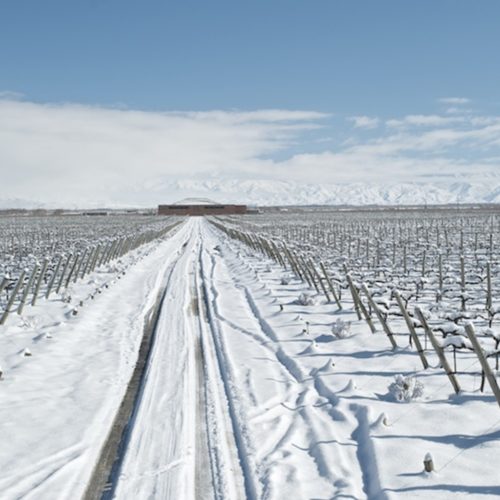
The Best Time of Year to Travel to Bolivia
The best time to travel to Bolivia largely depends on the specific regions you plan to visit and the type of experiences you’re seeking. Bolivia’s diverse geography leads to varied climate conditions throughout the country. Here’s a general overview of Bolivia’s climate the best time of year to visit each region, and the best places to visit Bolivia during each season:
High Season, Shoulder Season, and Low Season in Bolivia:
High Season (May to October):
- Best for : Outdoor adventures and exploring the famous salt flats, Salar de Uyuni.
- Why : During this period, the weather is dry and sunny, making it ideal for trekking, mountain biking, and sightseeing. The iconic Salar de Uyuni is at its most stunning, with a reflective surface created by a thin layer of water.
Shoulder Season (April and November):
- Best for : A balance between good weather and fewer crowds.
- Why : In the shoulder seasons, you’ll experience pleasant weather with fewer tourists compared to the high season. It’s a great time to explore cities like La Paz and Sucre, and even enjoy the stunning landscapes without the peak crowds.
Low Season (December to March):
- Best for : Lower budget travel and experiencing Bolivia’s diverse cultural celebrations.
- Why : This period coincides with the rainy season, which might deter some travelers. However, it’s a budget-friendly time to visit as accommodation and tours often have lower prices. Moreover, if you’re interested in experiencing traditional Bolivian festivals and cultural events, this is when many of them take place.
The best time to visit Bolivia depends on your preferences and interests. The high season is excellent for outdoor activities and exploring the famous salt flats of Salar de Uyuni, the shoulder season provides a balance between good weather and fewer crowds, while the low season offers budget-friendly travel and cultural experiences.
The Climate in Bolivia
The climate in Bolivia varies significantly due to its diverse geography, which includes high mountains, lowland plains, and tropical rainforests. Overall, Bolivia experiences a range of climate zones, from tropical to subpolar. Here’s a breakdown of the main climate regions in Bolivia:
- Highland or Altiplano Region of Bolivia: This region includes cities like La Paz and Potosí, located at high elevations in the Andes Mountains. The climate here is generally cold and dry, with temperatures varying greatly between day and night. The altitude plays a significant role, resulting in cooler temperatures even in the daytime. Rainfall is limited, and the dry season lasts from April to November, while the wet season occurs from December to March.
- Yungas Region: This region lies on the eastern slopes of the Andes and has a subtropical highland climate. It experiences more rainfall and milder temperatures compared to the Altiplano. Cities like Cochabamba and Coroico fall within this region. The Yungas is characterized by its lush vegetation and relatively comfortable climate.
- Tropical Lowlands: The northern and eastern parts of Bolivia, including the Amazon Basin, have a tropical climate. Cities like Santa Cruz and Trinidad experience hot and humid conditions throughout the year, with distinct wet and dry seasons. The wet season typically lasts from November to March, bringing heavy rains, while the dry season runs from April to October.
- Chaco Region: This lowland area in southwestern Bolivia, primarily in the Gran Chaco region, has a semi-arid climate. It’s characterized by hot temperatures during the day and cooler nights. Rainfall is limited, and droughts are not uncommon.
- Subpolar Region: The Potosí Department in southwestern Bolivia is home to the Salar de Uyuni, the world’s largest salt flat. Due to its high elevation and unique geography, it experiences a subpolar desert climate with extremely cold temperatures and low precipitation. It’s worth noting that despite its high altitude, the Salar de Uyuni can experience temperature extremes.
Bolivia’s climate diversity is a result of its varied topography and geography. Altitude plays a significant role in determining temperatures and precipitation patterns, making it important to consider the specific region when discussing the climate in Bolivia.
Traveling During Each Season in Bolivia
In general, there are four main seasons in Bolivia:
- Summer in Bolivia (December to February)
- Fall in Bolivia (March to May)
- Winter in Bolivia (June to August)
- Spring in Bolivia (September to November)
Summer in Bolivia (December to February):
During the Bolivian summer, which corresponds to the rainy season, the country experiences warmer temperatures and increased rainfall. This season is most prominent in the tropical lowland areas and the Yungas region. Cities like Santa Cruz and Trinidad can get quite hot and humid, with daily temperatures often exceeding 30°C (86°F). The lush vegetation thrives during this period due to the abundant rainfall. The Altiplano and highland areas also see some rainfall, making the scenery more vibrant and green. Travelers can enjoy outdoor activities and explore the Amazon rainforest, as well as visit the Yungas region for its stunning landscapes and comfortable weather.
Fall in Bolivia (March to May):
Autumn in Bolivia is a transition period between the rainy season and the dry season. The weather becomes gradually cooler, and the rainy days start to decrease. March and April are particularly pleasant months to visit, as the temperatures are comfortable, and the landscapes remain lush from the previous rains. This is a great time to explore the highland cities like La Paz and Potosí, as well as the Yungas region, before the dry season sets in. The changing colors of the foliage in the Yungas and the Altiplano create picturesque scenes for nature enthusiasts and photographers.
Winter in Bolivia (June to August):
Bolivia’s winter is the dry season, especially in the highland areas and the Altiplano. While daytime temperatures can be mild and comfortable, the nights become significantly colder, often dropping below freezing, particularly in higher altitudes. This is a popular time for tourists to explore the Salar de Uyuni, the world’s largest salt flat, as the dry conditions make it easier to traverse. The clear skies during winter also offer excellent opportunities for stargazing, particularly in the highland regions. Cultural events and festivals, such as Inti Raymi, take place during this time, providing visitors with a unique insight into Bolivian traditions.
Spring in Bolivia (September to November):
Spring marks the transition from the dry season to the rainy season. The weather becomes gradually warmer, and the landscapes start to transform as the first rains arrive. This is a great time to explore the Andean highlands, as the vegetation begins to revive, creating picturesque backdrops for travelers. As the rainy season approaches, the Altiplano and the Yungas region start to show signs of renewed life. The transition between the dry and rainy seasons makes this an interesting time to witness the changing environment and experience the local cultures and traditions that come alive during various festivals and celebrations.
The Best Places to Visit in Bolivia During Each of the Four Seasons:
Summer (December to February):
- Rurrenabaque: Explore the Amazon rainforest, go wildlife spotting, and take riverboat cruises.
- Samaipata: Enjoy the mild climate and visit the ancient El Fuerte ruins.
- Coroico: Experience the Yungas region’s lush landscapes and pleasant weather.
- Madidi National Park: Engage in eco-tourism and experience diverse flora and fauna.
- Lake Titicaca: Visit the Copacabana region and explore the lake’s islands and cultures.
Fall (March to May):
- La Paz: Discover Bolivia’s administrative capital and explore its cultural attractions.
- Potosí: Experience the historic silver mining city and its colonial architecture.
- Uyuni: Explore the Salar de Uyuni salt flats and nearby stunning landscapes.
- Sucre: Enjoy the moderate climate and visit Bolivia’s constitutional capital.
- Tarija: Explore vineyards and experience the Bolivian wine region.
Winter (June to August):
- Salar de Uyuni: Experience the stark beauty of the salt flats under clear skies.
- Oruro: Attend the vibrant Oruro Carnival, a UNESCO-recognized event.
- Potosí: Visit the mines and learn about the city’s rich mining history.
- La Paz: Enjoy cultural events, festivals, and museums in the capital.
- Tupiza: Explore the red rock formations and take horseback rides.
Spring (September to November):
- Cochabamba: Visit the “City of Eternal Spring” and explore parks and gardens.
- Sorata: Enjoy trekking in the Andean mountains with blooming landscapes.
- Yungas Road: Embark on a thrilling adventure on the Death Road amidst springtime scenery.
- Santa Cruz: Experience the city’s pleasant climate and explore its parks.
- Rurrenabaque: Enjoy the beginning of the dry season for Amazon rainforest visits.
Salar de Uyuni is one of the most popular places to visit in all of Bolivia. The salt flats have two primary seasons: rainy season and dry season.
Rainy Season at Salar de Uyuni, Bolivia:
The rainy season in Salar de Uyuni, Bolivia, typically occurs from December to March. During this time, the salt flats transform into a vast reflective mirror due to the accumulation of rainwater. The flat surface of the salt crust becomes covered with a thin layer of water, creating an incredible and surreal mirror effect that reflects the sky above. This unique phenomenon creates breathtaking photo opportunities, where the horizon seems to blend seamlessly with the sky, giving a sensation of walking amidst the clouds.
Dry Season at Salar de Uyuni, Bolivia:
The dry season in Salar de Uyuni occurs from April to November. During this period, the thin layer of water on the salt flats evaporates, revealing the expansive hexagonal patterns of the salt crust underneath. The flats take on a brilliant white color, and the ground becomes solid and firm, making it easier to traverse the area. This is the peak tourist season for visiting the Salar de Uyuni, as the dry conditions allow for more comfortable travel experiences, including vehicle tours and photography sessions.
The dry season is also known for its clear skies, which provide excellent opportunities for stargazing. The high altitude of the salt flats combined with the lack of light pollution creates an ideal environment for observing the night sky.

The Best Time to Travel to Brazil
The ideal time to visit Brazil depends on your preferences, the specific regions you plan to explore, and the type of activities you want to experience. Here’s a general overview of Brazil’s climate the best time of year to visit each region, and the best places to visit in Brazil in each season:
High Season, Shoulder Season, and Low Season in Brazil:
- High Season (December to February): This is Brazil’s summer, particularly in the southern hemisphere, and it’s a popular time for tourists. The weather is warm and humid, making it ideal for beach activities and outdoor festivals. However, it’s also the rainy season in many parts of the country, so you might encounter occasional downpours. The Carnival celebrations in February are a major draw during this period.
- Shoulder Seasons (March to May and September to November): These months offer milder temperatures and fewer crowds compared to the peak summer months. It’s a great time to explore cities, engage in outdoor activities, and visit regions like the Pantanal, as the waters recede, making wildlife easier to spot.
- Low Season (June to August): Brazil’s winter months are considered the low season for tourism. While it might be cooler in some regions, it’s an excellent time to explore cities like São Paulo and enjoy indoor attractions. The northeastern coast remains warm and inviting, making it a good option for those seeking beach vacations with fewer tourists.
The Climate in Brazil:
Brazil’s climate varies significantly across its vast geographical expanse due to its diverse landscapes (Brazil is HUGE!!). The country experiences a range of climates from equatorial to subtropical and even desert-like conditions. Here are some of the main climatic regions in Brazil:
- Equatorial Climate: Found in northern Brazil, this region experiences high temperatures and humidity levels throughout the year, with relatively little variation between seasons. Rainfall is abundant and frequent, with heavy downpours being common. The Amazon Rainforest is located within this climatic zone.
- Tropical Climate: The majority of Brazil, including cities like Rio de Janeiro and São Paulo, falls under this climate type. It is characterized by distinct wet and dry seasons. Summers (November to March) are hot and humid with increased rainfall, while winters (June to August) are drier and cooler.
- Subtropical Climate: Southern Brazil, including cities like Curitiba, experiences subtropical conditions with more pronounced seasons. Summers are warm and humid, while winters can be relatively cold with frost and occasional snow in higher elevations.
- Semi-Arid Climate: The northeastern region, known as the “Sertão,” has a semi-arid climate with irregular and limited rainfall. This results in dry and hot conditions for much of the year. Droughts are not uncommon in this area.
- Arid Climate: The northeastern region also includes parts of the “Sertão” with an arid climate, characterized by extremely dry conditions and low rainfall. The region is often referred to as the “Polígono das Secas” or “Drought Polygon.”
- Highland Climate: Areas of high elevation, such as the Brazilian Highlands, have a cooler climate due to their altitude. Temperatures are generally more moderate than in lower-lying areas.
- Coastal Climate: Brazil’s extensive coastline is influenced by the ocean, leading to more moderate temperatures and relatively stable weather conditions. Coastal cities like Rio de Janeiro enjoy a pleasant maritime climate.
- Pantanal Climate: The Pantanal, a large wetland area, experiences a distinct climate with a wet season from November to March and a dry season from April to October. During the wet season, flooding occurs, creating a unique ecosystem.
Traveling During Each Season in Brazil
In general, there are four main seasons in Brazil:
- Summer (December to February)
- Fall (March to May)
- Winter (June to August)
- Spring (September to November)
Summer in Brazil (December to February):
During the Brazilian summer, which occurs from December to February, most of the country experiences warm and humid conditions. In the equatorial and tropical regions, temperatures can soar, and frequent rainfall is common. It’s a great time to explore the lush Amazon Rainforest, as the increased rainfall rejuvenates the ecosystem and enhances the vibrant flora and fauna. Coastal cities like Rio de Janeiro and Salvador offer a mix of beach activities and vibrant Carnival celebrations, with Rio’s famous Carnival taking place in February. The warm temperatures make it an ideal season for water sports, beach parties, and enjoying the lively cultural scene.
Fall in Brazil (March to May):
In the fall months of March to May, the heat of the summer begins to wane, and the rainy season starts to taper off in many regions. This is a pleasant time to visit cities like São Paulo and Brasília, as the weather becomes milder and more comfortable for exploring urban attractions. The Pantanal, a vast wetland area, is a must-visit during this season, as the receding waters make it easier to spot diverse wildlife. Additionally, the vineyards of southern Brazil, particularly in regions like Bento Gonçalves, are a treat to visit during the fall, with wine festivals and picturesque landscapes.
Winter in Brazil (June to August):
Brazil’s winter months of June to August bring cooler temperatures to much of the country, especially in the southern regions. This is an excellent time to explore cities like Curitiba and Florianópolis, where you can enjoy outdoor activities without the intense heat. The mountainous areas, such as Campos do Jordão, offer a cozy ambiance and sometimes even frosty mornings. For those seeking warmer temperatures, the northeastern coast, including Fortaleza and Recife, remains relatively mild, making it a popular destination during Brazil’s winter. The beaches of northeastern Brazil offer a unique blend of warm waters and a more relaxed atmosphere.
Spring in Brazil (September to November):
As spring arrives from September to November, Brazil experiences a transition to warmer and more humid conditions. This is an ideal time to visit the Amazon Rainforest again, as the dry season commences, making wildlife-spotting easier. The beaches along the northeast coast, such as Pipa and Jericoacoara, become more inviting as the temperatures rise and the rainfall decreases. The iconic Iguazu Falls on the border with Argentina and Paraguay are a breathtaking sight during the spring, as the water levels are higher due to increased rainfall. It’s a great time to explore Brazil’s diverse natural beauty before the heat of the summer returns.
Brazil’s climate offers a diverse range of experiences throughout the seasons. Brazil has something to offer year-round.
The Best Places to Visit in Brazil During Each of the Four Seasons:
- Rio de Janeiro : Enjoy the world-famous Copacabana and Ipanema beaches, explore Christ the Redeemer and Sugarloaf Mountain, and experience the vibrant Carnival celebrations. Rio de Janeiro is great to visit all year round.
- Salvador: Immerse yourself in the rich Afro-Brazilian culture, explore historic neighborhoods like Pelourinho, and participate in lively street parties.
- Amazon Rainforest: Witness the thriving biodiversity of the rainforest, embark on wildlife tours, and experience the unique ecosystem up close.
- Florianópolis: Discover beautiful beaches, go surfing or windsurfing, and explore the island’s hiking trails and sand dunes.
- São Paulo: Explore cultural attractions like museums and theaters, indulge in diverse culinary experiences, and visit parks such as Ibirapuera Park.
- Pantanal: Spot diverse wildlife like jaguars, capybaras, and caimans in this vast wetland area during the receding waters of the dry season.
- Bento Gonçalves: Experience wine festivals, tour vineyards, and savor local wines in the heart of Brazil’s wine country.
- Campos do Jordão: Experience the European-style town, enjoy cozy lodgings, and take part in the winter festival featuring music and cultural events.
- Fortaleza: Relax on warm, sandy beaches, explore the bustling marketplaces, and savor fresh seafood along the northeastern coast.
- Iguazu Falls: Witness the impressive waterfalls in their full glory due to increased rainfall, take exhilarating boat tours, and explore walking trails.
- Lençóis Maranhenses National Park: The best time to visit Lençóis Maranhenses National Park in Brazil is during its dry season, which generally spans from June to September.
- Pipa: Enjoy the stunning beaches and cliffs, go dolphin-watching, and experience the laid-back atmosphere of this charming coastal town.
- Manaus: Explore the gateway to the Amazon Rainforest, visit the iconic Teatro Amazonas, and take boat trips along the Amazon River.
- Jericoacoara: Relax in hammocks on sandy streets, witness breathtaking sunsets, and enjoy water sports like kiteboarding and windsurfing.
- Ouro Preto: Discover the well-preserved colonial architecture, visit historic churches, and experience traditional festivals in this UNESCO-listed city
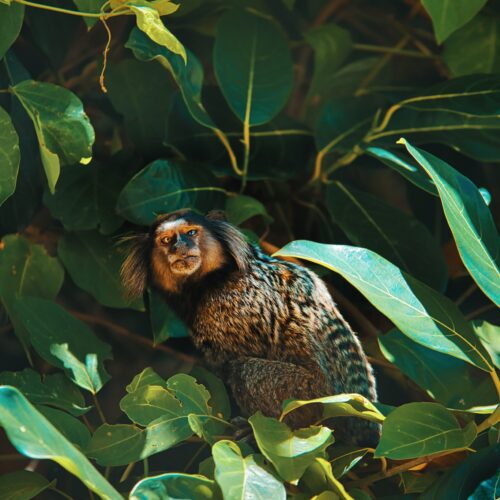
The Best Time to Travel to Chile
Chile is a land of incredible contrasts, from the Atacama Desert in the north to the fjords and glaciers of Patagonia in the south. It’s a country that’s known for its natural beauty, rich cultural heritage, and delicious cuisine. However, when it comes to planning your trip to Chile, one of the most important decisions you’ll make is when to go.
The best time to visit Chile depends on your interests and the specific regions you plan to explore. Here’s a general overview of Chile’s climate, the best time of year to visit each region, and the best places to visit in Chile in each season.
High Season, Shoulder Season, and Low Season in Chile:
High Season in Chile (December – February):
- Best for: Coastal areas, beaches, outdoor activities, and popular tourist destinations.
- Why: This is Chile’s summer season, offering warm weather and vibrant landscapes. Coastal cities like Valparaíso and Viña del Mar, as well as the Lake District, are ideal to visit during this time. It’s also a great time for exploring Santiago and the Atacama Desert.
Shoulder Season in Chile (Spring – Fall):
- Best for: Enjoying a mix of activities and pleasant weather with fewer crowds.
- Why: Spring (September to November) and fall (March to May) offer milder temperatures and less tourist traffic. These seasons are perfect for exploring wine regions, central cities like Santiago, and the Lake District. The Patagonia region is also more accessible, although conditions can still be challenging.
Low Season in Chile (Winter – Early Spring):
- Best for: Skiing, winter sports, and unique Patagonian experiences.
- Why: Winter (June to August) is ideal for ski enthusiasts, especially near Santiago and in the southern Andes. Visiting Patagonia during this time offers unique opportunities for glacier trekking and wildlife spotting, but be prepared for colder temperatures and limited services.
It’s important to note that Chile’s unique geography leads to microclimates, so conditions can vary even within these general seasons.
The Climate in Chile
Chile’s climate varies significantly due to its geographical diversity, stretching from the driest desert in the north to glaciers and fjords in the south. Here’s a general overview of the climate regions in Chile:
- Desert North (Atacama Desert): The northern regions, including the Atacama Desert, are extremely arid and experience very little rainfall. Temperatures can be hot during the day but drop significantly at night due to the lack of moisture in the air.
- Mediterranean Central Region: The central part of Chile, including cities like Santiago, has a Mediterranean climate. Summers (December to February) are warm and dry, while winters (June to August) are cooler and wetter. This area has a distinct rainy season during the winter months.
- Central Valley: The Central Valley, which includes Santiago and surrounding areas, experiences a mix of temperate and Mediterranean climates. It has a wide range of temperatures throughout the year, with hot summers and cool winters.
- Southern Chile: Moving further south, the climate becomes cooler and wetter. Regions like the Lake District (La Araucanía) and Chiloé have a temperate rainforest climate with ample rainfall throughout the year.
- Patagonia Chile: Southern Chile, including the regions of Aysén and Magallanes, features a cold and subpolar climate. Summers are short and cool, while winters can be harsh with snow and freezing temperatures.
- Tierra del Fuego: The southernmost region experiences a subpolar oceanic climate with cold temperatures and significant precipitation year-round.
- Easter Island: Located in the Pacific Ocean, Easter Island has a subtropical climate with mild temperatures and moderate rainfall.
- Oceanic Islands: Chile also includes various other islands, like the Juan Fernández Archipelago, which have climates that can range from temperate to subtropical.
Chile’s unique geographical features, including the Andes Mountains and the Pacific Ocean, play a significant role in shaping its diverse climates.
Traveling During Each Season in Chile:
In general, there are four main seasons in Chile:
- Summer (December – February)
- Fall (March – May)
- Winter (June – August)
- Spring (September – November)
Summer in Chile (December – February):
During the summer months in Chile, which correspond to December through February, the weather varies across different regions. In the central and northern parts, such as Santiago and the Atacama Desert, the weather is warm and dry. This is an excellent time to explore Santiago’s cultural attractions, enjoy outdoor activities like hiking, and venture into the desert to witness its unique landscapes. In the Lake District, further south, the weather is milder and perfect for activities like kayaking, trekking, and enjoying the lush greenery. Coastal areas, like Valparaíso and Viña del Mar, are popular beach destinations during this time, offering pleasant temperatures and refreshing ocean breezes.
Fall in Chile (March – May):
Chilean fall, from March to May, brings cooler temperatures and a stunning display of colors as the leaves change. This is a great time to visit the wine regions, such as the Maipo Valley and Colchagua Valley, as the grape harvest season (known as “vendimia”) takes place. You can participate in grape picking and enjoy wine festivals. In Santiago, the crisp air makes it a comfortable time to explore the city’s parks and neighborhoods. The Lake District’s fall foliage adds a charming touch to the already picturesque landscapes, making it an ideal time for photography and outdoor adventures.
Winter in Chile (June – August):
Chilean winters, occurring from June to August, offer diverse experiences depending on the region. Ski enthusiasts will find joy in the Andes Mountains near Santiago, where ski resorts like Valle Nevado and Portillo offer excellent slopes and winter sports activities. In the Lake District, winter offers a serene atmosphere with snow-covered landscapes, making it a cozy time to enjoy hot springs, indulge in local cuisine, and explore small towns like Pucon. Southern Chile, including Patagonia, experiences more extreme winter conditions, with opportunities for unique experiences like glacier trekking and wildlife spotting.
Spring in Chile (September – November):
Spring in Chile, from September to November, marks the awakening of nature after the winter months. This is a lovely time to visit the central region, including Santiago, as the flowers bloom and temperatures begin to rise. The city’s parks and gardens become vibrant, creating a pleasant atmosphere for walking and outdoor activities. The Lake District’s thawing landscapes offer a fantastic combination of snowy mountain peaks and colorful blossoms. Coastal areas also start to warm up, making it an ideal time for exploring coastal towns, enjoying seafood, and relaxing on the beaches.
Keep in mind that Chile’s geographical diversity means that weather conditions can vary even within the same season
Best Places to Visit in Chile During Each Season:
- Santiago: Explore the vibrant capital city, its historic neighborhoods, and cultural attractions.
- Atacama Desert: Experience the otherworldly landscapes, salt flats, and stargazing opportunities.
- Valparaíso and Viña del Mar: Enjoy the coastal beauty, beaches, and artistic vibes.
- Easter Island: Discover the mysterious Moai statues and learn about the island’s unique history.
- Lake District (Pucon, Villarrica): Engage in outdoor activities like hiking, kayaking, and soaking in hot springs.
- Maipo Valley and Colchagua Valley: Participate in grape harvest festivities and wine tasting.
- Santiago: Embrace the mild weather to explore parks, markets, and cultural sites.
- Chiloé Archipelago: Experience the unique culture, architecture, and cuisine of this island region.
- Valdivia: Enjoy the beautiful riverside city and its German-influenced heritage.
- Torres del Paine National Park (late fall): Visit before winter to enjoy the park’s stunning landscapes and wildlife.
- Andes Mountains near Santiago: Ski or snowboard in popular resorts like Valle Nevado and Portillo.
- Pucon: Relax in hot springs, snowshoe in the surrounding areas, and enjoy winter festivals.
- Chiloé Archipelago: Experience the misty, mystical beauty of this region during the quieter season.
- Patagonia (Torres del Paine, Ushuaia): Embark on winter adventures like glacier trekking and wildlife spotting.
- Chillán: Ski in the Nevados de Chillán ski resort and enjoy the thermal baths.
- Santiago: Enjoy the blooming parks and gardens as spring brings life to the city.
- Atacama Desert: Witness unique desert blooms and enjoy pleasant temperatures.
- Lake District (Pucon, Villarrica): Experience the mix of snowy peaks and blossoming landscapes.
- Valparaíso: Explore the city’s colorful streets and enjoy a more temperate climate.
- Aysén Region: Venture into the Carretera Austral for stunning springtime scenery.
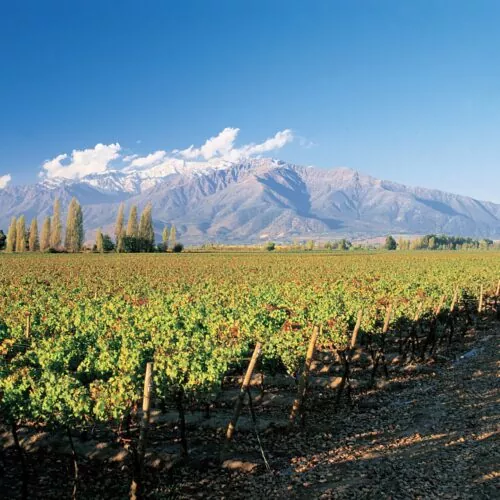
The Best Time of Year to Travel to Colombia
Colombia is a country that offers a wealth of experiences for travelers. From stunning beaches to lush rainforests, colorful cities to historical landmarks, there is something for everyone in this diverse and vibrant country. However, before booking your flight and packing your bags, it’s important to know the best time of year to travel to Colombia. In this article, we’ll explore the ideal time to visit Colombia based on weather, festivals, and other factors that can impact your trip.
High Season, Shoulder Season, and Low Season in Colombia:
The best times to visit Colombia based on its high season, shoulder season, and low season, along with the highlights of each period:
High Season In Colombia (December to February, June to July):
Best for: Beach vacations, cultural festivals, and exploring cities.
- The high season coincides with Colombia’s dry seasons, making it an excellent time for beach vacations on the Caribbean and Pacific coasts.
- Major cities like Cartagena, Bogotá, and Medellín have pleasant weather during this period, making it ideal for city exploration and cultural experiences.
- Many festivals and events take place, such as the Barranquilla Carnival in February, offering vibrant cultural experiences.
Shoulder Season in Colombia (March to May, August to November):
Best for: Avoiding crowds, enjoying lower prices, and experiencing local culture.
- Shoulder seasons offer a balance between relatively good weather and fewer tourists, making it a great time to explore popular destinations without the high-season crowds.
- Hotel and flight prices tend to be more budget-friendly during this time, allowing for cost-effective travel.
- You’ll have the opportunity to engage more deeply with local culture and communities without the hustle and bustle of peak tourism.
Low Season (June to August, October to November):
Best for: Rainforest adventures, eco-tourism, and river exploration.
- While these months are part of the rainy season in some regions, they are still a fantastic time to visit if you’re interested in experiencing the lush beauty of Colombia’s rainforests and natural landscapes.
- The rainforest comes to life during this time with vibrant vegetation and increased animal activity, offering unique opportunities for eco-tourism and wildlife watching.
- River-based activities like kayaking and rafting can be particularly thrilling during the rainy season when water levels are higher.
The Climate in Colombia
Colombia has a diverse climate due to its varying topography and proximity to the equator. The climate ranges from tropical along the coastlines to cooler and more temperate in the highlands. Here’s a general overview of the different climate zones you can find in Colombia:
- Tropical Coastal Regions: The coastal areas, including cities like Cartagena and Barranquilla, have a hot and humid tropical climate. Temperatures usually range between 25°C to 30°C (77°F to 86°F) throughout the year. These regions experience distinct wet and dry seasons.
- Andean Highlands: Colombia’s interior, where cities like Bogotá, Medellín, and Cali are located, is characterized by a more temperate climate due to the high elevation. The temperatures tend to be cooler and more stable, with average temperatures ranging from 10°C to 20°C (50°F to 68°F). There is less variation between seasons compared to coastal areas.
- Amazon Rainforest: The southern part of Colombia is covered by the Amazon rainforest, where you’ll find high temperatures and high humidity levels year-round. This region experiences heavy rainfall throughout the year.
- Orinoco Plains: The eastern plains have a tropical savanna climate with distinct wet and dry seasons. The temperatures can be quite high, often exceeding 30°C (86°F), and the region experiences significant rainfall during the wet season.
- Pacific Coast: The western coast, facing the Pacific Ocean, experiences heavy rainfall due to the influence of the ocean currents and prevailing winds. Cities like Buenaventura and Tumaco receive substantial amounts of rainfall throughout the year.
- Caribbean Coast: The northern Caribbean coast, which includes cities like Santa Marta and Cartagena, experiences a tropical climate with distinct wet and dry seasons. Temperatures are generally warm, ranging from 25°C to 30°C (77°F to 86°F).
Overall, Colombia’s climate diversity is influenced by its geographical features, including its mountains, coastlines, and proximity to the equator.
Traveling During Each Season in Colombia
In general, there are four main seasons in Colombia:
- Summer in Colombia (December to February)
- Fall in Colombia (March to May)
- Winter in Colombia (June to August)
- Spring in Colombia (September to November)
Summer in Colombia (December to February):
During Colombia’s summer months, which correspond to December to February, the country experiences its high season. This is when the weather is typically dry and warm, making it an ideal time for beach vacations along both the Caribbean and Pacific coasts. Cities like Cartagena, with its historic charm and beautiful beaches, become popular destinations for travelers seeking a mix of cultural experiences and relaxation. Santa Marta and San Andres Island are also excellent choices for their pristine beaches and water activities. The vibrant Barranquilla Carnival takes place in February, attracting visitors with its lively parades, music, and dancing.
Fall in Colombia (March to May):
Colombia’s fall, from March to May, marks the shoulder season—a time of transitioning weather and fewer crowds. The Andean highlands, including cities like Bogotá and Medellín, offer pleasant temperatures and fewer tourists during these months. Medellín, known as the “City of Eternal Spring,” lives up to its name with mild weather year-round. In Bogotá, you can explore museums, art galleries, and local markets without the peak-season crowds. The Coffee Triangle, with its stunning landscapes and coffee plantations, is another excellent destination during this time.
Winter in Colombia (June to August):
Colombia’s winter, from June to August, coincides with the rainy season in many regions. However, this is a fantastic time for rainforest adventures and eco-tourism experiences. The Amazon rainforest bursts with life during these months, making it an ideal time for wildlife enthusiasts and bird watchers. The city of Leticia, located in the Amazon rainforest near the borders of Brazil and Peru, is a gateway to these unique experiences. The Pacific Coast also comes to life with lush greenery and offers opportunities for whale watching.
Spring in Colombia (September to November):
During Colombia’s spring, from September to November, the country enters another shoulder season. This is a great time to visit the Caribbean coast, as the rain decreases and temperatures remain pleasant. The walled city of Cartagena continues to be a popular destination, offering a mix of history, culture, and beach relaxation. The Rosario Islands, a short boat ride from Cartagena, are perfect for snorkeling and diving. Additionally, this is a good time to explore Colombia’s interior regions like the Tatacoa Desert and Villa de Leyva, where you can enjoy comfortable temperatures and fewer tourists.
The Best Places to Visit in Colombia During Each Season:
- Cartagena: Explore the historic walled city, relax on the beautiful beaches, and enjoy the lively nightlife.
- Santa Marta: Visit the stunning Tayrona National Park for its beaches and hiking trails.
- San Andres Island: Dive into the crystal-clear waters, snorkel in the coral reefs, and enjoy water sports.
- Barranquilla: Experience the vibrant Barranquilla Carnival with its colorful parades and cultural events.
- Medellín: Enjoy the pleasant weather and explore the city’s museums, parks, and Botanical Garden.
- Bogotá: Discover the rich cultural scene, museums, and historical sites like La Candelaria.
- Coffee Triangle (Manizales, Armenia, Pereira): Experience coffee plantation tours, hike in the Cocora Valley, and enjoy the charming towns.
- Villa de Leyva: Visit this colonial town with its cobbled streets, historic architecture, and nearby fossils.
- Leticia: Explore the Amazon rainforest, go wildlife spotting, and experience indigenous culture.
- Nuquí: Enjoy whale watching on the Pacific Coast and relax in natural thermal pools.
- Mompox: Discover this colonial gem and its well-preserved architecture along the Magdalena River.
- Cali: Attend the Feria de Cali, a lively salsa music and dance festival.
- Cartagena: Enjoy milder weather and fewer crowds while exploring the city’s historic sites.
- Rosario Islands: Snorkel, dive, and relax on the pristine beaches of these nearby islands.
- Tatacoa Desert: Explore the unique desert landscapes and stargaze in this arid region.
- San Agustin: Discover ancient archaeological sites and sculptures in a scenic Andean setting.
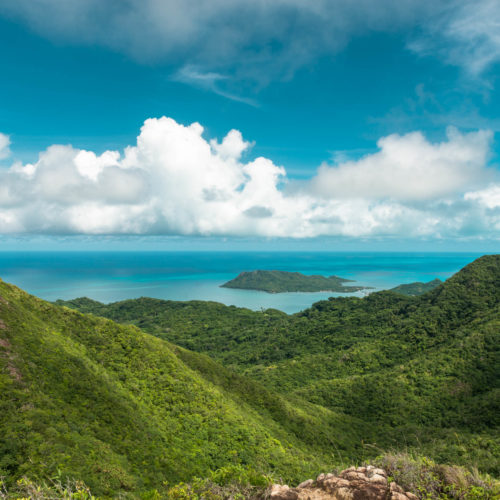
The Best Time of Year to Travel to Ecuador
Ecuador is a land of stunning beauty, with its soaring Andean peaks, tropical rainforests, and pristine beaches. But before you pack your bags and head off on your adventure, it’s important to know when the best time to visit Ecuador is. The climate in Ecuador can vary greatly depending on the time of year and the region you’re in, so it’s important to plan your trip accordingly. Here’s a general overview of Ecuador’s climate, the best time of year to visit each region, and the best places to visit in Ecuador during each season:
Best Time to Visit Ecuador: High Season, Shoulder Season, Low Season
High Season in Ecuador (June to August):
Best For: Exploring the Galápagos Islands, hiking in the Andes, and enjoying Quito’s festivals.
Why: This period offers dry and mild weather across the country, making it perfect for outdoor activities. In the Galápagos, you can witness unique wildlife and enjoy clear waters for snorkeling. The Andean region’s trekking trails are more accessible due to less rainfall. Quito’s Inti Raymi festival in June and other cultural events draw visitors.
Shoulder Seasons in Ecuador (September to November, April to May):
Best For: Experiencing fewer crowds, favorable weather, and a blend of activities.
Why: These months bridge the gap between high and low seasons. You can still enjoy pleasant weather in most regions while encountering fewer tourists. It’s a great time for exploring the Amazon Rainforest and enjoying quieter beaches. Wildlife viewing in the Galápagos remains excellent, and prices might be more budget-friendly.
Low Season in Ecuador (December to March):
Best For: Rainforest adventures, beach relaxation, and cultural immersion.
Why: While this period is the wettest in most regions, it’s an ideal time for rainforest enthusiasts due to lush vegetation and active wildlife. Coastal areas experience heavy rainfall, but if you’re looking to enjoy quieter beaches and cultural experiences, this could be a good time. In the Andes, the rain might limit outdoor activities, but cities like Quito offer indoor attractions.
In summary, high season is great for Galápagos exploration and Andean hikes, while shoulder seasons offer a balanced blend of activities with fewer crowds. Low season appeals to rainforest enthusiasts and those interested in cultural immersion.
The Climate in Ecuador:
Ecuador’s climate varies significantly due to its diverse geography and altitude range. The country is located on the equator, which influences its climate patterns. Generally, Ecuador can be divided into four main regions, each with its own distinct climate:
- Coastal Region: The coastal area has a tropical climate with high temperatures and humidity year-round. It experiences a wet season from December to May and a dry season from June to November.
- Andean Region: The Andes mountains run through the center of Ecuador. The climate here varies with altitude. At higher elevations, temperatures tend to be cooler, and there can be significant temperature fluctuations between day and night. Quito, the capital city, is situated in the Andean region and has a relatively mild climate due to its elevation.
- Amazon Rainforest: The eastern part of Ecuador is covered by the Amazon Rainforest. This region has a tropical rainforest climate, characterized by high temperatures, heavy rainfall, and high humidity year-round.
- Galápagos Islands: The Galápagos Islands, located off the coast of Ecuador, have a unique climate. The islands experience a dry season from June to December and a warm, wet season from January to May. Temperatures are relatively stable throughout the year, with mild variations.
Ecuador’s climate diversity makes it an attractive destination for travelers seeking a range of experiences, from beach relaxation to mountain trekking and rainforest exploration.
Traveling During Each Season in Ecuador
In general, there are four main seasons in Ecuador:
- Summer in Ecuador (June to August)
- Fall in Ecuador (September to November, April to May)
- Winter in Ecuador (December to February)
- Spring in Ecuador (March)
Summer in Ecuador (June to August):
During the summer months of June to August, Ecuador experiences its high season. The weather is generally dry and mild across the country, making it an excellent time for outdoor exploration. The Galápagos Islands are a prime destination during this period, offering a chance to witness unique wildlife and enjoy clear waters for snorkeling. In the Andes, the weather is pleasant for hiking and trekking, and popular cities like Quito come alive with festivals, including the Inti Raymi celebration in June. The coastal region experiences warm temperatures, inviting beachgoers to relax along the Pacific shores.
Fall in Ecuador (September to November, April to May):
Fall in Ecuador, spanning from September to November and April to May, marks the shoulder seasons. These months provide a wonderful blend of activities with fewer crowds. The weather remains favorable, and it’s a great time to explore the Amazon Rainforest, where lush vegetation and active wildlife are highlights. Coastal areas enjoy pleasant temperatures and quieter beaches, perfect for relaxation. The Galápagos Islands continue to offer excellent wildlife viewing opportunities, and you might find more budget-friendly options during this time. In the Andean region, you can still enjoy trekking and cultural experiences without the peak-season rush.
Winter in Ecuador (December to February):
Ecuador’s winter, from December to February, falls within the low season. While rainfall is more common in most regions, this period offers unique experiences. Rainforest adventures are particularly appealing as the lush vegetation thrives, and wildlife activity is at its peak. Coastal areas experience heavy rainfall, making it a quieter time for beaches, but it’s an ideal opportunity for cultural immersion. Cities like Quito provide indoor attractions, including museums and historic sites, where you can learn about the country’s rich heritage.
Spring in Ecuador (March):
Spring in Ecuador, which primarily refers to March, is a transitional month between the rainy season and drier times. While not as well-defined as in other regions, March can be a great time to visit the Andean region as the weather begins to stabilize. Hiking and trekking are still viable options, and the Galápagos Islands continue to offer wildlife experiences, albeit with slightly more unpredictable weather. The coastal region gradually emerges from the wet season, making it a suitable time to enjoy beach activities before the peak of the dry season.
The Best Places to Visit in Ecuador During Each Season:
Best Places to Visit in Ecuador During Summer (June to August):
- Galápagos Islands: Encounter iconic species like giant tortoises at Tortuga Bay and dive into vibrant marine life at Devil’s Crown.
- Quilotoa: Hike to the stunning Quilotoa crater lake and witness its mesmerizing turquoise waters.
- Baños: Engage in adventure activities like zip-lining, canyoning, and soaking in natural hot springs.
- Mindo: Discover cloud forest biodiversity through activities like birdwatching, hiking, and visiting butterfly gardens.
Best Places to Visit in Ecuador During Fall (September to November, April to May):
- Yasuní National Park: Immerse yourself in the Amazon Rainforest, spot wildlife, and visit indigenous communities.
- Cotopaxi Volcano: Trek in Cotopaxi National Park and relish panoramic views of the surrounding landscape.
- Puerto López: Experience whale watching and observe humpback whales during their migration.
- Otavalo: Explore the indigenous market, showcasing traditional crafts, textiles, and local produce.
Best Places to Visit in Ecuador During Winter (December to February):
- Tena: Enjoy river rafting, kayaking, and jungle hikes in the heart of the Amazon Rainforest.
- Cuenca: Admire the architecture of Cuenca’s historic center, a UNESCO World Heritage site.
- Mindo: Embark on a chocolate tour and learn about the cacao production process.
- Baños: Relax in the town’s thermal baths and explore nearby waterfalls and canyons.
Best Places to Visit in Ecuador During Spring (March):
- Baños: Enjoy the “Swing at the End of the World” with panoramic views of Tungurahua Volcano.
- Galápagos Islands: Snorkel with sea lions at Los Tuneles and spot blue-footed boobies on Isabela Island.
- Cuenca: Visit the Pumapungo Archaeological Park, offering insights into Incan history.
- Cajas National Park: Hike around the stunning Llaviucu Lake and witness high-altitude ecosystems.
Ecuador’s diverse regions and unique attractions offer travelers a rich variety of experiences throughout the year. These specific destinations provide opportunities for adventure, cultural exploration, and appreciation of the country’s natural beauty.
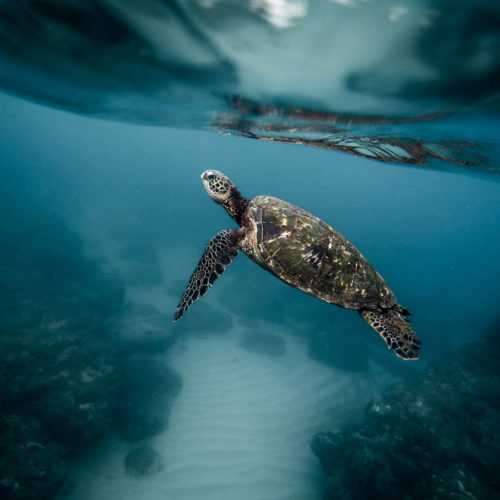
The Best Time of Year to Travel to Paraguay
Paraguay, located in the heart of South America, is a hidden gem waiting to be explored. With its rich cultural heritage, stunning natural landscapes, and vibrant cities, it offers a unique travel experience that should not be missed. However, planning the perfect trip to Paraguay can be challenging, especially when it comes to deciding when to go. The country experiences a subtropical climate, which means that the weather can vary greatly depending on the time of year. Here’s a general overview of Paraguay’s climate, the best time of year to visit each region, and the best places to visit in Paraguay during each season:
Best Time to Visit Paraguay: High Season, Shoulder Season, Low Season
Below is a breakdown of the best times to visit Paraguay, including the high season, shoulder season, and low season, along with the highlights and reasons for each:
Best for: Summer enthusiasts, nature lovers, and festival-goers.
- High temperatures and vibrant atmosphere make it ideal for those who enjoy warm weather.
- Great time for outdoor activities like hiking, water sports, and exploring national parks.
- Experience Paraguayan festivals and cultural events, including Christmas and New Year’s celebrations.
Best for: Travelers seeking pleasant weather, fewer crowds, and diverse experiences.
- Mild temperatures and lower humidity provide comfortable conditions for exploration.
- Enjoy various outdoor activities without the peak-season crowds.
- Observe the changing landscapes as the country transitions between wet and dry seasons.
Best for: Budget-conscious travelers, wildlife enthusiasts, and those interested in local culture.
- Lower tourist numbers lead to discounted rates on accommodations and tours.
- Optimal time for wildlife spotting, as animals gather near water sources in the drier landscape.
- Experience authentic Paraguayan culture and interact with locals without the crowds.
The Climate in Paraguay:
The climate in Paraguay is predominantly subtropical, characterized by distinct wet and dry seasons. The country experiences four main seasons: summer, autumn, winter, and spring.
- Summer (December to February): During the summer months, Paraguay experiences high temperatures and high humidity levels. Average temperatures can range from 25°C to 35°C (77°F to 95°F), and occasionally even higher. This is also the rainy season, with frequent thunderstorms and heavy rainfall.
- Autumn (March to May): Autumn in Paraguay is characterized by gradually decreasing temperatures and decreasing rainfall. Temperatures during this time can range from 18°C to 28°C (64°F to 82°F). The transition from the wet season to the dry season usually occurs during these months.
- Winter (June to August): Winter in Paraguay is mild and dry compared to the summer. Average temperatures can vary between 10°C to 20°C (50°F to 68°F), with colder temperatures in the southern regions. While it is considered the dry season, occasional cold fronts can bring rainfall.
- Spring (September to November): Spring is a transitional season in Paraguay, with temperatures rising as the country moves back into the summer months. Average temperatures range from 18°C to 28°C (64°F to 82°F). Rainfall gradually increases as well, marking the transition into the wet season.
Traveling During Each Season in Paraguay
Summer in Paraguay (December to February):
Paraguay’s summer is characterized by its warm temperatures and high humidity levels. During these months, visitors can expect hot and humid conditions, with average temperatures ranging from 25°C to 35°C (77°F to 95°F). This is the high season for tourism, attracting summer enthusiasts, nature lovers, and festival-goers. It’s an ideal time for outdoor activities like hiking, water sports, and exploring the country’s numerous national parks. The capital city, Asunción, comes alive with festivals and cultural events, making it a vibrant destination during this period. The beaches along the Ypacaraí and San Bernardino lakes become popular spots for relaxation and water activities.
Fall in Paraguay (March to May):
As Paraguay transitions from summer to winter, fall brings mild temperatures and decreasing humidity. With average temperatures ranging from 18°C to 28°C (64°F to 82°F), this shoulder season offers pleasant weather for travelers seeking diverse experiences. It’s a great time for exploring various outdoor activities without the high-season crowds. The town of Areguá, known for its artisanal crafts and tranquil lake, is a picturesque spot to visit during this time. The Jesuit Missions of La Santísima Trinidad de Paraná and Jesús de Tavarangue also offer historical and architectural exploration in comfortable weather.
Winter in Paraguay (June to August):
Paraguayan winters are mild and dry compared to the summer months. Average temperatures during this period can vary between 10°C to 20°C (50°F to 68°F). This is the low season for tourism, making it an excellent opportunity for budget-conscious travelers to explore. The Chaco region, with its unique landscapes and wildlife, becomes a highlight during this time. The city of Encarnación hosts the annual San Juan Bautista Festival, celebrating its cultural heritage with music, dance, and parades.
Spring in Paraguay (September to November):
Spring in Paraguay is marked by rising temperatures and increasing rainfall as the country transitions into the wet season. With average temperatures ranging from 18°C to 28°C (64°F to 82°F), it’s a great time to witness the changing landscapes. Paraguay’s largest national park, Defensores del Chaco, offers lush greenery and diverse wildlife during this period. The city of Villarrica is known for its vibrant Carnival celebrations, offering a unique cultural experience for visitors.
Remember that Paraguay’s climate can vary between its eastern and western regions due to geographical features like the Atlantic Ocean and the Gran Chaco desert.
The Best Places to Visit in Paraguay During Summer, Fall, Winter, and Spring:
Places to Visit during Summer in Paraguay (December to February):
- Asunción: The capital city comes alive with vibrant festivals and cultural events during summer, such as the colorful Carnival celebrations.
- Ypacaraí Lake: This scenic lake is a popular destination for water activities like swimming, boating, and jet skiing.
- San Bernardino: A picturesque town near Lake Ypacaraí, known for its beaches and summer resorts, making it a perfect spot for relaxation.
- Ñu Guasu Park: This park in Luque offers nature trails, picnic areas, and outdoor recreational activities for families and nature enthusiasts.
- Areguá: Explore the artisanal crafts and pottery shops in this charming town by Lake Ypacaraí.
Places to Visit during Fall in Paraguay (March to May):
- Areguá: The town’s tranquility and beautiful lake views make it an even more delightful destination during the mild fall weather.
- Jesuit Missions: Explore the historic ruins of Jesuit missions like La Santísima Trinidad de Paraná and Jesús de Tavarangue.
- Itaipú Dam: One of the world’s largest hydroelectric power plants, offering guided tours to learn about its engineering marvels.
- Ybycuí National Park: With its waterfalls, hiking trails, and diverse flora and fauna, this park is ideal for nature enthusiasts.
- Ybycuí town: Experience Paraguayan traditions during the Semana Santa (Holy Week) celebrations.
Places to Visit during Winter in Paraguay (June to August):
- Chaco Region: This arid region is best explored during the milder winter months. Discover the unique flora, fauna, and Indigenous cultures.
- Encarnación: Enjoy the San Juan Bautista Festival with music, dance, and parades celebrating local culture.
- La Santísima Trinidad de Paraná: The cooler weather provides a comfortable atmosphere to explore the UNESCO-listed Jesuit mission ruins.
- San Cosme y Damián: Relax by the beaches of the Paraná River and visit the historic church in this charming town.
- Villarrica: Engage in traditional Paraguayan activities and cuisine during the Corpus Christi celebrations.
Places to Visit during Spring in Paraguay (September to November):
- Defensores del Chaco National Park: Witness the lush greenery and diverse wildlife in Paraguay’s largest national park.
- Villarrica: Join the vibrant Carnival celebrations with colorful parades, music, and dance.
- Caacupé: Visit the country’s most important religious site, the Basilica of Our Lady of Miracles, during the spring pilgrimage.
- Ybycuí National Park: The spring rains bring the waterfalls to life, making it an excellent time for waterfall hikes.
- San Bernardino: Enjoy the comfortable temperatures and the beauty of Lake Ypacaraí while avoiding the crowds of summer.
These destinations offer a range of experiences throughout the different seasons in Paraguay, ensuring that visitors can enjoy the country’s beauty and culture year-round.
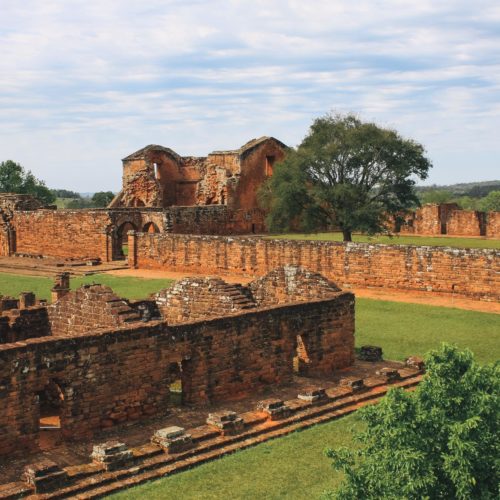
The Best Time of Year to Travel to Peru
The best time to visit Peru depends on your interests and the regions you want to explore. Whether you’re drawn to ancient ruins, stunning landscapes, rich culture, or diverse wildlife, planning your trip based on the specific weather patterns of each region will ensure you have an amazing trip! Here’s a general overview of Peru’s climate, the best time of year to visit each region, and the best places to visit in Peru during each season:
Best Time to Visit Peru: High Season, Shoulder Season, Low Season, Rainy Season, Dry Season
Here’s a breakdown of the high season, shoulder season, and low season, along with what each season is best for:
High Season in Peru (May to September):
Best for: Exploring the Andes, trekking to Machu Picchu, and enjoying coastal cities.
Why: The dry season offers clear skies and pleasant temperatures, making it ideal for outdoor activities and trekking. This period is also popular for Machu Picchu visits due to favorable weather conditions.
Shoulder Seasons in Peru (April and October):
Best for: Combining various experiences across different regions.
Why: Shoulder seasons offer a balance between weather and crowd levels. April and October can be great times to explore both the coast and the mountains, as well as participate in outdoor adventures.
Low Season (November to March):
Best for: Exploring the Amazon rainforest and enjoying fewer crowds in certain areas.
Why: While the rainy season can deter some tourists, it’s a fantastic time to experience the lush beauty of the Amazon rainforest. The crowds are smaller, and you can often find better deals on accommodations
The Climate in Peru:
Peru experiences a diverse range of climates due to its varied geography. The climate varies across its different regions, including the coastal areas, the Andes mountains, and the Amazon rainforest.
- Coastal Region: Along the coast, especially in cities like Lima, the climate is generally mild and arid. Temperatures remain warm throughout the year, with minimal fluctuations. The influence of the cold Humboldt Current from the Pacific Ocean brings cooler ocean breezes.
- Andes Mountains: In the Andes, the climate changes significantly with altitude. Higher altitudes experience cooler temperatures, while lower valleys might have more temperate weather. Cities like Cusco and Arequipa have distinct temperature variations between day and night, so packing layers is important.
- Amazon Rainforest: The climate in the Amazon basin is tropical and humid. The region experiences high temperatures and abundant rainfall year-round. There’s a pronounced wet season from November to April, with heavy rainfalls. Humidity levels remain high, making the area feel even hotter.
- Highlands and Plateaus: The Altiplano region, situated between the coastal desert and the Andes, has a highland climate characterized by cold temperatures, especially during the night.
In Peru, it’s also critical to understand the rainy and dry seasons when planning your trip. Here’s a general overview:
Coastal Region (Lima, Trujillo, Piura, etc.):
- Rainy Season: Minimal rainfall throughout the year, but slightly more rain occurs from June to August.
- Dry Season: Dominates from December to April with little to no rainfall.
Andes Mountains (Cusco, Machu Picchu, Arequipa, etc.):
- Rainy Season: Generally from November to March, with the heaviest rainfall in January and February.
- Dry Season: Stretches from May to September, offering drier and more stable weather conditions.
Amazon Rainforest (Iquitos, Puerto Maldonado, etc.):
- Rainy Season: Occurs from November to April, with significant rainfall and higher humidity levels.
- Dry Season: Runs from May to October, featuring lower water levels and less rainfall, making it more accessible for certain activities.
*note: the exact timing of the rainy and dry seasons can vary slightly from year to year.
Traveling During Each Season in Peru
In general, there are four main seasons in Peru:
- Summer in Peru (December to February)
- Fall in Peru (March to May)
- Winter in Peru (June to August)
- Spring in Peru (September to November)
Summer in Peru (December to February):
During the summer months in Peru, which coincide with December to February, the coastal regions experience warm and sunny weather. Cities like Lima and Trujillo enjoy pleasant temperatures, making it an ideal time to explore beaches, indulge in water sports, and immerse in cultural activities. The dry season prevails along the coast, attracting visitors to iconic sites like Machu Picchu, which boasts clear skies and moderate crowds. This is a high season for trekking, with trails like the Inca Trail offering breathtaking views of the Andes.
Fall in Peru (March to May):
Peru’s fall season, spanning from March to May, presents a transition from the rainy season to drier conditions. This is a great time to explore various regions without the peak crowds of summer. The Amazon rainforest comes alive with vibrant flora and fauna, offering exceptional opportunities for wildlife spotting. The coastal areas continue to enjoy mild temperatures, and cities like Lima host cultural festivals and events. The Andes mountains, especially Cusco, become more accessible as the rainy season subsides.
Winter in Peru (June to August):
Winter in Peru, encompassing June to August, marks the peak of the dry season and is a popular time for travelers. The Andes mountains and Machu Picchu experience clear skies, making it an optimal period for trekking and outdoor adventures. The Amazon rainforest has fewer mosquitoes and is more comfortable to explore during this time. Coastal cities still enjoy mild temperatures, although the water can be cooler, attracting surfers and beach enthusiasts.
Spring in Peru (September to November):
Spring, from September to November, sees a transition back into the rainy season in certain regions. The coastal areas experience milder temperatures, and this is a fantastic time to explore historical sites like Lima’s colonial architecture or Trujillo’s ancient ruins. The Andes mountains begin to see more rain, but the trekking paths remain accessible, offering a blend of green landscapes and clearer skies. The Amazon rainforest becomes more vibrant, with blooming flowers and increased wildlife activity.
The Best Places to Visit in Peru During Summer, Fall, Winter, and Spring:
- Machu Picchu: The iconic Inca citadel is a must-visit during the summer months. Enjoy clear skies and moderate crowds for a breathtaking experience.
- Lima: Explore Peru’s capital city, where you can enjoy its vibrant culinary scene, historic sites like Plaza de Armas, and beautiful beaches such as Miraflores and Barranco.
- Trujillo: Discover ancient ruins like Chan Chan and Huaca del Sol y la Luna, and bask in the warm coastal climate.
- Amazon Rainforest (Iquitos, Puerto Maldonado): Experience the incredible biodiversity of the Amazon during this transitional period. Witness lush flora, spot wildlife, and enjoy more comfortable weather.
- Cusco: Explore the heart of the Inca Empire with fewer crowds. Visit the historic center, Sacsayhuaman, and enjoy cultural festivals like Semana Santa (Holy Week).
- Nazca Lines: Take a flight over the enigmatic Nazca Lines for a unique perspective on these ancient geoglyphs.
- Cusco and Sacred Valley: Embark on unforgettable treks, such as the Inca Trail or the Salkantay Trek, to reach Machu Picchu under clear skies and cooler temperatures.
- Arequipa: Discover the “White City” and visit the breathtaking Colca Canyon to witness condors soaring above the world’s second-deepest canyon.
- Paracas National Reserve: Enjoy the beauty of the desert and coastal landscapes, spot wildlife like Humboldt penguins, and take boat tours to see the Ballestas Islands.
- Lima: Explore the city’s historic neighborhoods, museums, and art galleries as the coastal climate becomes milder.
- Cusco and Surroundings: Experience the start of the rainy season with greener landscapes. Visit the Maras Salt Mines and Moray archaeological site.
- Manu National Park: Discover one of the world’s most biodiverse areas in the Amazon rainforest, with blooming flowers and active wildlife.
- Arequipa and Colca Canyon: Enjoy pleasant temperatures and witness the vibrant agricultural terraces of the Colca Valley.
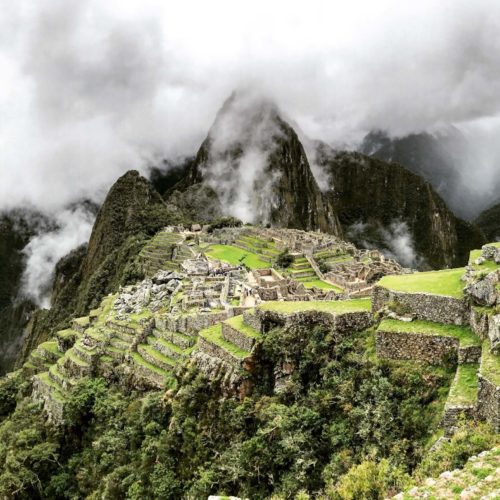
The Best Time of Year to Travel to Uruguay
Uruguay, the small South American country, is often overshadowed by its more famous neighbors, Brazil and Argentina. However, this hidden gem offers a unique blend of colonial charm, natural beauty, and vibrant culture that is worth exploring. If you are planning a trip to Uruguay, one of the most important things to consider is the timing of your visit. The country experiences a varied climate throughout the year, and the best time to visit depends on your preferences and interests. Here’s a general overview of Uruguay’s climate, the best time of year to visit each region, and the best places to visit in Uruguay during each season:
Best Time to Visit Uruguay: High Season, Shoulder Season, Low Season
Here’s a breakdown of the best times to visit Uruguay, considering high season, shoulder season, and low season, along with their respective advantages:
High Season in Uruguay (December to February):
- Beach Lovers: The high season aligns with Uruguay’s summer, making it perfect for enjoying the beautiful beaches along the Atlantic coastline.
- Vibrant Atmosphere: The country is bustling with activities, festivals, and events during this time, creating a lively and festive atmosphere.
- Ideal Weather for Water Sports: The warm temperatures and sunny days provide excellent conditions for swimming, surfing, and other water sports.
Why: High season offers the best beach experience and an opportunity to immerse in the energetic culture of Uruguay.
Shoulder Season in Uruguay (March to April, September to November):
- Mild Weather: The shoulder seasons offer pleasant temperatures, making outdoor activities, sightseeing, and exploring more comfortable.
- Reduced Crowds: While not as busy as the high season, the shoulder seasons still provide a decent level of tourism activity without the overwhelming crowds.
- Wine Tasting: In the fall (April to May), vineyards and wineries in Uruguay host wine-related events, making it an ideal time for wine enthusiasts to visit.
Why: Shoulder seasons strike a balance between pleasant weather and fewer crowds, allowing for a more relaxed and enjoyable experience.
Low Season in Uruguay (June to August):
- Cost Savings, with fewer tourists, accommodations and activities tend to be more affordable during the low season, making it a budget-friendly option.
- Quieter Atmosphere: If you prefer a tranquil and peaceful vacation, the low season provides a more laid-back environment with less hustle and bustle.
- Wildlife Watching: This period is great for spotting wildlife, as many migratory birds and whales can be seen along the coastline.
Why: Low season is ideal for travelers seeking a more affordable and serene escape, along with unique wildlife-watching opportunities.
The Climate in Uruguay
Uruguay has a temperate climate with mild, relatively humid summers and cool winters. The country’s climate is greatly influenced by its proximity to the Atlantic Ocean. Here’s a breakdown of the different seasons:
- Summer (December to February): During the summer months, temperatures in Uruguay range from around 25°C to 35°C (77°F to 95°F) in the daytime. Humidity levels can be relatively high, especially closer to the coast. This is the peak tourist season, as many people flock to the beaches along the coastline.
- Autumn (March to May): Autumn in Uruguay is mild and comfortable, with temperatures gradually dropping. Daytime temperatures range from 15°C to 25°C (59°F to 77°F). This is generally a pleasant time to visit, as the summer heat starts to ease.
- Winter (June to August): Winters in Uruguay are cooler, but not extremely cold. Daytime temperatures hover around 10°C to 15°C (50°F to 59°F), and nighttime temperatures can drop further. Coastal areas experience milder winters due to the moderating effect of the ocean.
- Spring (September to November): Spring is another pleasant time to visit Uruguay. Temperatures start rising again, ranging from 15°C to 25°C (59°F to 77°F). The landscape becomes lush with vegetation as the rainy season begins.
Rainfall is fairly evenly distributed throughout the year, with the wettest months being in fall and spring. Coastal areas tend to receive more rainfall than inland regions.
Traveling During Each Season in Uruguay
Summer in Uruguay (December to February):
During Uruguay’s summer, which spans from December to February, the country comes alive with warmth and energy. This is the high season when both locals and tourists flock to the stunning beaches along the Atlantic coastline. The weather is at its peak, with temperatures ranging from 25°C to 35°C (77°F to 95°F) during the day. The coastal towns such as Punta del Este and La Paloma are particularly popular, offering white sandy beaches and a range of water activities like swimming, surfing, and kiteboarding. Punta del Este is known for its vibrant nightlife, luxury resorts, and upscale dining, making it a hotspot for those seeking a lively social scene. This season is perfect for beach lovers and those who want to indulge in the festive atmosphere of Uruguay’s coastal towns.
Fall in Uruguay (March to May):
As summer transitions to fall from March to May, Uruguay experiences milder temperatures and a comfortable atmosphere. With daytime temperatures ranging from 15°C to 25°C (59°F to 77°F), this is an ideal time for outdoor activities and exploration. The capital city, Montevideo, becomes a great destination for sightseeing with its historical sites, vibrant markets, and charming neighborhoods. Additionally, the wine regions of Uruguay, particularly in the Canelones and Maldonado departments, offer wine enthusiasts a chance to participate in wine festivals and tours. The vineyards are laden with ripe grapes, and the fall colors add to the picturesque beauty of the landscape. Fall is best suited for those who appreciate pleasant weather, cultural exploration, and wine tasting experiences.
Winter in Uruguay (June to August):
Uruguayan winters, spanning from June to August, are relatively cool but not harsh. Daytime temperatures hover around 10°C to 15°C (50°F to 59°F), making this a great time for travelers who enjoy cooler climates. The coastal areas, like Punta del Diablo and Cabo Polonio, still maintain a milder temperature due to the moderating influence of the ocean. The tranquility of these coastal towns during the low season provides a serene environment for those seeking a peaceful getaway. Furthermore, Uruguay’s diverse wildlife can be observed during this time, as migratory birds flock to wetlands, and whales can be spotted off the coast. Winter offers an opportunity for wildlife enthusiasts, budget-conscious travelers, and those who relish quieter surroundings.
Spring in Uruguay (September to November):
Spring, from September to November, marks a renewal of life in Uruguay. The weather becomes more inviting, with temperatures ranging from 15°C to 25°C (59°F to 77°F). The countryside is adorned with lush greenery and colorful blossoms, creating a picturesque setting. Rocha, a department known for its natural beauty, including lagoons and beaches, is a perfect place to experience the vibrancy of spring. The town of Colonia del Sacramento, a UNESCO World Heritage Site, is another fantastic destination to explore during this season, boasting cobbled streets and well-preserved colonial architecture. Spring is a wonderful time for nature lovers, photography enthusiasts, and those who wish to immerse themselves in the natural beauty and historical charm of Uruguay.
Best Places to Visit in Uruguay During Each Season:
- Punta del Este: Explore the glamorous beaches, upscale resorts, and vibrant nightlife of this popular coastal town.
- La Paloma: Enjoy a laid-back beach vibe, great for surfing and relaxation, with pristine shores and charming beachside cabins.
- Montevideo’s Rambla: Stroll along the city’s picturesque coastline, visit markets, and soak in the local culture.
- Cabo Polonio: Experience a unique coastal village with sand dunes, a lighthouse, and an off-the-grid ambiance.
- Montevideo’s Ciudad Vieja: Wander through the historic Old Town, featuring colonial architecture, art galleries, and cozy cafes.
- Piriápolis: Embrace the tranquility of this beach town and explore its iconic hill, Cerro San Antonio, for panoramic views.
- Canelones Wine Region: Take part in wine tours and festivals in this region, known for its vineyards and wine production.
- Colonia del Sacramento: Discover the UNESCO-listed town with its cobblestone streets, colonial buildings, and riverfront charm.
- Punta del Diablo: Enjoy the peaceful atmosphere of this fishing village, perfect for quiet walks along its beautiful beaches.
- Cabo Polonio National Park: Experience the raw natural beauty, remote beaches, and a chance to spot seals and sea lions.
- Maldonado: Explore the town’s architecture, shop at local markets, and discover its cultural heritage.
- Wetlands of Esteros de Farrapos and Isla de Mares: Observe migratory birds and diverse wildlife in these protected wetlands.
- Rocha Department: Discover Rocha’s unique ecosystem, including wetlands, lagoons, and pristine beaches like Playa de la Paloma.
- Colonia del Sacramento: Enjoy mild weather as you explore the historic town’s charm, from its museums to its riverfront views.
- José Ignacio: Experience a quieter side of Uruguay’s coast, known for its chic boutique hotels, fine dining, and serene beaches.
- Salto: Enjoy hot springs and spa resorts in this city, providing relaxation amidst the rejuvenating spring environment.
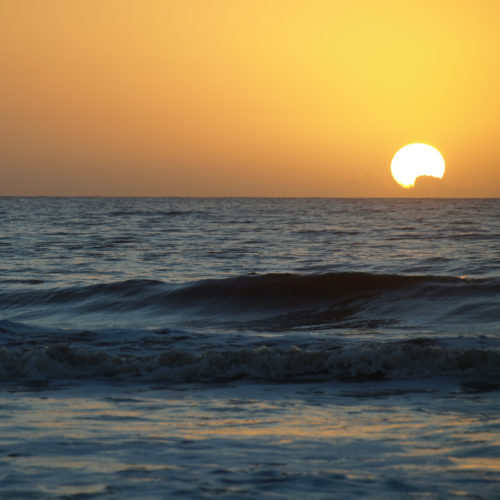
The Best Time of Year to Travel to Venezuela
When it comes to planning a trip to Venezuela, timing can make all the difference in the world. The country’s diverse landscapes, stunning beaches, and vibrant culture offer a unique travel experience year-round. However, understanding the nuances of the seasons can greatly enhance your trip. In this comprehensive guide, we’ll walk you through the best time of year to travel to Venezuela, considering weather conditions, festivals, and various attractions. Whether you’re an adventure seeker, a nature lover, or a culture enthusiast, we’ve got you covered.
The Best Time of Year to Travel to Venezuela: High Season, Shoulder Season, Low Season, Rainy Season, Dry Season
Venezuela’s climate varies across its regions, offering a mix of tropical and subtropical conditions. The optimal time to visit depends on your preferences and interests. Venezuela has a tropical climate with a variety of climatic zones due to its diverse geographical features. The country’s climate can be broadly categorized into four main regions:
- Tropical Rainforest Climate: This climate predominates in the northern coastal regions and the Amazon rainforest areas. It is characterized by high temperatures and high humidity throughout the year. Rainfall is abundant, with a distinct wet season from May to November and a drier period from December to April.
- Tropical Savannah Climate: This climate is found in areas known as “llanos,” which are vast grassy plains. There is a distinct wet season from May to October and a dry season from November to April. Temperatures are typically warm to hot.
- Tropical Highlands Climate: In the Andean region, the climate varies with elevation. Higher elevations experience cooler temperatures, and there is less humidity compared to the coastal areas. The temperature tends to decrease as you go higher into the mountains.
- Desert and Semi-arid Climate: The northernmost part of Venezuela, particularly the Paraguaná Peninsula and parts of Falcon State, experiences a desert climate. This area is characterized by extremely dry conditions, with very little rainfall.
Overall, Venezuela’s climate is influenced by the trade winds, ocean currents, and its equatorial position.
The Dry Season in Venezuela
The best time to visit Venezuela is during its dry season, which typically spans from November to April. During these months, the weather is pleasantly warm, and rain is scarce. It’s an excellent time for beachgoers, with clear skies and calm seas ideal for coastal getaways.
The Wet Season in Venezuela
If you’re a fan of lush landscapes and vibrant flora, consider visiting during the wet season from May to October. While rain can be frequent, this is when Venezuela’s natural beauty truly shines, with rainforests and national parks coming to life.
Traveling During Each Season in Venezuela
In general, there are four main seasons in Venezuela:
- Summer (May to August)
- Fall (September to November)
- Winter (December to February)
- Spring (March to April)
Summer in Venezuela (May to August):
During the summer months in Venezuela, which roughly coincide with the wet season, the country experiences warm to hot temperatures and higher humidity levels. Rainfall is abundant, especially in the northern coastal regions and the Amazon rainforest. This season is characterized by lush green landscapes, vibrant flora, and active wildlife. It’s a great time to explore the natural beauty of the country, such as Canaima National Park with its stunning Tepuis (tabletop mountains) and Angel Falls, the world’s tallest waterfall. Coastal areas like Morrocoy National Park offer opportunities for beach relaxation and water sports, despite occasional rain showers.
Fall in Venezuela (September to November):
In the fall months, the wet season continues in many parts of Venezuela, although the intensity of rainfall starts to decrease. This can be a transitional period between the heavier rains of summer and the drier months ahead. The temperatures remain warm, making it a good time for exploring both the natural and cultural attractions of the country. The Orinoco Delta, with its intricate river systems and rich biodiversity, is an ideal destination for nature enthusiasts during this time. Additionally, cities like Mérida, located in the Andean region, offer cooler temperatures and beautiful landscapes, making it a popular spot for outdoor activities and ecotourism.
Winter in Venezuela (December to February):
Venezuela’s winter, which corresponds to the dry season, is marked by lower humidity levels and milder temperatures. This is a favorable time for outdoor adventures and exploring various regions of the country. The Andean highlands offer comfortable weather for hiking, mountain biking, and enjoying breathtaking views. Roraima, another iconic tabletop mountain, becomes more accessible during this season. The Caribbean coast, including destinations like Los Roques Archipelago National Park, provides a tropical escape with sunny skies and crystal-clear waters, making it an excellent time for beach vacations.
Spring in Venezuela (March to April):
As spring arrives in Venezuela, the dry season continues, and temperatures begin to rise. This is a great time for cultural exploration and visiting historical sites. Caracas, the capital city, offers a mix of modern amenities and historic landmarks. Explore museums, art galleries, and cultural events that showcase the country’s rich heritage. The Joropo Festival, celebrating traditional Venezuelan music and dance, is a highlight during this period. Additionally, the town of Coro, a UNESCO World Heritage Site, is known for its well-preserved colonial architecture and offers a unique cultural experience.
Keep in mind that while these general patterns exist, Venezuela’s climate can be variable due to regional differences and global climate influences.
Best Places to Visit in Venezuela Throughout the Year:
- Canaima National Park: Explore the mesmerizing Tepuis (tabletop mountains) and Angel Falls, the world’s tallest waterfall.
- Morrocoy National Park: Relax on pristine beaches, enjoy water sports, and explore coral reefs and mangroves.
- Mochima National Park: Discover picturesque coves, islands, and a diverse marine ecosystem.
- Los Llanos: Witness the incredible wildlife of the plains during the wet season, with opportunities for wildlife safaris.
Fall in Venezuela(September to November):
- Orinoco Delta: Navigate intricate river systems, observe diverse wildlife, and experience the culture of indigenous communities.
- Mérida: Enjoy cooler temperatures and explore the Andean landscapes through activities like hiking, paragliding, and visiting Mérida’s cable car, the longest and highest in the world.
- Canaima National Park: With reduced rainfall, trekking becomes more feasible, allowing you to experience the park’s beauty in a different way.
- Henri Pittier National Park: Explore the coastal cloud forests and enjoy birdwatching in this biodiversity-rich area.
- Los Roques Archipelago National Park: Bask in the sun on white-sand beaches, indulge in water sports, and explore coral reefs while enjoying the dry season.
- Roraima: Embark on a trek to the summit of this iconic tabletop mountain, accessible in the drier months.
- Mérida: Continue to enjoy the comfortable weather for outdoor activities and explore the city’s cultural offerings.
- Canaima National Park: Visit the picturesque lagoon of Canaima and enjoy boat rides with clear skies and pleasant temperatures.
- Caracas: Immerse yourself in the capital’s cultural scene, visit museums, attend art exhibitions, and explore historical sites.
- Coro: Wander through well-preserved colonial architecture, discover historical landmarks, and enjoy traditional music and dance.
- Morrocoy National Park: With fewer crowds and sunny weather, relish the tranquil beauty of the coastal landscapes.
- Los Llanos: As the wet season approaches, witness the transformation of the plains and the behaviors of the diverse wildlife.
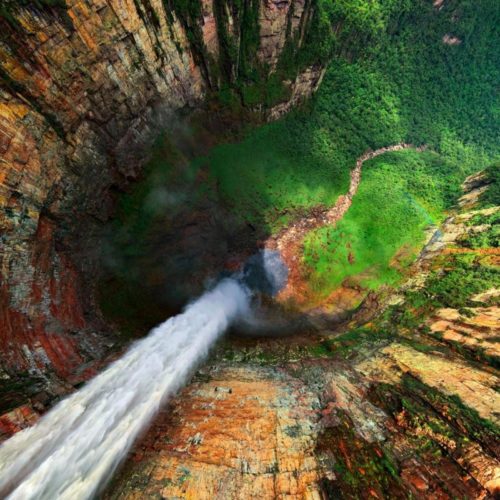
@southamerica
Rainbow mountain in peru: destination overview, history, facts, leave a reply cancel reply.
Save my name, email, and website in this browser for the next time I comment.
South America Newsletter
Email address:
© 2024 Travel South America.
Backpacking in South America [2024] – A Beginner’s Guide
![Backpacking in South America [2024] – A Beginner's Guide 1 collage of backpacking in south america images](https://www.onmycanvas.com/wp-content/uploads/2020/03/south-america-chile-peru-bolivia-travel-image.jpeg)
Covid-Related Travel Update 2024: Though every country would have its own requirements and rules, most South-American countries are now open to travel. Please check the individual country’s official government or tourism website to know the specific rules.
What does this guide to traveling in South America contain?
Is south america latin america, what are the countries in south america.
- Is it safe to travel in South America?
What about the natural calamities and political situations of South America?
What is the best time to visit south america.
- What is the cost of backpacking South America? How can you do South America on a budget?
- Do you need a visa to travel South America?
- Do we need travel insurance for backpacking in South America?
- What are the best South American countries to visit?
- What are the best things to do in South America?
- What are the possible South American itineraries?
What are the best places to travel in South America as per each country?
- Do we visit the Amazon rainforest in South America?
- Which are the best cities in South America for digital nomads?
- Do we need to know Spanish for traveling in South America?
- What are the best places to learn Spanish in South America?
- What should be an ideal backpacking South America packing list?
- What is the currency of South America? How do we carry money to South America?
- Can we get vegetarian food in South America?
- Do we need any vaccinations for backpacking South America?
- Can we work in South America?
- Can we volunteer in South America?
- Can we teach English in South America?
- Are the people of South America friendly?
What is the drinking culture in South America?
- What are the kinds of hotels in South America?
Does Airbnb work in South America?
- Can we couch surf in South America?
- Can we cross land borders in South America?
- Is it safe to hitchhike in South America?
- Do we need to pre-book everything in South America?
- How do we plan a trip to South America?
- What are some of the best South America travel books?
- Are there any South American traveler forums we can join?
- All articles on traveling to South America
South America is a continent like none other. I was backpacking in South America for nine months, and it was nothing like I had imagined.
Generally I keep going on and on that one should travel to South America. But, in this guide, I will mostly help you plan your South America trip. But if you are looking to get inspired, I have written down some of my best experiences in South America (one of them is learning Spanish in Chile ). Give the linked travelogues a read to inspire yourself to plan your trip quickly.
As this South America travel guide progresses, you would know why I give so much credit to this continent.
Now let us begin.
To date, I had been making the mistake of calling South America Latin America. Now, when I have finally read about the difference between Latin America and South America, I would like to clarify the difference here.
South America refers to the part of the American continent that lies south of Central America. South America constitutes the countries including and below Venezuela-Colombia.
Latin America is used to refer to all American countries that speak a language derived from Latin. Countries speaking Spanish, French, and Portuguese — So Mexico, Cuba, and Colombia all lie within Latin America.
While Latin America is a cultural term, South America is a geographical term.
To answer the question – South America is NOT Latin America.
[ back to TOC ]
The 14 countries and foreign-held islands of Argentina, Bolivia, Brazil, Chile, Colombia, Ecuador, the Falkland Islands (United Kingdom), French Guinea (France), Guyana, Paraguay, Peru, Suriname, Uruguay, and Venezuela together constitute South America.
Is Backpacking in South America Safe?
South America is notorious for crime, and the situation can be mostly attributed to the poor financial and political conditions in some parts of the continent. The entire continent is not unsafe and need not be avoided. Not anymore than any other place in the world.
I visited Bolivia, Chile, and Peru during my nine-month solo travel in South America. And the afternoon when two teenage boys snatched my mobile on a running bus in Santiago is the only bad incident I have to recall.
Avoid roaming around Santiago alone in dark or even during the day in empty streets. If you are taking the Santiago metro, hold onto your purse.
Except for Santiago, a city full of robbers and petty thieves, and Valparaiso, I felt safe in all the destinations in all three countries. No one ever harassed me or tried to loot me. (Do consider this taxi pickup at the Santiago airport if you are traveling to the city for the first time.)
Now amongst the rest of the South American travel destinations, Brazil and Venezuela are unstable and unsafe because these two have been in political turmoil.
Fellow travelers who had been to Brazil mentioned scary incidents such as getting robbed at gunpoint on a beach. Even people who traveled recently don’t vouch for Brazil. Venezuela is in a political crisis and unsafe to travel to.
Some of the safest countries in South America are Chile, Ecuador, Uruguay, and Argentina.
I was told Chile is the safest country in South America, and I felt so, too. Safety is coupled with financial security, and Chile is economically stronger than a lot of its neighbors. The south of Chile was so safe we never had to think before getting out for a walk (mostly on the Chiloé island ), alone, at night.
Except for the recent protests in Chile , the country is mostly peaceful. My Chilean friends told me they want a peaceful protest but a lot of rowdies disrupt the rallies and create chaos. Some blog readers traveling in Chile recently said they were safe and faced no issues during the protest.
If you plan a Chile trip, use my extensive Chile Travel Guide and travel tips for Chile . Though there was a political uproar in the country and Chileans were out on the streets protesting, peace was restored after the 2021 elections in which a left-wing candidate was sworn in as president. My Chilean friends do tell me though that Chile has changed forever. I would have to visit again to understand what those changes mean for travellers.
Many forums also talk about the dangers of backpacking Peru and traveling in Bolivia , but when I was there, I didn’t see or hear about any major crimes against travelers. My friend’s camera was stolen from her in Lima on New Year’s eve. But, well, anything can happen in the crowd of New Year’s eve. Be careful in the big cities of South America as petty crimes and mugging are generally most common in the large cities.
Colombia is also notorious for kidnappings and other crimes but these incidents are not scattered throughout the country. Avoid the destinations where such crimes have been reported in the past.
Quito, the capital of Ecuador, also has some history of mugging. There are registered cases of thieves trying to steal from passengers on buses in Ecuador. Keep your belongings with you and not on the shelves above the seat – in all of South America.
If you backpack in South America, be aware of these scams,
Taxis and ATM Scams — Bolivian cities are known to be prone to ATM threats. It means your taxi driver will drive you to an ATM and threaten you to withdraw cash and hand it over. I took taxis in La Paz, Santa Cruz , and other cities, but I met only the nicest taxi drivers. They took the extra step to drop me at the right place. But be careful.
How to avoid it? Walk to withdraw cash from the closest ATM. Once you have taken out the money, go back to your hotel and keep the card and extra cash. Only carry enough for a day. Never bring your debit or credit card with you except when you want to withdraw cash. Try to take Uber in big cities or ask your hotel to call you a cab.
Dirty Clothes Scam — Another scam prevalent in almost all of South America is that someone would come over and say your clothes are dirty or have paint over them. While you look, your bags would be gone.
How to avoid it? Keep your belongings on you all the time. Don’t pay attention to strangers.
Luggage Robbery on Buses — A common occurrence in South America when travelers aren’t careful.
How to avoid getting robbed? Keep your important items on you. While sleeping keep them under your head or close to you rather than putting them on shelves above the seat. Your bigger bag can go in the luggage compartment.
In big cities like Quito, Medellin, Santiago, and Lima, pickpockets do try to take advantage of travelers, and you should keep an eye on your surroundings.
South America isn’t much different from many other countries and continents in terms of safety. Please don’t let anyone tell you South America is a bad place and it’s entirely unsafe.
Use your judgment, ask your hotel for their safety advice, read about the local scams, and follow the common safety norms to be followed in any new country while traveling to South America, too.
Travel Essentials : Consider this safety whistle and a fanny pack to carry money and other important items.
Natural calamities of South America include volcano eruptions (I even did the active volcano Villarrica hike in Chile), earthquakes, and tsunamis, amongst many others. Chile is in a high-earthquake zone, and due to the earthquakes, the country is also prone to tsunamis and volcano eruptions. Many other South-American countries suffer from similar natural tragedies.
While I was traveling in South America, Chile was hit by a strong earthquake among many other little ones. The ocean routes were blocked, the transport stopped where it was, and tsunami alerts were issued. If it wasn’t for the earthquake, I would have been on a boat in the ocean watching penguins hopping around (only one of the many best things to do in Chile ).
South America has many emergency-evacuation processes, and roadsigns in the continent confirm that.
While I cannot confirm nothing will happen while you are in South America, my advice would be to stay alert, travel with insurance, follow the local advice, and you should be fine.
Political calamities of South America, however, are much more serious. They sometimes involve a presidential candidate jumping over the fence to participate in an election to people marching out on the streets protesting the government-levied charges, or you might even hear of a president changing the constitution to be able to contest in an election.
I can go on and on about Morales and Maduro but let us say protests are common in South America. People protest about salaries, human rights, a long-forgotten war with a neighboring country, presidential rule, corruption, et cetera.
While I am not asking you to ignore the political situations of South-American countries, I can assure you the processions mind their own business mostly. The few marches I saw were peaceful. But it doesn’t take much time for things to get complicated, and when they do, leave.
Before planning a trip to South America, or any country, check the news and ask your embassy about the safety of your travel destination.
South America is in the Southern hemisphere, unlike the US, Europe, and India. This implies the climatic conditions of South America are the opposite of these countries.
South America enjoys all four seasons. Here are the timings of the typical seasons of South America,
Summer — October, November, December, January
Autumn — February, March, April
Winter — May, June, July, August
Spring — September, October
The countries receive heavy rainfall from January to March. The south of Chile receives rainfall throughout the year, but especially heavy downpours in August, September, and October.
As South America is a giant continent and has varied geographical conditions, the best time to travel to South America isn’t the same throughout the continent. While San Pedro de Atacama and the Atacama desert might be scorching, Patagonia would be having its high season, and the high Andes wouldn’t warm up for anyone — that is the story of South America.
If you start at the end of summer, plan your travel route from the colder parts of the continent to the warmer areas. But if you arrive in South America in peak winter, first visit the hotter areas before you think about heading down South.
Here are some of the appropriate travel times for the best destinations in South America:
Atacama desert — I explored the gorgeous Atacama desert in February beginning. The day was scorching, and the nights were cold. A better time to visit the desert would be either March and April or October and November.
Patagonia — Summers are the best time to visit this nomadic land.
Bolivian and Peruvian Mountains and high-altitude places — The high-altitude places of Bolivia, Ecuador, Peru, and other countries are never hot. When I was backpacking Bolivia and Peru in March and April, even on sunny days the weather could get rainy anytime. A strong wind made the day colder than expected. Not to mention the altitude of the place that never let the mountains warm up. But the weather was still nice at that time, and I wouldn’t have wanted to be there in winter.
Spending the summer in the mountains would be ideal.
Overall, the months of October to March/April are the best to visit South America.
Read Next: If you are in Chile in September, don’t miss the week-long, crazy celebrations of the Fiestas Patrias or the Chilean Independence Day .
What should be your South America travel budget?
South America isn’t as expensive as it might look.
The cost of traveling South America would depend on your travel style. But estimate your monthly travel budget to be 1000 USD, almost 30 dollars a day.
Chile, Brazil, and Argentina are the most expensive countries in South America. I don’t have the expenditure of my South America trip written down, but here are the breakdowns of some major costs.
Bed: 10,000 to 20,000 Chilean Pesos – $10-20 (I took a mix of private rooms and dorms.)
Food (3 meals): 10,000 Chilean pesos – $10 (Eating at local stalls, small food joints)
Total: $20-30 for food and accommodation. Plus add for activities such as the tours in the Atacama, hiking volcanoes, traveling by bus or flights, et cetera.
Total backpacking budget per day: $40-60 [Destinations such as Pucon, San Pedro, Easter Island, and Patagonia would be costlier than the rest.]
Bed: 30 to 80 Bolivianos – $5-15 (for a treehouse or an average bed in a dorm)
Food (3 meals): $3 and above (the regular Bolivian meals start from 4-5 Bolivianos or <1 USD)
Total: $10 for decent food and bed.
Total backpacking budget per day: $20-40 [Adding up for activities such as the Uyuni Salt Flats tour , the Amazon, or biking the death road and traveling by buses or flights.]
Bed: 35 Peruvian soles – $10 (You can even get a good private room at this price.)
Food (3 meals): $2 and above (You can get a set menu — a fixed course and a soup for $1-2. Those meals are delicious, and I was never dissatisfied. A regular meal in a restaurant will cost a little higher but should be under USD 10.)
Total: $15 for bed and food.
Total backpacking budget: $30-50 [Including the long bus journeys and guided activities such as visiting the Manu National Park in the Amazon rainforest or going on the Colca Canyon trek .]
Brazil: $50 per day – The travel friends I asked and the forums I read, all say $50 is a good budget for a day. You can’t go lower but can easily go higher so watch out for what you spend.
Argentina: $30-50 per day. The food and accommodation are affordable in Argentina but the tours and transport are comparatively more expensive.
Colombia: $25-40 per day. Colombia isn’t that expensive and you can easily stick to a budget here.
Ecuador: $20-40 per day. Not counting the Galapagos island.
Overall, a daily budget of $30-40 can be estimated for South America after averaging out the daily budgets of all its countries. This cost will increase if you visit more expensive countries or stay in them longer (such as Brazil and Argentina). Private rooms (as compared to dorms), eating out at restaurants (instead of the daily meals), and expensive hiking tours (over the budgeted ones) increase the travel cost, too.
Do you need a visa to travel in South America?
South America doesn’t have one visa. Every South-American country has its entry-exit requirements.
Indians need visas to some countries while for the rest they can get a visa on arrival or free entry if they have a valid US, UK, Australian, or Schengen visa. My visa guide for Indians lists all the South American visa requirements country-wise.
Canadian, British, US, or Australian passport holders have free access to most South American countries. Check the individual country’s page or your embassy’s website.
You can also get visas while backpacking in South America as I did. While I was in Chile, I got the visa for Peru for Indians . When I was in Peru, I got a visa for Bolivia , and in Bolivia, I got a Chile visa .
I get a lot of emails and questions regarding South-American visas. Read those discussions on my individual visa pages (linked above).
Do we need travel insurance for South America?
Yes. Of course.
The best travel insurance for South America for Western travelers is World Nomads . All my travel friends from around the world can’t speak enough about it.
For Indians, I find the prices of WorldNomads a bit high (currency conversion). You can get travel insurance to South America on InsurancePundit. Compare the various insurances before purchasing. I have used Insurance Pundit a few times now, and I am happy with the experience.
(The InsurancePundit hasn’t paid me to leave the review.)
What are the best countries to visit in South America?
I was in Chile, Peru, and Bolivia and loved the three countries. I also wanted to go to Colombia but couldn’t visit due to visa issues.
As I said above, Venezuela is under a political crisis. So excluding that, all the countries in South America are great to visit.
Argentina is known for its cool culture, cosmopolitan towns, delicious wine, adventure travel (such as hiking in Patagonia), and joy de vivre. Buenos Aires is considered to be one of the most popular cities in South America due to its fun culture and open-minded Argentinian people.
Brazil, Colombia, Ecuador, Paraguay, Uruguay, and Suriname are great places to visit. Many of my travel friends were there and they loved these countries for each of their own reasons.
I haven’t heard much about the Falkland Islands (United Kingdom), French Guinea (France), and Guyana because not many people go there. If you go, would you please come back and tell me how you liked them?
What are the top things to do in South America?
I have written about my best moments in South America in detail in the linked travelogue. Let me give you another glimpse of what to expect on your South America backpacking trip.
You can hike glaciers, icy volcanoes, deep canyons, high Andes, and national parks.
Go for safaris and boat rides in the Amazon, the oldest tropical rainforest in the world.
Explore centuries-old ruins of the Incas, one of the most advance ancient empires.
Live with indigenous families on remote islands in the world’s highest navigable lake Lago Titicaca .
Dance like crazy in carnivals that liven up the streets of many South-American countries throughout the year.
Visit penguin colonies and see them play around in the Pacific on a regular ferry or from a remote island.
Go to Galapagos island to explore some of the unique animal life that stands testament to Darwin’s Evolution Theory.
Write poetry about Peru .
Indulge in delicious and unique food. Think cheese-stuffed empanadas and juicy ceviches .
Wander in vast deserts searching for salt flats and dense starry nights.
Shower under some of the highest waterfalls in the world.
Accompany the NatGeo and Discovery teams on river safaris in one of the most panther-dense zones of the world alongside
Photograph red lakes home to thousands of pink flamingoes.
Ride bikes on some of the most deadly roads.
Watch football with the locals.
Enjoy vibrant city life that promotes an open culture and welcomes all.
Oh, let us not forget Chile and Argentina are one of the best wine producers.
And, the people of South America are the most fun people I have ever met. They eat and drink and dance and merry like old times.
So while planning your perfect South America traveling route, keep an open mind for even I cannot list all the experiences to have there.
In the next sections, I talk about the possible South America itineraries in detail.
What are the best South America backpacking routes?
To understand the possible South America travel routes, let us look at the connected countries of South America:
(Starting from the top) Venezuela — Colombia — Ecuador — Peru — Bolivia — Chile — Argentina — Uruguay — Paraguay — Brazil — French Guinea — Suriname — Guyana (going Anti-clockwise)
The best backpacking routes in South America would be the ones on which you travel from one country to another while never having to jump countries for that is how you save the most time and money. If you love overlanding, as I do, you would also want to travel from one country to its bordering nation by land. But if you don’t want to cross land borders, take a flight out.
For this South America itinerary, let us assume you are traveling to bordering countries.
Here’s my South America travel route.
Chile – Santiago >> Castro, Chiloé ( taught English in Chile as a volunteer) >> In between traveled to many parts of Chile such as Puerto Varas, Puerto Montt, Valdivia, Osorno, Valparaíso, Viña del Mar, Cauquenes, Hornophiren, Santiago, many other islands near Chiloé >> Pucon >> Atacama >> Arica >> (Crossed the border into Peru) >>
Peru – Arequipa >> Colca Canyon >> Arequipa >> Puno >> Lake Titicaca and its islands >> Cusco >> Manu National Park, Amazon, Peru >> Cuzco >> Machu Picchu ruins >> Cusco >> Ruins around Cusco >> (Crossed the border into Bolivia)
Bolivia – Copacabana >> Isla Del Sol >> Copacabana >> Lago Titicaca and Isla del Sol >> La Paz >> Santa Cruz >> Samaipata >> Santa Cruz city >> Sucre >> Uyuni >> Salar de Uyuni Tour >> (Tried crossing the border from Bolivia into Chile but couldn’t as my visa had expired so went back to Bolivia to get Chilean visa ) Uyuni >> La Paz >> Uyuni >> Arica >> Santiago >> Castro >> Santiago (Flight out to India).
I did this above itinerary in about nine months; I was slow as for the first four months I was in Chile on the island of Chiloé teaching English. I spent about 6-7 months in Chile and divided the rest of the months in Bolivia and Peru equally, so about a month and a half in each country. That time was enough to travel at a slow pace in both Peru and Bolivia, and I still saw a lot.
Feel free to pick my above itinerary as these three are some of the best South American countries to visit.
Or take any route through the connected circuits from this bigger loop:
(Starting from the top) Colombia — Ecuador — Peru — Bolivia — Chile — Argentina — Uruguay — Paraguay — Brazil — French Guinea — Suriname — Guyana (going Anti-clockwise)
Let us look at some possible travel routes.
2 weeks in South America — In two weeks in South America, travel to one country. Pick up any of the above-mentioned countries.
3 weeks in South America — For 3 weeks, visit a maximum of two countries. So either a combination of Colombia and Ecuador or Peru and Bolivia or Bolivia and Chile and so on.
Four weeks in South America — You can visit two to three border countries but I still recommend just one or two.
Remember that distances between two destinations in South America are large.
A possible and comfortable South America itinerary 1 month — Three countries such as Argentina, Uruguay, and Paraguay are doable because the last two countries are small.
If you want to spend 2 months in South America — You can travel to three to four countries. Let us say you visit Ecuador — Peru — Bolivia — Chile in the two months. Spend ten days in Ecuador, twenty days in Peru, ten days in Bolivia, and the rest in Chile.
But even after spending about three weeks each in Peru and Chile, you won’t be able to see all the best places there. So another option for your 2 months South America itinerary could be to visit only Peru and Chile for a month each. In a month in each of these fantastic countries, you can see a lot at a not-so-fast pace.
Seeing one place properly is better than flipping through multiple places.
3 months in South America — You get the idea.
The ideal duration to explore each of the above countries :
Venezuela — A no-go right now.
Colombia — A month would be ideal. People who go to Colombia never want to leave but a month is a good time to see the major places at a medium pace.
Ecuador — Twenty days would be a good amount of time to see Ecuador.
Peru — A month seems ideal in Peru. There are many things to do in Peru . Again, if you want to skip everything to wander in the Andes, then an infinite amount of time won’t be enough. But even ten days would do.
Bolivia — The ideal time to understand Bolivia and see some of its most amazing places would be about 20 days. Some people only visit the Uyuni Salt flats and get out. I loved Bolivia and spent about a month there. For the salt flats, a few days are enough.
Chile — A month is ideal for Chile. Chile is a long country with a lot of places to see and amazing things to do . But if you are short of time, start with two weeks.
Argentina — Twenty days would be ideal for this big country. You can easily spend a month or two there.
Uruguay and Paraguay — Ten days would be an ideal time to spend in each of these countries. Few travelers go to these two but that doesn’t mean Uruguay and Paraguay don’t have good places.
Brazil — Twenty days would be a good time to start with Brazil. Brazil is a huge country and also not all of it is safe to visit.
French Guinea/Suriname/Guyana/Falkland Islands — Though I can’t tell you the exact time, I think 1-2 weeks would be ideal, to begin with.
Having said all of the above, starting from 14 days to spending anything up to a year or longer is a good time for South America.
What about the working people who do not have more than two weeks to spend at a stretch in South America? Please don’t lose hope after reading my extremely self-centered South America travel itinerary.
Go for two weeks. But don’t plan to hop to more than one country then. Visit a new country on your next South America vacation. And so on.
I would let you in on my favorite places in Peru, Bolivia, and Chile.
Chile — the Atacama desert , Patagonia, Vina del Mar, Valparaiso, Chiloé island , Hornophiren, Chaiten, Pucon.I also had a great time spending Diwali with a Chilean family in Cauquenes.
Bolivia — Uyuni Salt fields , The Amazon, Samaipata, Torotoro National Park, Copacabana town, Lake Titicaca, and its islands . Here’s an all-inclusive 3-day Uyuni Salt Flats tour that will take care of all the arrangements.
Peru — Puno and Lake Titicaca , Colca Canyon , Cusco city , the Inca citadel Machu Picchu , Andes mountains around Cusco, and the Manu Park in the Amazon .
I will add more to this list when I visit the other countries later.
Follow Up Reads Best Things to do in Peru Fun Things to do in Chile Bolivia Travel Guide
Do we visit the Amazon rainforest on our South America trip?
Of course. You can read about my visit to the Amazon rainforest in Peru to see how exploring the Amazon is like a once-in-a-lifetime opportunity for anyone.
I went to the Manu National Park from Cusco, but you can also visit the forest from Iquitos. It is further inside and takes longer to reach. Of course, the longer the journey is the bigger is the adventure.
The Amazonas can also be visited from Brazil, Bolivia, or Colombia. Guyana, Suriname, French Guyana, and Ecuador also have the Amazon jungle, but the area under the forest is pretty small there.
Tours to the Amazon range from four-day to even month-long adventures. Choose one that suits your budget and preferences. Here is a popular tour of 2-3-4 days in the Anaconda lodge of Brazil that I have on my mind for the next time.
Which are the best places in South America for digital nomads?
Lima, Cusco, Arequipa, Puno, Santiago, Castro (Chile), Medellin, and Buenos Aires are some of the best cities for digital nomads. Internet, housing, culture, food, activities to do, and a thriving digital nomad community make these cities more special than the rest.
Amongst all the big cities, I have listed Castro, the little town on the island of Chiloé, as a great option for a digital nomad. It is a gorgeous place with a strong sense of community. If you have been wanting to get away from big city life, slow down in Castro and rent a stilt house. It will have a sprawling view of an azure ocean and sheep grazing on the neon grassland nearby. Castro is quite affordable, too.
Arequipa and Puno are tier-two cities with a lot of nature, a strong cultural background, and many things to do.
All the other cities I have mentioned are popular amongst digital nomads and for all good reasons.
Do we need to know Spanish for traveling South America?
Even though a lot of travelers plan to learn Spanish in South America, they never say more than a hola and they still manage. I learned Spanish while living and teaching in Chile and further polished my Spanish skills while travelling in South America.
Spanish is handy almost everywhere in South America. Most people do not speak English there (not even tourist guides and hotel managers). And speaking a few words of Spanish would make you a local’s favorite in no time. Even a broken phrase of Spanish would go a long way when it comes to hitchhiking, boarding a bus, or ordering a cerveza.
This is probably one of my best South America travel tips— take the effort to learn Spanish in South America. Even though you can manage without it, your travel experience would change entirely even if you speak a little bit of Spanish.
Spanish is a fun language and has many words similar to English. So if you put in some time daily to learn Spanish and try speaking it with the locals, you would manage your way pretty soon.
But remember all the countries speak a little differently. If you learn Spanish in Argentina, you will be surprised by the accent of Chileans or Colombians. But the locals will understand. Chile is one of the worst countries to learn Spanish because of the strange slang and the accent of Chileans. But I could understand any Spanish after that.
Follow Up Read: Apart from my Spanish learning experience I linked above, I have written two more language guides. Learn a Language on Your Own — the tested tips that helped me master Spanish in a few weeks and a list of Common Spanish Phrases that will help you travel in South America. The phrases come with their phonetics in both Hindi and English.
What are the best places to learn Spanish while traveling through South America?
The best way to learn Spanish is while traveling and speaking to the locals. You can also stay in one place and learn from native Spanish teachers. Sucre has many Spanish schools and individual tutors who teach foreigners in private or group classes.
Cities like Cusco and Buenos Aires are perfect for learning Spanish as you can easily spend a lot of time exploring these cities while getting a grasp on the language.
What should be an ideal South America packing list?
Your ideal packing list for South America should have these below items. I have taken the recommendations for men from my friends and my partner.
- A couple of dresses and skirts for women – Long and short dresses can be worn anywhere in Bolivia.
- Short for women and shorts for men – For everyday travel in South America.
- A good pair of jeans – Even though I am not a big fan of wearing jeans and love many other more comfortable bottoms, sturdy jeans can keep you pretty warm in the high mountains and the surrounding countries. I wore mine frequently.
- Swimwear for women and swimwear for men – Most of the beaches would be too cold to get in, even in the summers, but you can definitely jump in some warm beaches.
- Yoga pants for women and for men – suitable for long buses, which you will take many in South America, and flight travel, too.
- The above-mentioned clothes are some of the most essential clothing items that helped me feel comfortable in South America. This is not an exhaustive list. Some other clothes would include undergarments, t-shirts and shirts, trousers or any other kind of bottoms, and anything else that you feel comfortable in.
Sturdy items to beat the cold and icy winds of some parts of South America
- Good hiking shoes for women and good hiking shoes for men – A must-have in South America.
- A rain jacket – Always carry one in the South-American countries for you never know when it might rain.
- Warm jackets for men and for women – You might even need these on a rainy day in the summer.
- Warm and waterproof gloves – essential for hiking and the outdoors.
- Woolen socks for women and for men – For hiking and to survive the chilly winds.
- A woolen sweater – You can also buy gorgeous and warm woolen jumpers in South America. I bought two in Peru and those warm snuggly sweaters are going to last my entire life.
- A scarf for women and for men .
- A pair of warm leggings or thermals for women and for men – I wore them under my dresses to stay warm. And I know that my male friends wore theirs under their jeans, too.
Travel Essentials
- A fanny pack to carry your passports and money. (I bought one from the San Pedro de Atacama market and loved its local feel. But until you find a locally made one, you should carry one fanny pack especially when you are in Santiago. Read my story about getting mugged in Santiago to know why)
- Also, bring a strong backpack as you would travel in weird weather and on rough routes – I have been using a North Face backpack for about four years now and have no complaints.
- A travel towel – Carry a light travel towel like this one for it will save you a lot of space.
- A first-aid kit – Always carry one while traveling. Carry essential medicines as in most of South America you only buy medication with a doctor’s prescription.
- Strong sunscreen – Andean mountains can be pretty sunny, and you would burn in a minute.
- Mosquito repellant – Much needed for the Amazon and other national parks.
- Lifestraw water bottle – Comes with an inbuilt filter, and you can fill it anywhere. A filter water bottle is essential because you cannot drink tap water everywhere in South America.
- Memory foam travel pillow for sleeping well while traveling.
- A good camera – Nikon D3400 is a very good choice for the price. I use Nikon for all my photography now (the pictures in the article though have been clicked with my phone for I have been using Nikon only for the past nine months). This camera comes with two lenses, and the one with the higher resolution if perfect for bird photography if you are interested.
- Altitude sickness pills – remember a lot of Andean places are above sea level and sometimes as high as 4000 to 5000 meters.
Follow-Up Activity: Carry a printout of my list of important Spanish travel phrases that will save you in South America (printable link in the guide).
What is the currency of South America? How to carry money while traveling in South America?
The currency of South America is different in each country.
You should carry your credit and debit cards, and some cash (USD or Euros or other strong Western currency). Though all ATMs in airports dispense cash in the local currency, sometimes having a bit of money on you is helpful.
The best place to exchange money would be the local exchange shops in any (big) city center and not the banks (banks’ exchange rate is the worst). I carried a travel card with a $1000 balance and another $5oo in cash. This money ran me quite some time. Bringing cash is a good idea for all the ATM withdrawals incur transaction (and in some cases currency conversion) charges. Ask your bank if they can reduce your international transaction charges.
In Chile, Banco Estado had the least international card withdrawal fee. Do try government banks in all South American countries for they would be the cheapest for international withdrawal.
As I mentioned in my travel planning guide , inform your banks about your international travel. My bank blocked my debit card when it detected a transaction in Chile. I had to make an international call to inform them I was the one trying to use the card.
I don’t know even one bank in India that gives leverage to a frequent traveler. If you do, please let me know. I would appreciate that.
Also never carry your entire cash and card with you while moving around cities. Keep them back in the hostel to save yourself from ATM scams (more about them in the travel safety section).
Or hide everything away in a slim fanny pack .
Can we travel South America as a vegetarian or a vegan?
South American food is mostly non-vegetarian.
Traditional food in South America is barbecues (asados), grilled meat and steaks (beef, pork, chicken), fried fish, rice, bread, cheese, seafood, fried empanadas (stuffed pastries) of various types, et cetera.
Meals are made up of two-three courses and start with a serving of soup. Vegetarians and vegans would have a hard time finding a course that is entirely vegetarian. When I was traveling South America alone, I didn’t eat beef. Even if I asked the server for a no-beef meal, they would serve me the soup which was mostly made with ground beef. I had to be careful and ask multiple times.
Argentina, Chile, Bolivia, and Colombia eat a lot of steak and meat, mostly beef. Peru had a lot of vegetarian options but had the same soup problem. Big cities have more vegetarian and vegan cafes. But on small towns, villages, or on islands, you might have a hard time finding vegetarian food.
You can always order vegetarian fried rice and that is what a lot of tourists did. Or buy groceries and cook in the guesthouse’s kitchen.
My best food in South America was Casuellas (Chilean soup), sea algae cooked in various styles on Chilean islands, Peruvian preparations, empanadas, and fried trucha (trout) fish. Oh, after a while I also started loving the Chilean bread when grilled with cheese and tomatoes and other things.
Do try the traditional South American food. My Spanish travel phrases guide has many phrases that will help you understand the ingredients and order as a vegetarian.
What are the recommended vaccinations for traveling to South America?
I would suggest you talk to a doctor or look at your embassy’s website for recommended vaccinations for South America.
Medical advice is always best taken from medical experts.
Can we work on our South America backpacking trip?
Tourist visa doesn’t allow you to work. But many travelers sell their art, beads, jewelry, et cetera unofficially.
Can we volunteer in South America for free?
You can volunteer in South America. Though not always, some volunteer programs, such as the English Open Doors program in Chile, are free, offer stipend, and even provide boarding and lodging.
I have written about the English Open Doors program in detail in my teaching English in Chile guide. The program is four-months-long, and you have to pay nothing. Your visa fee is waived, you get food and free accommodation with a Chilean family, and some allowance. But But you do have to get the flight tickets.
Can we teach English while backpacking through South America?
Apart from the English Open Doors program, you can also teach online and offline in Santiago, Cusco, Lima, and other big cities. But you would have to compromise on the salary. I put in a lot of time trying to find an online or offline English teaching job in Chile (mostly in Chiloe and Santiago). And I concurred the jobs there don’t pay so well. Also, most jobs entailed traveling to different parts of Santiago to teach the students in their own homes. In other cities, the traveling might have worked, but I didn’t find Santiago safe and didn’t want to commute daily to its unknown and obscure parts.
What would be the best way to find such jobs? Print out a list of the English teaching centers and visit them. Bring your resume and leave it with the receptionist or the staff. Most centers call. If not, you might have to remind them again.
I also tried looking for teaching work in schools but I couldn’t teach in schools without a teacher’s degree. Fair enough. You can work as a contractor or freelancer and conduct workshops in schools. But as we are talking about South America, do not expect a fast response.
Are the locals friendly to South America backpackers?
I have written a lot about South Americans being the nicest people in all my Chile, Bolivia, and Peru country guides. I have even written poems on some kind souls I met in South America . And here’s an ode to a kind Peruvian grandmother I met in Cusco.
South American people love to help others. They smile and laugh often and don’t make a fuss about most things. They are particular about what they like though. Also, they notice how you act and the things you care about and would be quick to tease you on your traits.
I met both kinds of people in South America: friendly and helpful and those who were jealous of me or detested me (mostly because of the attention I got). If there were people who translated every Spanish word for me, a few people never cared if I understood a word of what they said.
Others made fun of Indian things they had seen on television — the dowry system in India, caste system, Indian population, rat temples et cetera.
The understanding of India is skewed outside as most people only know India as per what has been shown to them in the news. Even a lot of travelers who come to India, visit popular places and never get an idea of how India truly is.
I met a lot of such people who behaved as if India was all about filth and child labor, and I had caused all the problems. Consciously or unconsciously, they said hurtful things. Even one or two of my friends didn’t know how to strike a conversation with me on these matters and instead made condescending and judgmental statements.
All I could do in such situations was put across the right information and tell them how India has evolved. After a while, I stopped explaining and let people believe what they wanted to believe or told them off when I was hurt.
If you are from Europe, the US, or Australia, you would be called Gringo . A term that originated long ago and has many theories behind it (some of which can be associated with locals shouting out to the foreign police or army as “Green Go.”) But apart from the occasional, good-hearted reference as a Gringo, you wouldn’t find any racial discrimination.
You would meet all kinds of people in South America, as you do everywhere, but remember that the majority of South Americans are nice. They are open-minded and believe in having fun in life irrespective of what situations fall upon them. Read the story of my Chilean host mother to see how South Americans can brave their problems.
I suggest you discover more about the people with your experiences rather than a third-person’s opinion (like mine).
Follow Up Read: My article on Chilean culture is a good starting point to understand the culture of Chile in more detail. Other countries in South America don’t have the same culture but you would be able to find some similarities.
South America is fun and inclusive. Small countryside pubs, large bars in metropolitans, and overloaded cellars in homes, you can find them all.
South Americans love to drink and party. Their families get together and celebrate even the slightest occasion with a drink. And they love to invite travelers for they believe in more the merrier.
The people of South America aren’t big fans of hard liquor and love their beer and wine. Or if I may say, cerveza y vino tinto o blanco. You can have a beer in most parts of South America. Wine is preferable in Chile and Argentina, two of the best wine producers in the world.
Pisco Sour is another must-try drink over which Peru and Chile both have an ongoing copyright fight. If you want to start a debate with a Chilean or a Peruvian just tell them how they got the Pisco sour from their neighbor, and I am sure you would see some firecrackers exploding into the sky.
Have fun there. But do remember there are a lot of drunkards and alcoholics, too, so stay safe. If you are on a South America solo travel trip, make sure you watch your drink when you are drinking amongst strangers. Mixing up the drinks of travelers to render them unconscious is an old trick you don’t want to fall for.
What are the kinds of accommodations in South America?
You can stay in hostels, hotels, guesthouses , villas , cottages, tents, camper vans, apartments , resorts , tree houses, and there are still other options that I can’t recall. I mostly use Booking to book all my accommodations. Give it a try here .
I used Airbnb once in Santiago but Airbnb works even in small cities in South America (popular ones).
But due to the multiple scams that run on Airbnb , I prefer Booking.com over Airbnb.
Can we couch surf while travelling in South America?
Yes. I didn’t couch surf in South America but I did stay with a lot of friends who offered me their place when I visited their city.
Couch surfing is becoming common in South America, and it could be a good way to get to know locals and reduce travel costs.
How to backpack South America? Can we do overlanding (cross land borders) in South America?
I crossed the land borders in South America three times.
From Chile to Peru — You make your way to Arica and from there to Tacna in Peru. You can get shared taxis from Tacna that will take you to Arequipa, the closest tourist-favorite town from Tacna.
From Peru to Bolivia — I crossed the border into Bolivia via the Puno — Copacabana route. Make sure the driver doesn’t leave you at the border and takes you to the town of Copacabana.
From Bolivia to Chile — After a few failed attempts, I crossed the border from Uyuni into Arica.
I have heard sad but hilarious stories of travelers being befooled by the bus companies who promised them a ticket to the destination but instead left them at the border. Then the travelers had to trudge their way to civilization without the local money, water, or food.
The trick to a comfortable (let’s not get crazy here) safe journey is to find a bus company that is reliable. Online reviews and travel forums discussing the best travel buses across borders might help.
Apart from a random drop in the middle of nowhere, crossing borders in South America is not much different from anywhere else. Also, make sure to get to the border in time so you can cross it even if there are lunch breaks or the queues get too long.
Essential visa guides, only for Indians
- Chile visa guide for Indians
- Bolivia visa guide for Indians
- Peru visa for Indians
Is it safe to do hitchhiking while backpacking South America alone or if we are two people?
I didn’t hitchhike for the first few months as my Spanish was limited. Later I hitchhiked in Chile in a truck once but I was with a Chilean friend.
Hitchhiking is known amongst South Americans, and you can try getting a ride in safe parts of the continent.
I would suggest you wait for a couple of weeks to hitchhike. After a few weeks you would understand and communicate at least basic Spanish. And if you have landed in an unsafe part of South America, don’t try to hitchhike.
Do we need to book all the hotels and tours before backpacking to South America?
You do not need to pre-book anything in spite of what a lot of travel websites or South America backpackers suggest. Even in the prime travel season of February, March, and April, I could get rooms in the hostels and hotels at the last minute, except in Cusco. In a big city or extremely popular travel destination, book a few days in advance.
I got the tickets to Machu Picchu and to a one-way train to Machu Picchu just a few days before I wanted to visit. Atacama tours, Colca Canyon hike, Uyuni tours, et cetera were also available until the last minute.
But the Inca and Salkantay hike to Machu Picchu would be better booked at least a couple of weeks in advance. You should also check the status of these hikes as they get closed down pretty frequently due to landslides and other natural causes.
Pre-book hikes and tours that allow a limited number of people every day. In a new place, pre-book an accommodation for a day. Then either extend it or find another one by visiting physically. Everything else is available until the last minute. And by booking the activity in person at the office or over the phone, you can also negotiate.
What should we do for planning a trip to South America?
This travel guide to South America must have answered your many questions .
Apart from setting your finances right, packing the important bank cards and other things you would need in the continent, making an itinerary or winging it, getting your tickets and visas right, planning your accommodation, and getting your vaccinations, you should also check for the current situation of the country you plan to land in.
If you want to participate in a volunteer program or want to do a Workaway, plan it ahead.
Do look for the prevalent scams in an area or a city but don’t get overwhelmed. A lot of information on the internet about South America seems to have been written at gunpoint.
Must-Read: Recommended Travel Resources and Planning Guide
What books can we read to prepare ourselves to travel South America?
I have not read all these below books but I am going to.
The House of the Spirits a Novel — A unique perspective on 20th-century Chilean culture and politics, by Isabell Allende. (Read)
Wild Coast: Travels on South America’s Untamed Edge — An account of an expedition into Guyana, Suriname, and French Guiana by John Gimlette.
The Motorcycle Diaries: Notes on a Latin American Journey by Che Guevara — This book is the travel notes of Che Guevara when he went on a life-changing motorbike journey from Argentina across the continent. It is a good book to understand the pre-revolution South American culture and politics. (Read)
Marching Powder: A True Story of Friendship, Cocaine, and South America’s Strangest Jail by Thomas McFadden and Rusty Young — Set in the San Pedro jail of Bolivia, Rusty Young, a backpacker, and Thomas McFadden, a drug lord, weave the story of South America’s drug culture together.
Turn Right at Machu Picchu: Rediscovering the Lost City One Step at a Time by Mark Adams — For travelers who want to go a bit deeper into the history of the Incas and their fort, Machu Picchu.
At the Tomb of the Inflatable Pig: Travels Through Paraguay by John Gimlette — For travel tales of Paraguay.
The Essential Neruda: Selected Poems by Pablo Neruda, Mark Eisner (Editor), John Felstiner (Translator) — And this might be my favorite book out of these all. Pablo Neruda is the most acclaimed poet from Chile, and if you read his few lines, you would know why. This is a collection of his poems in Spanish that are well translated into English by the credited translator. (Reading)
Pablo Escobar, El Patrón del Mal (Something to see and not read) — Though people suggest Narcos as the best show ever made on Pablo Escobar, I loved Pablo Escobar, El Patrón del Mal show on Netflix and watched it in Spanish. It’s a good show to understand Colombian history and also to learn and practice Spanish. Here is a recent article about Pablo Escobar that shows how he is remembered now.
Must I say you have to keep reading my South America travel blogs and tell me what would you like to read more?
Are there any South America Travelling forums we can join?
I am preparing a South America FAQ page: a collection of queries I have received on South America travel in the past few years. I would soon publish the FAQ hoping for it to serve as an online forum for all kinds of South America travel questions. Coming soon.
Meanwhile, you can drop your questions on the existing South America articles.
Would you go back to South America?
I am planning to visit South America, again, for a long time period. I would start with Colombia and then make my way to other parts of the continent.
I am not sure when, but that is a small logistics to figure out.
Follow Up Essential Reads
- My Super-detailed Travel Guide to Chile
- My comprehensive travel guide to Bolivia
- My essential guide to backpacking Peru
Find All South America Articles Below.
south america travel stories and travel tips.
![Most Common Spanish Phrases For Travelers [Survive South America] 2 Most Common Spanish Phrases For Travelers [Survive South America]](https://www.onmycanvas.com/wp-content/uploads/2018/12/a-landscape-of-peru-countryside.jpeg)
Most Common Spanish Phrases For Travelers [Survive South America]
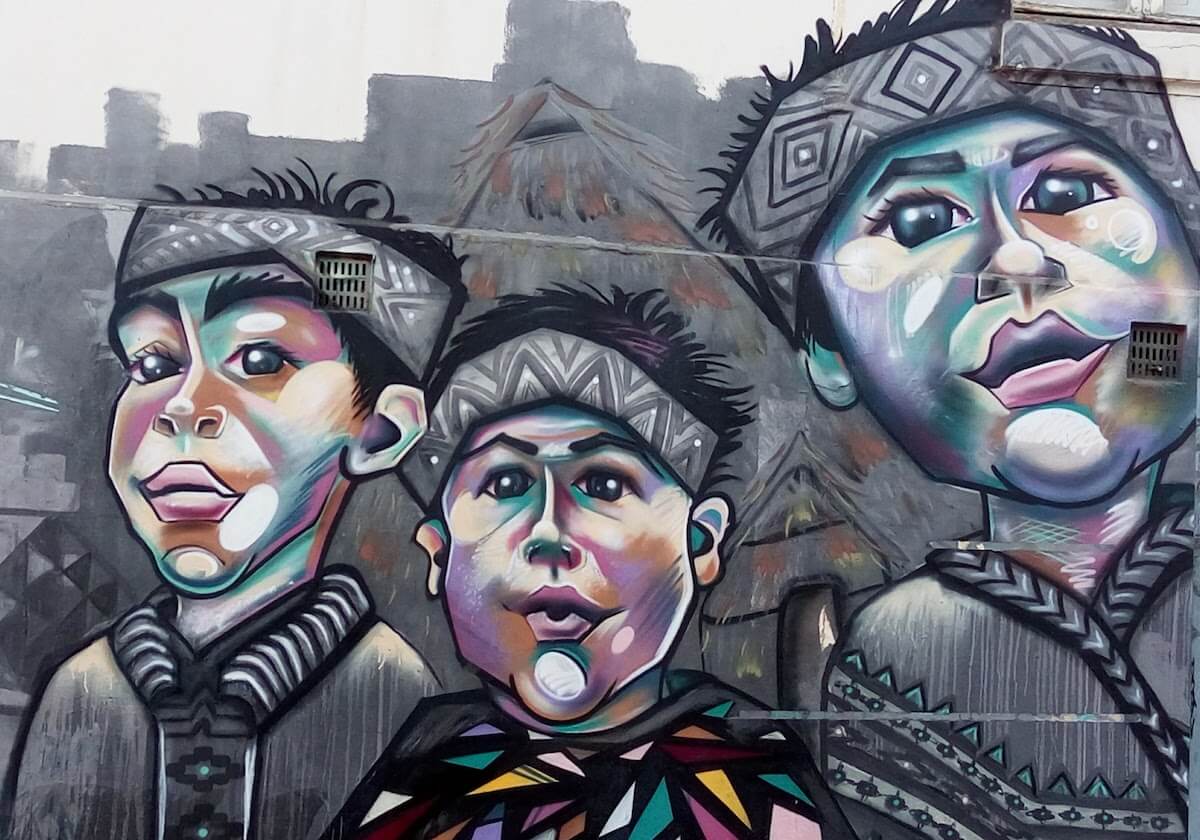
Learning Spanish in Chile–A Mind-Numbing Experience
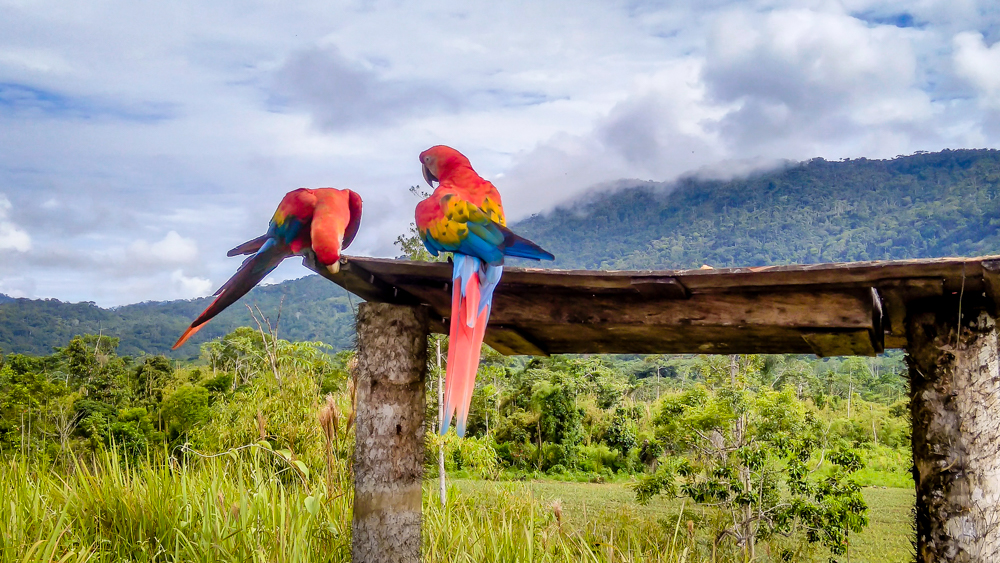
9 Months and 3 Countries – Epic Experiences in South America
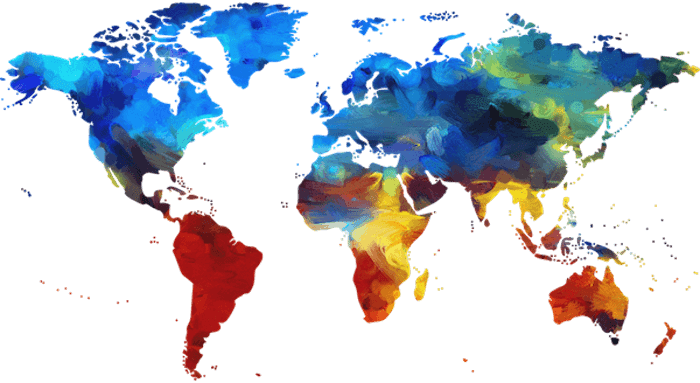
How to Learn a Language By Yourself – 24 Foolproof Tips
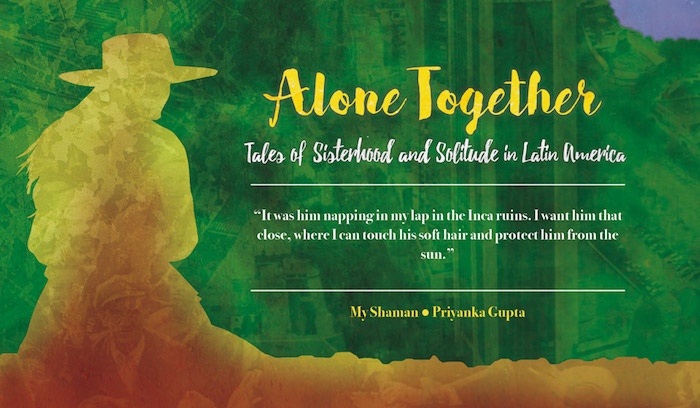
My Poem Was Published in Alone Together—Tales of Sisterhood and Solitude in Latin America
chile travel guides.
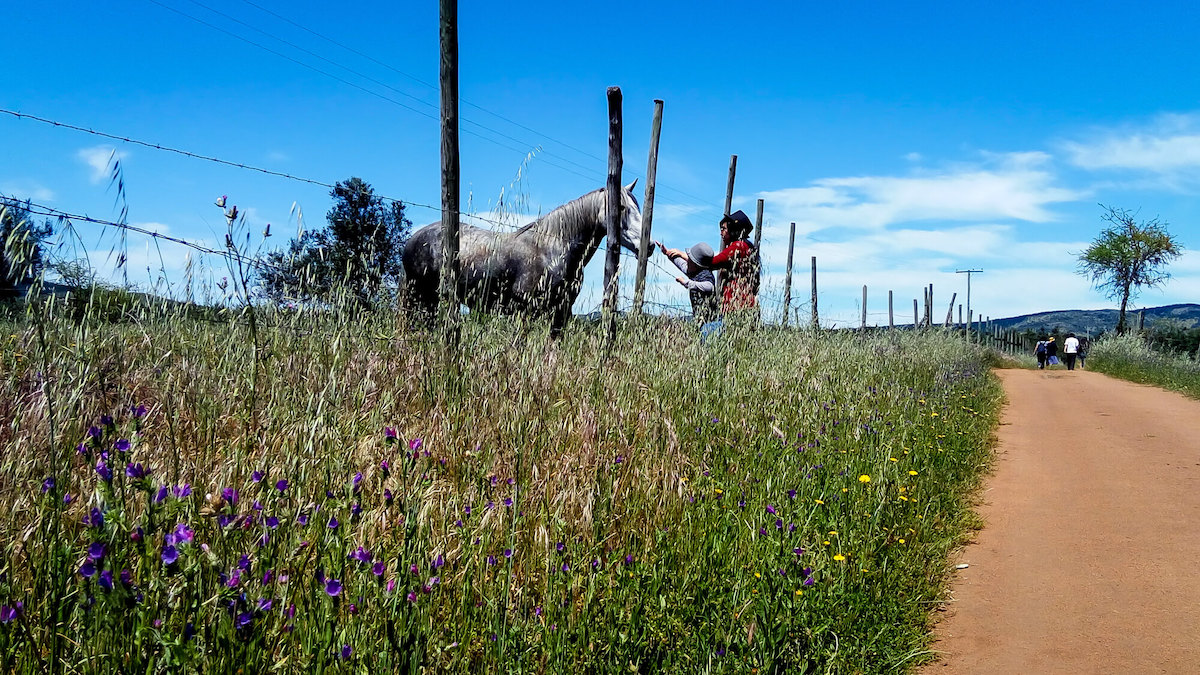
Cultural Differences, a Friend For Life, and Diwali in Chile
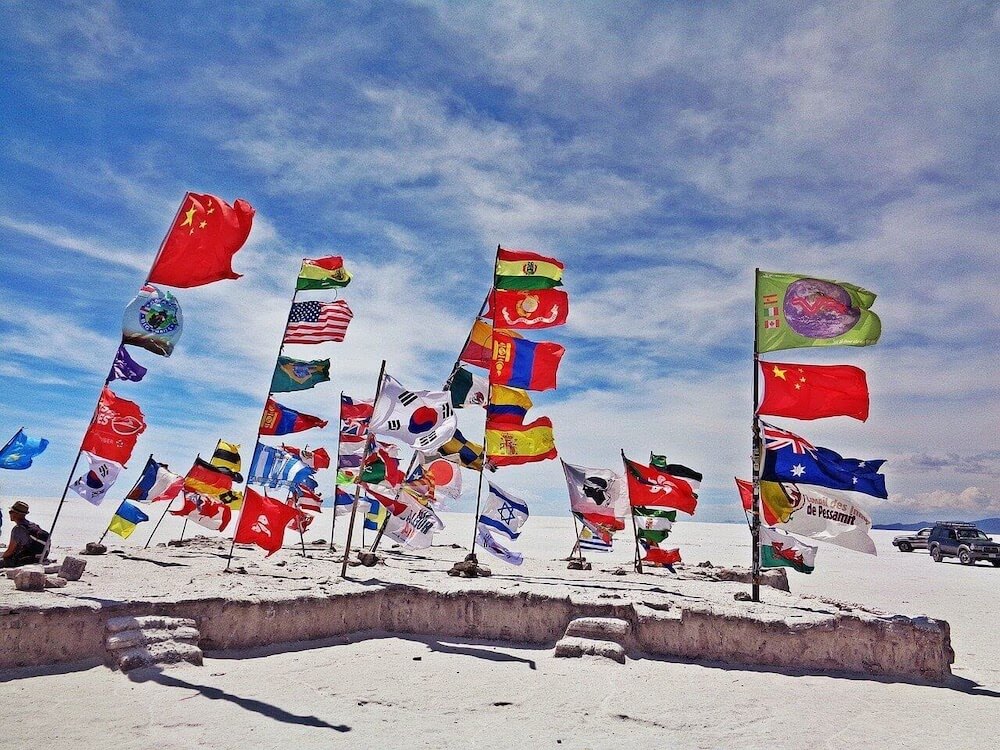
Chile Visa Fiasco–When I Was Stranded at the Bolivia-Chile Border
![Quick Chile Travel Tips [10-Minute Read From a Chile Expert] 9 Quick Chile Travel Tips [10-Minute Read From a Chile Expert]](https://www.onmycanvas.com/wp-content/uploads/2020/05/travel-tips-for-chile-feature-image-horses-on-chilean-road.jpeg)
Quick Chile Travel Tips [10-Minute Read From a Chile Expert]
![Things To Do in Chile: 50 Incredible Experiences [2024] 10 Things To Do in Chile: 50 Incredible Experiences [2024]](https://www.onmycanvas.com/wp-content/uploads/2020/05/moai-easter-island-rapa-nui-chile.jpeg)
Things To Do in Chile: 50 Incredible Experiences [2024]
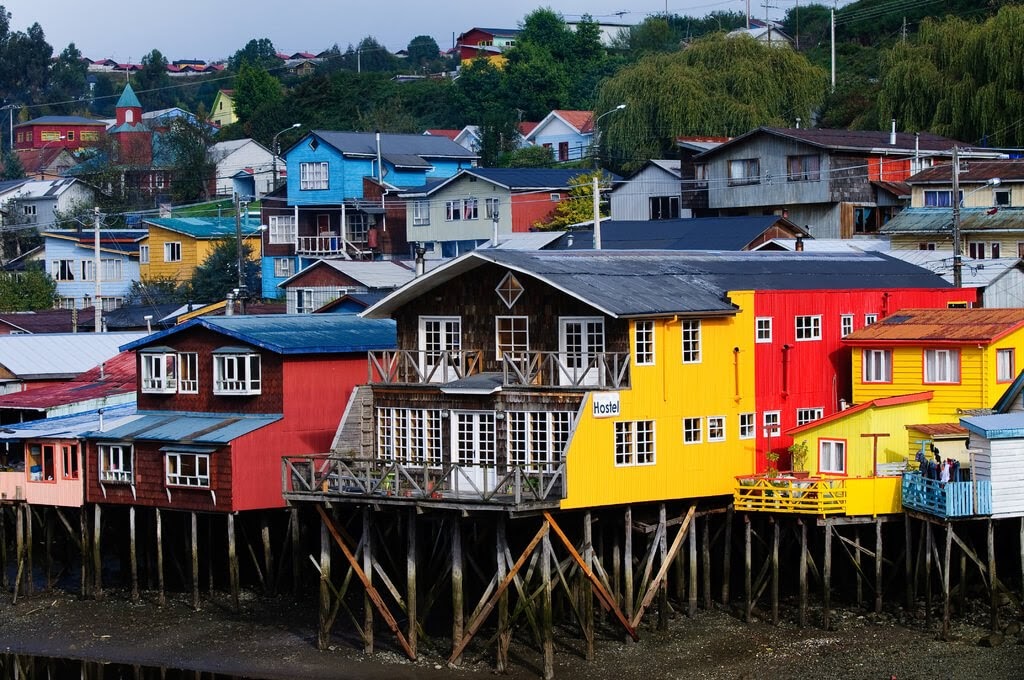
Te Quiero, Chiloé
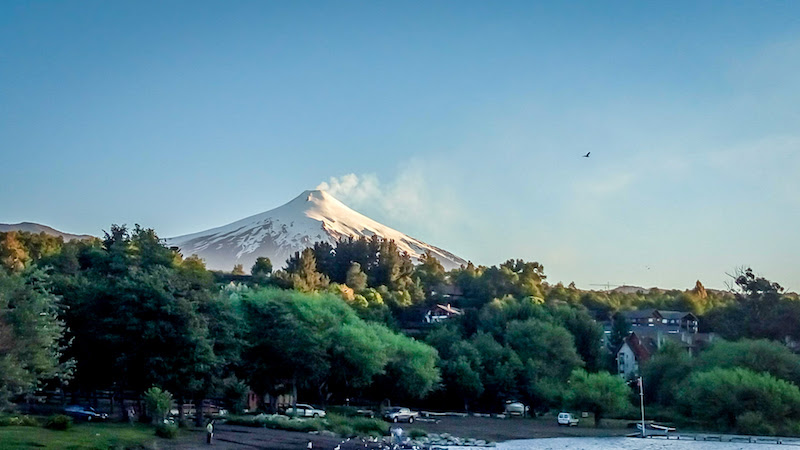
How I Survived the Villarrica Volcano Hike
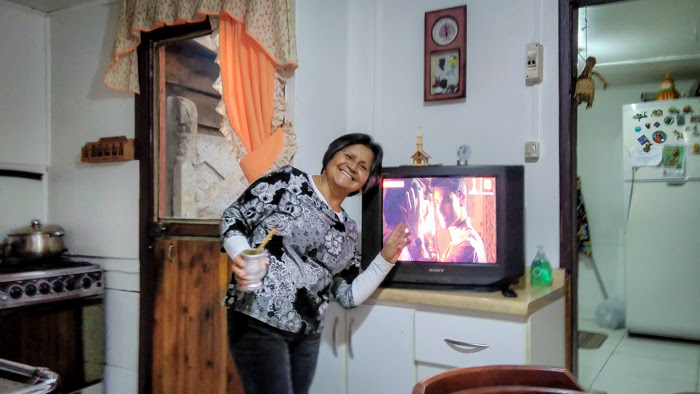
How My Chilean Host Mother Reciprocated to Cruelty With Kindness

Teach English in Chile–All About English Open Doors Volunteer Program

Peru Travel Tales and Guides
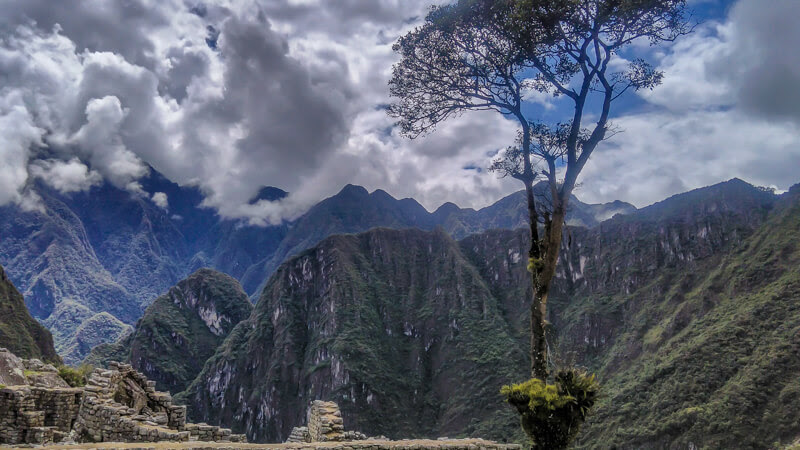
A Peruvian Grandmother’s Act of Kindness
![11 Top Things To Do in Peru in 2024 [And My Bonus Secret List] 17 11 Top Things To Do in Peru in 2024 [And My Bonus Secret List]](https://www.onmycanvas.com/wp-content/uploads/2020/03/peruvian-ladies-observing-local-life-top-things-to-do-in-peru.jpeg)
11 Top Things To Do in Peru in 2024 [And My Bonus Secret List]
![Manu National Park, Peru [2024] – Daring the Amazon Rainforest 18 Manu National Park, Peru [2024] – Daring the Amazon Rainforest](https://www.onmycanvas.com/wp-content/uploads/2020/03/manu-national-park-amazon-rainforest-peru-south-america.jpeg)
Manu National Park, Peru [2024] – Daring the Amazon Rainforest
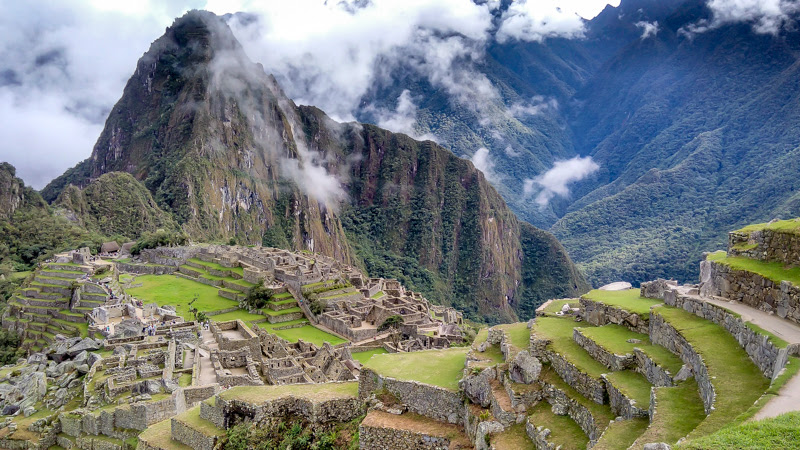
How to Visit Machu Picchu on Your Own
![15 Fun Things To Do in Cusco, Peru [For 2024] 20 15 Fun Things To Do in Cusco, Peru [For 2024]](https://www.onmycanvas.com/wp-content/uploads/2019/04/cuscoandesperusouthamerica.jpeg)
15 Fun Things To Do in Cusco, Peru [For 2024]
![Puno and Lago Titicaca: Peru's Most Magical Places [2024] 21 Puno and Lago Titicaca: Peru’s Most Magical Places [2024]](https://www.onmycanvas.com/wp-content/uploads/2019/04/a-child-on-a-reed-island-on-Islas_flotantes_de_los_Uros-Lago-Titicaca-Perú.jpeg)
Puno and Lago Titicaca: Peru’s Most Magical Places [2024]
![Backpacking Peru [2024]: One Guide to Rule Them All 22 Backpacking Peru [2024]: One Guide to Rule Them All](https://www.onmycanvas.com/wp-content/uploads/2019/04/featureMachuPicchulostcityincascuscoandesmountainsperusouthamerica.jpeg)
Backpacking Peru [2024]: One Guide to Rule Them All
![Colca Canyon Trek, Peru – A Complete Guide [2024] 23 Colca Canyon Trek, Peru – A Complete Guide [2024]](https://www.onmycanvas.com/wp-content/uploads/2019/02/hikecolcacanyonarequipaperu.jpeg)
Colca Canyon Trek, Peru – A Complete Guide [2024]
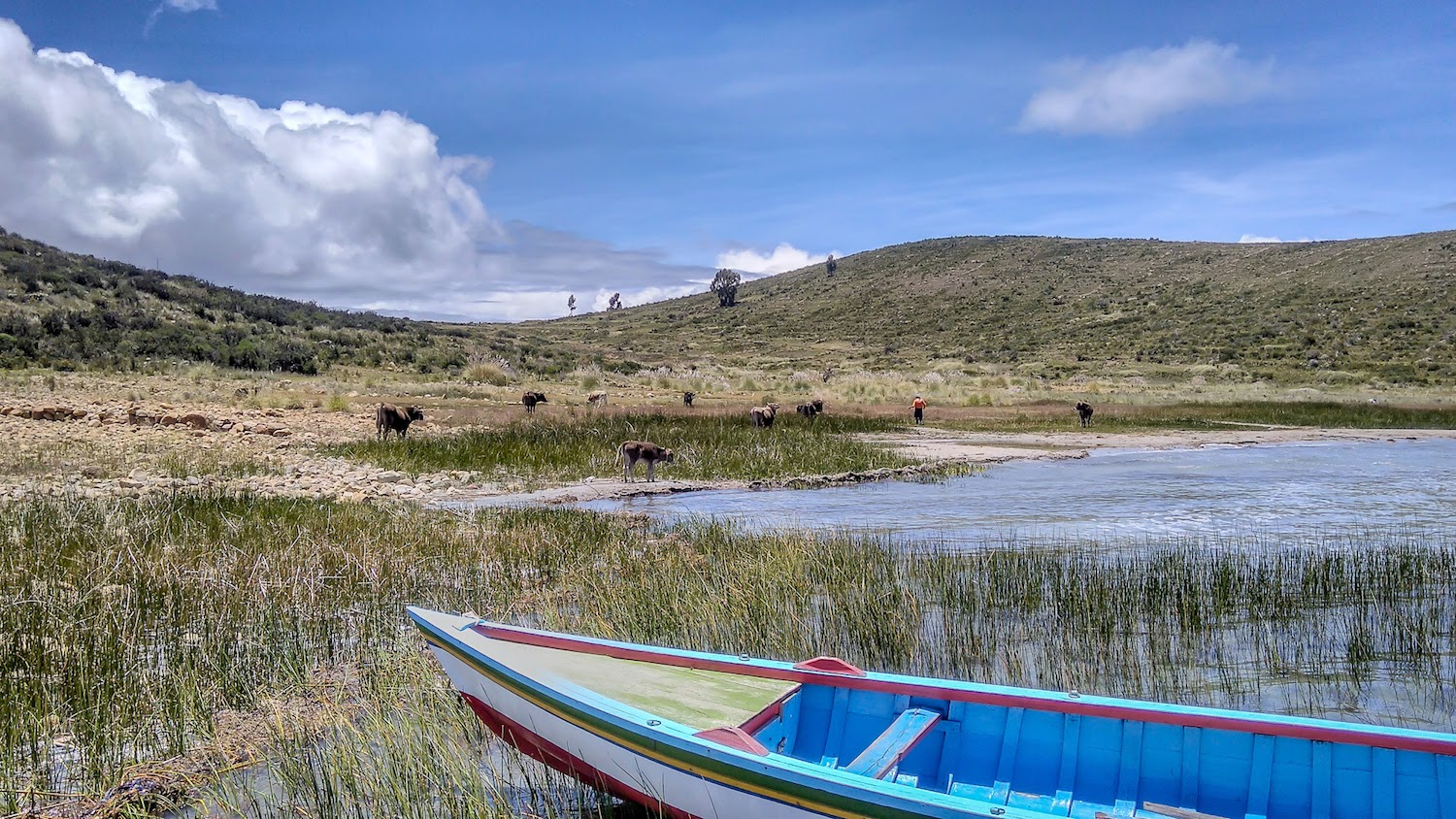
Peru – In Poetry and Pictures
bolivia travel guides.

Bolivian Salt Flats Tour – Exploring South America’s Weirdest Landscape
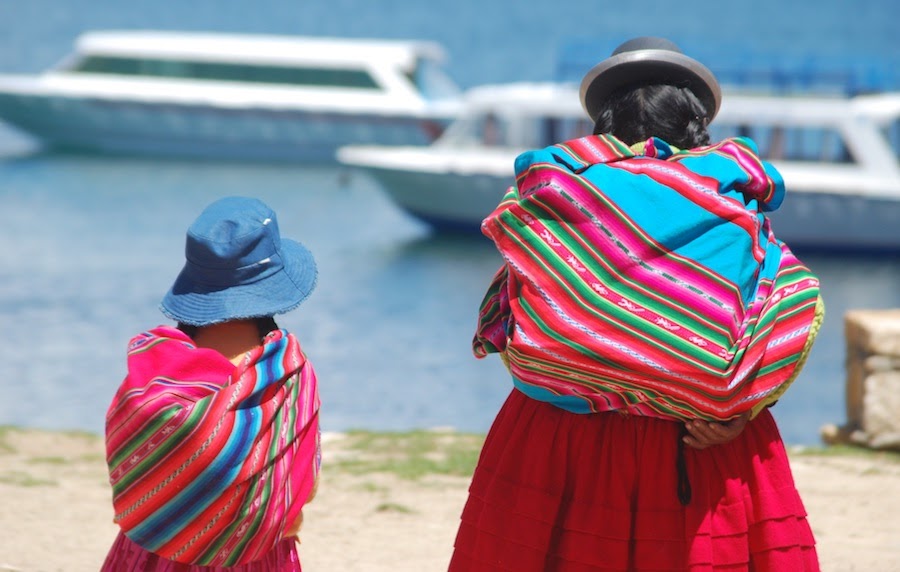
Copacabana, Bolivia – A Cute Town on the Shores of Lake Titicaca
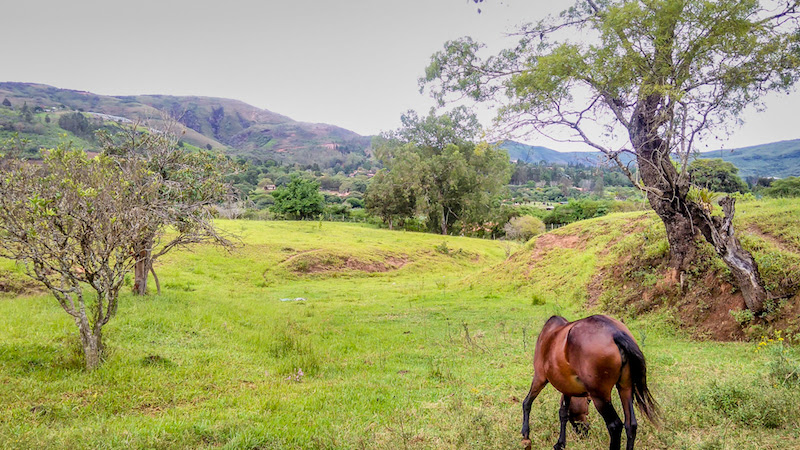
Samaipata – A Bolivian Village You Must Experience
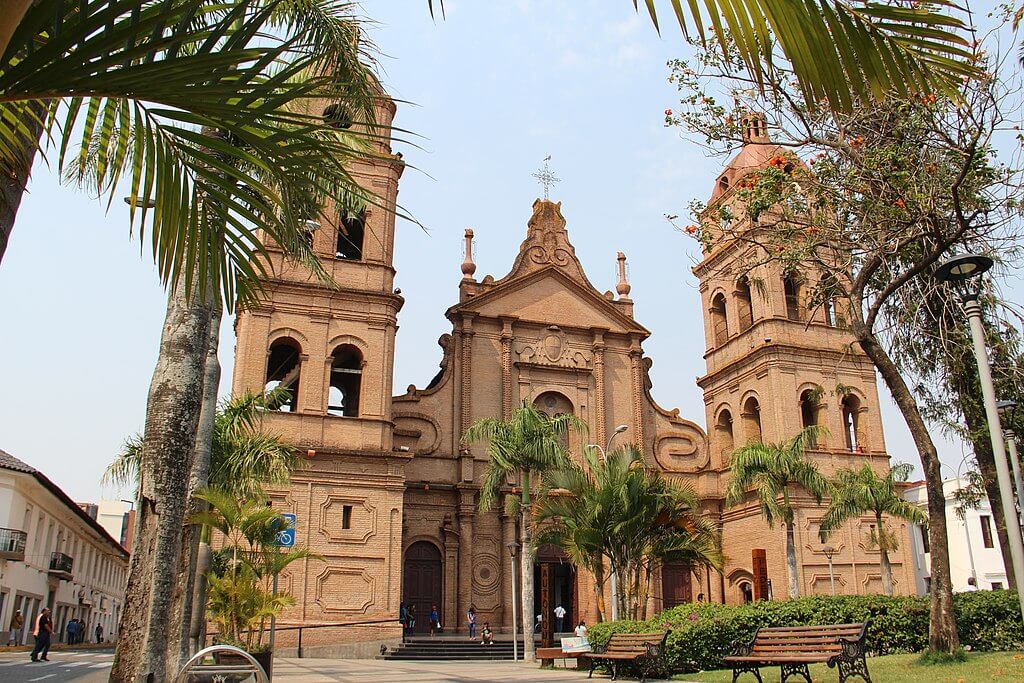
Why You Must Visit Santa Cruz – City of Bolivian Riches

Bolivia Visa for Indians (From India & SA) + Extension Process
![Bolivia Travel Guide [2024] – Everything to Know 31 Bolivia Travel Guide [2024] – Everything to Know](https://www.onmycanvas.com/wp-content/uploads/2019/01/lapazboliviamountainssouthamerica.jpeg)
Bolivia Travel Guide [2024] – Everything to Know
Would you love to go after reading my detailed south america travel guide tell me in the comments..
Liked my guide? Please pin it and share it with your friends!
Want similar inspiration and ideas in your inbox? Subscribe to my free weekly newsletter "Looking Inwards"!
3 thoughts on “Backpacking in South America [2024] – A Beginner’s Guide”
Loved reading this beginner’s guide! Your tips on budgeting and planning were super helpful. I’ve always wanted to backpack through South America and this post has given me the motivation to start planning my trip
Loved reading it! Would love to go to South America some day and you have a plenty of great information here!
Thank you for sharing, I have always thought if it is safe, as it is completaly different from where I live, but I would love to visit!
Leave a Comment Cancel reply
This site uses Akismet to reduce spam. Learn how your comment data is processed .
Deals of the Week Wildlife Wonders Up to 50% OFF

Best Time to Visit South America
Table of contents.
Summer in South America Fall in South America Monthly activities and tourists Seasonal guide to prices Travel companies in South America FAQ South America is a vast continent with plenty to explore – and the different seasons play a part in the adventures you can have. From the lively festivals in Rio de Janeiro and Buenos Aires to the mystical allure of Machu Picchu, the best time to visit South America is during its southern hemisphere summer, which runs from December to March. Picture yourself samba dancing under the sultry Brazilian sun or marveling at the Andean peaks bathed in perfect summer light. Whatever your travel preferences, a continent of endless discovery awaits.
6790 reviews on

Best time to visit South America: Summer (Dec to March)
Top things to do and see in south america during summer.

Rio de Janeiro
Feel the energy of Carnaval in Rio de Janeiro, the electrifying festival of colors, music, and dance.
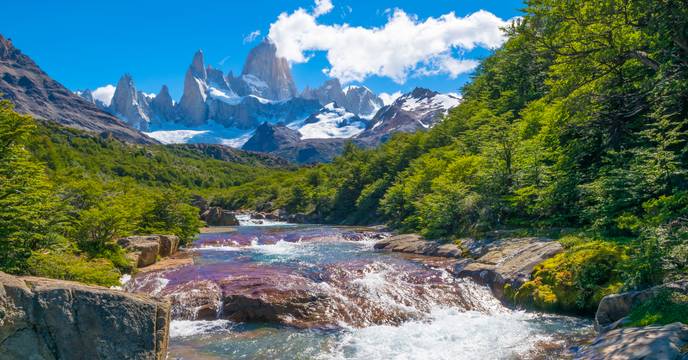
For adventure lovers, the Torres del Paine’s sublime trails are an absolute must, especially under the gorgeous summer skies.
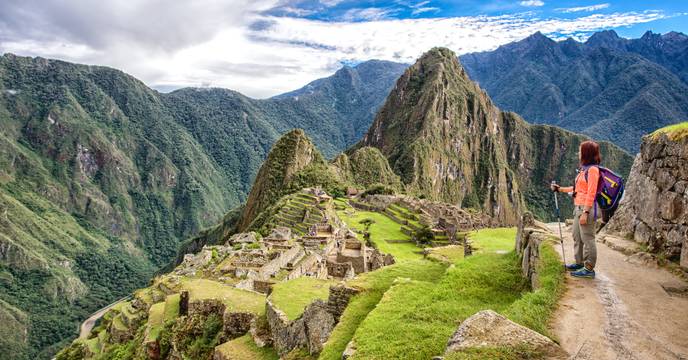
Journey to Machu Picchu while the sun casts a golden glow across this ancient Incan citadel.
Three essentials to pack for your South America trip during summer
Sun protection.
South American summers can be hot, so pack high-SPF sunscreen and a quality sun hat to shield you from the intense heat.
Comfortable footwear
Durable hiking boots for Andean treks and comfortable sandals for beachside lounging.
Festive attire
If you’re enjoying the local festivities, be sure to bring colorful and breathable outfits.
Lightweight layers
If you’re exploring the mountains or deserts, bring layers to ensure you stay comfortable in the fluctuating temperatures and cooler nights.
Waterproof gear
A sturdy rain jacket to navigate the occasional downpour, especially near rainforests and waterfalls.
Cultural respect
Don’t forget to bring modest clothing for visiting religious sites and respecting local customs.
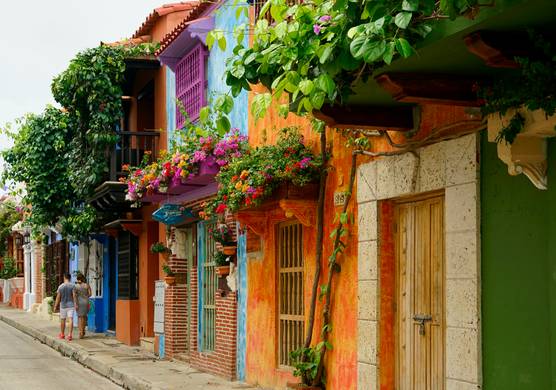
Best time to visit South America: Fall/Autumn (Apr and Jun)
Top things to do and see in south america in summer.
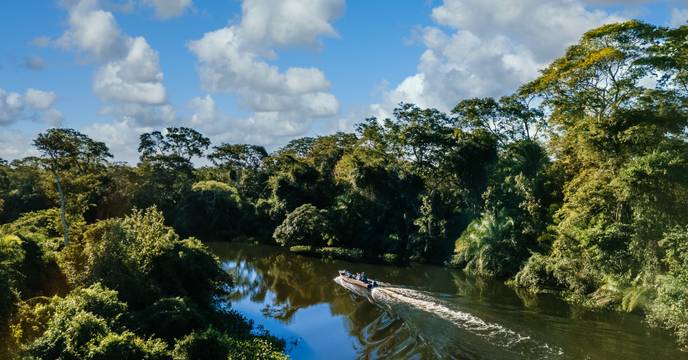
Explore the lush rainforest while the water levels are lower, making for easier wildlife spotting and river navigation.
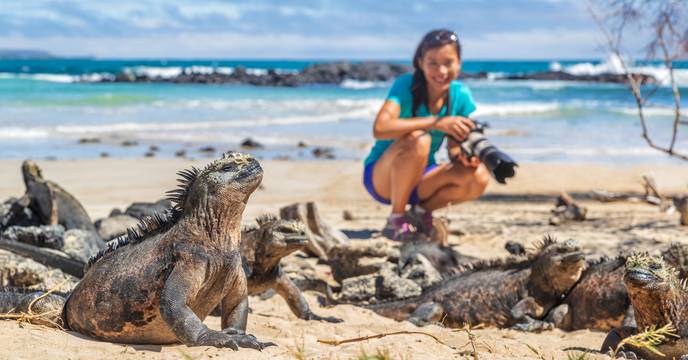
Galapagos expedition
Encounter iguanas and sea turtles nesting, with the bonus of fewer tourists and aircraft to disrupt their natural habitat.
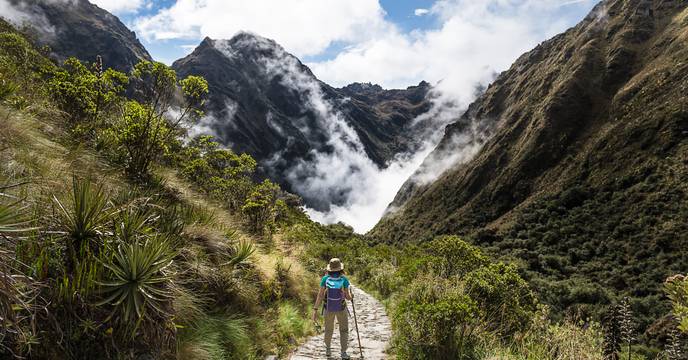
The Inca Trail to Machu Picchu is a must-do in South America – and you’ll get to enjoy more pleasant temperatures and clearer paths for an unforgettable adventure.
Three essentials to pack for your South America tour in fall
Layered clothing.
Pack versatile layers for fluctuating day-to-night temperatures, including a light sweater or jacket.
Rain protection
Don’t forget a reliable raincoat or poncho for unexpected showers, particularly in the Amazon basin.
Comfortable shoes
Whether you’re exploring the cities or heading on outdoor adventures, you’ll need sturdy walking shoes or boots for long days on your feet.
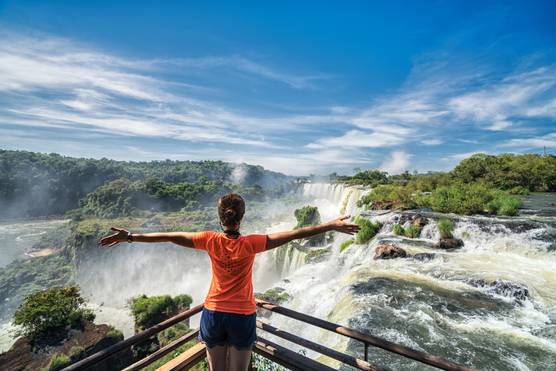
South America outside the peak times
Overview of activities and tourists in south america per month.
Every country in South America has its own unique flavor, and so too does each month, with different activities to enjoy from January through December. Dance the tango on the streets of Buenos Aires in August, join the festivities of Chile’s Independence Day in September, or observe the Day of the Dead celebrations in October. Whether it's the high season buzz of Brazil's beaches or the quiet introspection of the Argentine countryside in the off-season, South America offers endless opportunities for curious travelers seeking authenticity beyond the conventional tourist path.
South America adventures
By experience.
In-depth cultural
Hiking and trekking
The best time to visit South America: A seasonal guide to prices
South America has a kaleidoscope of cultures and climates – and its prices are just as diverse throughout the year. Peak season, from December to March, sees prices soar along with temperatures, as revelers flock for summer festivities. During the low season, between April and June, and from October to November, travelers can find significant savings, tranquility, and the authentic essence of local life. The shoulder months of July to September offer a balance of moderate prices and mild weather. High Season Overview (December to February) High prices: Expect to pay premium rates for accommodation and tours. Best weather: Enjoy South American weather at its best – ideal for Andean adventures and beach retreats. Festive spirit: Perfect for travelers seeking vibrant culture and grand celebrations like Carnaval. Low Season Overview (December to February): Lower prices: You’ll find great deals on hotels and excursions, with more room for negotiation. Cooler climes: A respite from the heat, perfect for in-depth urban and cultural exploration. Quiet exploration: The low season is ideal for those who prefer less crowded, more personal travel experiences. Shoulder Season Overview (March to May and September to November): Moderate prices: Enjoy the sweet spot between high season rates and availability of deals. Varied weather: Transitioning climates with pockets of perfection for adventure seekers. Enthusiasts' pick: Ideal for travelers aiming to experience South America with fewer tourists.
Deals for South America tours
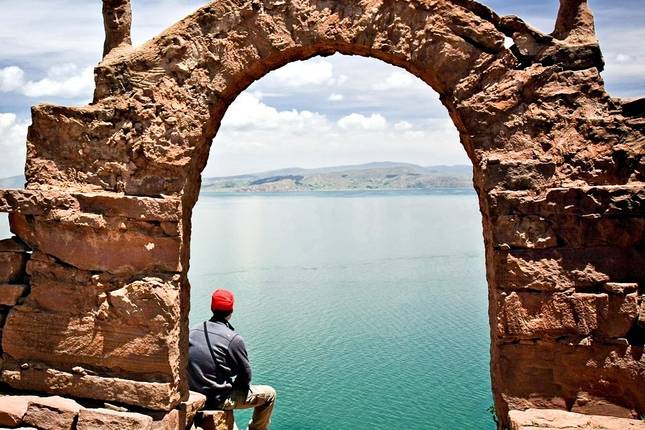
Puno & Titicaca Islands
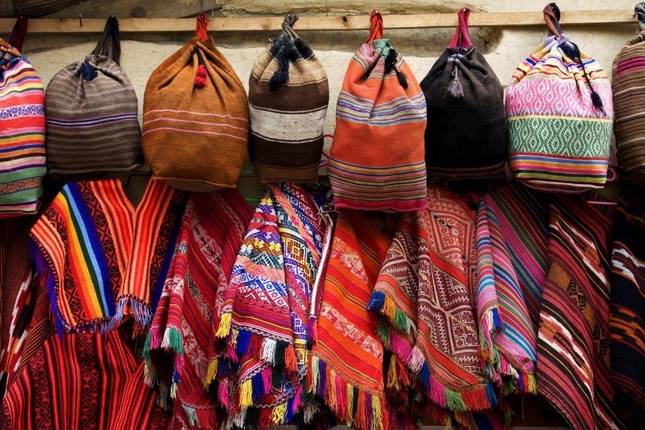
Dunes & Vineyards
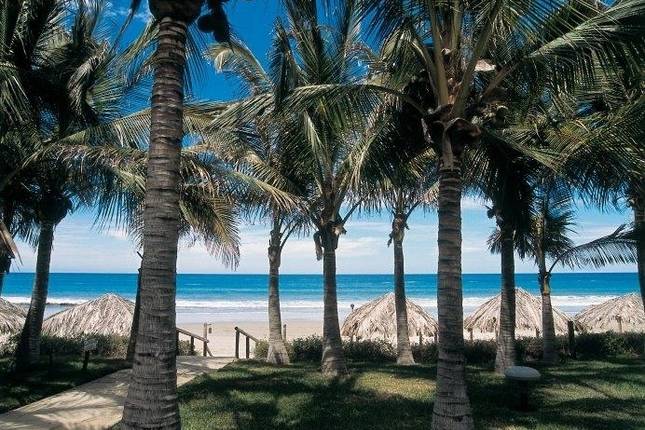
Northern Paradise, Short Break
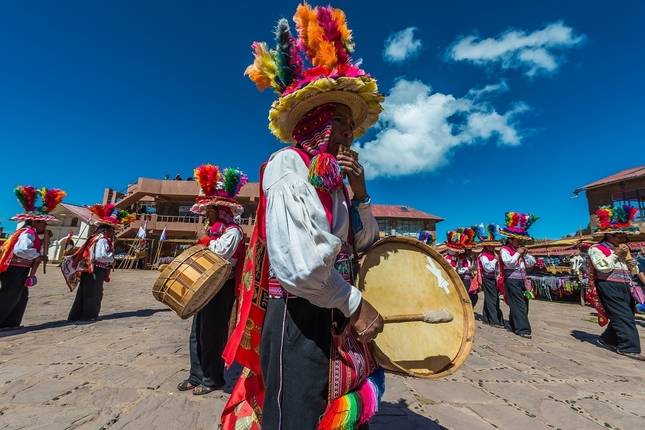
Puno & Titicaca Islands, Semi-Private Tour
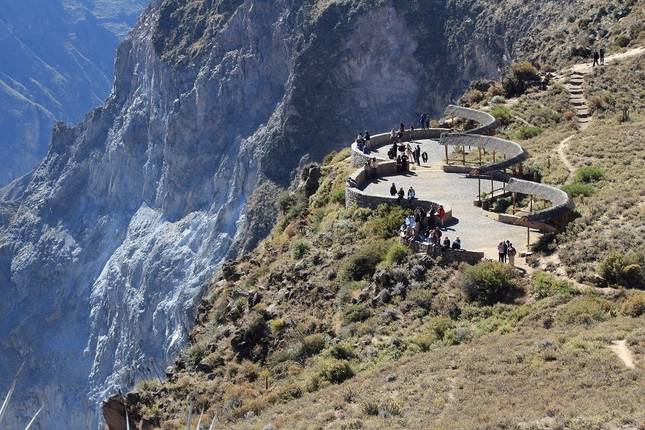
Arequipa and Colca Canyon

Hacienda Concepcion 3 Days, Short Break (On Request)
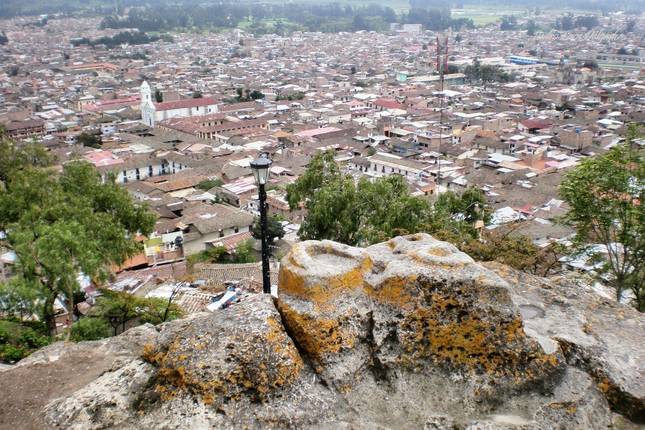
Cajamarca, Colonial Syncretism - Private tour
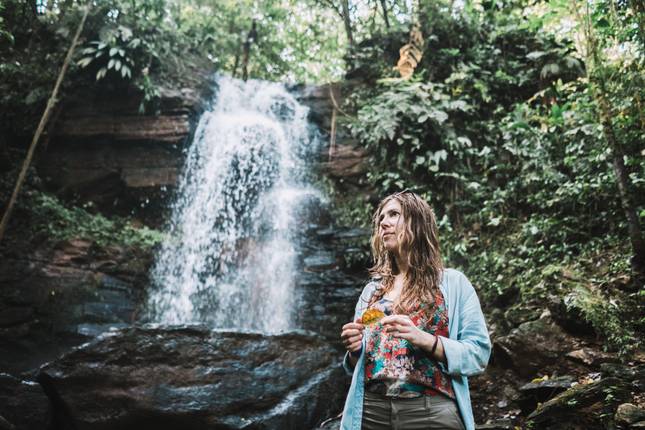
4 Days Archidona Amazon Lodge Kichwa Community
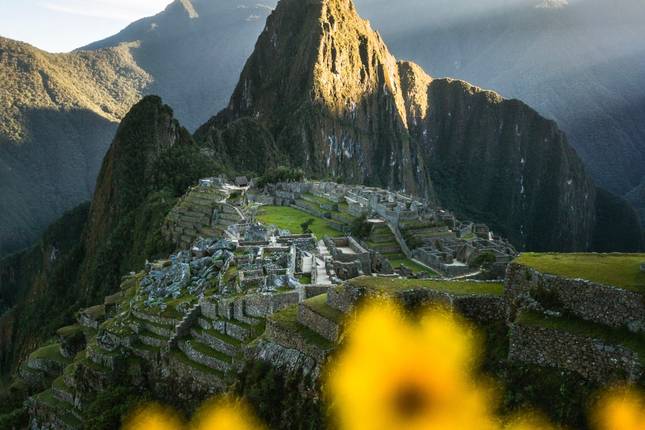
Short Inca Trail to Machu Picchu in 2 Days
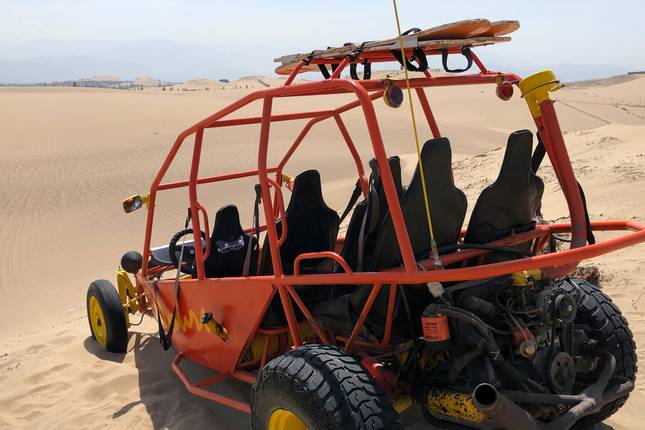
The Peruvian Coast: Seafood, Sandboarding & Dune Buggies
Top-rated operators for south america tours.

37,810 reviews

Haku Travel
307 reviews

Alpaca Expeditions
277 reviews
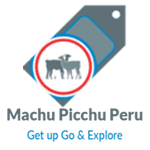
Machu Picchu Peru
114 reviews

Vidal Expeditions

What people ask about South America
What is the best time to visit brazil for beaches and festivals.
The best time to visit Brazil's beaches and join festivals like Rio Carnaval is during Brazil's summer months, from December to March. During this period, the weather is hot and the country is bustling with activity and celebrations.
When should I travel to Peru for ideal trekking conditions?
The prime trekking season in Peru, especially for the Inca Trail, is during the dry season from May to September. These months offer clear skies and milder temperatures which are perfect for more comfortable hiking.
What's the best time to tour Argentina's wine country?
Visit Argentina's wine regions during its grape harvest season, from late February to April. In these months, you’ll enjoy the lush vineyards, wine festivals, and the vibrant colors of autumn.
When is the best time to go to the Galapagos Islands?
The Galapagos Islands are a year-round destination. However, the most popular time to visit is during the cooler dry season, from June to November, when marine life is most active.
Is there a recommended time to visit the Amazon Rainforest?
While the Amazon Rainforest can be visited year-round, the drier season from July to December is the best time to explore the area. You’ll experience less rainfall and better accessibility via the forest's rivers and trails.
When's the best season to experience Patagonian outdoor activities?
The summer months of December to March are optimal for visiting Patagonia. In the summer, you’ll experience the warmest temperatures for hiking, glacier tours, and other outdoor adventures.
24/7 Customer Support

Our team of experienced tour specialists have traveled to hundreds of countries around the globe and have decades of first-hand travel experience to share. Contact us now to have all of your tour-related questions answered!

Top Countries You Haven’t Been (Yet!)
Felipe Rosen Mosquera

The Safest Latin American Countries to Visit
Randi Gollin

What To Do in Peru: Discover the Magic!

Explore the World Through Food: 4 Delightful Destinations
Stephanie Fuchs
Planning your next adventure?
Get the best weekly deals and travel inspiration delivered straight to your inbox.
By submitting this form, I agree to the TourRadar T&Cs and Privacy policy .
More about South America
- South America (3738)
- November 2024 (3605)
- October 2024 (3604)
- December 2024 (3521)
- September 2024 (3209)
- Group (3017)
- Christmas & New Year (2963)
- January 2025 (2907)
- March 2025 (2906)
- February 2025 (2894)
- Family (2780)
- April 2025 (2653)
- Explorer (2537)
- May 2025 (2472)
- June 2025 (2419)
- July 2025 (2335)
- August 2025 (2326)
- Fully Guided (2304)
- Personalized (1621)
- 7 Day (1475)
- Partially Guided (1424)
- Private (1002)
- In-depth Cultural (940)
- 10 Day (925)
- Active (817)
- Historical (749)
- 2 Week (667)
- Central America (613)
- Sightseeing (606)
- Wildlife (568)
- 3 Week (532)
- Hiking & Trekking (510)
- 3 Day (473)
- Cusco (463)
- Self-Guided (412)
- Quito (360)
- Buenos Aires (324)
- San Jose (262)
- Mountain Hikes (221)
- Beach (177)
- Santiago (167)
- Rio de Janeiro (161)
- Mexico City (152)
- Coach / Bus (130)
- Baltra Island (128)
- Ocean Cruise (123)
- Custom (123)
People also visited
- Colombia Tours
- Alberta Vacations
- Country Roads of Belgium, Luxembourg & the Netherlands (Classic, 11 Days)
- Best of Malaysia (private tour)
- Undiscovered Zhetysu: from desert to snow of Tien Shan
- Rainbow Mountain Trek
- Travel Agent Appreciation Month

- Aparthotels in Asia
- Aparthotels Blankenberge
- Aparthotels Brussels
- Aparthotels Paphos
- Aparthotels Copenhagen
- Aparthotels London
- Aparthotels Paris
- Aparthotels Berlin
- Aparthotels Munich
- Aparthotels Budapest
- Aparthotels Venice
- Aparthotels Malta
- Aparthotels Amsterdam
- Aparthotels Krakow
- Aparthotels Albufeira
- Aparthotels Algarve
- Aparthotels Timisoara
- Aparthotels Scotland
- Aparthotels Barcelona
- Aparthotels Canary Islands
- Aparthotels Costa Brava
- Aparthotels Fuerteventura
- Aparthotels Majorca
- Aparthotels Tenerife
- Aparthotels Zurich
- Aparthotels Bodrum
- Aparthotels Aspen
- Aparthotels Atlanta
- Aparthotels Austin
- Aparthotels Boston
- Aparthotels Branson
- Aparthotels Breckenridge
- Aparthotels Chicago
- Aparthotels Cleveland
- Aparthotels Dallas
- Aparthotels Daytona Beach
- Aparthotels De Soto
- Aparthotels Denver
- Aparthotels Detroit
- Aparthotels Gulf Shores
- Aparthotels Hollywood
- Aparthotels Honolulu
- Aparthotels Houston
- Aparthotels Indian Shores
- Aparthotels Keystone
- Aparthotels Kihei
- Aparthotels Kissimmee
- Aparthotels Lake Geneva
- Aparthotels Las Vegas
- Aparthotels Los Angeles
- Aparthotels Marathon
- Aparthotels Memphis
- Aparthotels Miami
- Aparthotels Milwaukee
- Aparthotels Minneapolis
- Aparthotels Myrtle Beach
- Aparthotels Nashville
- Aparthotels New Orleans
- Aparthotels New York
- Aparthotels Orlando
- Aparthotels Ormond Beach
- Aparthotels Park City
- Aparthotels Philadelphia
- Aparthotels Phoenix
- Aparthotels Pittsburgh
- Aparthotels Portland
- Aparthotels San Antonio
- Aparthotels Santa Barbara
- Aparthotels Savannah
- Aparthotels Seattle
- Aparthotels Sedona
- Aparthotels Siesta Key
- Aparthotels Southampton
- Aparthotels Steamboat Springs
- Aparthotels Tampa
- Aparthotels Treasure Island
- Aparthotels Tucson
- Aparthotels Vail
- Aparthotels Virginia Beach
- Aparthotels Washington
- Aparthotels West Palm Beach
- Aparthotels Bogota
- Aparthotels Puerto Vallarta
- Aparthotels San Jose del Cabo
- Aparthotels Perth
- Dubai Real Estate Investments
- Indonesia Real Estate Investments
- Thailand Real Estate Investments
- Cyprus Real Estate Investments
- France Real Estate Investments
- Germany Real Estate Investments
- Italy Real Estate Investments
- Portugal Real Estate Investments
- Spain Real Estate Investments
- Turkey Real Estate Investments
- UK Real Estate Investments
- Orlando Real Estate Investments
- Chicago Real Estate Investments
- Baltimore Real Estate Investments
- Raleigh Real Estate Investments
- Oklahoma Real Estate Investments
- Texas Real Estate Investments
- Philippines
- Saudi Arabia
- South Korea
- United Arab Emirates
- South Africa
- Bosnia and Herzegovina
- Czech Republic
- Liechtenstein
- Netherlands
- Switzerland
- Antigua & Barbuda
- El Salvador
- St Kitts & Nevis
- United States
- Dominican Republic
- New Zealand
- Finance Property in Azerbaijan
- Finance Property in Armenia
- Finance Property in Bali
- Finance Property in Bangladesh
- Finance Property in Cambodia
- Finance Property in China
- Finance Property in Dubai
- Finance Property in Hong Kong
- Finance Property in Indonesia
- Finance Property in India
- Finance Property in Israel
- Finance Property in Japan
- Finance Property in Kazakhstan
- Finance Property in Kyrgyzstan
- Finance Property in Kuwait
- Finance Property in Malaysia
- Finance Property in Nepal
- Finance Property in Oman
- Finance Property in the Philippines
- Finance Property in Pakistan
- Finance Property in Qatar
- Finance Property in Russia
- Finance Property in Singapore
- Finance Property in Sri Lanka
- Finance Property in South Korea
- Finance Property in Saudi Arabia
- Finance Property in Thailand
- Finance Property in Taiwan
- Finance Property in United Arab Emirates
- Finance Property in Uzbekistan
- Finance Property in Vietnam
- Finance Property in Algeria
- Finance Property in Egypt
- Finance Property in Ethiopia
- Finance Property in Ghana
- Finance Property in Kenya
- Finance Property in Morocco
- Finance Property in Mauritius
- Finance Property in Nigeria
- Finance Property in South Africa
- Finance Property in Tanzania
- Finance Property in Tunisia
- Finance Property in New Zealand
- Finance Property in Bosnia and Herzegovina
- Finance Property in Belgium
- Finance Property in Bulgaria
- Finance Property in Czech Republic
- Finance Property in Croatia
- Finance Property in Cyprus
- Finance Property in Denmark
- Finance Property in Estonia
- Finance Property in France
- Finance Property in Finland
- Finance Property in Greece
- Finance Property in Georgia
- Finance Property in Germany
- Finance Property in Hungary
- Finance Property in Iceland
- Finance Property in Italy
- Finance Property in Austria
- Finance Property in Albania
- Finance Property in Ireland
- Finance Property in Andorra
- Finance Property in Jersey
- Finance Property in Belarus
- Finance Property in Latvia
- Finance Property in Liechtenstein
- Finance Property in Luxembourg
- Finance Property in Lithuania
- Finance Property in Monaco
- Finance Property in Malta
- Finance Property in Montenegro
- Finance Property in Netherlands
- Finance Property in Norway
- Finance Property in Macedonia
- Finance Property in Poland
- Finance Property in Portugal
- Finance Property in Romania
- Finance Property in Spain
- Finance Property in Switzerland
- Finance Property in Slovenia
- Finance Property in Slovakia
- Finance Property in Sweden
- Finance Property in Turkey
- Finance Property in UK
- Finance Property in Ukraine
- Finance Property in Antigua & Barbuda
- Finance Property in Belize
- Finance Property in Bahamas
- Finance Property in Costa Rica
- Finance Property in Canada
- Finance Property in Dominican Republic
- Finance Property in Dominica
- Finance Property in El Salvador
- Finance Property in Grenada
- Finance Property in St Lucia
- Finance Property in St Kitts & Nevis
- Finance Property in United States
- Finance Property in Argentina
- Finance Property in Brazil
- Finance Property in Colombia
- Finance Property in Chile
- Finance Property in Ecuador
- Finance Property in Mexico
- Finance Property in Panama
- Finance Property in Paraguay
- Finance Property in Peru
- Finance Property in Uruguay
- Finance Property in Venezuela
- Azerbaijan Housing Market
- Armenia Housing Market
- Bahrain Housing Market
- Bangladesh Housing Market
- Cambodia Housing Market
- China Housing Market
- Dubai Housing Market
- Hong Kong Housing Market
- Indonesia Housing Market
- Israel Housing Market
- India Housing Market
- Japan Housing Market
- Kyrgyzstan Housing Market
- Kazakhstan Housing Market
- Malaysia Housing Market
- Nepal Housing Market
- Oman Housing Market
- Pakistan Housing Market
- Philippines Housing Market
- Qatar Housing Market
- Russia Housing Market
- South Korea Housing Market
- Singapore Housing Market
- Sri Lanka Housing Market
- Saudi Arabia Housing Market
- Thailand Housing Market
- Taiwan Housing Market
- United Arab Emirates Housing Market
- USA Housing Market
- Argentina Housing Market
- Brazil Housing Market
- Mexico Housing Market
- Algeria Housing Market
- Egypt Housing Market
- New Zealand Housing Market
- Cyprus Housing Market
- France Housing Market
- Germany Housing Market
- Italy Housing Market
- Netherlands Housing Market
- Poland Housing Market
- Portugal Housing Market
- Spain Housing Market
- Switzerland Housing Market
- Turkey Housing Market
- UK Housing Market
Top South American Countries for Expat Living 2024: Our Comparison
Last Updated on: 19th September 2024, 02:47 pm
As the trend of expat living in South America grows in 2024, many are seeking the Best South American Countries For Expats to enhance their experience living abroad. This article aims to compare various countries based on significant factors that include lifestyle, cost of living, healthcare options, expat communities , and safety. With unique and diverse South American culture , each nation presents its own advantages for potential expatriates. Understanding these elements will help future expats make informed decisions when researching where to live abroad in 2024. By delving into these comparisons, we will provide valuable insights and open the door to a more fulfilling life in South America, ensuring a smooth transition into new adventures 1 .
Key Takeaways
- South America offers a variety of countries ideal for expat living in 2024.
- Cost of living, healthcare, and lifestyle are crucial factors for expatriates.
- Researching expat communities can ease the transition to a new country.
- Cultural richness and diverse landscapes make South America an attractive option.
- Safety and legal requirements, including visas, are essential considerations.
Understanding Expat Living in South America
Expat living in South America brings a unique experience enriched by vibrant cultures and welcoming communities. Each country across the continent offers its own blend of traditions and lifestyles, making cultural integration crucial for those adapting to a new environment. For many expats, understanding local customs and participating in community events can significantly smoothen their transition.
Expat challenges often arise from language barriers, varying social norms, and the necessity of building a social network. Establishing friendships and connections is key, as it not only helps newcomers feel at home but also provides support when navigating daily life. Engaging in local activities, such as classes or clubs, can serve as effective platforms for social network building while fostering a sense of belonging.
For those considering moving to places like Colombia, Ecuador, or Peru, the richness of the local culture and community is incredibly appealing. Colombia is noted as a popular choice due to its affordable property and lively culture 2 . Ecuador is similarly favored for its quality of life and stunning natural environments, including the Amazon and Galápagos 2 . In Peru, the diverse landscapes—ranging from coastlines to mountains—add to its allure for expats, complemented by a modest cost of living 2 .
Many visitors and prospective expats can take advantage of visa-on-arrival options; it’s wise to ensure passports are valid for at least six months 2 . Safety is another aspect to consider when choosing an expat destination , with several South American locales being relatively safe for expatriates, although some caution is warranted in certain areas due to petty crime 2 .
Ultimately, embracing the local culture while being mindful of the various challenges can lead to a fulfilling expat experience in South America. By understanding how to navigate these elements, future expatriates can enjoy a rich tapestry of new experiences.
Key Factors to Consider When Choosing an Expat Destination

When considering choosing an expat destination in South America, various relocation factors play significant roles in one’s decision-making process. Top priorities often include job opportunities, community safety, and local culture. The overarching influence of these expat priorities cannot be overstated.
For many, understanding healthcare access is critical. Countries like Ecuador provide inexpensive healthcare options, making it an attractive choice for American expats. This consideration differs greatly from other nations where healthcare may present challenges, such as language barriers and availability.
Language proficiency is another aspect that expats should not overlook. Many seek destinations where communication is easier, especially those where English is widely spoken. The climate and the cultural environment enhance the overall appeal of specific countries.
While evaluating potential destinations, aspiring expats should explore aspects like immigration policies and safety conditions. Countries like Brazil and Argentina offer rich cultural experiences yet come with their distinct challenges. Familiarity with local laws and customs can play a crucial role in ensuring a smooth transition to a new life.
In summary, expat living considerations are varied and multifaceted, ranging from practical aspects like job opportunities and healthcare accessibility to more subjective elements like cultural affinity and personal comfort. Understanding these factors can significantly aid future expats in finding the best fit for their lifestyle and aspirations in South America. For more information on this topic, visit this source for further insights.
Ultimately, the expat journey is a transformative experience that requires careful thought and planning. By taking into account all relevant factors, individuals can choose a destination that will enrich their lives 3 4 .
Cost of Living in South America
Understanding the Cost of Living in South America is essential for anyone considering a move to the region. This section delves into a comparative analysis of living expenses and highlights affordable cities for expats , offering insights into budgeting effectively while living in various South American countries.
Comparative Analysis of Living Expenses
The Cost of Living in South America can vary significantly across countries. For example, in Argentina, a family of four may manage on about $1,700 monthly, excluding rent 5 . In Ecuador, the average monthly rent for a one-bedroom apartment in the city center is approximately $423 USD 6 . Other countries show diverse costs: in Colombia, a similar apartment may cost around $410 USD, while Brazil presents slightly lower costs with rents around $259 USD 6 .
Affordable Cities for Expats
Identifying affordable cities for expats is crucial for making a smooth transition. Arequipa in Peru stands out with low living costs, making it especially inviting. Florianópolis in Brazil also offers a charm alongside affordability, creating an attractive environment for those relocating 5 . Other notable locations include Mendoza, Argentina, and Bogotá, Colombia, both providing budget-friendly options for those looking to live comfortably without excessive expenses 5 .
Healthcare for Expats in South America
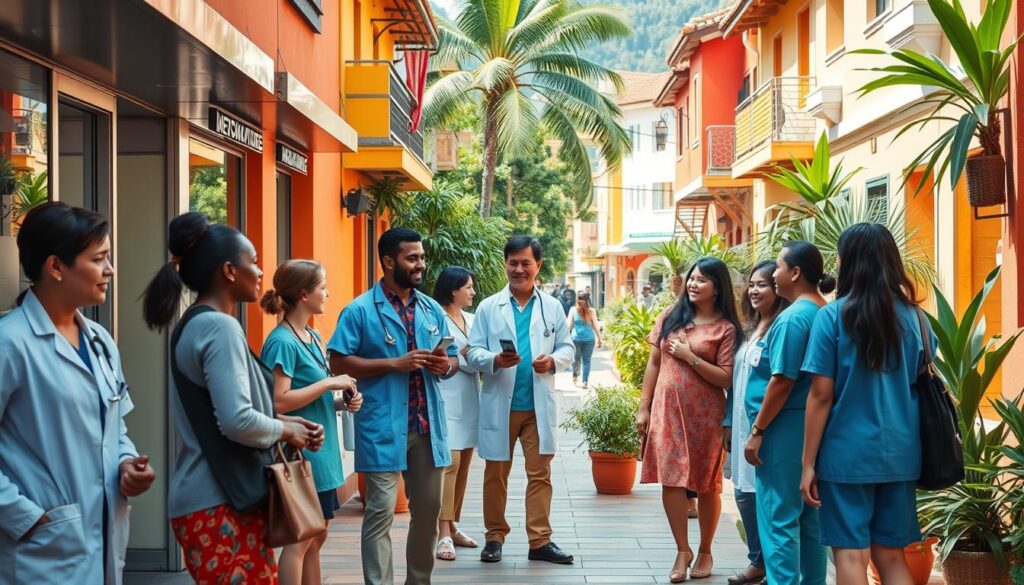
Healthcare for expats in South America involves understanding the differences between public and private healthcare systems. This continent showcases diverse healthcare options, providing expatriates various choices depending on their needs and circumstances. With universal public healthcare available in countries like Argentina, Brazil, and Colombia, expats can often access services at no cost. However, they may encounter challenges such as longer wait times and varying quality of care, especially outside urban areas 7 . On the other hand, private healthcare options present an attractive alternative, offering shorter wait times and higher-quality services at a cost, which might be necessary for those requiring immediate attention 8 .
Public vs. Private Healthcare Systems
The public healthcare systems in South America can be beneficial, such as Colombia’s notable ranking of 22nd worldwide for health system performance 9 . Yet, around 30% of the population struggles to access healthcare, highlighting significant gaps due to economic factors 9 . In comparison, private insurance coverage tends to be more expensive in Brazil than in other countries, which can be a factor in decision-making 9 . Many expats consider international insurance as crucial for securing access to quality medical care tailored to their needs during their stay abroad. Moreover, proof of international health insurance is necessary in Ecuador for obtaining a national ID, emphasizing the importance of being prepared 9 .
While overall healthcare costs in South America are generally lower than in other regions, understanding the specific healthcare needs is essential in ensuring satisfactory medical care abroad . Each expat’s situation is unique, as not all medical facilities are up to the same standards, particularly in lesser-developed areas 7 . Comparatively, private clinics can deliver reduced waiting times but may come with a price, creating a dynamic healthcare landscape for individuals navigating their options 8 .
Best South American Countries For Expats

For those considering a move to South America, various countries stand out for their unique offerings tailored to the expat lifestyle. Each location presents distinct advantages, making them some of the Best South American Countries For Expats .
Argentina: Culture and Lifestyle for Expats
Argentina boasts a rich cultural heritage and an engaging social scene ideal for expats. The vibrant cities, especially Buenos Aires, offer arts, music, and culinary delights, enhancing the overall expat lifestyle in Argentina . Argentina has recorded significant improvements in peacefulness, making it a safer and more affordable place to live 10 .
Peru: Community and Affordable Living
Peru is celebrated for its welcoming community in Peru and its incredibly low cost of living. Cities like Lima provide a blend of historical significance and modern convenience, ensuring comfort for many expats on a budget. With a living cost of around $2,000, it ranks among the safe and affordable options for expats like Cuenca 10 and 11 .
Ecuador: Scenic Beauty and Affordable Living
Ecuador offers breathtaking landscapes and a dramatically low cost of living, making it ideal for those who appreciate scenic living in Ecuador . Cities such as Quito and Cuenca not only boast rich cultural histories but also maintain a favorable economic atmosphere for residents. The cost of living in Cuenca stands at approximately $1,200, solidifying its position as an enticing expat destination 10 .
Brazil: Economic Opportunities and Cultural Diversity
Brazil is known for its vibrant culture, stunning beaches, and diverse landscapes. The country offers significant economic opportunities for those interested in forging a life abroad. With cities like Florianópolis providing a safe environment and an affordable, enjoyable lifestyle, Brazil certainly holds vast potential for expats 12 .
Chile: Stability and High Quality of Life
Chile is recognized for its high quality of life and outstanding stability, presenting a safe haven for expatriates. With one of the best healthcare systems in the region and a robust infrastructure, it’s not surprising that Santiago is among the safest and greenest capitals in South America. The overall living cost in Santiago is around $1,800, favorably positioning it among the best for expats 10 and 12 .
Expat Communities and Integration
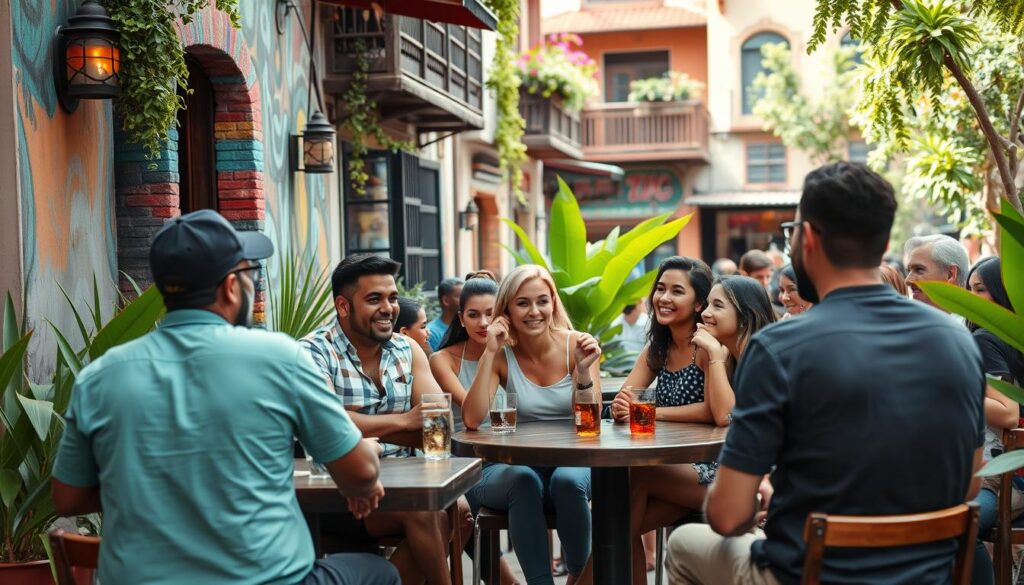
Expat Communities play a pivotal role in facilitating social integration for newcomers. Connecting with these networks helps expats find vital support from like-minded individuals who have navigated similar challenges. Many cities in South America offer vibrant expat networks that bring people together for social gatherings, providing a platform for cultural exchange.
In Colombia, cities like Medellin have become renowned not only for their pleasant climate but also for their welcoming expat communities, making it easier for newcomers to explore the beautiful surroundings and engage with locals 13 . Similarly, Ecuador boasts a warm local community and provides retirees with discounts on public services, which helps enhance social integration and makes it an attractive destination for expats 13 .
Engagement with local groups can foster friendships and establish strong support networks . This integration is essential as it plays a significant role in acclimatizing to the new environment. Countries like Uruguay and Chile are recognized for their high living standards and robust healthcare systems, ultimately contributing to a comfortable lifestyle for expats 13 14 .
Such support networks are critical, especially in regions where expats may feel isolated initially. By providing information on local customs, regulations, or even healthcare options, expat communities can alleviate some of the burdens related to adapting to a new culture. Peru, for instance, is gaining popularity due to its affordable cost of living and expanding business opportunities, appealing to many expats seeking to build new lives abroad 13 .
As expats connect with each other and locals, they contribute to the diversity and richness of the communities they join. This growing blend not only enhances personal experiences but also strengthens the local fabric, ensuring that both newcomers and long-time residents thrive together. Creating bonds in such an environment is essential for achieving true social integration .
Visa Requirements for Living in South America

When considering a move to South America, understanding the various visa requirements is crucial. Each country has specific expat visa options tailored to different situations, including work, retirement, and investment. It is advisable to consult the relevant embassies to ensure compliance with the local laws regarding legal residency .
For instance, Panama has gained recognition as one of the top countries for expatriates, with an impressive 82% of expats expressing happiness about their life there, significantly higher than the global average of 68% 15 . Its Quality of Life Index ranks 16th, with 90% of expats rating personal safety positively 15 . In Uruguay, acquiring a Permanent Residency Visa requires proof of a stable income of at least $1,500 per month, reflecting the country’s commitment to quality living 15 .
Many nations in the region offer residency processes that allow for easier immigration compared to some other parts of the world. For example, Costa Rica has a ‘Rentista’ visa for those who can demonstrate a monthly income of $2,500 and an initial deposit of $60,000 in a local bank. This approach reflects the increasing variety of options to establish legal residency across Central and South America 16 .
Investment opportunities in many countries also facilitate expat visa options . Paraguay’s SUACE Residency by Investment program, which requires a minimum capital investment of $70,000, promotes business establishment for new residents. Countries like Colombia provide pathways to residency through the M-6 Migrant Visa, which necessitates an investment of approximately USD 33,100 in a business 15 . It is essential for prospective expats to stay informed about the specific residency processes in each country.
Safe Cities for Expats in South America
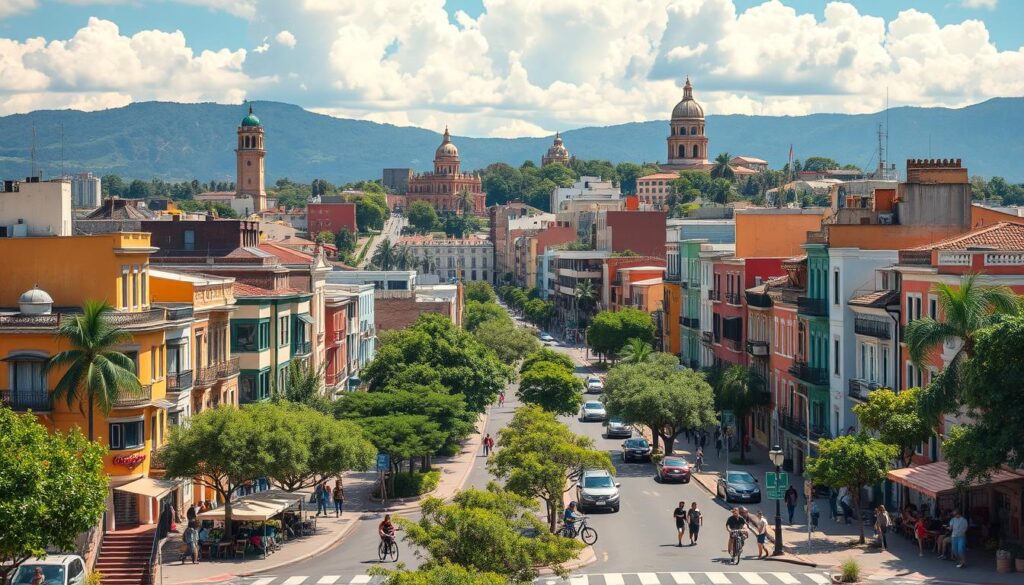
When discussing Safe Cities in South America, the emphasis often falls on the Global Peace Index, which paints a clear picture of safety across the region. Uruguay consistently ranks as the safest country in South America, positioned at 50th globally, with an impressive GPI score of 1.8 as of 2023 17 18 . Following closely, Argentina ranks 54th, having moved up 15 places, showcasing its potential for expat safety despite economic challenges like the 143% inflation rate 17 . Chile, while facing recent safety concerns such as protests, ranks 58th and boasts a GPI score of 1.87 17 18 .
Specific cities within these countries serve as secure living environments for expats. For instance, Montevideo in Uruguay is noted for its relative safety, while Buenos Aires, despite safety issues, remains a vibrant destination 17 . Ecuador is emerging as a safer place as well, moving to a GPI score of 2.1 18 . Nonetheless, travelers must stay alert to common issues such as pickpocketing and muggings across the continent, especially in urban hotspots.
To maximize safety, it is advisable to practice general safety measures, like avoiding walking alone at night and using registered taxi services in cities like Santiago, where crime rates have recently increased 17 . Given the varying levels of safety in South America, keeping abreast of travel advisories remains essential for all expats.
Language Learning and Cultural Adaptation
Language Learning is a fundamental aspect of cultural adaptation for expats in South America. Proficiency in Spanish or Portuguese greatly enhances experiences and facilitates smoother integration into local communities. Understanding language skills abroad can lead to increased job opportunities, improved social interactions, and richer cultural experiences.
Expat adaptation often evolves through various phases. Starting with the honeymoon phase, expats initially enjoy their new surroundings before facing cultural challenges during the negotiation phase, which typically takes six to twelve months to fully adjust 19 . Overcoming these challenges is crucial, as they can strongly affect interpersonal relationships and everyday situations.
Moreover, various aboriginal languages such as Aymara, Guarani, and Quechua enrich the linguistic landscape of Latin America. Each region features unique words, grammatical structures, and idiomatic expressions. This linguistic diversity presents both challenges and opportunities for expatriates wanting to immerse themselves fully in the culture 20 .
Building connections with local communities can ease the transition. Using social networking platforms such as Facebook and Meetup enhances opportunities for cultural exchange and fosters new friendships. Connecting with locals allows expats to learn about traditions, customs, and everyday life, enabling a deeper understanding of their new home 21 .
In adapting to life in South America, it is essential to embrace flexibility. Happy expats often find joy in navigating cultural differences, trying new cuisines, and participating in local festivities. This adaptability not only enriches their experience but also helps them to tackle unexpected situations such as transportation delays and power outages 20 .
Ultimately, striving for proficiency in the local language and understanding of the cultural norms can significantly impact an expat’s overall experience. By actively engaging with the language and local communities, expats can turn their overseas journey into a transformative adventure full of rewarding interactions and lasting memories.
Embarking on a South American relocation presents a myriad of opportunities for expats seeking vibrant cultures and diverse experiences. Throughout this article, we explored the various factors influencing expat living, including cost of living, healthcare options, and visa requirements . Each country offers unique advantages and challenges, making it essential for individuals to assess their preferences carefully when evaluating potential destinations.
The rich cultural landscape, impressive natural wonders, and welcoming communities enhance the appeal of countries like Argentina and Colombia. As highlighted, those considering this journey should be aware of practical aspects such as local services and integration into society, which can shape their overall experience 22 23 . For many, the decision involves not only financial considerations but also the desire for adventure and a deeper connection to a new way of life.
Ultimately, the final thoughts on expat destinations in South America are rooted in personal choices and adaptability. With the prospect of enriching experiences, potential for community connections, and breathtaking surroundings, now may be the perfect time to explore what this vast continent has to offer in your journey toward a new.
What are the best South American countries for expats in 2024?
How much should i expect to spend on living expenses in south america.
The best South American countries for expats in 2024 include Argentina, Peru, Ecuador, Brazil, and Chile. Each offers unique benefits such as rich culture, affordability, robust communities, and various lifestyle options for those considering relocation.
On average, a family of four might manage on around
On average, a family of four might manage on around $1,700 per month in countries like Argentina, excluding rent. Cities like Arequipa in Peru and Florianópolis in Brazil are also known for their lower cost of living and can be affordable options for expats.
What healthcare options are available for expats in South America?
South America provides various healthcare options for expats, including public and private systems. Public healthcare can be free but may come with longer wait times. Private healthcare often offers prompt services at reasonable rates, making it essential to evaluate these options before relocating.
Are there strong expat communities in South America?
Yes, many South American countries have thriving expat communities that can offer support, resources, and social opportunities for newcomers. Engaging with these networks can significantly ease the transition and help with cultural integration .
What are the visa requirements for living in South America?
Visa requirements vary by country and can include options for work, retirement, students, or investment. It’s crucial for expats to consult the nearest embassy for the latest information on residency processes and regulations to ensure a smooth transition.
Which cities are considered safe for expats in South America?
Cities like Montevideo in Uruguay, Quito in Ecuador, and Florianópolis in Brazil are often recognized for their safety and expat-friendly environments. However, it’s always important for expats to stay informed about local conditions and practice general safety measures.
How important is it to learn the local language while living abroad?
Learning the local language, either Spanish or Portuguese, is highly beneficial for expats. It facilitates smoother integration into the community, improves opportunities for professional and personal connections, and enhances the overall expat experience.
,700 per month in countries like Argentina, excluding rent. Cities like Arequipa in Peru and Florianópolis in Brazil are also known for their lower cost of living and can be affordable options for expats.
Source Links
- https://shepherdmovers.com/best-south-american-country-to-live-in/
- https://goexpat.com/expat-destinations/south-america/
- https://www.william-russell.com/blog/best-countries-for-american-expats-to-move-and-live-abroad/
- https://www.deel.com/blog/best-countries-for-expats-checklist/
- https://finance.yahoo.com/news/15-cheapest-countries-live-central-085708437.html
- https://brighttax.com/blog/retire-in-south-america/
- https://expatfinancial.com/healthcare-information-by-region/south-american-healthcare-system/
- https://internationalliving.com/countries-best-healthcare-world/
- https://www.internationalinsurance.com/health/south-america/
- https://finance.yahoo.com/news/16-safe-affordable-cities-south-130546326.html
- https://expatriateconsultancy.com/best-latin-american-countries-to-live-in/
- https://www.pacificprime.lat/blog/best-places-for-expats-to-retire-in-latin-america/
- https://expatra.com/living-abroad/7-best-countries-to-live-in-south-america-for-expats/
- https://rethinking65.com/2024/07/03/best-countries-for-american-expatriates/
- https://offshorecircle.com/articles/best-country-in-south-america-to-get-residency/
- https://nomadcapitalist.com/global-citizen/top-5-best-second-residency-programs-central-south-america/
- https://worldlyadventurer.com/is-it-safe-to-travel-south-america/
- https://travelnoire.com/safest-countries-in-south-america
- https://www.agsmovers.com/news/adapting-to-a-new-culture/
- https://www.linkedin.com/pulse/7-habits-happy-expats-latin-america-marcelo-baudino
- https://podcasters.spotify.com/pod/show/theexpatpod/episodes/Quick-Fire-Questions—Adapting-to-a-New-Language-and-Culture-e2nlr31
- https://brendansadventures.com/the-best-and-worst-of-south-america/
- https://medium.com/@MyLatinLife/lets-talk-about-expats-in-latin-america-bd6de4f8b715

As a passionate, global-thinking Real Estate Investor I am constantly looking for the best opportunities to invest in Properties. With Aparthotel.com I am building an All-In-One Global Real Estate Platform, where people can analyse, rent or invest in properties. Additionally I help Investors with comparing the best financing options as well as give detailed Consultation on the buying process for Real Estate Investments around the world. I am looking forward to sharing my knowledge on this Website and feel free to reach out to me if you have any questions.
Top Countries for Remote Workers 2024: Global Comparison
Best countries to visit in january for warm weather 2025 compared, leave a reply.
Your email address will not be published. Required fields are marked *
Save my name, email, and website in this browser for the next time I comment.
Don't have an account yet? Register
Already have an account? Sign In
Reset Password
Please enter your username or email address, you will receive a link to create a new password via email.
Three Amazing Ways to Cruise South America
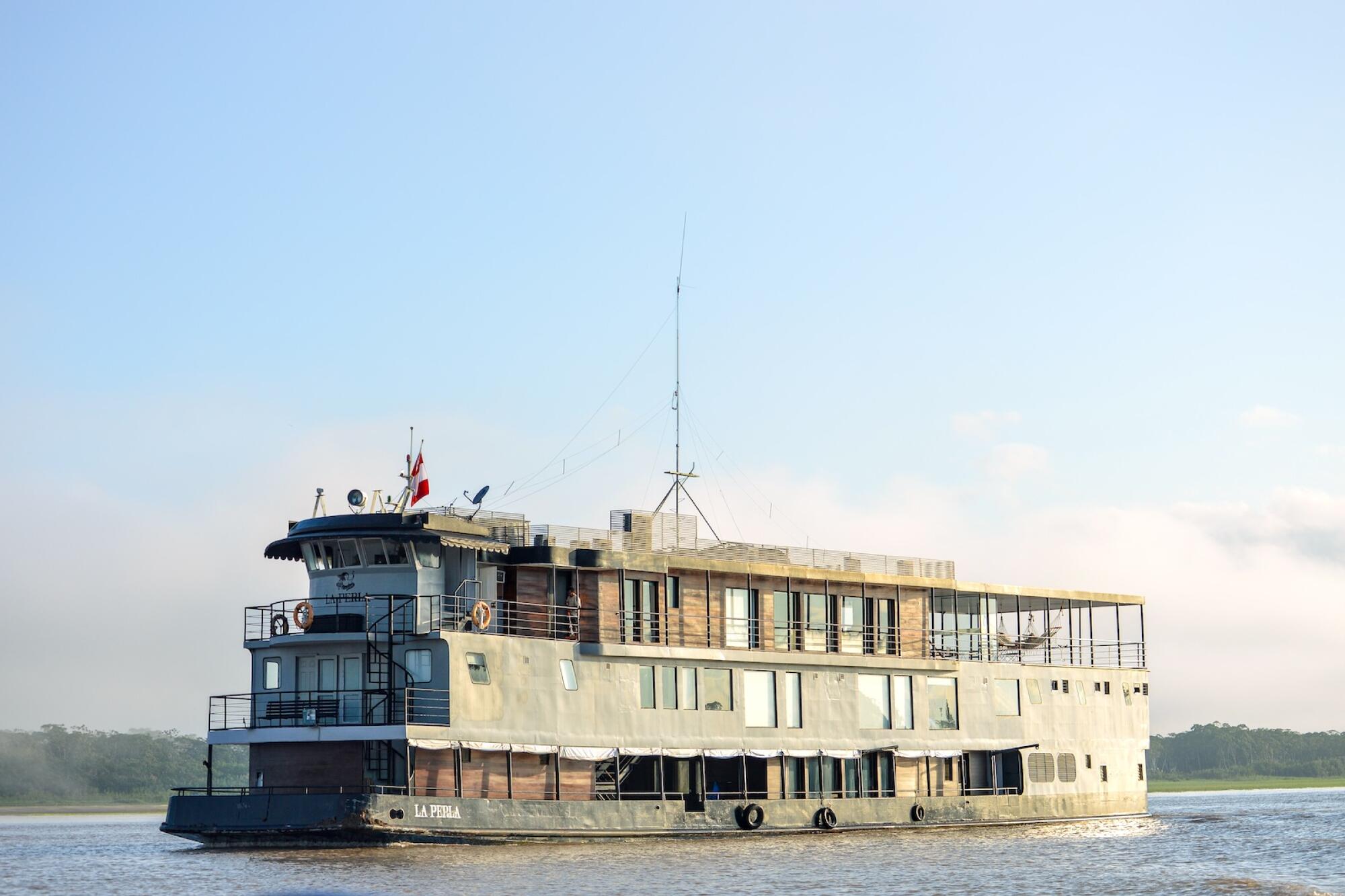
- Copy Link URL Copied!
Galapagos, Patagonia and Amazon cruises are life-changing experiences in the Southern Hemisphere.
Rebounding from a post-pandemic slump, the cruise industry racked up a record number of passengers for 2023 – more than 31 million passengers around the globe. While large ships that carry as many as 7,600 cruisers accounted for the largest numerical increase, the biggest percentage growth was in the “expedition cruise” sector.
If you’ve never heard that term before, an expedition cruise is a smaller ship (normally under 200 passengers) that explores more adventurous areas, in many cases, places where the larger ships won’t fit.
From the Indonesian archipelago and the South Pacific isles to Canada’s Northwest Passage and the Antarctic, these regions offer ideal conditions for expedition cruises. Yet one of the best places – an area that pioneered small, adventurous cruises many decades ago – is South America.
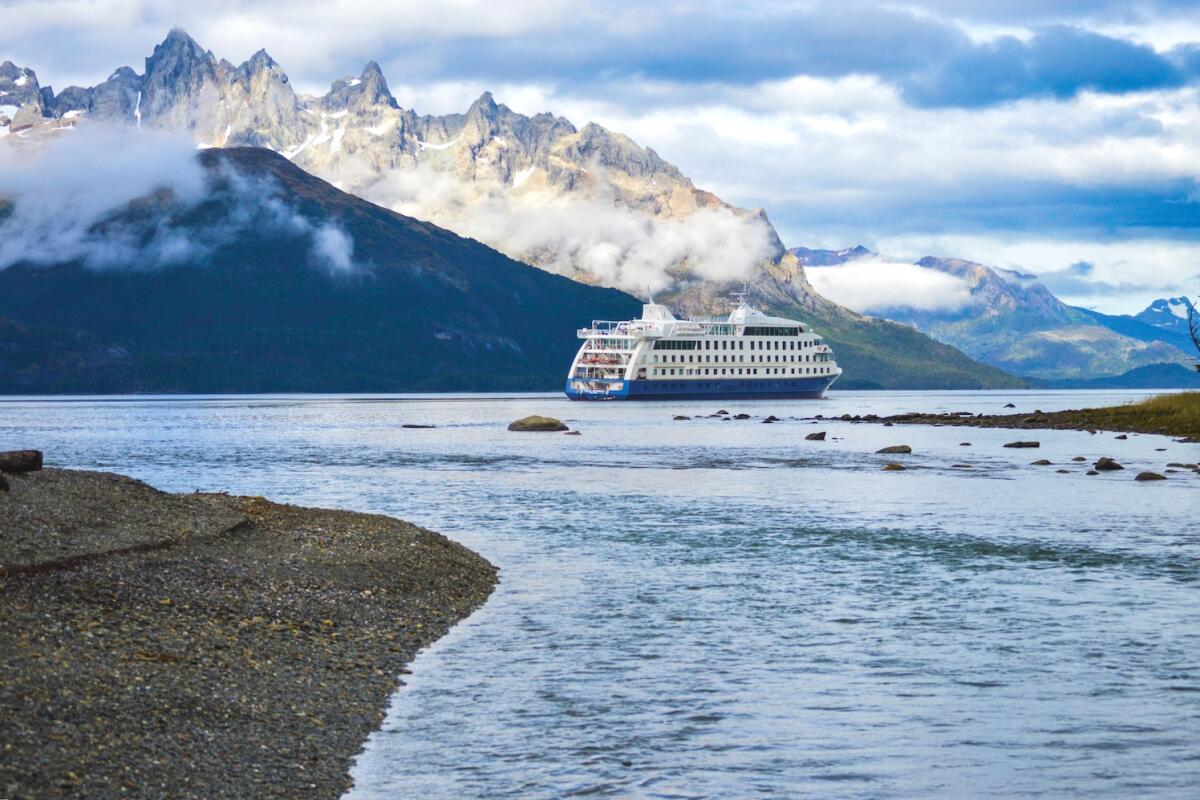
Patagonia Anchoring the bottom end of South America, Patagonia boasts spectacular scenery, incredible wildlife and hundreds of pristine islands protected within the confines of huge national parks.
One of the only ways to explore these remote islands is an expedition cruise between Punta Arenas in Southern Chile and Ushuaia on the Argentine side of Tierra del Fuego Island.
Starting out with crossing the fabled Strait of Magellan, southbound ships slowly make their way through the islands. Several times each day, everyone piles into inflatable Zodiac boats for shore excursions led by nature guides.
And they’re all surprisingly different. Thousands of Magellanic penguins raise their chicks on the tiny Tucker Islets. Ainsworth Bay is renowned for its resident elephant seals, as well as a chance to spot majestic birds like the caracara falcon and Andean condor.
Farther south is the Beagle Channel – named for the Royal Navy ship that took Charles Darwin along this same route in 1833 – and a string of frozen, giant tidewater ice sheets called Glacier Alley. Reaching Wulaia Bay, there’s time for a hike through a moss-draped forest to a lofty viewpoint and browse through a small museum with exhibits on the Yaghan people who first settled this island around 10,000 years ago.
For many, the ultimate highlight of the cruise is a visit to legendary Cape Horn, the southernmost tip of South America. Steep wooden stairs lead to a tiny lighthouse atop the island and a chance to meet the lightkeeper and his family, posted to the remote island for an entire year.
Reversing course and heading north, the ship eventually reaches Ushuaia, a town that’s made a remarkable transition from remote penal colony (the old prison is now a museum) to the outdoor adventure sports hub of Tierra del Fuego (hiking, mountain biking, fishing, skiing, snowboarding and more).
Australis Cruises voyages through the Patagonian isles between late September and early April in two modern expedition ships that hold 200 passengers. Rates for the four five-day cruises start at around $1,638 per person.
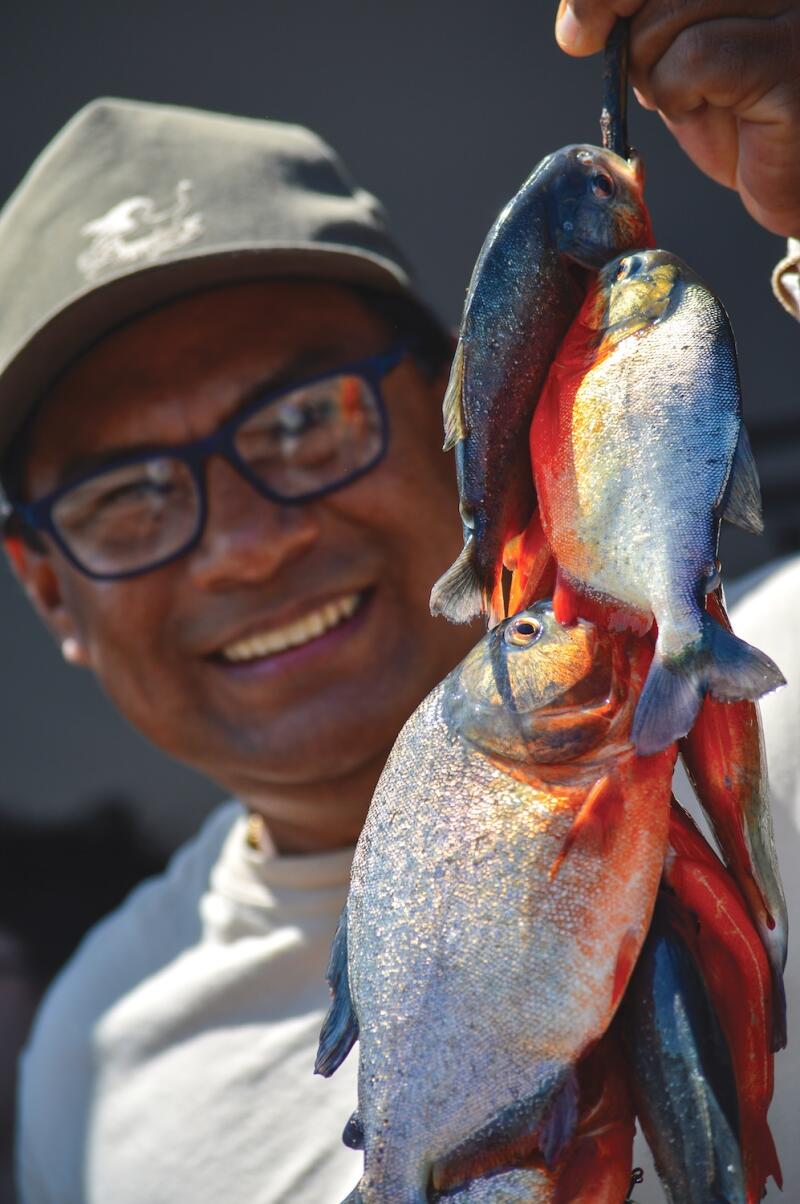
The Amazon It may not be the world’s longest (that honor goes to Africa’s Nile), but the Amazon carries more water by volume than any other river and is without a doubt one of the most exotic, adventurous places where you can cruise.
Some of the big cruise companies send ships up the Amazon almost 1,000 miles upriver to Northern Brazil’s Manaus. But the river is so wide at that point (almost two miles) and the area so built up (the city now boasts more than two million people), it’s hard to commune with the Amazonian rainforest.
The best way to get up close and personal with the world’s most celebrated jungle is an expedition cruise farther along the river. Like those that depart from Nauta, a tiny waterfront outpost near Iquitos in the Peruvian Amazon.
Nauta’s claim to fame is that it marks the start of the actual Amazon, the spot where two other mighty watercourses (the Ucayali and Marañón) merge to form one of the world’s largest rivers.
Pacaya–Samiria National Reserve – one of the largest national parks in the entire Amazon Basin – lies just upstream from Nauta.
A typical cruise chugs along the Marañón to secluded Amerindian settlements where you get a glimpse of daily life in the Amazon. But most of the shore landings focus on nature. Pacaya–Samiria is home to millions of creatures, including apex predators like the jaguar and anaconda, although they tend to be wary of humans. This means you’re more likely to see giant river otters, pink river dolphins, sloths, monkeys and a wide variety of tropical birds.
During the daytime, passengers can undertake guided jungle hikes, try their luck at local-style fishing or take a swim in the river. After dark, smaller boats probe tributaries for nocturnal creatures and members of the cruise boat staff entertain passengers with folk songs.
Iquitos-based Jungle Experiences offers cruises along the Ucayali and Marañón in modern riverboats, like the family-oriented, 30-passenger La Perla and luxury 40-passenger Zafiro. Voyages range from four to eight days with rates starting at $1,480 per person.

Galapagos The most awesome thing about the Galapagos Islands – and there are many – is the fact that most of the animals seem to have no fear of human beings. You’re not allowed to touch the wildlife. But the critters don’t abide by that same restriction: they can waddle, splash or crawl up to you. And many do, curious about these human creatures that walk or swim among them.
In the remote archipelago located around 500 miles off the coast of Ecuador, close encounters of the animal kind are frequent and often life-altering. Sunbathe on a secluded beach with sea lions, snorkel with penguins or those gnarly looking “mini Godzillas” (a.k.a. marine iguanas), or stroll through a cluster of blue-footed boobie nests without the parent birds so much as flinching.
While it is possible to undertake a land-based exploration of the Galapagos – taking day trips around Santa Cruz and San Cristóbal, the two most populated islands – the best way to discover the most intriguing places is a private yacht or small ship cruise.
Normally around a week in length, the itineraries almost always include big Isabella and Fernandina islands with their live volcanoes and vast lava fields, as well as smaller outlying landfalls. They also host creepy colonies of marine and land iguanas.
Formed around a sunken caldera, Genovesa is also called “Bird Island” because thousands of birds nest there, including iconic species like the frigatebird, tropicbird, red-footed booby and Darwin’s finches. Floreana is famed for copious birdlife and its historic post office barrel, started in the 18th century by whalers and other seafarers as a makeshift way to get letters back home during their years at sea.
Flights to the Galapagos depart from Quito or Guayaquil on the Ecuador mainland and touch down at either Balta/Santa Cruz or San Cristóbal, the two departure points for expedition cruises. While the largest vessel can accommodate 90 passengers, most carry 20 or fewer people, making for a very exclusive experience.
Adventures By Disney offers a nine-day, family-oriented Galapagos expedition cruise for kids as young as seven on a 100-passenger ship with rates from $8,999. Enchanted Expeditions explores the archipelago on three luxury motor yachts that carry 14 to 16 passengers, starting from $3,500 for six days.
-Joe Yogerst
20 Best Cities to Visit in the World
Customers rate Zicasso's travel referral service 4.9 on a scale of 1 to 5 based on 1587 reviews on Trustpilot
We match you with top tour companies that specialize in the trip you want, whether it's a customized private tour or a group tour.
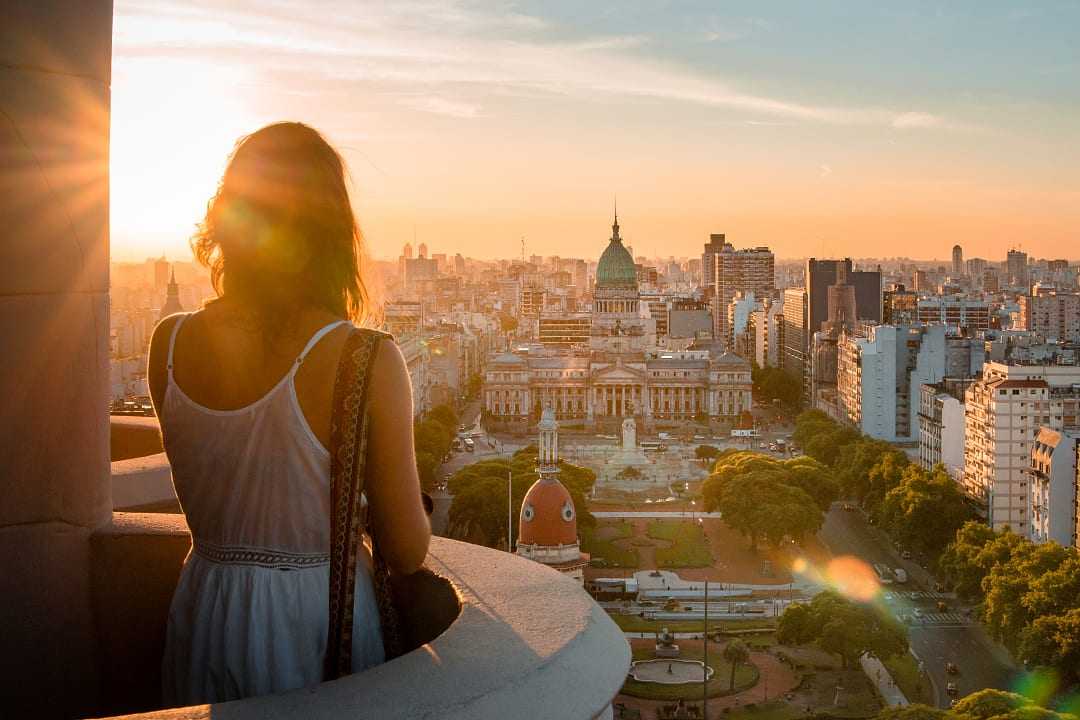
Buenos Aires, Argentina
Exploring the 20 best cities in the world gives you a wealth of diverse experiences, from cultural landmarks to vibrant nightlife and scenic landscapes. The destinations on this list each have unique charm, making them ideal for different types of travelers, whether you're seeking history, adventure, or relaxation.
From the artistic heritage of Florence to the futuristic allure of Tokyo, each city provides unforgettable experiences that cater to a wide range of interests. Whether it's a serene lakeside retreat in Annecy or the bustling energy of Buenos Aires, every city has its own immersive charm.
Let us help you plan your dream trip by offering insights and highlights from each incredible city to help you craft the perfect itinerary.
1. Lisbon, Portugal
2. tokyo, japan, 3. buenos aires, argentina, 4. rio de janeiro, brazil, 5. udaipur, india, 6. florence, italy, 7. annecy, france, 8. ubud, indonesia, 9. istanbul, turkey, 10. marrakech, morocco, 11. edinburgh, scotland, 12. helsinki, finland, 13. hobart, australia, 14. ljubljana, slovenia, 15. cape town, south africa, 16. budapest, hungary, 17. hanoi, vietnam, 18. valletta, malta, 19. panama city, panama, 20. zaragoza, spain, explore the best cities to visit in the world.

Belém Tower in Lisbon, Portugal
Lisbon is the capital of Portugal and a city that blends old-world charm with a modern ambiance. Known for its hilly landscape, the city offers stunning viewpoints, known as miradouros , where you can soak in panoramas of the cityscape overlooking the Tagus River. Lisbon's rich maritime history is celebrated in the eponymous museum, while the iconic Tram 28 gives you a unique way to traverse the undulating hills as it winds through narrow streets past historic landmarks. From a live fado performance in Alfama, where the soulful music captures the essence of Portuguese culture, to witnessing the Age of Discoveries statue, Lisbon stands out as one of the best cities to visit in the world.
Highlights: Belém Tower • Jerónimos Monastery • Alfama District • São Jorge Castle • Praça do Comércio
Recommended length of stay: 3-4 days
Learn more: Portugal Tours & Vacations • Portugal Travel Guide
Expert Tips for Discerning Travelers

Shibuya Crossing in the Ginza District of Tokyo, Japan
Tokyo is a city of contrasts, where ancient traditions meet futuristic technology. As the most populous city in the world, Tokyo offers a diverse range of experiences, from participating in a traditional tea ceremony to exploring the vibrant Akihabara district known for electronics shops and otaku culture. Tokyo's culinary scene is unmatched, boasting more Michelin-starred restaurants than any other city globally. Seasonal festivals, like the cherry blossom festivals in spring, add to its allure as you navigate efficient public transportation or dine in an izakaya with locals.
Highlights: Shibuya Crossing • Sensō-ji Temple • Meiji Shrine • Tokyo Tower • Tsukiji Outer Market
Recommended length of stay: 4-5 days
Learn more: Japan Tours • Japan Travel Guide

Avenida 9 de Julio in Buenos Aires, Argentina
Buenos Aires is often called the "Paris of South America”, focusing on how European elegance meets South American passion. Its European-style architecture, vibrant street art scene, and lively tango music define the cosmopolitan atmosphere. A tango lesson in San Telmo or a visit to a local milonga has its own way of introducing you to the city's cultural heart. The Recoleta Cemetery features Argentina's elite in eerie and beautiful ways, making it a unique attraction. Argentine cuisine, especially its world-renowned beef, is featured in parrillas found throughout a city blending history, culture, and flavor.
Highlights: La Boca Neighborhood • Recoleta Cemetery • Teatro Colón • Plaza de Mayo • Giardino Garibaldi
Learn more: Argentina Tours & Vacations • Argentina Travel Guide

Rio de Janeiro, Brazil
Rio de Janeiro is synonymous with vibrant energy, stunning landscapes, and cultural richness. Famous for its Carnival, one of the largest festivals in the world, Rio is a city that knows how to celebrate. The dramatic mountains, pristine beaches, and sprawling Tijuca National Park provide a perfect backdrop for your adventure. Take a cable car ride to the top of Sugarloaf Mountain for breathtaking views or indulge in Rio’s samba schools that are deeply rooted in Afro-Brazilian culture. Whether you're dancing or exploring along the colorful Selarón Steps, Rio is a city of layers.
Highlights: Christ the Redeemer • Sugarloaf Mountain • Copacabana Beach • Tijuca National Park • Maracanã Stadium
Learn more: Brazil Tours & Vacations • Brazil Travel Guide

Udaipur, India
Known as the "City of Lakes,” Udaipur is one of India's most romantic and picturesque cities. Its beautiful artificial waterways include Lake Pichola, which reflects the surrounding scenery at the heart of the city. The City Palace is a blend of Rajasthani and Mughal architecture, overlooking the lake for a glimpse into the city's royal past. Udaipur is also famous for its vibrant culture, with markets brimming with handicrafts, textiles, and jewelry. Participate in a cooking class to learn about traditional Rajasthani cuisine or take a boat ride at sunset on Lake Pichola to embrace the rich history and cultural vibrancy that echoes the city’s lasting regal memories.
Highlights: City Palace • Lake Pichola • Jag Mandir • Saheliyon-ki-Bari • Jagdish Temple
Recommended length of stay: 2-3 days
Learn more: India Tours & Vacations • India Travel Guide
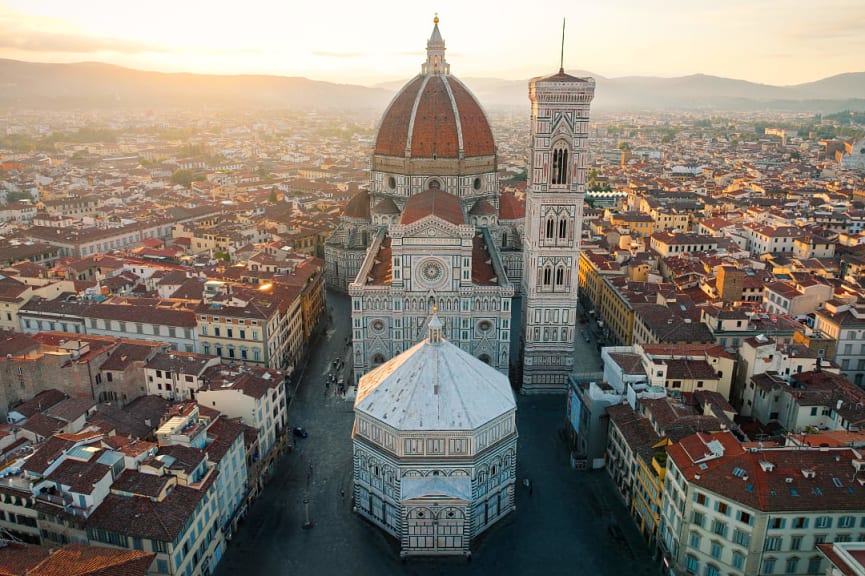
Florence Cathedral in Florence, Italy
Florence is famous as the birthplace of the Renaissance, creating a city where art and history come alive. Home to masterpieces by Michelangelo, Botticelli, and other masters of art, Florence's museums remain world-renowned. The city's historic center is a UNESCO World Heritage Site, featuring a treasure trove of architectural marvels. Famous for its leather goods, visiting a local artisan workshop to see traditional leather-making techniques depicts a bygone era. Whether you're exploring the Boboli Gardens or attending a cooking class to make traditional Tuscan dishes, Florence solidifies its place as one of the best cities to visit in the world.
Highlights: Florence Cathedral • Uffizi Gallery • Ponte Vecchio • Palazzo Vecchio • Accademia Gallery
Learn more: Italy Tours • Italy Travel Guide

Château de Duingt on Lake Annecy, France
Often referred to as the "Venice of the Alps,” Annecy is a charming city nestled at the foot of the famous mountain chain. The city's picturesque canals, colorful old town, and stunning alpine views make it a favorite destination for travelers of all types. Lake Annecy is one of the cleanest lakes in Europe, perfect for swimming, boating, or cycling around its scenic shores. With its beautiful setting and vibrant culture, Annecy offers relaxation and adventure.
Highlights: Lake Annecy • Palais de l'Isle • Château d'Annecy • Old Town • Annecy Market
Learn more: France Tours & Vacations • France Travel Guide

Ubud, Indonesia
Ubud is celebrated as the cultural heart of Bali, known for blending natural beauty, spirituality, and artistic expression. The Sacred Monkey Forest is home to hundreds of playful monkeys and ancient temples, while wellness retreats, yoga centers, and traditional Balinese dance performances have gained popularity over the years. The Tegalalang Rice Terraces have become a UNESCO World Heritage Site, showcasing the island's agricultural heritage. Whether you're exploring the local art scene, taking a Balinese cooking class, or simply enjoying the tranquil scenery, Ubud is a peaceful yet enriching getaway.
Highlights: Sacred Monkey Forest Sanctuary • Tegalalang Rice Terraces • Ubud Palace • Campuhan Ridge Walk • Ubud Art Market
Learn more: Bali Vacations & Tours • Bali Travel Guide

Blue Mosque in Istanbul, Turkey
Istanbul is a city that straddles two continents, offering a unique blend of cultures from East and West. Its rich history as the capital of the Roman, Byzantine, and Ottoman empires is reflected in its stunning architecture and cultural landmarks. The Grand Bazaar is one of the largest and oldest covered markets in the world, offering you a shopper's paradise. A traditional Turkish bath provides a relaxing and cultural experience, while the culinary scene represents flavors from various cultures, offering a mouthwatering treat for food lovers. Whether you're cruising the Bosphorus or exploring historic sites, Istanbul is undoubtedly one of the most exciting cities in the world.
Highlights: Hagia Sophia • Topkapi Palace • Blue Mosque • Grand Bazaar • Bosphorus Strait
Learn more: Turkey Tours & Vacations • Turkey Travel Guide

Jemaa el-Fnaa Square in Marrakech, Morocco
The "Red City" of Marrakech is a sensory feast famous for its vibrant markets, stunning architecture, and rich history. The souks are a labyrinth of stalls selling spices, textiles, and handicrafts, providing a glimpse into historic Moroccan culture. A traditional Moroccan tea ceremony in a local riad or exploring the city's historic gardens and palaces blend modern life with celebrated heritage. Marrakech's unique mix of old and new, along with its gateway to the Atlas Mountains, makes the city endlessly alluring.
Highlights: Jemaa el-Fnaa Square • Koutoubia Mosque • Saadian Tombs • Majorelle Garden • Bahia Palace
Learn more: Morocco Tours & Vacations • Morocco Travel Guide

Edinburgh Castle in Scotland. Photo courtesy of Visit Scotland
Edinburgh is Scotland's capital and a city where history and culture thrive. It is a UNESCO World Heritage Site known for its medieval Old Town and neoclassical New Town, with literary heritage connected to famous authors like Sir Arthur Conan Doyle. The Edinburgh Festival Fringe remains the world's largest arts festival, acting as a highlight of the city's cultural calendar. A ghost tour through the city's haunted streets or a visit to a local whisky distillery provides unique ways to experience local folklore, culture, and history.
Highlights: Edinburgh Castle • Holyrood Palace • Arthur's Seat • The Royal Mile • National Museum of Scotland
Learn more: Scotland Tours & Vacations • Scotland Travel Guide

Helsinki, Finland. Photo courtesy of Jussi Hellsten / Visit Finland
The capital of Finland is a city that beautifully blends nature with design. Surrounded by water, with numerous islands and waterfronts, Helsinki offers a serene environment for exploration. The city's design and architecture are recognized by its UNESCO City of Design designation. The local food scene focuses on sustainability and local ingredients, offering a treat for food lovers from around the world. Visiting a traditional Finnish sauna or exploring the Design District accentuates the unique blend of natural beauty and modern culture, allowing Helsinki to stand out as one of the best cities to visit.
Highlights: Helsinki Cathedral • Suomenlinna Fortress • Market Square • Temppeliaukio Church • Uspenski Cathedral
Learn more: Finland Vacations & Tours

Hobart, Australia
Hobart is often overlooked when visiting Australia, but as the capital of Tasmania, it is a city that offers stunning natural beauty and rich cultural scenery. The waterfront stands as a hub of activity, known for its markets, cafés, and restaurants showcasing the best of Tasmanian produce. The Museum of Old and New Art is often referred to as MONA, offering a provocative and unique art collection, with exciting exhibits throughout the year. The growing food and wine scene, along with the vibrant arts culture, easily connects with nearby Mount Wellington, celebrated for its panoramic views of the city and beyond. The surrounding wilderness is perfect for hiking and exploring, often acting as the inspiration for much of the art and culinary culture within the city. Hobart's blend of art, food, and nature makes it a top destination for travelers seeking a unique experience.
Highlights: Museum of Old and New Art • Mount Wellington • Food and Wine • Tasmanian Museum and Art Gallery • Salamanca Market
Learn more: Australia Tours • Australia Travel Guide

Ljubljana, Slovenia
Slovenia’s capital city is a delightful blend of history, culture, and natural beauty. The centerpiece is the Ljubljana Castle, perched on a hill and offering panoramic views of the cityscape and beyond. Tivoli Park is the largest and most beautiful park in the city, perfect for a leisurely stroll and to experience the rhythm of daily urban life in the country. The iconic Triple Bridge connects the historical and modern parts of the city, the Dragon Bridge acts as a symbol of Ljubljana, and the Central Market is a great spot to experience local produce and seasonal delicacies.
Highlights: Ljubljana Castle • Tivoli Park • Triple Bridge • Central Market • Dragon Bridge
Learn more: Slovenia Tours

Lions Head Hike with view of Table Mountain in Cape Town. Photo courtesy of South Africa Tourism
Cape Town is a city that offers an incredible mix of natural beauty, cultural diversity, and adventure. Table Mountain dominates the skyline, offering stunning views and a chance to stretch your legs on a scenic hike near the city center. The V&A Waterfront is a lively area with shops, restaurants, and museums, while nearby Robben Island is a poignant reminder of South Africa's challenging history. Cape Town's beaches include the famous Clifton and Camps Bay, which are perfect for sunbathing and water sports. A visit to the nearby Cape Winelands for a wine tasting or a drive along the scenic Chapman's Peak Drive adds to the city's individuality.
Highlights: Table Mountain • Robben Island • Cape of Good Hope • Kirstenbosch National Botanical Garden • V&A Waterfront
Learn more: South Africa Safari Tours & Vacations • South Africa Travel Guide

Buda Castle in Budapest, Hungary
Budapest has been referred to as the "Paris of the East”, famous for its stunning architecture and neighborhoods uniquely divided by the Danube River into Buda and Pest. Known for its thermal baths, with numerous historic spas offering relaxation in beautiful settings, Budapest is culturally lively, with events like the Budapest Spring Festival and the Sziget Festival attracting visitors from around the world. The city’s famous ruin bars demonstrate the creative way entrepreneurs turned abandoned buildings and courtyards into thriving centers for nightlife.
Highlights: Buda Castle • Fisherman's Bastion • Széchenyi Thermal Bath • Chain Bridge • Hungarian Parliament Building
Learn more: Hungary Tours

Trấn Quốc Pagoda in Hanoi, Vietnam
Hanoi is a rare city that beautifully blends history and modernity. Known for its rich history and bustling street life, Hanoi features a mix of French colonial architecture and traditional Vietnamese culture. The city's street food scene is legendary, offering a variety of delicious local dishes, from bánh mì to phở. The traditional water puppet shows demonstrate a unique Vietnamese art form dating back hundreds of years and the bustling streets also act as a gateway to the stunning karsts of Hạ Long Bay.
Highlights: Hoàn Kiếm Lake • Ho Chi Minh Mausoleum • Old Quarter • Temple of Literature • One Pillar Pagoda
Learn more: Vietnam Tours & Vacations • Vietnam Travel Guide

Valletta, Malta
Valletta can feel surprising when exploring the streets steeped in history and culture. As a UNESCO World Heritage Site, Valletta is known for its well-preserved historical architecture and rich heritage. Despite being one of the smallest capitals in Europe, the city is packed with things to see and do, all within walking distance. Whether hosting various cultural events and festivals, including the Valletta Film Festival, or touring Saint John’s Co-Catherdal, you can feel a remarkable influence in such a small capital city.
Highlights: St. John's Co-Cathedral • Upper Barrakka Gardens • Valletta Waterfront • Fort Saint Elmo • National Museum of Archaeology

Panama Canal, Panama
Panama City is a fascinating blend of old and new, with a skyline that features modern skyscrapers and historic buildings. While best known for its access to the engineering marvel of the Panama Canal that connects the Atlantic and Pacific Oceans, Panama City has emerged as a harbinger of character, heritage, and exciting experiences. The historic district of Casco Viejo is a UNESCO World Heritage site with colonial architecture and buzzing nightlife. Panama City's tropical climate makes it a year-round destination and its diverse culinary scene reflects the multicultural population that has grown over time. Whether exploring the historic district, watching ships pass through the canal, cycling along the waterfront, or visiting Monkey Island, Panama City offers a unique travel experience.
Highlights: Panama Canal • Casco Viejo • Miraflores Visitor Center • Amador Causeway • Biomuseo
Learn more: Panama Vacations • Panama Travel Guide

Basílica de Nuestra Señora del Pilar in Zaragoza, Spain
Zaragoza in Spain showcases influences from Roman, Moorish, and Christian civilizations. The Basilica del Pilar is one of Spain's most important Baroque temples and remains a major pilgrimage site. The city is also known for the Fiestas del Pilar, one of Spain's largest festivals and celebrated for the passing of flowers, when participants dress in period costumes and create elaborate floral displays. Zaragoza's position along the Ebro River provides scenic views and the vibrant culinary scene shaped around tapas features local specialties demonstrating an individual charm unlike anywhere else in the country.
Highlights: Basílica de Nuestra Señora del Pilar • Aljafería Palace • Plaza del Pilar • Goya Museum • Ebro River Walk
Learn more: Spain Tours & Vacations • Spain Travel Guide

Marrakech, Morocco
From the historic streets of Lisbon to the bustling markets of Marrakech, let us light the way to cities that offer diverse experiences for every type of traveler. Whether you're drawn to breathtaking landscapes, rich cultural heritage, or vibrant local scenes, each city on this list promises an unforgettable adventure. Their unique charms and standout attractions make them some of the best cities in the world to visit.
For more travel inspiration and tips on planning your next vacation, discover your preferred experiences with our trip ideas for the city enthusiast or find your next destination with our ideas on the top places to travel by each month of the year .
Life-Enriching Travel Designed Just for You
Trips curated by the world’s top destination experts
Concierge-level service leading up to and during your trip
Unique, exclusive experiences and insider access
Help Me Plan My Trip
Get Top Travel Specialists to Help Plan Your Trip


IMAGES
VIDEO
COMMENTS
Underrated hidden gem: Jardín, Antioquia, Colombia. Best for families: Buenos Aires, Argentina. Best for couples: Valparaíso, Chile. Best for solo travelers: Galápagos Islands, Ecuador. Read on ...
Top 20 Hotels in South America: RCA's 2022. Condé Nast Traveler readers rate their top hotels in South America, from Buenos Aires to Cartagena.
South America Travel Guide. South America is made for travelers looking to delve deep into incredibly diverse cultures and explore the outdoors. The biggest draws to the continent are the beaches of Rio, the Galápagos Islands, Iguazu Falls, Machu Picchu, and, of course, Patagonia. As one of the most Southern National Parks in the world, Torres ...
Peru and Bolivia. One of the classic South American journeys is bumping around the Andes, visiting indigenous villages, colonial towns and ancient ruins amid those staggering mountain peaks. Peru is a great place to start. High in the Andes, you'll find enchanting Cuzco, the oldest continuously inhabited city on the continent and a fine base ...
Wow this is the most in depth guide of South America I have ever read. So far I ve only been in Central America jut I hope to visit soon. theglobetrottergp 7 Apr 2018 Reply. ... Best Backpacks on Wheels For Travel in 2024 - Wheeled Backpacks Compared. February 2, 2020 / 0 Comments. Long Haul Flight Essentials To Make Flying a Breeze. January ...
This South America guide is here to share our tips and advice for traveling across this continent. Located south of North America and Central America, South America stretches from the Caribbean, across the equator and all the way south to the waters off Antarctica. It is comprised of 12 countries and quite frankly, is massive.
Best Places to Travel in South America: Mountains & Waterfalls. Iguazu Falls, Argentina, ... South America Travel Guide. Download our FREE South America Travel Guide and get inspired to explore to South America. Browse through 26 pages of travel planning tips and ideas - a great resource for planning your dream vacation. ...
Without doubt the best travel guide for South America with over 30 books in the region, many of which are recently updated, including probably the best overview of the continent in The South American Handbook, which is updated annually (making it far superior to the Lonely Planet's South America on a Shoestring). These guide books are packed ...
Tips & Advice. The best places to visit in November 2024. Sep 3, 2024 • 9 min read. November is the perfect time to give yourself a travel-fueled lift, with destinations primed for exploration during the penultimate month of the year.
12 Countries:12 Months - Best South America Countries To Visit Every Month January: Brazil Aerial view of Rio De Janeiro. Corcovado mountain with the statue of Christ the Redeemer, urban areas of Botafogo, Flamengo and Centro, Sugarloaf mountain. The largest country in South America, Brazil is so big that it occupies almost half the continent.
Lonely Planet: The world's number one travel guide publisher* Lonely Planet's Best of South America is your passport to the most relevant, up-to-date advice on what to see and skip, and what hidden discoveries await you. Gaze down on sparkling Rio de Janeiro from Pao de Acucar, spot wildlife in the Galapagos Islands, and hike the legendary Inca Trail to Machu Picchu - all with your trusted ...
Backpacking Peru is the essence of travelling in South America. Though tourism has spiked in Peru in recent years, there is still plenty of magic to be found here. The cost of backpacking Peru is a little higher than you might expect. Expect to pay between $30-40 USD a day whilst travelling here.
17. El Calafate, Argentina. El Calafate is home to one of the largest glaciers in South America. Perito Moreno Glacier, the sole reason why El Calafate has become such a popular place to visit, is a glacier that stretches across 5 km and extends as far as the eye can see, and it is called Perito Moreno.
Browse the best tours in South America with 12,293 reviews visiting places like Cusco and Machu Picchu. All Major Brands. ... Nina South America travel expert at TourRadar. The Great South American Journey: Quito to Rio Adventure; ... Discover Machu Picchu with an expert guide; Duration : 10 days : Destinations:
Rough Guides® is a trademark owned by Apa Group with its headquarters at 7 Bell Yard London WC2A 2JR, United Kingdom. Plan your visit to South America: find out where to go and what to do in South America with Rough Guides. Read about itineraries, activities, places to stay and travel essentials and get inspiration from the blog in the best ...
Best Places to Visit in South America on a Budget. Salar de Uyuni, Bolivia. Quito, Ecuador. Lake Titicaca, Bolivia. Iguazu falls, Argentina and Brazil. Best Places to go Hiking in South America. Machu Picchu, Peru. Torres del Paine National Park, Patagonia. San Pedro de Atacama, Chile.
In total, you will be paying around 2090 USD for activities from the ones listed above, as well as a flight to see the Nazca Line, climb an active volcano in Pucon, the Lost City Trek, a train trip to Machu Picchu, and more. Total Budget for 6 months in South America: $9,602 USD or around $50 USD per day.
2. Kayaking in Mocona (Argentina) Misiones province in Northeast Argentina is not only home to the Iguazú falls, but also to the lush Yabotí biosphere, a 250,000 hectares protected reserve created by UNESCO in 1995. It is made of untouched pristine rainforests - in short, this is the Argentinian jungle.
Compared to that required to travel North America, Western Europe, the Middle East, and many parts of Africa, the $40 to $60 per day budget of South American countries (varying by country) is one of the main reasons I recommend South America, as well as Southeast Asia as the perfect first time backpacking destinations.
Bolivia. 6. Tour the El Salar de Uyuni salt flats. The world's most extensive salt flats and one of South America's most breathtaking natural landmarks, El Salar de Uyuni is a surreal salt desert so vast that the blinding white plains seem to stretch to the horizon beyond.
The Best Time of Year to Travel to Uruguay. Uruguay, the small South American country, is often overshadowed by its more famous neighbors, Brazil and Argentina. However, this hidden gem offers a unique blend of colonial charm, natural beauty, and vibrant culture that is worth exploring.
Get information on South America Travel Guide - Expert Picks for your Vacation hotels, restaurants, entertainment, shopping, sightseeing, and activities. Read the Fodor's reviews, or post your own.
For one of South America's bucket-list experiences, try driving the Ruta 40, a 3,246-mile road that runs from Patagonia all the way up the country. Read more: Argentina travel guide: Everything ...
2 weeks in South America — In two weeks in South America, travel to one country. Pick up any of the above-mentioned countries. 3 weeks in South America — For 3 weeks, visit a maximum of two countries. So either a combination of Colombia and Ecuador or Peru and Bolivia or Bolivia and Chile and so on.
South America is a vast continent with plenty to explore - and the different seasons play a part in the adventures you can have. From the lively festivals in Rio de Janeiro and Buenos Aires to the mystical allure of Machu Picchu, the best time to visit South America is during its southern hemisphere summer, which runs from December to March.
As the trend of expat living in South America grows in 2024, many are seeking the Best South American Countries For Expats to enhance their experience living abroad. This article aims to compare various countries based on significant factors that include lifestyle, cost of living, healthcare options, expat communities, and safety.With unique and diverse South American culture, each nation ...
As a Patagonia travel specialist for the past 15 years, I know every jaw-dropping nook and cranny, along with the best ways to explore. Here are 10 common planning mistakes to avoid, so your trip ...
Galapagos, Patagonia and Amazon cruises are life-changing experiences in the Southern Hemisphere. Rebounding from a post-pandemic slump, the cruise industry racked up a record number of passengers ...
Lisbon is the capital of Portugal and a city that blends old-world charm with a modern ambiance. Known for its hilly landscape, the city offers stunning viewpoints, known as miradouros, where you can soak in panoramas of the cityscape overlooking the Tagus River.Lisbon's rich maritime history is celebrated in the eponymous museum, while the iconic Tram 28 gives you a unique way to traverse the ...
Au Pair in America is another agency that arranges au pairs for South America, as well as other parts of the world. They have a large global recruitment network spanning nearly 60 countries. Au pairing in South America will allow you to explore the continent in an affordable way, and you will have the opportunity to travel on weekends and ...